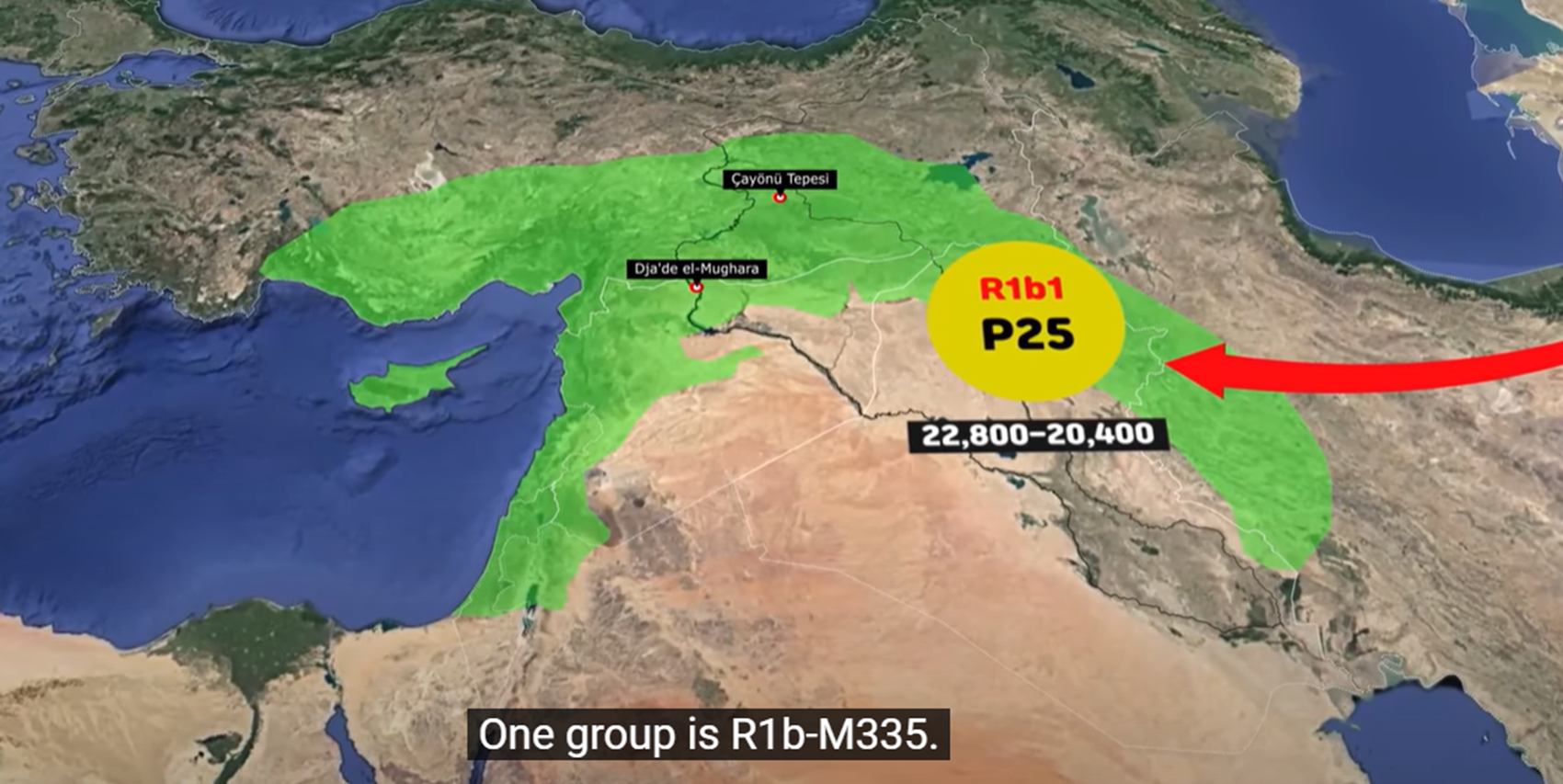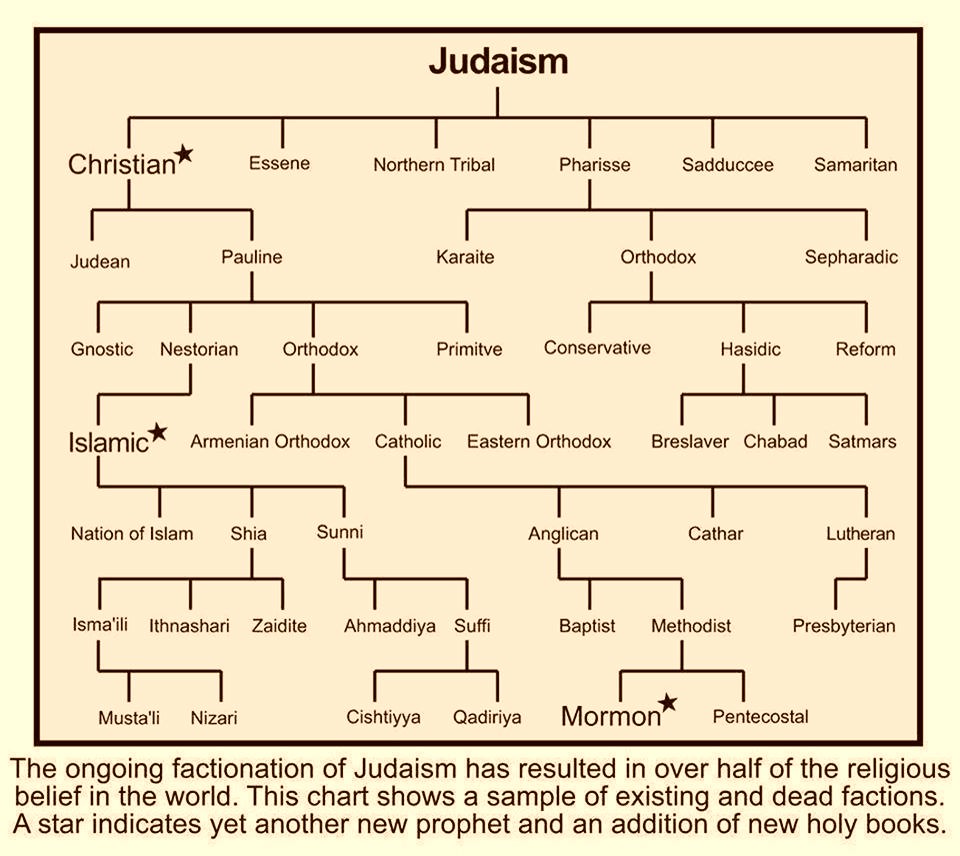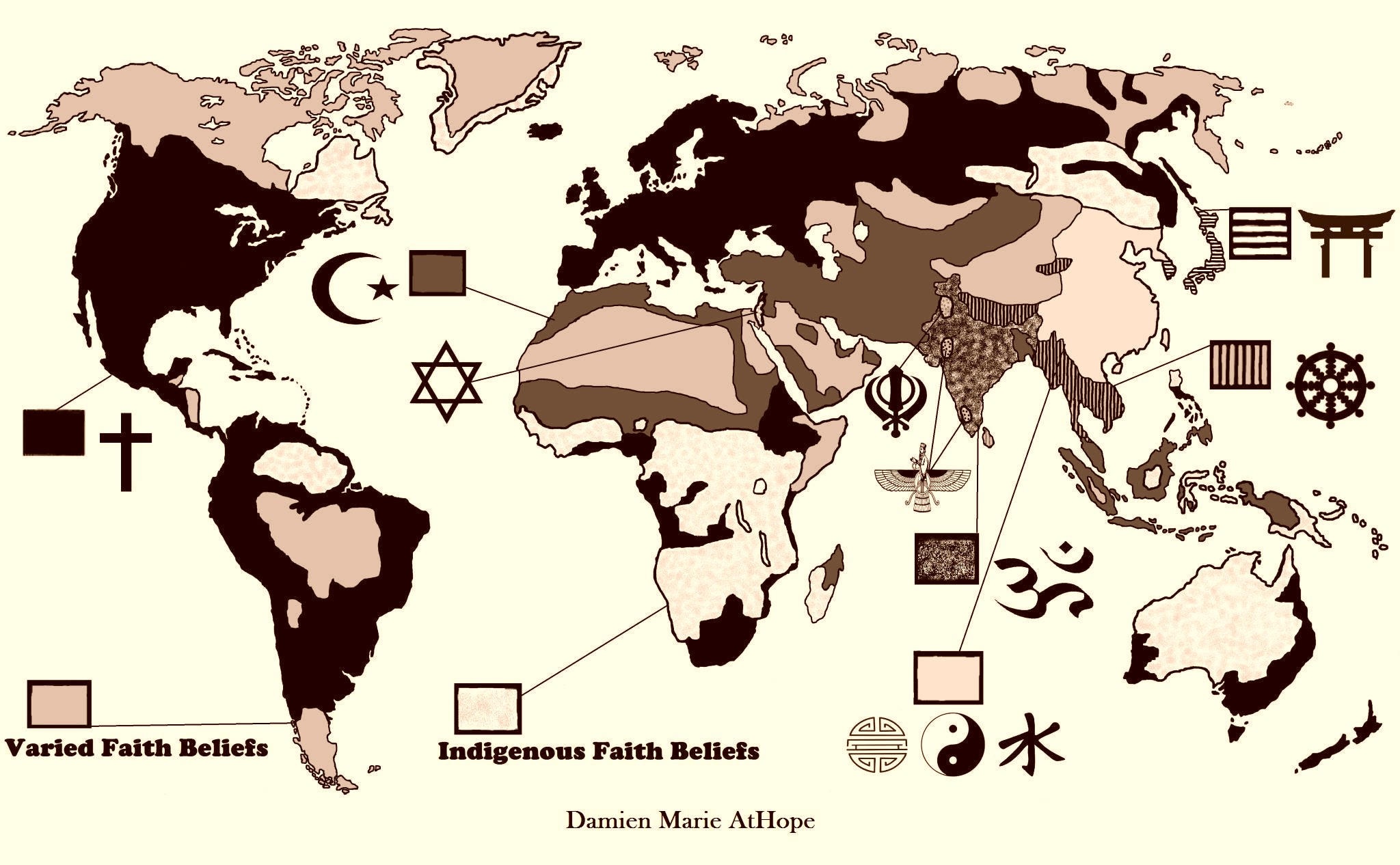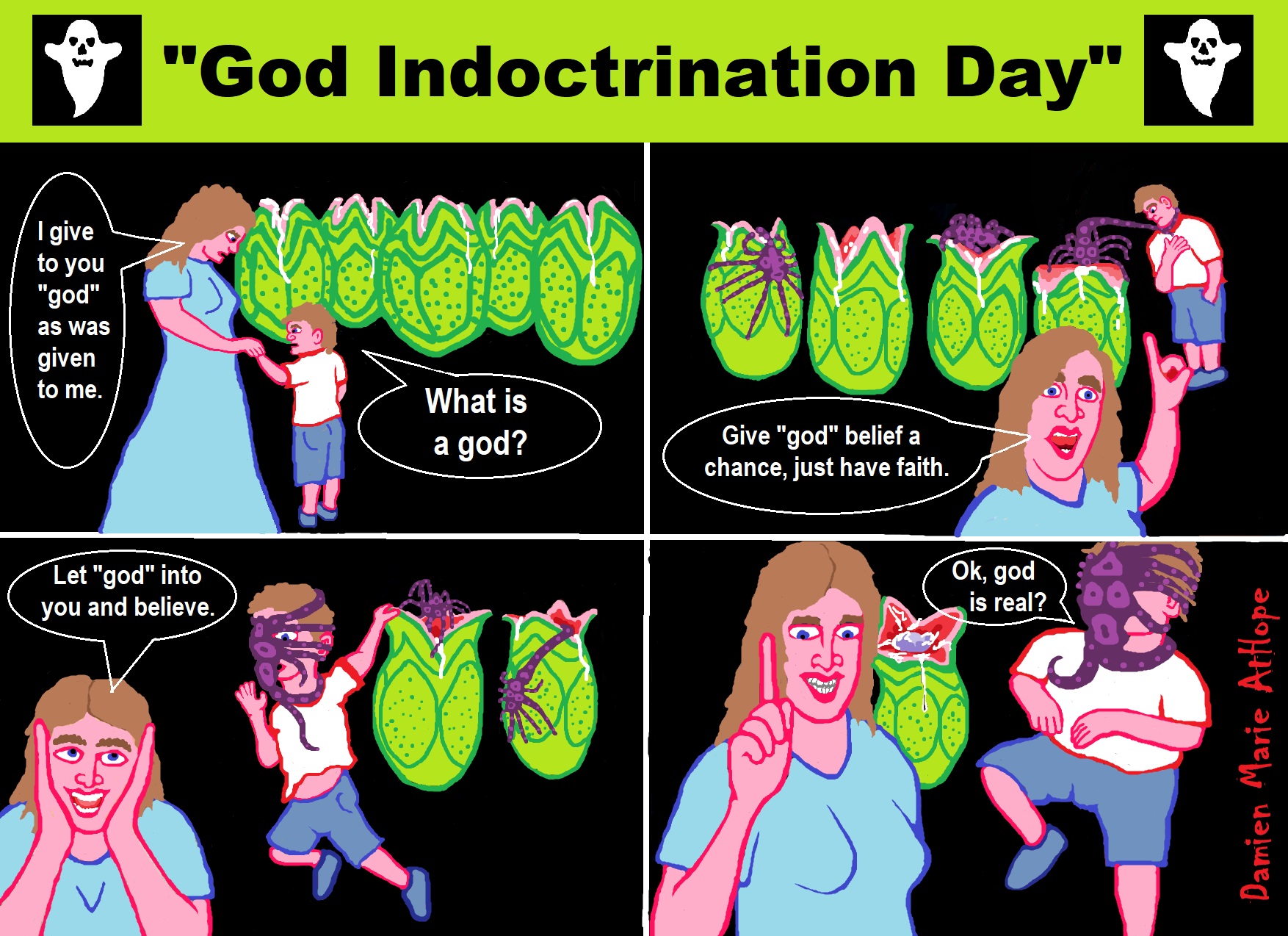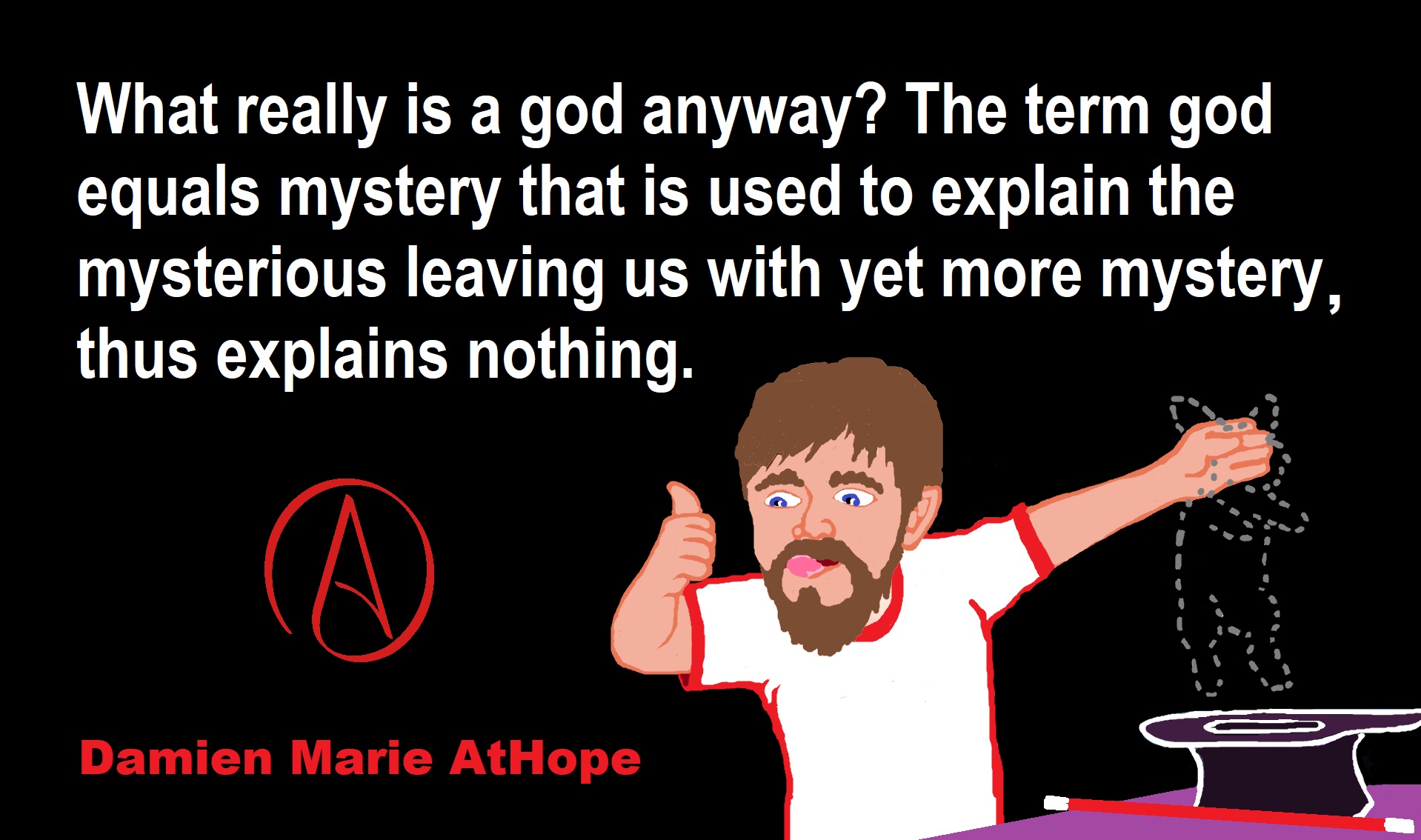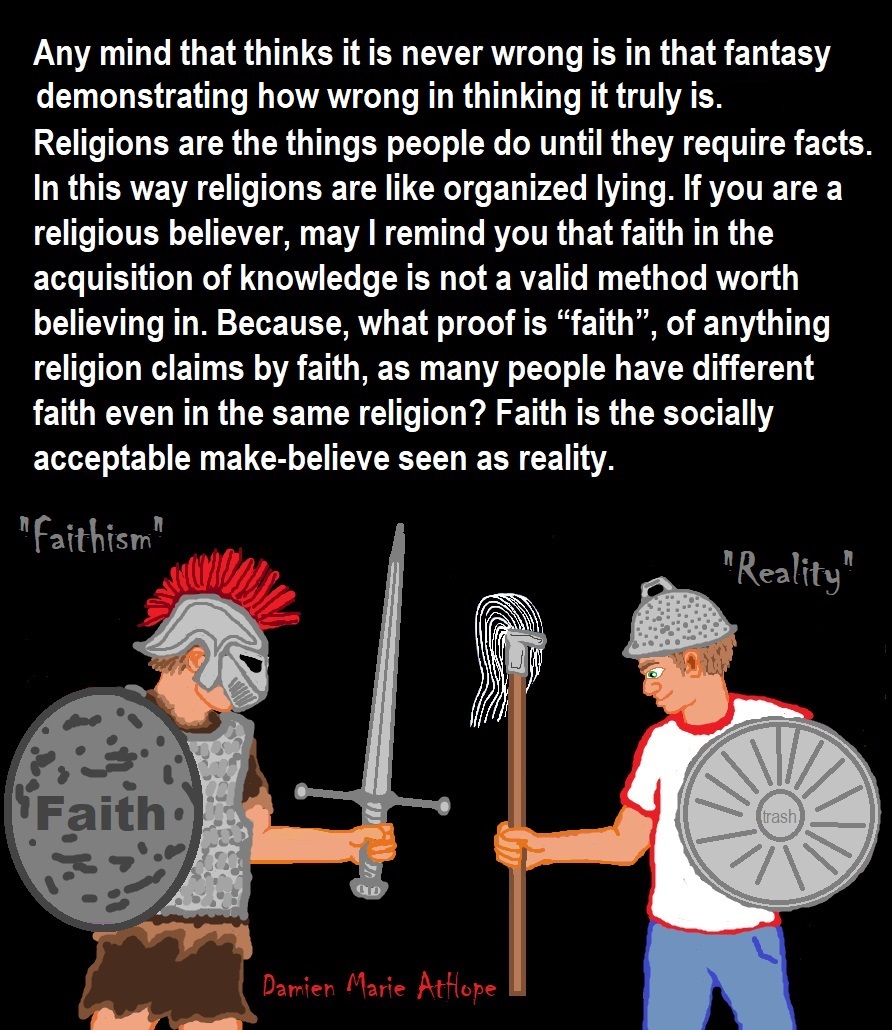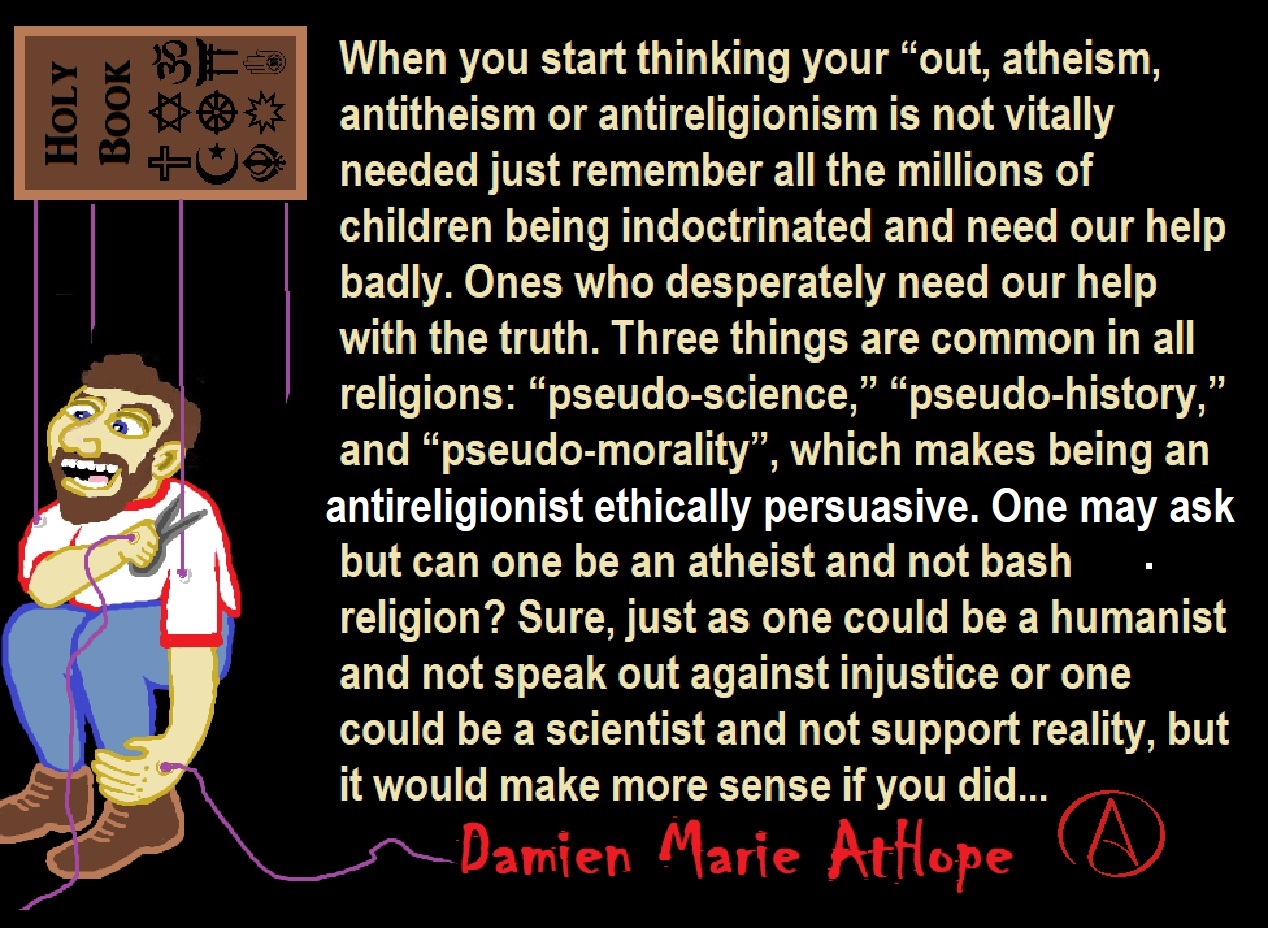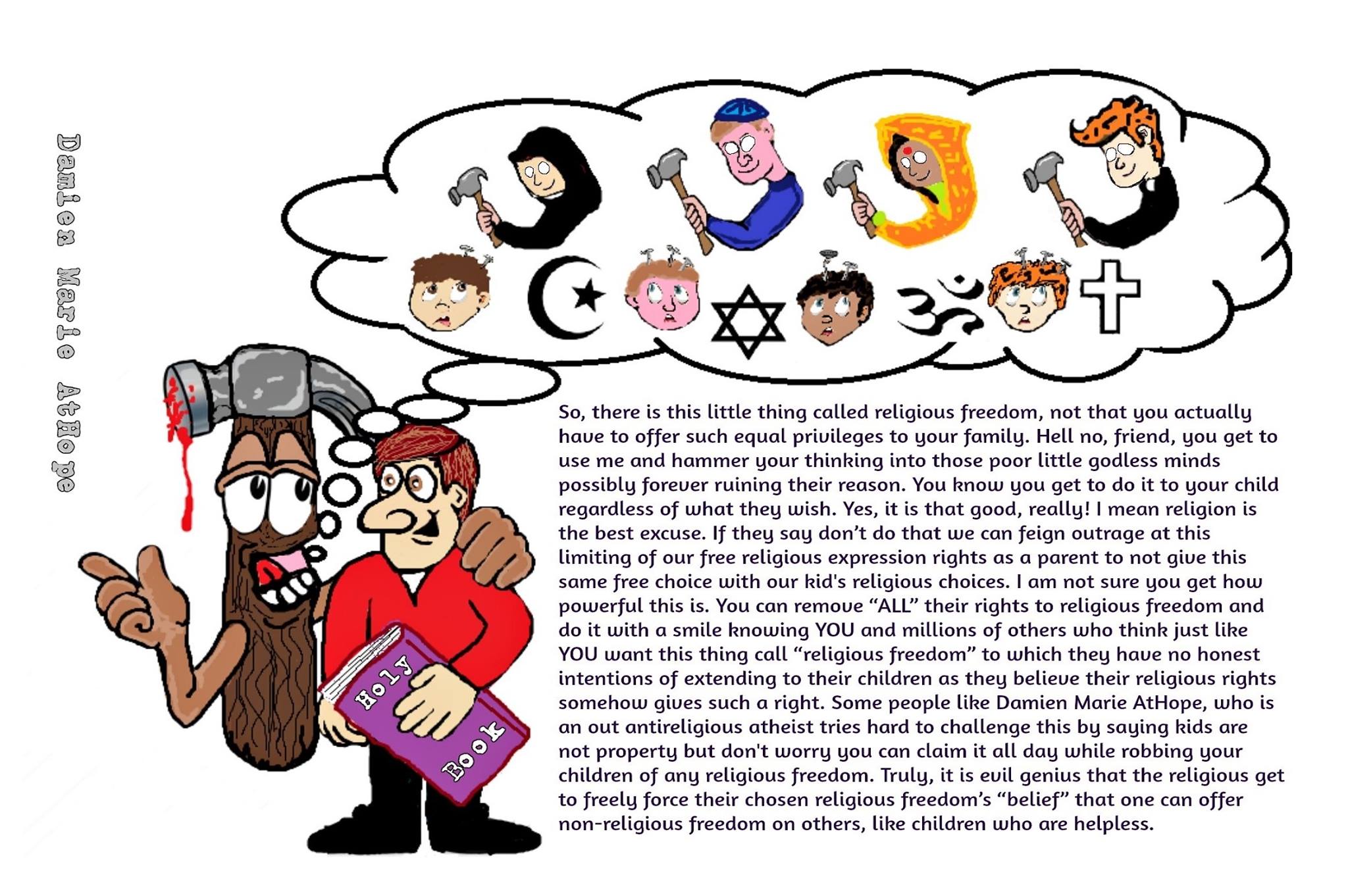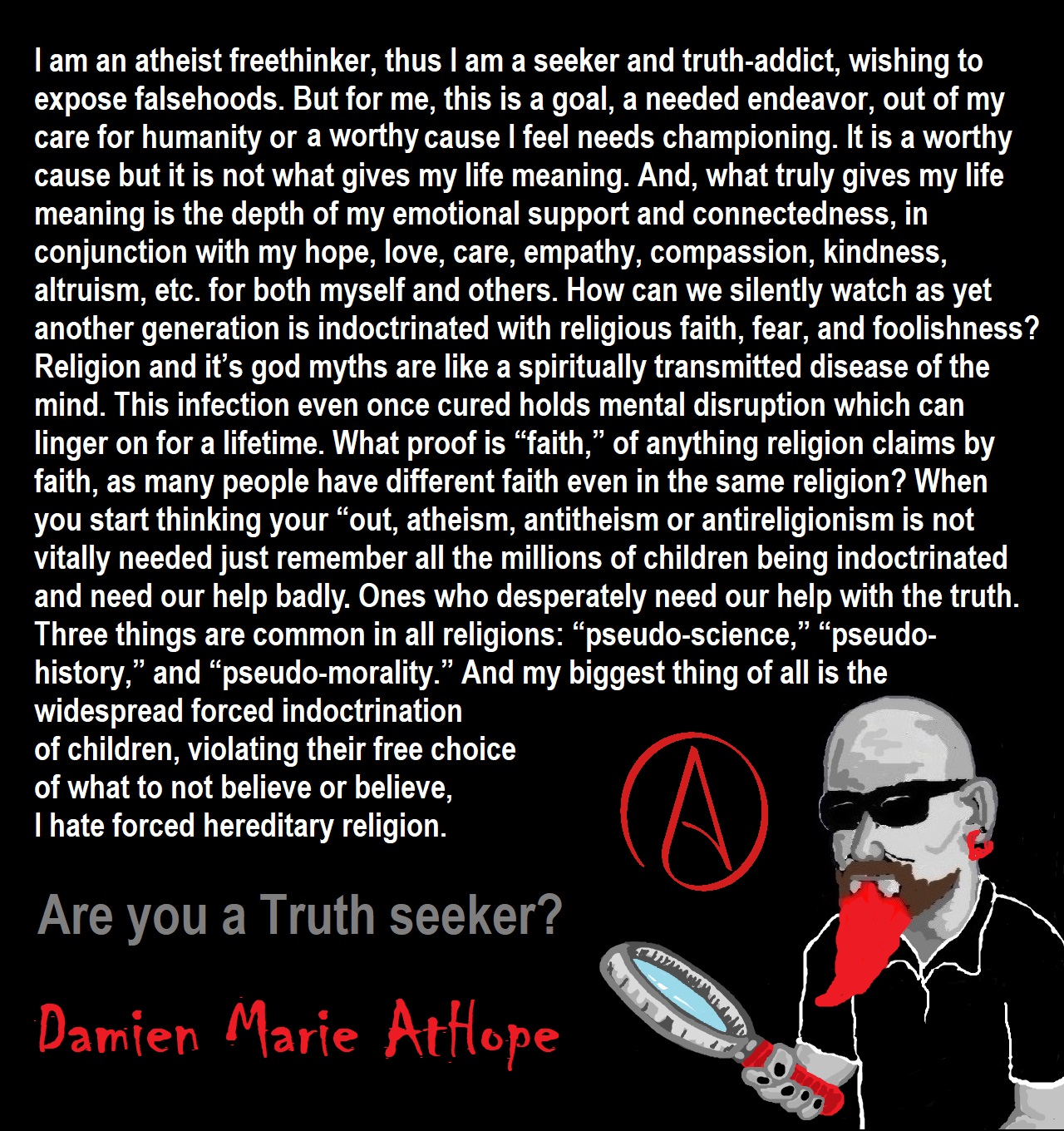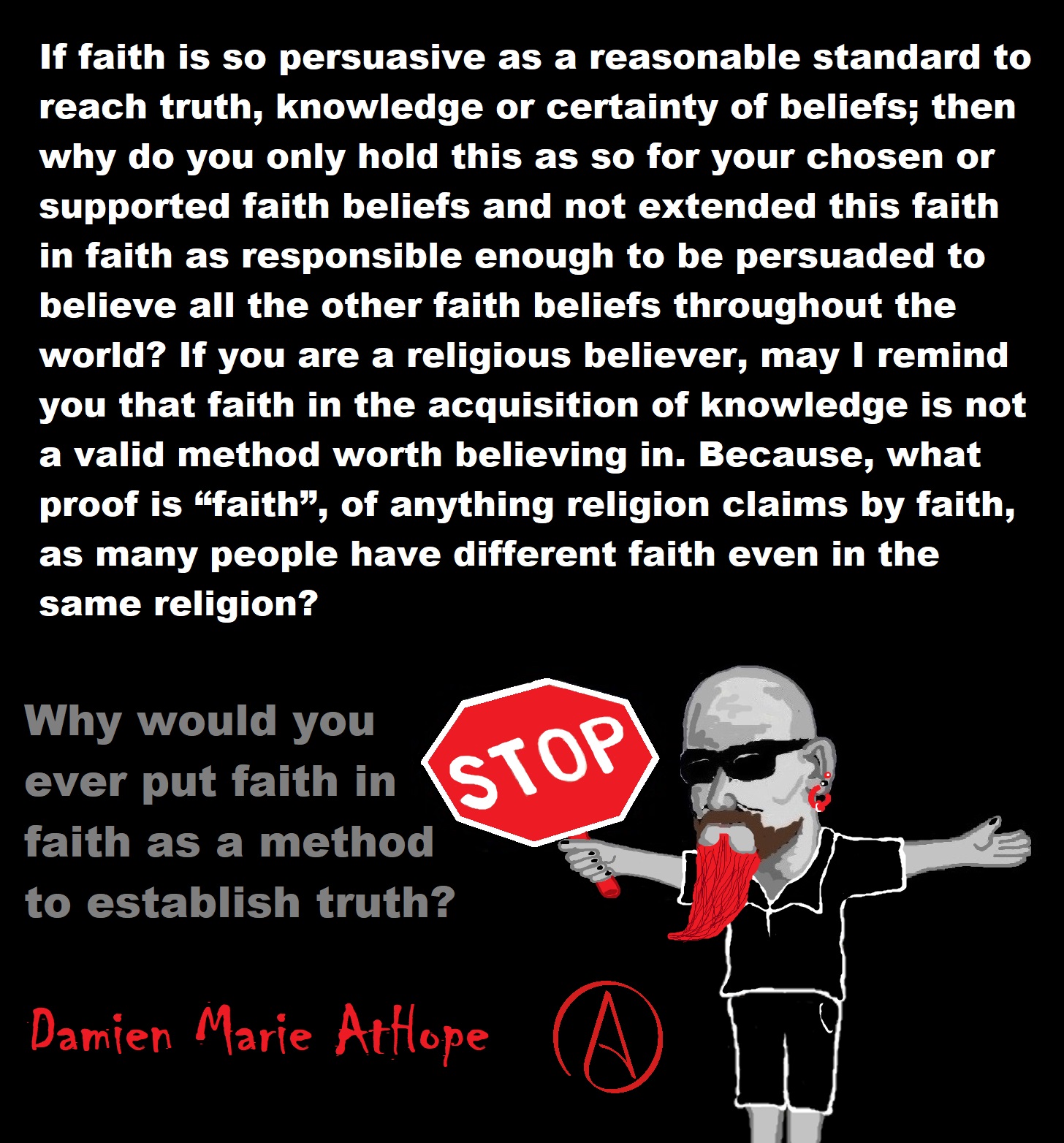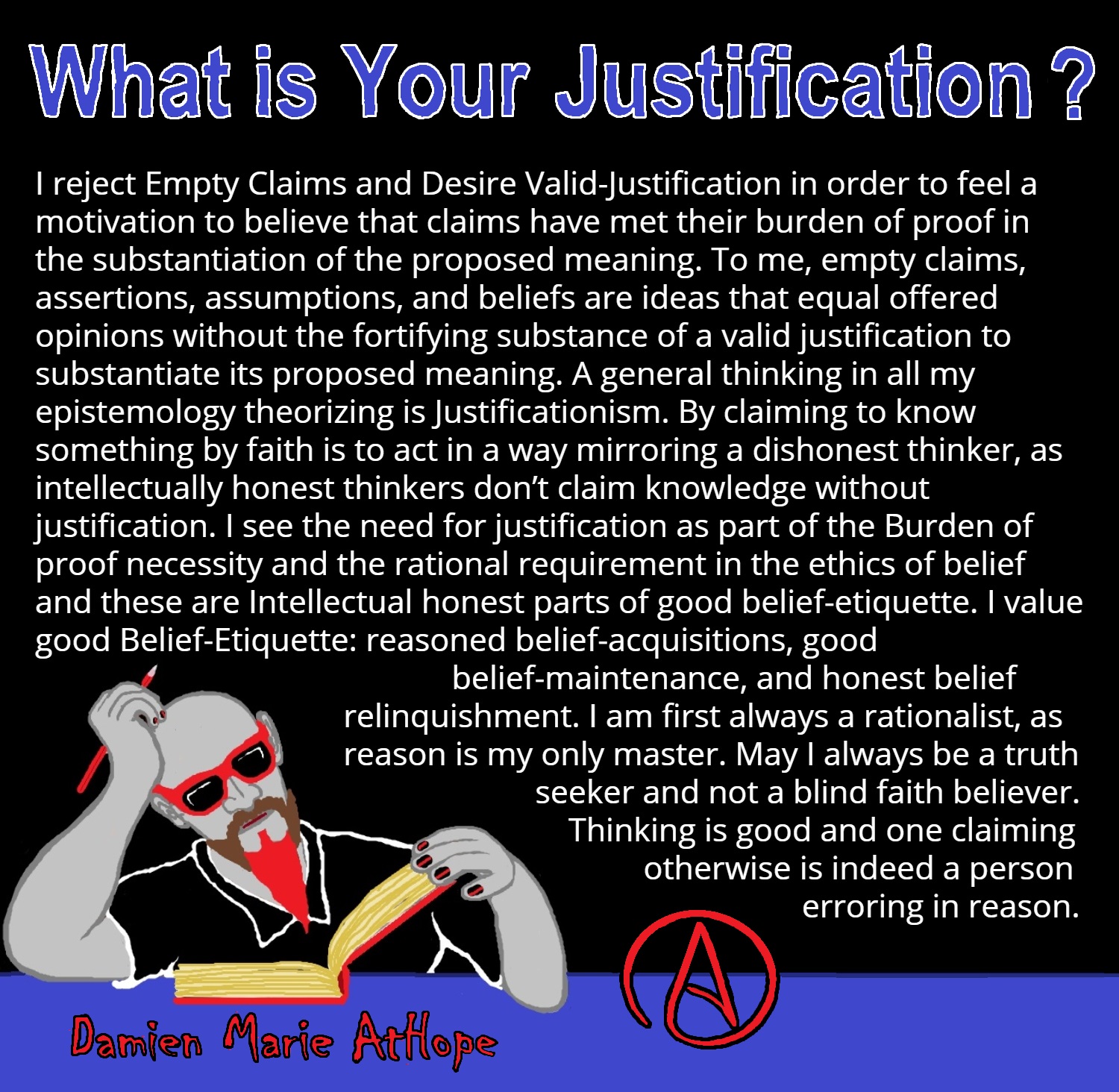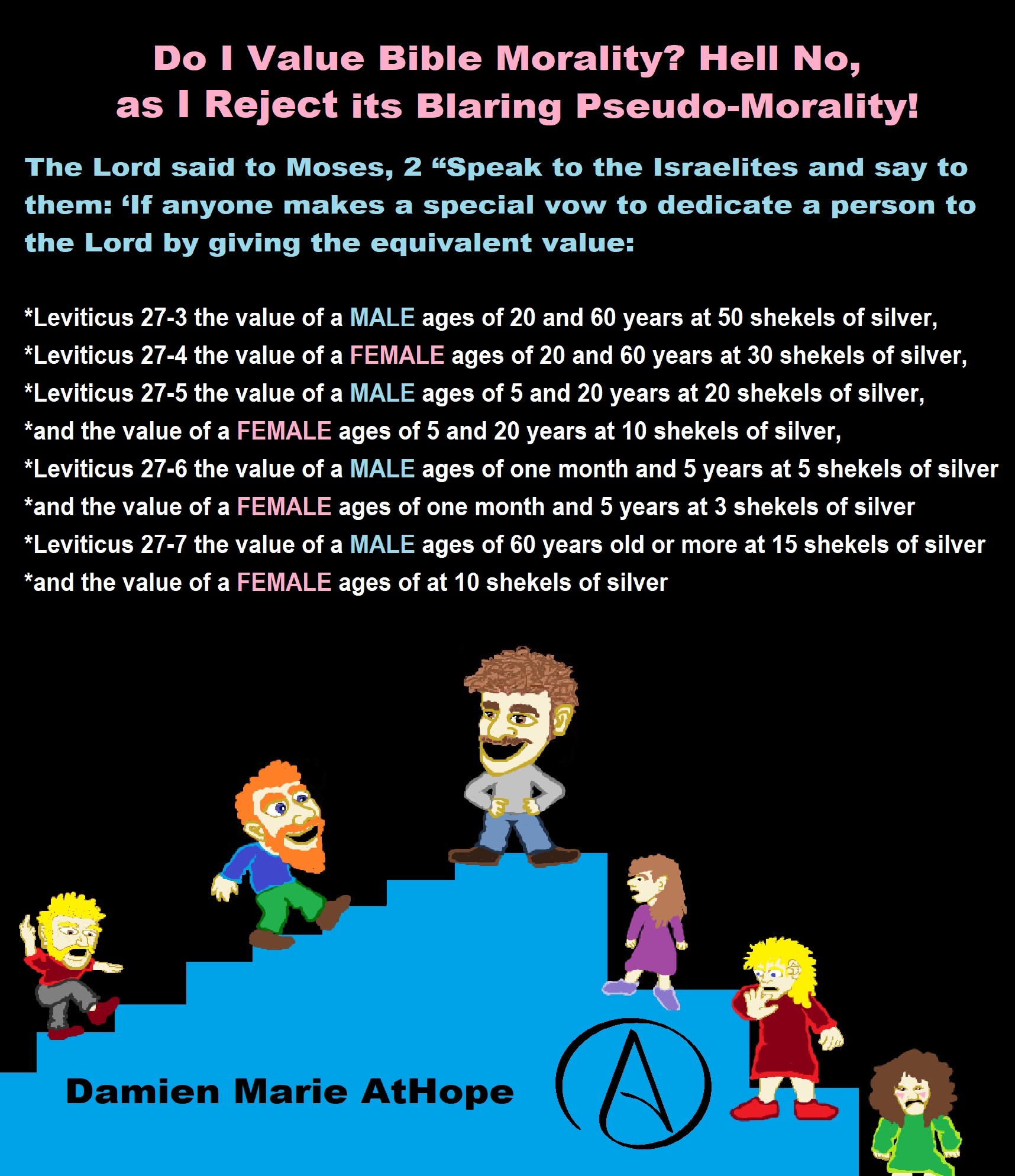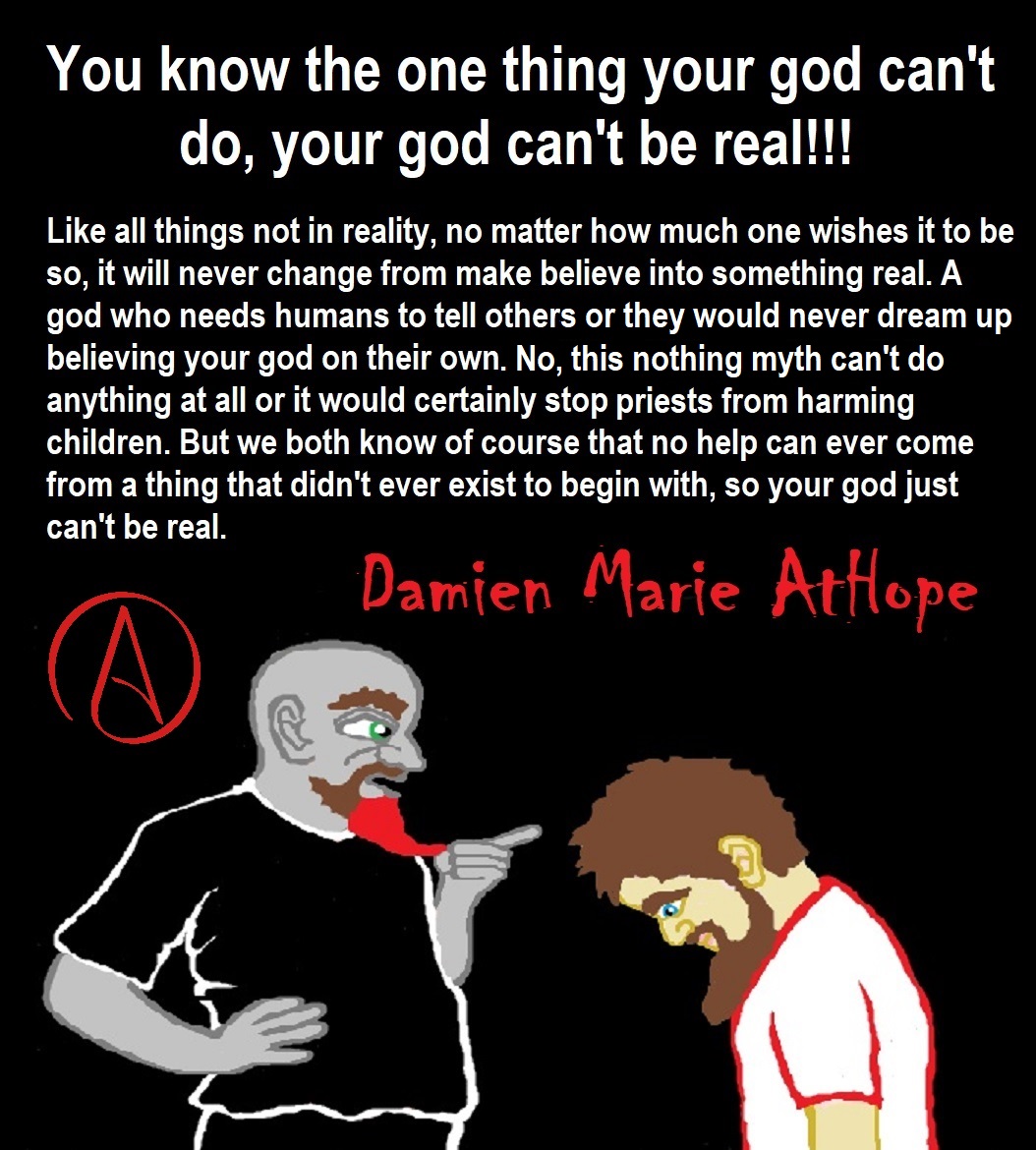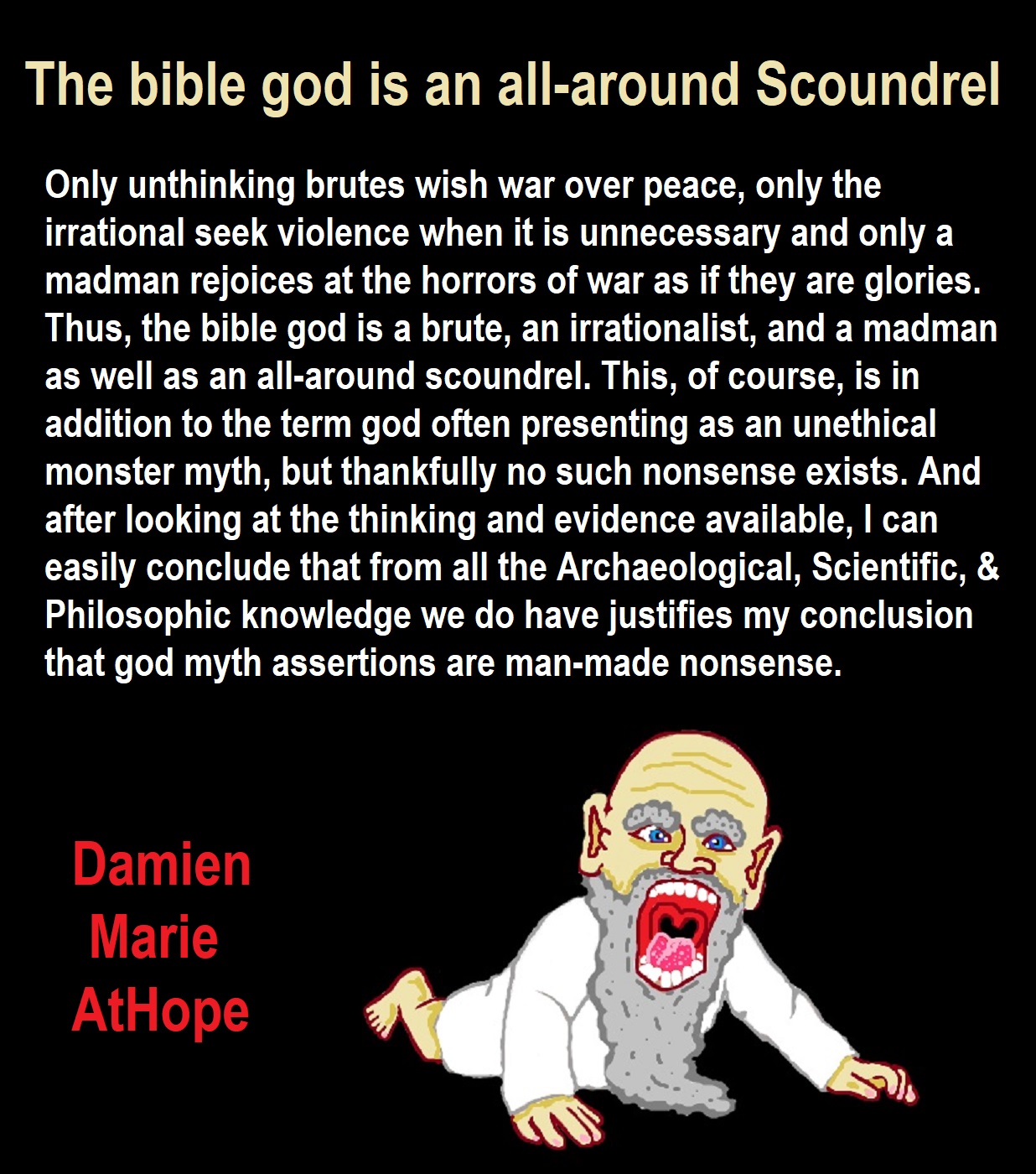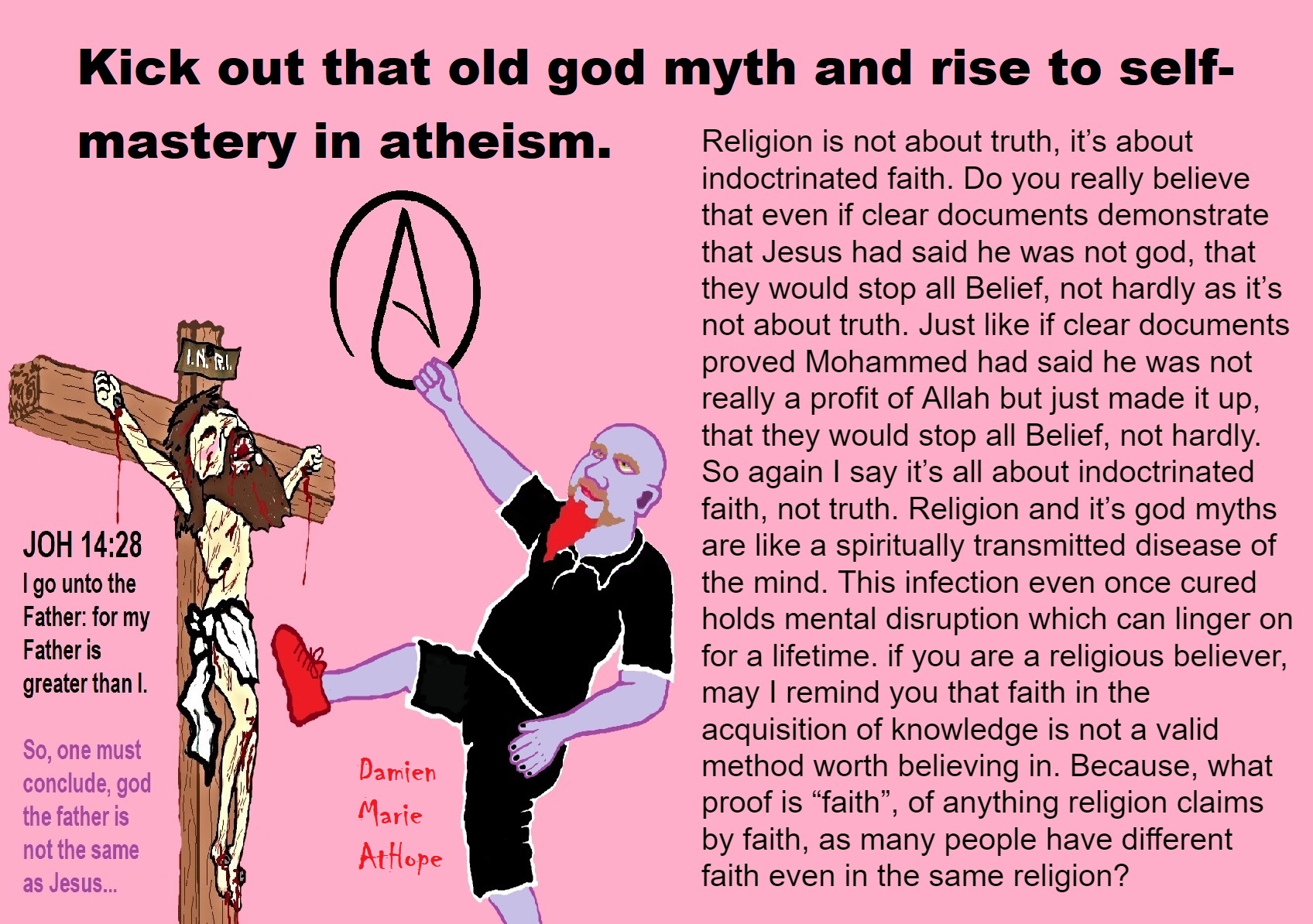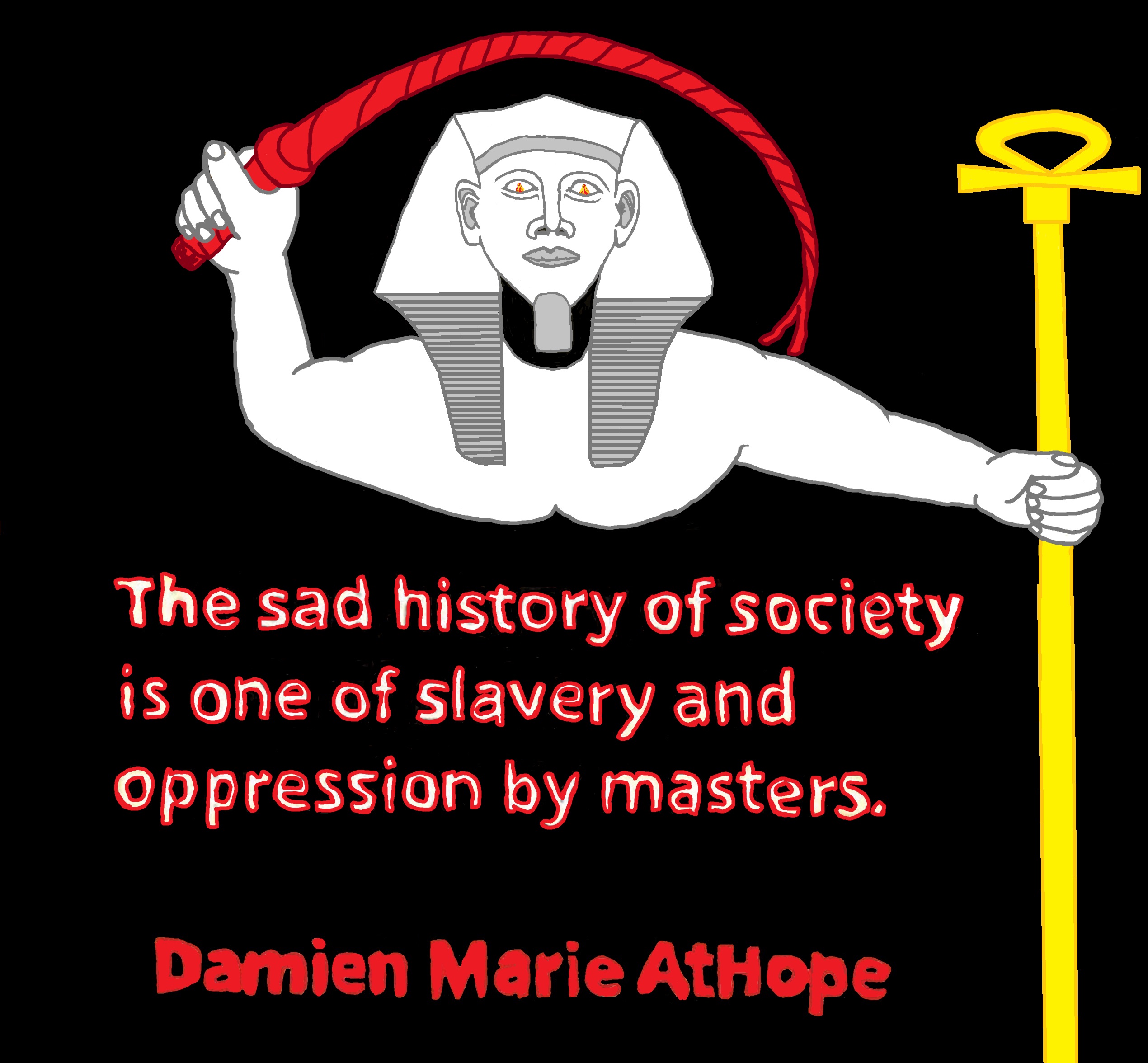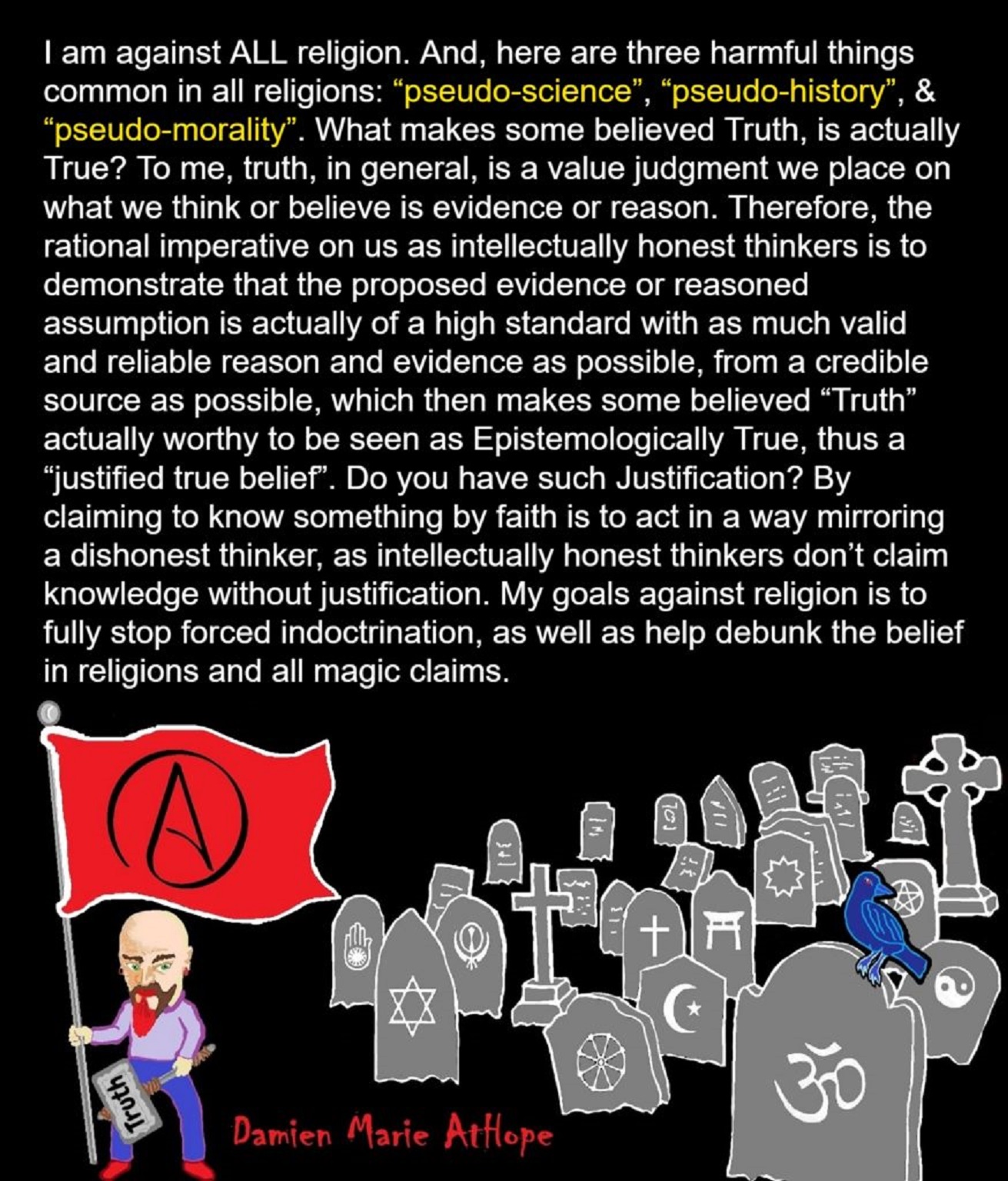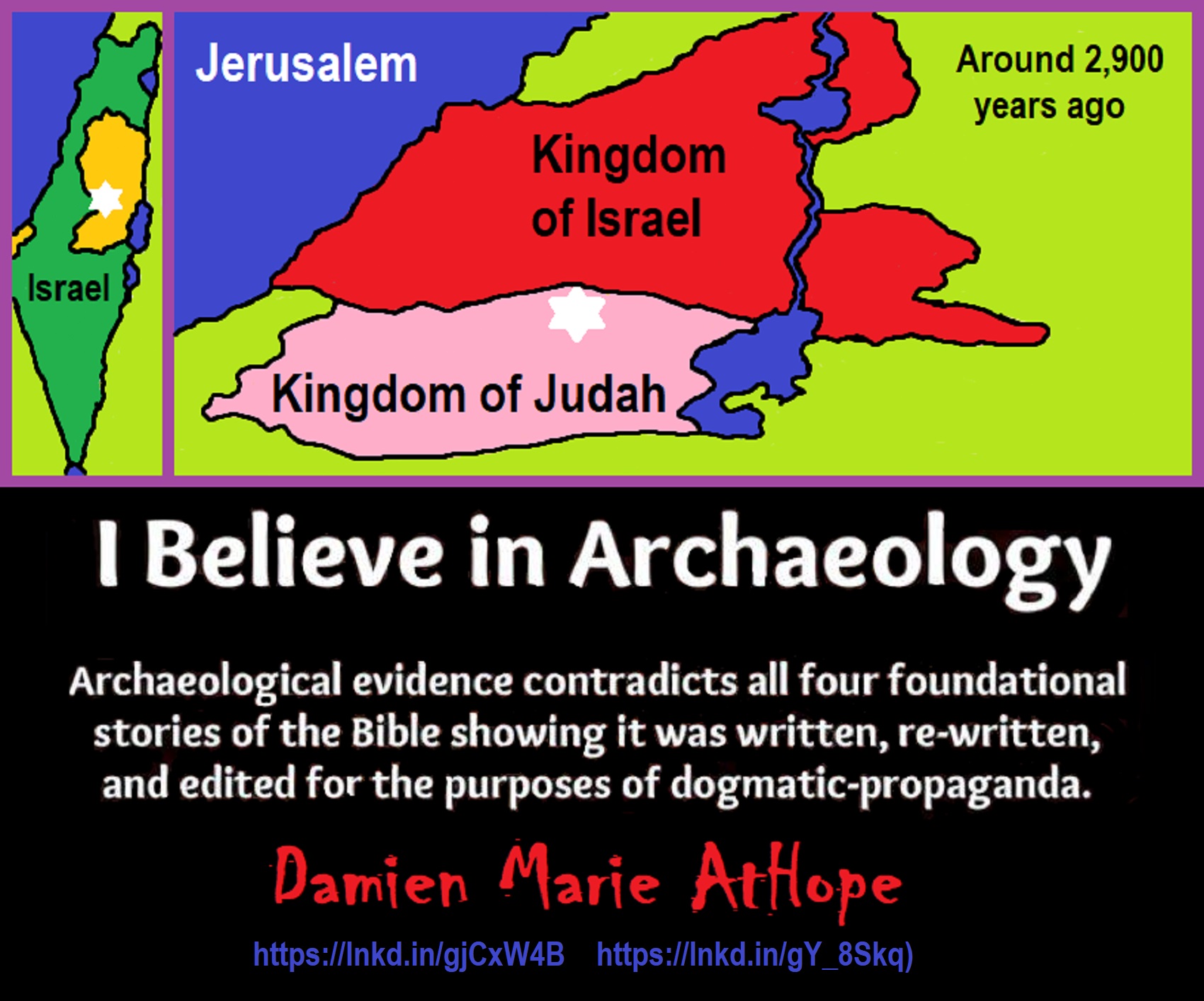
Archaeology Disproves the Bible:
1. Adm and Eve 6,000-Year-Old Humanity Myth:
Genetic ‘Adam’ and ‘Eve’ Uncovered: https://www.livescience.com/38613-genetic-adam-and-eve-uncovered.html
“Researchers believe that modern humans left Africa between 60,000 and 200,000 years ago, and that the mother of all women likely emerged from East Africa. But beyond that, the details get fuzzy.” ref
Y-chromosomal Adam or human genetics Y-DNA most recent common ancestor (160,000-300,000 years ago): https://en.wikipedia.org/wiki/Y-chromosomal_Adam
Mitochondrial Eve or human genetics mt-DNA most recent common ancestor (100,000–230,000 years ago): https://en.wikipedia.org/wiki/Mitochondrial_Eve
Did a discrete event 200,000-100,000 years ago produce modern humans: https://www.ncbi.nlm.nih.gov/m/pubmed/22658331/?fbclid=IwAR1BjrR4iyHHaDebdPobOJY9jhJJCF2tsAmjp-WUPjMVosvHNs0UPzgkbIU
“Scenarios for modern human origins are often predicated on the assumption that modern humans arose 200,000-100,000 years ago in Africa. This assumption implies that something ‘special’ happened at this point in time in Africa, such as the speciation that produced Homo sapiens, a severe bottleneck in human population size, or a combination of the two. The common thread is that after the divergence of the modern human and Neandertal evolutionary lineages ∼400,000 years ago, there was another discrete event near in time to the Middle-Late Pleistocene boundary that produced modern humans. Alternatively, modern human origins could have been a lengthy process that lasted from the divergence of the modern human and Neandertal evolutionary lineages to the expansion of modern humans out of Africa, and nothing out of the ordinary happened 200,000-100,000 years ago in Africa. Three pieces of biological (fossil morphology and DNA sequences) evidence are typically cited in support of discrete event models. First, living human mitochondrial DNA haplotypes coalesce ∼200,000 years ago. Second, fossil specimens that are usually classified as ‘anatomically modern’ seem to appear shortly afterward in the African fossil record. Third, it is argued that these anatomically modern fossils are morphologically quite different from the fossils that preceded them.” ref
2. The Bible flood myth:
Flood Accounts: Gilgamesh epic (4,100 years ago) Noah in Genesis (2,600 years ago)
Everyone Killed in the Bible Flood? “Nephilim” (giants)?
Was Noah’s Ark found on Mount Ararat as claimed by Ron Wyatt? No, of course not.
3. The myth of the Exodus:
Hey, Damien dude, I have a question for you regarding “the bible” Exodus.
Is there EXODUS ARCHAEOLOGY? The short answer is “no.”
4. The myth of conquering the land of Canaan; the land which the tribes of Israel supposedly conquered after the supposed Exodus from Egypt (such as the lie of Jericho):
Bible Battle, Just More, Bible Babble
5. The bible myth about a ‘United Monarchy’ full of splendor and power – the period of Saul, David and Solomon–as presented in the biblical account.
‘United Monarchy’ full of splendor and power – Saul, David, and Solomon? Most likely not.
Archaeology disproves the all the beginning of the bible thus discredits
all Abrahamic religions are based on it, so this includes Jewish, Christian, Muslim, Mormon, etc.
Faith seems to be found among the foolish but is an imprisoned tormented fool among the wise. Faith is like the Gloryhole of bad thinking and the Champion of unsupported beliefs. I reject the notion that humans are born with the inclination for Religion. Rather, we are born with a superstitious Animism thinking mind until the age of about 7 years old and it is out of this childlike daydreaming that Religion emerges with the help of people desiring to control.
The Bible Unearthed: Archaeology’s New Vision of Ancient Israel and the Origin of Its Sacred Texts, involves leading scholars Israel Finkelstein and Neil Asher Silberman who draw on recent archaeological research to present a dramatically revised portrait of ancient Israel and its neighbors. They argue that crucial evidence (or a telling lack of evidence) at digs in Israel, Egypt, Jordan, and Lebanon suggests that many of the most famous stories in the Bible—the wanderings of the patriarchs, the Exodus from Egypt, Joshua’s conquest of Canaan, and David and Solomon’s vast empire—reflect the world of the later authors rather than actual historical facts. What they argue, in chapter after chapter, is that these books of the Bible make the most sense as coming out of a seventh-century (BC) context. A lot of the Bible is royal and elite propaganda to justify empire expanding through conquest. Overall the differing archaeology evidence and the complete lack of any confirming archaeology evidence is devastating to all the Abrahamic religions. Ref
Some stories in the Bible were meant to be history, others fiction. But modernity has obscured the original distinction between the two kinds of biblical writing, depriving readers of the depth of the text. Perhaps surprisingly, this confusion lies at the heart of the History Channel’s miniseries “The Bible,” which continues the pattern of blurring history and fiction, and thereby misrepresenting the nature of the Bible to its viewers. One way to understand the difference between history and fiction in the Bible is through the Old Testament’s natural division into three parts:
- The world and its nature (Adam to Terah).
- The Israelites and their purpose (Abraham to Moses).
- The Kingdom of Israel and life in Jerusalem (roughly from King David onward).
Even a cursory look reveals a clear and significant pattern. In the first section, characters live many hundreds of years, and in the second, well into their second century. Only in the third section do biblical figures tend to live biologically reasonable lives. For example, Adam, in the first section, lives to the symbolic age of 930, and Noah lives even twenty years longer than that. Abraham, from the second section, lives to be 175, his son Issac to 180, and Jacob “dies young” at the age of 147. But the lifespans from King David onward, in the third section, are in line with generally accepted human biology. Furthermore, historians mostly agree that only the third section represents actual history. The reasonable ages in the third section of the Bible, and, in particular, the wildly exaggerated ages in the first, suggest that the authors of the Old Testament intended only the third part as history. Underscoring this crucial difference, some of the lifespans in the first two sections are so absurd as to defy literal interpretation. These hugely advanced ages are central clues about the point of the stories. The Old Testament contains a wide range of texts in addition to stories: laws, prayers, moral codes, and more. But even the stories come in more than one variety. Noah and the Great Flood are not in the same category as Moses and the Ten Commandments, and both are different than King David and the First Temple. History and fiction mingle throughout the Old Testament, so these divisions are just rough guides. Jeremiah’s historical description of the siege on Jerusalem is not the same as Ezekiel’s non-historical vision of the dry bones, just as there are historical elements (like the invention of fire-hardened bricks) even in the non-historical account of the Tower of Babel. The interesting point here is not that some of these stories happened and some didn’t (though that’s almost certainly true). The point is that the Bible itself portrays them differently, only presenting some of them as having happened. In other words, sometimes “believing the Bible” means believing that a story in it didn’t happen. The situation not unlike a modern newspaper, which combines news with opinion, puzzles, comics, etc. The news can be accurate even if the comics are not. The same is true for the different parts of the Bible. The New Testament similarly offers more than just stories, and, as with the Old Testament, only some of the stories in the New Testament were meant as history. Others were intended to convey things like theology and morality. The account of Jesus’ life in the Gospels is not the same as the beast in Revelation or Adam’s life in Genesis. (The issue of different categories for Jesus and Adam is a matter of fierce modern debate because of its potential theological significance and its interaction with the theory of evolution.) All of this is important for people who want to believe, for instance, that a man named Jesus was crucified in ancient Jerusalem (as described in the Gospels) even if they don’t believe that a donkey spoke aloud (Numbers); or that Jews lived in Jerusalem during the first millennium BC (Kings, for example) even if they didn’t leave Egypt 600,000 strong (Exodus). Ref
Pagan Yahwism: The Folk Religion of Ancient Israel
The Bible imagines the religion of ancient Israel as purely monotheistic. And doubtless there were Israelites, particularly those associated with the Jerusalem Temple, who were strict monotheists. But the archaeological evidence (and the Bible, too, if you read it closely enough) suggests that the monotheism of many Israelites was far from pure. For them, Yahweh (the name of the Israelite god) was not the only divinity. Some Israelites believed that Yahweh had a female consort. And many Israelites invoked the divinity with the help of images, particularly figurines. I call this Israelite religion pagan Yahwism. The archaeological evidence we will look at comes mostly from Judah in what is known in archaeological terms as the Assyrian period, the span from 721 B.C.E., when the Assyrians destroyed the northern kingdom of Israel, until 586 B.C.E., when the Babylonians conquered Jerusalem, destroyed the Temple and brought an end to the Davidic dynasty in Judah. This period, to put it into perspective, is several centuries after King Solomon built the Jerusalem Temple in about 950 B.C.E. So the archaeological evidence we are about to discuss documents a level of Israelite paganism long after Solomon built an exclusive home for Israel’s god. While Yahweh was the god of the Israelites, other nations had their own national gods. The chief god of the Phoenicians was Ba‘al. For the Philistines, the chief god was at first Dagon and later also Ba‘al (Judges 16:23; 2 Kings 1:2). For the Ammonites it was Milkom. For the Moabites, Chemosh. For the Edomites, Qos. And for the Israelites and Judahites—Yahweh. Except for the Edomite god Qos, who appears only in the archaeological record, all of these gods are mentioned in the Bible (1 Kings 11:5, 7, 33). Interestingly, while each nation’s chief god had a distinctive name, his consort, the chief female deity, had the same name in all these cultures: Asherah or its variants Ashtoreth or Astarte. (As we shall see, this was even true of Yahweh’s consort.) Not only was the female consort the same, the various nations used the same cult objects, the same types of incense altars made of stone and clay, the same bronze and clay censers, cult stands and incense burners, the same chalices and goblets and the same bronze and ivory rods adorned with pomegranates. It was easy to take cult vessels of one deity and place them in the service of another one—and this was commonly done. Ref
How Should We Study Ancient Israelite Religion?
If we propose to study the history of the religion of ancient Israel, we must be governed by the same postulates that are the basis of modern historical method. Our task must be a historical, not a theological, enterprise. We must trace the origins and development of Israel’s religion, its emergence from its West Semitic, particularly Canaanite, past, its continuities with the past, its innovations, individual or peculiar configurations, its new emergent whole, and its subsequent changes and evolution. In the past historical questions of “origins” or “emergence” of the ancient Israelite religion could not be answered satisfactorily and indeed were rarely addressed. Today, thanks to the archaeological exploration of Israel and neighboring lands, the history of Israel has become part of the history of the ancient Near Eastern world. Israel’s ancient literature can be viewed increasingly as evolving out of the genres of kindred literatures. We possess Northwest Semitic epic literature from a century or so before Moses. The religion of Israel can now be described in its continuities with, and in its contrasts with, contemporary Near Eastern and especially West Semitic mythology and cult. Ref
Accurate Account on how did Christianity Began?
My blogs on the Bible, Judaism, and Christianity
- Sedentism and the Creation of goddesses around 12,000 years ago as well as male gods after 7,000 years ago.
- Progressed organized religion starts, an approximately 5,000-year-old belief system
- When was the beginning: TIMELINE OF CURRENT RELIGIONS? Around 4,000 years ago.
- What is early monotheism, are Atenism and Zoroastrianism totally monotheistic?
- Creationism (pseudoscience)
- Creationism is a Debunked Religious Conspiracy Theory.
- List of Creation Myths?
- Evolution is FACT in many ways!
- Is Evolution a Theory or a Fact? “It is both.”
- Technological Advances in Evolution
- Dating the BIBLE: naming names and telling times (written less than 3,000 years ago, provable to 2,200 years ago)
- Genetic studies on Jewish DNA is not 6,000 years old but has origin links to about 20,000 to 30,000 years ago?
- Everyone Killed in the Bible Flood? “Nephilim” (giants)?
- Bible Cosmology is Laughable
- Flat Earth Mania: a debunked religious theory, given new life in the post-truth world
- Attacking Biblical Statements for a “fixed” and “immovable” Earth
- No “dinosaurs and humans didn’t exist together just because some think they are in the bible itself”
- Is bible god ethical? & Would It Be Bad or Good if God Exists? (axiological “value theory” questions)
- Animistic, Totemistic, and Paganistic Superstition Origins of bible god and the bible’s Religion.
- Jews, Judaism, and the Origins of Some of its Ideas
- Jews enslaved in Egypt is Myth…..
- Sexism in Judaism (old Testament)
- Hey, Damien dude, I have a question for you regarding “the bible” Exodus.
- Evil bible god? YES OF COURSE
- Is god choiceless or standardless or removed from ethics?
- Axiological Atheism Morality Critique: of the bible god
- Your god concept is vile…
- Bible god repented of Evil?
- God the unethical father?
- David’s Punishment for Rape? God’s “Forgiveness and Baby Killing ” (2 Samuel 12:11-14)
- “hi, enemy of god” – Challenger
- Christian Hate Groups?
- God Originated Mortality?
- Faith and the Three Stooges: bhagavad-gita, bible & quran
- So the 10 commandments isn’t anything to go by either right?
- Interview with Jeff Tadlock (Stairway To Reason)
- Horned female shamans and Pre-satanism Devil/horned-god Worship? at least 10,000 years ago
- 9,000-8,500 year old Female shaman Bad Dürrenberg Germany
- Satanism More or Less
- The Devil?
- Devil, Satan, Lucifer, and the Serpent? Guess What They are Not the Same.
- Are All Religions That Existed Before Christianity From the Devil?
- The King James Mistakes Lucifer as Satan
- Accurate Account on how did Christianity Began?
- Bill Zuersher and his book “Seeing through Christianity: A Critique of Beliefs and Evidence”
- Archaeology Disproves the Bible
- I Believe Archaeology, not Myths & Why Not, as the Religious Myths Already Violate Reason!
- Did a Volcano Inspire the bible god?
- Bible Battle, Just More, Bible Babble
- The Jericho Conquest lie?
- Traces of Totemism In Judaism
- Canaanites and Israelites?
- Was Noah’s Ark found on Mount Ararat as claimed by Ron Wyatt? No, of course not.
- Accurate Account on how did Christianity Began?
- Christian 35 years, read the bible twice, and took two religious classes before the conclusion of atheism.
- Compare and Contrast (religious and non-religious)
- Losing My Religion and MY Faith Addiction
- A Christian supporter, Damien Marie AtHope is winning fans but dredging up Old Adversaries?
- christofascism (christian and fascism) as well as religiofascism (religion and fascism)
- What makes Atheism a better way of thinking in life?
- Damien, I’m open AND a Christian!
- Incapable of making a decision on if there is or not a god?
- It’s Not the Deity You See as Possible But How Many You Reject
- Christians Don’t Believe the Entire Bible
- Muslim Terrorists and Christian Terrorists?
- True Christian® ???
- What is bible and Who is jesus???
- Rethinking Jesus?
- Jesus Christ Wanted for producing the hate and fear literature, the so-called “Holy Bible?”
- The Bible shows a racist character of jESUS who was not god but was a bigot “if real”
- jESUS (a fake story) explained as a real bigot but not a gOD
- The bible god Myth is Not True but The Prejudice is.
- Paulism vs Jesus
- Please explain why anyone would follow jesus’ teachings?
- Christianity Believers: Consider This
- Let’s talk about Christianity.
- Misinformed christian
- Dealing with Presuppositionalism, a school of Christian apologetics (Fascistic Fideism or “faith-ism”)
- Bible Defender?
- How Caring and Unconditionally Loving is the bible god Character?
- The So-Called Love of bible god is Actually a Pseudo Love.
- Sexism in Christianity (New Testament)
- New Testament: bigotry, cruelty, sexism, slavery, racism, etc.
- Slavery, Racism, Religion and the Confederate Flag
- New Testament on Slavery
- Rape, Sexism, and Religion?
- Was the Value of Ancient Women Different?
- Sexism in the BIBLE: chapter and verse!
- Sexism in Catholicism
- Sexism in Protestantism
- Sexism in Mormonism
- Sexism in Jehovah Witness
- Feminist atheists as far back as the 1800s?
- Anti-theism makes no logical sense?
- Out of Africa: “the evolution of religion seems tied to the movement of people”
- The Evolution of Religion and Removing the Rationale of Faith
- Explaining My thoughts on the Evolution of Religion
- Speech on the Evolution of Religion & Religious Sexism
- Understanding Religion Evolution: Animism, Totemism, Shamanism, Paganism & Progressed organized religion
- Addressing a Theistic Philosopher with Fallacious Thinking
- Caring firebrand atheism vs. Christian nationalism and dominionism
- Caring Firebrand Axiological Atheist, Antitheist, and Antireligionist as a Valuized Ethical Duty.
- Firebrand Atheist Dealing with Christian, Threat Prayers
- “Damien, you are a strong atheist. I am wondering do you see yourself as better than theists?”
- Warning Churchs, I am coming to Indiana as a firebrand atheist to do activism.
- Thoughts on Death: Christian turned Atheist
- Let’s talk about Hell
- Hell claims debunk LOVING gods?
- The claim of hell are ridiculous and immoral, not just false.
- Debunking both Positive (HEAVEN) and Negative (HELL) near death experiences.
- Near Death Experiences is Brain Activity, not Supernatural
- Hell is not a source of science, Satan says
- Threats of Hell are Humanistically Wrong
- Hell, Heaven and the Power of Imagination.
- Preposterous Idea of a Deity that Would Create Hell
- Scary Beasts In Heaven?
- Value-blindness Gives Rise to Sociopathic evil.
- Axiological Ethics not Pseudo Morality
- Yes, Your Male God is Ridiculous
- Single God Religions (Monotheism) = Man-o-theism started around 4,000 years ago?
- Kultepe? An archaeological site with a 4,000 years old women’s rights document.
- Religion is Conspiracy Theories of Reality, Not Worth Believing In
- I Hate Religion Just as I Hate all Pseudoscience
- Sumerian Creator Being was a Female, not Male possibly around 6,000 years ago or more
- The Disproof Atheism Society: EMPIRICAL, CONCEPTUAL, and DISPROOFS of gOD
- I Blaspheme the Unreal Unholy Bible Spirit called gOD
- When you say “GOD,” what do you mean by god?
- Who knows what a “god-claim” really is?
- Fibonacci sequence as scientific evidence of a creator?
- Sorry You Have No Evidence
- god Claims are a Non-Reality Commodity
- What do you mean by god Evidence?
- You will always fail to prove a specific god?
- Arguments over the term god?
- Vague Theism or god Somethingism: just say NO
- Faith is Not Evidence of Reality
- What is a gOD Challenge
- Addressing “ATHEISM”, reasons for it and its possible types/styles
- Using Ontology to Attack Theistic Errors
- You say you believe in a possibility of your favored god-claim?
- Why are all gods unjustified?
- What is a god? Just a Empty Label.
- gOD Believer, Pease Think Critically
- The God Fallacy
- Religion and Science are Completely Different Epistemologies
- Doubt god(s)? No, I stopped believing Fairytales.
- Damien, is it possible, there’s a God you haven’t considered?
- Archaeological, Scientific, & Philosophic evidence shows the god myth is man-made nonsense.
- I am an Axiological Atheist, with a Rationalist Persuasion, who Supports Anarcho-Humanism
- Fideism/Faith-ism (“faith-drunk-thinkers”)
- Truth Navigation and the fallacy of Fideism “faith-ism”
- Interview with the editor for Canadian Atheist
- Interview EP (55) Mark Lee secular humanist agnostic atheist activist antitheist from Kelowna, British Columbia (Canada)
- Guest post: Atheism’s Conclusion by Rational Thinking” by Marquis Amon
- Atheophobia and a Challenger to the Term
- Talking Atheism: Arael Avinu of Fully DE/converted and Caring Firebrand Atheist, Damien Marie AtHope
- Rationalism and the Enlightenment
- Challenging Agnosticism Assumptions
- The Fun of Harassing Street Preachers. Counter-Protesting is Fun.
- Religion harm and a way to stop it’s Rights Violations?
- Turning a Theist Attack into a Chance for Their New Learning: “an open dialog”
- Freedom of Religion, not Coercive Hereditary Religion
- Self-ownership, Human Rights, and Societal Liberty or Freedoms
- Self-ownership/Body-ownership: Sexual Consent, Abortion, Genital Mutilation, Prostitution, Drugs, and the Right to Die
- “No gODs, No Masters”
- Screw All Religions and Their Toxic lies, they are all fraud
- A Rational Mind Values Humanity and Rejects Religion and Gods
- CRITICAL THINKING: Discernment Detachment Delineation
- No Worship No Bullshit
- The Beginning origins of Atheistic Doubt at least by around 2,500 years ago.
- Confusions in Atheism and Humanism
- How Do I Gain a Morality Persuasion or Make a Change to it?
- Variations of Human Interaction: ethical, unethical, good, bad, or evil?
- THE SOUL OF LIBERTY: “The Universal Ethic of Freedom and Human Rights” By Fred E. Foldvary
- “My correspondence with a believer in souls”
- Energy = god, spirits, and/or afterlife? NO, and such thinking is misplaced animism magical thinking nonsense.
- Damien, What’s Worse Christians or Spiritual Non-religious?
- Religion and Poverty?
- Prosperity theology: donating money increases wealth?
- As an atheist what do you believe happens when you die?
- Grief While Having Atheistic Disbelief
- Religious OCD Subtype?
- Religious Trauma Syndrome?
- “You” are religious “You” are in a cult!
- Addressing Destructive Cults?
History of Ancient Israel and Judah
“The oldest evidence of early humans in the territory of modern Israel, dating to 1.5 million years ago, was found in Ubeidiya near the Sea of Galilee. Flint tool artifacts have been discovered at Yiron, the oldest stone tools found anywhere outside Africa. Other groups include 1.4 million years old Acheulean industry, the Bizat Ruhama group and Gesher Bnot Yaakov. In the Mount Carmel area at el-Tabun, and Es Skhul, Neanderthal and early modern human remains were found, showing the longest stratigraphic record in the region, spanning 600,000 years of human activity, from the Lower Paleolithic to the present day, representing roughly a million years of human evolution. Other notable Paleolithic sites include caves Qesem and Manot. The oldest fossils of anatomically modern humans found outside Africa are the Skhul and Qafzeh hominids, who lived in northern Israel 120,000 years ago. Around 10th millennium BCE, the Natufian culture existed in the area.” ref
“The history of Israel covers an area of the Southern Levant also known as Canaan, Palestine or the Holy Land, which is the geographical location of the modern states of Israel and Palestine. From a prehistory as part of the critical Levantine corridor, which witnessed waves of early humans out of Africa, to the emergence of Natufian culture c. 10th millennium BCE, the region entered the Bronze Age c. 2,000 BCE with the development of Canaanite civilization, before being vassalized by Egypt in the Late Bronze Age. In the Iron Age, the kingdoms of Israel and Judah were established, entities that were central to the origins of the Jewish and Samaritan peoples as well as the Abrahamic faith tradition. This has given rise to Judaism, Samaritanism, Christianity, Islam, Druzism, Baha’ism, and a variety of other religious movements. Throughout the course of human history, the Land of Israel has come under the sway or control of various polities and, as a result, it has historically hosted a wide variety of ethnic groups.” ref
“The Canaanites are archaeologically attested in the Middle Bronze Age (2100–1550 BCE). There were probably independent or semi-independent city-states. Cities were often surrounded by massive earthworks, resulting in the archaeological mounds, or ‘tells’ common in the region today. In the late Middle Bronze Age, the Nile Delta in Egypt was settled by Canaanites who maintained close connections with Canaan. During that period, the Hyksos, dynasties of Canaanite/Asiatic origin, ruled much of Lower Egypt before being overthrown in the 16th century BCE. Some 2nd-millennium inscriptions about the semi-nomadic Habiru people are believed to be connected to the Hebrews, who were generally synonymous with the Biblical Israelites. Many scholars regard this connection to be plausible since the two ethnonyms have similar etymologies, although others argue that Habiru refers to a social class found in every Near Eastern society, including Hebrew societies.” ref
“During the Late Bronze Age (1550–1200 BCE), there were Canaanite vassal states paying tribute to the New Kingdom of Egypt, which governed from Gaza. In 1457 BCE, Egyptian forces under the command of Pharaoh Thutmose III defeated a rebellious coalition of Canaanite vassal states led by Kadesh‘s king at the Battle of Megiddo. In the Late Bronze Age there was a period of civilizational collapse in the Middle East, Canaan fell into chaos, and Egyptian control ended. There is evidence that urban centers such as Hazor, Beit She’an, Megiddo, Ekron, Isdud, and Ascalon were damaged or destroyed. Two groups appear at this time, and are associated with the transition to the Iron Age (they used iron weapons/tools which were better than earlier bronze): the Sea Peoples, particularly the Philistines, who migrated from the Aegean world and settled on the southern coast, and the Israelites, whose settlements dotted the highlands.” ref
“The history of ancient Israel and Judah covers the history of the Israelite tribes from their appearance in new villages in the hill country of Canaan, through the existence of the kingdoms of Israel in the north and Judah in the south, and up to the demise of those kingdoms at the hands of the Mesopotamian empires. It plays out in Southern Levant during the Iron Age. The earliest known reference to “Israel” as a people or tribal confederation is in the Merneptah Stele, an inscription from ancient Egypt that dates to about 1208 BCE. According to modern archaeology, ancient Israelite culture developed as an outgrowth from the preexisting Canaanite civilization. Two related Israelite polities known as the Kingdom of Israel and the Kingdom of Judah had emerged in the region by Iron Age II.” ref
“According to the Hebrew Bible, a “United Monarchy” consisting of Israel and Judah existed as early as the 11th century BCE, under the reigns of Saul, David, and Solomon; the country later split into two kingdoms: Israel, containing the cities of Shechem and Samaria in the north, and Judah (containing Jerusalem and the Jewish Temple) in the south. The historicity of the United Monarchy is debated—as there are no archaeological remains of it that are accepted as consensus—but historians and archaeologists agree that Israel and Judah existed as separate kingdoms by c. 900 BCE and c. 850 BCE, respectively.” ref
“The Kingdom of Israel was destroyed around 720 BCE, when it was conquered by the Neo-Assyrian Empire. While the Kingdom of Judah remained intact during this time, it became a client state of first the Neo-Assyrian Empire and then the Neo-Babylonian Empire. However, Jewish revolts against the Babylonians led to the destruction of Judah in 586 BCE, under the rule of Babylonian king Nebuchadnezzar II. According to the biblical account, the armies of Nebuchadnezzar II besieged Jerusalem between 589–586 BCE, which led to the destruction of Solomon’s Temple and the exile of the Jews to Babylon; this event was also recorded in the Babylonian Chronicles. The exilic period saw the development of the Israelite religion towards a monotheistic Judaism.” ref
“The exile ended with the fall of Babylon to the Achaemenid Empire c. 538 BCE. Subsequently, the Achaemenid king Cyrus the Great issued a proclamation known as the Edict of Cyrus, which authorized and encouraged exiled Jews to return to Judah. Cyrus’ proclamation began the exiles’ return to Zion, inaugurating the formative period in which a more distinctive Jewish identity developed in the Persian province of Yehud. During this time, the destroyed Solomon’s Temple was replaced by the Second Temple, marking the beginning of the Second Temple period.” ref
“After its fall, the former Kingdom of Israel became the Assyrian province of Samerina, which was taken over about a century later by the Neo-Babylonian Empire, created after the revolt of the Babylonians and them defeating the Neo-Assyrian Empire. Babylonian Judah suffered a steep decline in both economy and population and lost the Negev, the Shephelah, and part of the Judean hill country, including Hebron, to encroachments from Edom and other neighbours. Jerusalem, destroyed but probably not totally abandoned, was much smaller than previously, and the settlements surrounding it, as well as the towns in the former kingdom’s western borders, were all devastated as a result of the Babylonian campaign.” ref
“The town of Mizpah in Benjamin in the relatively unscathed northern section of the kingdom became the capital of the new Babylonian province of Yehud. This was standard Babylonian practice: when the Philistine city of Ashkalon was conquered in 604, the political, religious, and economic elite (but not the bulk of the population) was banished, and the administrative center shifted to a new location. There is also a strong probability that for most or all of the period the temple at Bethel in Benjamin replaced that at Jerusalem, boosting the prestige of Bethel’s priests (the Aaronites) against those of Jerusalem (the Zadokites), now in exile in Babylon.” ref
“The Babylonian conquest entailed not just the destruction of Jerusalem and its temple, but the liquidation of the entire infrastructure which had sustained Judah for centuries. The most significant casualty was the state ideology of “Zion theology,” the idea that the god of Israel had chosen Jerusalem for his dwelling-place and that the Davidic dynasty would reign there forever. The fall of the city and the end of Davidic kingship forced the leaders of the exile community – kings, priests, scribes, and prophets – to reformulate the concepts of community, faith, and politics.” ref
“The exile community in Babylon thus became the source of significant portions of the Hebrew Bible: Isaiah 40–55; Ezekiel; the final version of Jeremiah; the work of the hypothesized priestly source in the Pentateuch; and the final form of the history of Israel from Deuteronomy to 2 Kings. Theologically, the Babylonian exiles were responsible for the doctrines of individual responsibility and universalism (the concept that one god controls the entire world) and for the increased emphasis on purity and holiness. Most significantly, the trauma of the exile experience led to the development of a strong sense of Hebrew identity distinct from other peoples, with increased emphasis on symbols such as circumcision and Sabbath-observance to sustain that distinction.” ref
“Hans M. Barstad writes that the concentration of the biblical literature on the experience of the exiles in Babylon disguises that the great majority of the population remained in Judah; for them, life after the fall of Jerusalem probably went on much as it had before. It may even have improved, as they were rewarded with the land and property of the deportees, much to the anger of the community of exiles remaining in Babylon. Conversely, Avraham Faust writes that archaeological and demographic surveys show that the population of Judah was significantly reduced to barely 10% of what it had been in the time before the exile. The assassination around 582 of the Babylonian governor by a disaffected member of the former royal House of David provoked a Babylonian crackdown, possibly reflected in the Book of Lamentations, but the situation seems to have soon stabilized again. Nevertheless, those unwalled cities and towns that remained were subject to slave raids by the Phoenicians and intervention in their internal affairs by Samaritans, Arabs, and Ammonites.” ref
“In 332 BCE, Alexander the Great of Macedon conquered the region as part of his campaign against the Persian Empire. After his death in 322 BCE, his generals divided the empire, and Judea became a frontier region between the Seleucid Empire and Ptolemaic Kingdom in Egypt. Following a century of Ptolemaic rule, Judea was conquered by the Seleucid Empire in 200 BCE at the battle of Panium. Hellenistic rulers generally respected Jewish culture and protected Jewish institutions. Judea was ruled by the hereditary office of the High Priest of Israel as a Hellenistic vassal. Nevertheless, the region underwent a process of Hellenization, which heightened tensions between Greeks, Hellenized Jews, and observant Jews. These tensions escalated into clashes involving a power struggle for the position of high priest and the character of the holy city of Jerusalem.” ref
“When Antiochus IV Epiphanes consecrated the temple, forbade Jewish practices, and forcibly imposed Hellenistic norms on the Jews, several centuries of religious tolerance under Hellenistic control came to an end. In 167 BCE, the Maccabean revolt erupted after Mattathias, a Jewish priest of the Hasmonean lineage, killed a Hellenized Jew and a Seleucid official who participated in sacrifice to the Greek gods in Modi’in. His son Judas Maccabeus defeated the Seleucids in several battles, and in 164 BCE, he captured Jerusalem and restored temple worship, an event commemorated by the Jewish festival of Hannukah.” ref
“After Judas’ death, his brothers Jonathan Apphus and Simon Thassi were able to establish and consolidate a vassal Hasmonean state in Judea, capitalizing on the Seleucid Empire’s decline as a result of internal instability and wars with the Parthians, and by forging ties with the rising Roman Republic. Hasmonean leader John Hyrcanus was able to gain independence, doubling Judea’s territories. He took control of Idumaea, where he converted the Edomites to Judaism, and invaded Scythopolis and Samaria, where he demolished the Samaritan Temple. Hyrcanus was also the first Hasmonean leader to mint coins. Under his sons, kings Aristobulus I and Alexander Jannaeus, Hasmonean Judea became a kingdom, and its territories continued to expand, now also covering the coastal plain, Galilee and parts of the Transjordan. Some scholars argue that the Hasmonean dynasty also institutionalized the final Jewish biblical canon.” ref
“Under Hasmonean rule, the Pharisees, Sadducees and the mystic Essenes emerged as the principal Jewish social movements. The Pharisee sage Simeon ben Shetach is credited with establishing the first schools based around meeting houses. This was a key step in the emergence of Rabbinical Judaism. After Jannaeus’ widow, queen Salome Alexandra, died in 67 BCE, her sons Hyrcanus II and Aristobulus II engaged in a civil war over succession. The conflicting parties requested Pompey‘s assistance on their behalf, which paved the way for a Roman takeover of the kingdom.” ref
“In the following centuries, the Assyrian, Babylonian, and Persian Empires conquered the region. The Ptolemies and the Seleucids vied for control over the region during the Hellenistic period. However, with the establishment of the Hasmonean dynasty, the local Jewish population maintained independence for a century before being incorporated into the Roman Republic. As a result of the Jewish-Roman Wars in the 1st and 2nd centuries CE, many Jews were killed, displaced or sold into slavery. Following the advent of Christianity, which was adopted by the Greco-Roman world under the influence of the Roman Empire, the region’s demographics shifted towards newfound Christians, who replaced Jews as the majority of the population by the 4th century.” ref
“In 64 BCE the Roman general Pompey conquered Syria and intervened in the Hasmonean civil war in Jerusalem, restoring Hyrcanus II as High Priest and making Judea a Roman vassal kingdom. During the siege of Alexandria in 47 BCE, the lives of Julius Caesar and his protégé Cleopatra were saved by 3,000 Jewish troops sent by Hyrcanus II and commanded by Antipater, whose descendants Caesar made kings of Judea. From 37 BCE to 6 CE, the Herodian dynasty, Jewish-Roman client kings of Edomite origin, descended from Antipater, ruled Judea. Herod the Great considerably enlarged the temple (see Herod’s Temple), making it one of the largest religious structures in the world. At this time, Jews formed as much as 10% of the population of the entire Roman Empire, with large communities in North Africa and Arabia.” ref
“Augustus made Judea a Roman province in 6 CE, deposing the last Jewish king, Herod Archelaus, and appointing a Roman governor. There was a small revolt against Roman taxation led by Judas of Galilee and over the next decades tensions grew between the Greco-Roman and Judean population centered on attempts to place effigies of emperor Caligula in synagogues and in the Jewish temple. In 64 CE, the Temple High Priest Joshua ben Gamla introduced a religious requirement for Jewish boys to learn to read from the age of six. Over the next few hundred years this requirement became steadily more ingrained in Jewish tradition. The latter part of the Second Temple period was marked by social unrest and religious turmoil, and messianic expectations filled the atmosphere.” ref
“In 66 CE, the First Jewish-Roman War (66–73 CE) broke out due to the repressive rule of Roman governors, growing hostility between the wealthy nobles and the impoverished masses, clashes between Jews and pagans in mixed cities, and tensions between the Roman and Jewish religions. The revolting Jews named their state “Israel.” Despite early Jewish victories, the provisional government quickly collapsed, and Jews were split up into several warrying factions with conflicting agendas. Eventually, the Roman army under the command of future emperors Vespasian and his son Titus besieged and destroyed the major Jewish strongholds one by one, including the cities of Yodfat, Gamla and the fortress of Masada. After a brutal five-month siege in 70 CE, Jerusalem and the Second Temple were completely destroyed.” ref
“The revolt’s failure had profound demographic, theological, political, and economic consequences. Many Jews died fighting and under siege during the revolt, and a sizable portion of the population was either expelled from the country or displaced. Without the Temple, Judaism had to change to ensure its survival. Judaism’s Temple-based sects, most notably the Sadducees, vanished. The Pharisees, led by Yochanan ben Zakai, obtained Roman permission to establish a school at Yavne. Their teachings became the foundational, liturgical, and ritualistic basis for Rabbinic Judaism, which eventually became the mainstream form of Judaism. From 115 to 117, tensions and attacks on Jews around the Roman Empire led to a massive Jewish uprising against Rome, known as the Kitos War. Jews in Libya, Egypt, Cyprus and Mesopotamia fought against Rome. This conflict was accompanied by large-scale massacres of both sides. Cyprus was so severely depopulated that new settlers were imported and Jews banned from living there.” ref
“In 132 CE, the Bar Kokhba revolt erupted. The uprising was led by a Jew named Simon Bar Kokhba, who ruled as nasi, and was viewed by some of the rabbis of the period as the long-awaited messiah. Based on the Bar Kokhba revolt coinage, the independent Jewish state was named “Israel”. It has been suggested that a rabbinical assembly which convened during the revolt decided which books could be regarded as part of the Hebrew Bible; the Jewish apocrypha and Christian books were excluded. As a result, the original text of some Hebrew texts, including the Books of Maccabees, were lost (Greek translations survived). A rabbi of this period, Simeon bar Yochai, is regarded as the author of the Zohar, the foundational text for Kabbalistic thought. However, modern scholars believe it was written in Medieval Spain. Christians refused to participate in the revolt and from this point the Jews regarded Christianity as a separate religion.” ref
“The Bar Kokhba revolt was eventually crushed by emperor Hadrian himself, with serious losses. Today, it is viewed by modern scholars as having decisive historic importance. According to Cassius Dio, writing in the century following the revolt, “50 of the Jews most important outposts and 985 of their most famous villages were razed to the ground. 580,000 men were slain in the various raids and battles, and the number of those that perished by famine, disease and fire was past finding out, thus nearly the whole of Judaea was made desolate.” While scholars debate whether these numbers are accurate, archaeological surveys and excavations appear to confirm the claim of Cassius Dio that the district of Judaea was largely depopulated. Most scholars agree that, in contrast to the aftermath of the First Jewish–Roman War, Judea was devastated after the Bar Kokhba revolt, with many Jews killed, exiled, or sold into slavery.” ref
“Around the time of the revolt, the province of Judaea (Iudaea) was renamed Syria Palaestina. The commonly-held view is that it was implemented as punishment for the Bar Kokhba revolt or to “disassociate the Jewish people from their historical homeland” and hold Hadrian accountable. However, no evidence exists for this narrative, and it has been disputed by scholars in recent years. No other revolt led to a province being renamed. As a result of the disastrous effects of the Bar Kokhba revolt, Jewish presence in the region significantly dwindled. Over the next centuries, more Jews left to communities in the Diaspora, especially the large, speedily growing Jewish communities in Babylonia and Arabia. Others remained in the Land of Israel, where the spiritual and demographic center shifted from the depopulated Judea to Galilee. Jewish presence also continued in the southern Hebron Hills, in Ein Gedi, and on the coastal plain. The Mishnah and the Jerusalem Talmud, huge compendiums of Rabbinical discussions, were compiled during the 2nd to 4th centuries CE in Tiberias and Jerusalem.” ref
“Following the revolt, Judea’s countryside was penetrated by pagan populations, including migrants from the nearby provinces of Syria, Phoenicia, and Arabia, whereas Aelia Capitolina, its immediate vicinity, and administrative centers were now inhabited by Roman veterans and settlers from the western parts of the empire. The Romans permitted a hereditary Rabbinical Patriarch from the House of Hillel, called the “Nasi“, to represent the Jews in dealings with the Romans. One prominent figure was Judah ha-Nasi, credited with compiling the final version of the Mishnah, a vast collection of Jewish oral traditions. He also emphasized the importance of education in Judaism, leading to requirements that illiterate Jews be treated as outcasts. This might have contributed to some illiterate Jews converting to Christianity. Jewish seminaries, such as those at Shefaram and Bet Shearim, continued to produce scholars.” ref
“The best of these became members of the Sanhedrin, which was located first at Sepphoris and later at Tiberias. In the Galillee, many synagogues have been found dating from this period, and the burial site of the Sanhedrin leaders was discovered in Beit She’arim. In the 3rd century, the Roman Empire faced an economic crisis and imposed heavy taxation to fund wars of imperial succession. This situation prompted additional Jewish migration from Syria Palaestina to the Sasanian Empire, known for its more tolerant environment; there, a flourishing Jewish community with important Talmudic academies thrived in Babylonia, engaging in a notable rivalry with the Talmudic academies of Palaestina.” ref
“Early in the 4th century, the Emperor Constantine made Constantinople the capital of the East Roman Empire and made Christianity an accepted religion. His mother Helena made a pilgrimage to Jerusalem (326–328) and led the construction of the Church of the Nativity (birthplace of Jesus in Bethlehem), the Church of the Holy Sepulchre (burial site of Jesus in Jerusalem) and other key churches that still exist. The name Jerusalem was restored to Aelia Capitolina and became a Christian city. Jews were still banned from living in Jerusalem, but were allowed to visit and worship at the site of the ruined temple. Over the course of the next century Christians worked to eradicate “paganism“, leading to the destruction of classical Roman traditions and eradication of their temples. In 351–2, another Jewish revolt in the Galilee erupted against a corrupt Roman governor.” ref
“The Roman Empire split in 390 CE and the region became part of the Eastern Roman Empire, known as the Byzantine Empire. Under Byzantine rule, much of the region and its non-Jewish population were won over by Christianity, which eventually became the dominant religion in the region. The presence of holy sites drew Christian pilgrims, some of whom chose to settle, contributing to the rise of a Christian majority. Christian authorities encouraged this pilgrimage movement and appropriated lands, constructing magnificent churches at locations linked to biblical narratives. Additionally, monks established monasteries near pagan settlements, encouraging the conversion of local pagans.” ref
“During the Byzantine period, the Jewish presence in the region declined, and it is believed that Jews lost their majority status in Palestine in the fourth century. While Judaism remained the sole non-Christian religion tolerated, restrictions on Jews gradually increased, prohibiting the construction of new places of worship, holding public office, or owning Christian slaves. In 425, after the death of the last Nasi, Gamliel VI, the Nasi office and the Sanhedrin were officially abolished, and the standing of yeshivot weakened. The leadership void was gradually filled by the Jewish center in Babylonia, which would assume a leading role in the Jewish world for generations after the Byzantine period.” ref
“During the 5th and 6th centuries CE, the region witnessed a series of Samaritan revolts against Byzantine rule. Their suppression resulted in the decline of Samaritan presence and influence, and further consolidated Christian domination. Though it is acknowledged that some Jews and Samaritans converted to Christianity during the Byzantine period, the reliable historical records are limited, and they pertain to individual conversions rather than entire communities. In 611, Khosrow II, ruler of Sassanid Persia, invaded the Byzantine Empire. He was helped by Jewish fighters recruited by Benjamin of Tiberias and captured Jerusalem in 614.” ref
“The “True Cross” was captured by the Persians. The Jewish Himyarite Kingdom in Yemen may also have provided support. Nehemiah ben Hushiel was made governor of Jerusalem. Christian historians of the period claimed the Jews massacred Christians in the city, but there is no archeological evidence of destruction, leading modern historians to question their accounts. In 628, Kavad II (son of Kosrow) returned Palestine and the True Cross to the Byzantines and signed a peace treaty with them. Following the Byzantine re-entry, Heraclius massacred the Jewish population of Galilee and Jerusalem, while renewing the ban on Jews entering the latter.” ref
“The Levant was conquered by an Arab army under the command of ʿUmar ibn al-Khaṭṭāb in 635, and became the province of Bilad al-Sham of the Rashidun Caliphate. Two military districts—Jund Filastin and Jund al-Urdunn—were established in Palestine. A new city called Ramlah was built as the Muslim capital of Jund Filastin, while Tiberias served as the capital of Jund al-Urdunn. The Byzantine ban on Jews living in Jerusalem came to an end. In 661, Muawiyah was crowned Caliph in Jerusalem, becoming the first of the (Damascus-based) Umayyad dynasty. In 691, Umayyad Caliph Abd al-Malik (685–705) constructed the Dome of the Rock shrine on the Temple Mount, where the two Jewish temples had been located. A second building, the Al-Aqsa Mosque, was also erected on the Temple Mount in 705. Both buildings were rebuilt in the 10th century following a series of earthquakes.” ref
“In 750, Arab discrimination against non-Arab Muslims led to the Abbasid Revolution and the Umayyads were replaced by the Abbasid Caliphs who built a new city, Baghdad, to be their capital. This period is known as the Islamic Golden Age, the Arab Empire was the largest in the world and Baghdad the largest and richest city. Both Arabs and minorities prospered across the region and much scientific progress was made. There were however setbacks: During the 8th century, the Caliph Umar II introduced a law requiring Jews and Christians to wear identifying clothing. Jews were required to wear yellow stars round their neck and on their hats, Christians had to wear Blue. Clothing regulations arose during repressive periods of Arab rule and were more designed to humiliate then persecute non-Muslims. A poll tax was imposed on all non-Muslims by Islamic rulers and failure to pay could result in imprisonment or worse.” ref
“In 982, Caliph Al-Aziz Billah of the Cairo-based Fatimid dynasty conquered the region. The Fatimids were followers of Isma’ilism, a branch of Shia Islam and claimed descent from Fatima, Mohammed’s daughter. Around the year 1010, the Church of Holy Sepulchre (believed to be Jesus burial site), was destroyed by Fatimid Caliph al-Hakim, who relented ten years later and paid for it to be rebuilt. In 1020 al-Hakim claimed divine status and the newly formed Druze religion gave him the status of a messiah. In 1095, Pope Urban II called upon Christians to wage a holy war and recapture Jerusalem from Muslim rule. Responding to this call, Christians launched the First Crusade in the same year, a military campaign aimed at retaking the Holy Land, ultimately resulting in the successful siege and conquest of Jerusalem in 1099.” ref
“In the same year, the Crusaders conquered Beit She’an and Tiberias, and in the following decade, they captured coastal cities with the support of Italian city-state fleets, establishing these coastal ports as crucial strongholds for Crusader rule in the region. Following the First Crusade, several Crusader states were established in the Levant, with the Kingdom of Jerusalem (Regnum Hierosolymitanum) assuming a preeminent position and enjoying special status among them. The population consisted predominantly of Muslims, Christians, Jews, and Samaritans, while the Crusaders remained a minority and relied on the local population who worked the soil. The region saw the construction of numerous robust castles and fortresses, yet efforts to establish permanent European villages proved unsuccessful.” ref
“Around 1180, Raynald of Châtillon, ruler of Transjordan, caused increasing conflict with the Ayyubid Sultan Saladin (Salah-al-Din), leading to the defeat of the Crusaders in the 1187 Battle of Hattin (above Tiberias). Saladin was able to peacefully take Jerusalem and conquered most of the former Kingdom of Jerusalem. Saladin’s court physician was Maimonides, a refugee from Almohad (Muslim) persecution in Córdoba, Spain, where all non-Muslim religions had been banned.” ref
“The Christian world’s response to the loss of Jerusalem came in the Third Crusade of 1190. After lengthy battles and negotiations, Richard the Lionheart and Saladin concluded the Treaty of Jaffa in 1192 whereby Christians were granted free passage to make pilgrimages to the holy sites, while Jerusalem remained under Muslim rule. In 1229, Jerusalem peacefully reverted into Christian control as part of a treaty between Holy Roman Emperor Frederick II and Ayyubid sultan al-Kamil that ended the Sixth Crusade. In 1244, Jerusalem was sacked by the Khwarezmian Tatars who decimated the city’s Christian population, drove out the Jews and razed the city. The Khwarezmians were driven out by the Ayyubids in 1247.” ref
“Between 1258 and 1291, the area was the frontier between Mongol invaders (occasional Crusader allies) and the Mamluks of Egypt. The conflict impoverished the country and severely reduced the population. In Egypt a caste of warrior slaves, known as the Mamluks, gradually took control of the kingdom. The Mamluks were mostly of Turkish origin, and were bought as children and then trained in warfare. They were highly prized warriors, who gave rulers independence of the native aristocracy. In Egypt they took control of the kingdom following a failed invasion by the Crusaders (Seventh Crusade). The first Mamluk Sultan, Qutuz of Egypt, defeated the Mongols in the Battle of Ain Jalut (“Goliath’s spring” near Ein Harod), ending the Mongol advances. He was assassinated by one of his Generals, Baibars, who went on to eliminate most of the Crusader outposts.” ref
“The Mamluks ruled Palestine until 1516, regarding it as part of Syria. In Hebron, Jews were banned from worshipping at the Cave of the Patriarchs (the second-holiest site in Judaism); they were only allowed to enter 7 steps inside the site and the ban remained in place until Israel assumed control of the West Bank in the Six Days War. The Egyptian Mamluk sultan Al-Ashraf Khalil conquered the last outpost of Crusader rule in 1291. The Mamluks, continuing the policy of the Ayyubids, made the strategic decision to destroy the coastal area and to bring desolation to many of its cities, from Tyre in the north to Gaza in the south. Ports were destroyed and various materials were dumped to make them inoperable. The goal was to prevent attacks from the sea, given the fear of the return of the Crusaders. This had a long-term effect on those areas, which remained sparsely populated for centuries. The activity in that time concentrated more inland.” ref
“With the 1492 expulsion of Jews from Spain and 1497 persecution of Jews and Muslims by Manuel I of Portugal, many Jews moved eastward, with some deciding to settle in the Mamluk Palestine. As a consequence, the local Jewish community underwent significant rejuvenation. The influx of Sephardic Jews began under Mamluk rule in the 15th century, and continued throughout the 16th century and especially after the Ottoman conquest. As city-dwellers, the majority of Sephardic Jews preferred to settle in urban areas, mainly in Safed but also in Jerusalem, while the Musta’arbi community comprised the majority of the villagers’ Jews. Under the Mamluks, the area was a province of Bilad a-Sham (Syria). It was conquered by Turkish Sultan Selim I in 1516–17, becoming a part of the province of Ottoman Syria for the next four centuries, first as the Damascus Eyalet and later as the Syria Vilayet (following the Tanzimat reorganization of 1864).” ref
“Shortly after Islam was consolidated across the Arabian Peninsula under Muhammad, Byzantine Christian rule over the Land of Israel was superseded by the Arab conquest of the Levant in the 7th century. From the 11th century to the 13th century, the Land of Israel became the center for intermittent religious wars between Christian and Muslim armies as part of the Crusades. In the 13th century, the Land of Israel became subject to the Mongol invasions and conquests, though these were locally routed by the Mamluk Sultanate, under whose rule it remained until the 16th century. The Mamluks were eventually defeated by the Ottoman Empire, and the region became an Ottoman province until the 20th century.” ref
“Between 1882 and 1903, approximately 35,000 Jews moved to Palestine, known as the First Aliyah. In the Russian Empire, Jews faced growing persecution and legal restrictions. Half the world’s Jews lived in the Russian Empire, where they were restricted to living in the Pale of Settlement. Severe pogroms in the early 1880s and legal repression led to 2 million Jews emigrating from the Russian Empire. 1.5 million went to the United States. Popular destinations were also Germany, France, England, Holland, Argentina, and Palestine. Russian Jews established the Bilu and Hovevei Zion (“Lovers of Zion”) movements with the aim of settling in Palestine. In 1878, Russian Jewish emigrants established the village of Petah Tikva (“The Beginning of Hope”), followed by Rishon LeZion (“First to Zion”) in 1882.” ref
“The existing Ashkenazi-Jewish communities were concentrated in the Four Holy Cities, extremely poor and relied on donations (halukka) from groups abroad, while the new settlements were small farming communities, but still relied on funding by the French Baron, Edmond James de Rothschild, who sought to establish profitable enterprises. Many early migrants could not find work and left, but despite the problems, more settlements arose, and the community grew. After the Ottoman conquest of Yemen in 1881, a large number of Yemenite Jews also emigrated to Palestine, often driven by Messianism. “In 1896 Theodor Herzl published Der Judenstaat (The Jewish State), in which he asserted that the solution to growing antisemitism in Europe (the so-called “Jewish Question“) was to establish a Jewish state. In 1897, the World Zionist Organization was founded and the First Zionist Congress proclaimed its aim “to establish a home for the Jewish people in Palestine secured under public law.” The Congress chose Hatikvah (“The Hope”) as its anthem.” ref
“Between 1904 and 1914, around 40,000 Jews settled in the area now known as Israel (the Second Aliyah). In 1908 the World Zionist Organization set up the Palestine Bureau (also known as the “Eretz Israel Office”) in Jaffa and began to adopt a systematic Jewish settlement policy. In 1909 residents of Jaffa bought land outside the city walls and built the first entirely Hebrew-speaking town, Ahuzat Bayit (later renamed Tel Aviv). In 1915-1916 Talaat Pasha of the Young Turks forced around a million Armenian Christians from their homes in Eastern Turkey, marching them south through Syria, in what is now known as the Armenian genocide. The number of dead is thought to be around 700,000. Hundreds of thousands were forcibly converted to Islam. A community of survivors settled in Jerusalem, one of whom developed the now iconic Armenian pottery.” ref
“The late 19th century saw the widespread consolidation of a Jewish nationalist movement known as Zionism, as part of which aliyah (Jewish return to the Land of Israel from the diaspora) increased. During World War I, the Sinai and Palestine campaign of the Allies led to the partitioning of the Ottoman Empire. Britain was granted control of the region by League of Nations mandate, in what became known as Mandatory Palestine. The British government publicly committed itself to the creation of a Jewish homeland. Arab nationalism opposed this design, asserting Arab rights over the former Ottoman territories and seeking to prevent Jewish migration. As a result, Arab–Jewish tensions grew in the succeeding decades of British administration.” ref
“In 1948, the Israeli Declaration of Independence sparked the 1948 Arab–Israeli War, which resulted in the 1948 Palestinian expulsion and flight and subsequently led to waves of Jewish emigration from other parts of the Middle East. Today, approximately 43 percent of the global Jewish population resides in Israel. In 1979, the Egypt–Israel peace treaty was signed, based on the Camp David Accords. In 1993, Israel signed the Oslo I Accord with the Palestine Liberation Organization, which was followed by the establishment of the Palestinian National Authority. In 1994, the Israel–Jordan peace treaty was signed. Despite efforts to finalize the peace agreement, the conflict continues to play a major role in Israeli and international political, social, and economic life.” ref
“Although the specific process by which the Israelites adopted monotheism is unknown, it is certain that the transition was a gradual one and was not totally accomplished during the First Temple period. Yet, over time, the number of gods that the Israelites worshipped decreased, and figurative images vanished from their shrines. Yahwism, as some scholars name this belief system, is often described as a form of henotheism or monolatry. Over the same time, a folk religion continued to be practised across Israel and Judah. These practices were influenced by the polytheistic beliefs of the surrounding ethnicities, and were denounced by the prophets. In addition to the Temple in Jerusalem, there was public worship practised all over Israel and Judah in shrines and sanctuaries, outdoors, and close to city gates. In the 8th and 7th centuries BCE, the kings Hezekiah and Josiah of Judah implemented a number of significant religious reforms that aimed to centre worship of the God of Israel in Jerusalem and eliminate foreign customs.” ref
“Henotheism is the act of worshipping a single god, without denying the existence of other deities. Many scholars believe that before monotheism in ancient Israel, there came a transitional period; in this transitional period many followers of the Israelite religion worshipped the god Yahweh, but did not deny the existence of other deities accepted throughout the region. Henotheistic worship was not uncommon in the Ancient Near East, as many Iron Age nation states worshipped an elevated national god which was nonetheless only part of a wider pantheon; examples include Chemosh in Moab, Qos in Edom, Milkom in Ammon, and Ashur in Assyria].” ref
“Canaanite religion syncretized elements from neighbouring cultures, largely from Mesopotamian religious traditions. Using Canaanite religion as a base was natural due to the fact that the Canaanite culture inhabited the same region prior to the emergence of Israelite culture. Israelite religion was no exception, as during the transitional period, Yahweh and El were syncretized in the Israelite pantheon. El already occupied a reasonably important place in the Israelite religion. Even the name “Israel” is based on the name El, rather than Yahweh. It was this initial harmonization of Israelite and Canaanite religious thought that lead to Yahweh gradually absorbing several characteristics from Canaanite deities, in turn strengthening his own position as an all-powerful “One.” Even still, monotheism in the region of ancient Israel and Judah did not take hold overnight, and during the intermediate stages most people are believed to have remained henotheistic.” ref
“During this intermediate period of henotheism many families worshipped different gods. Religion was very much centred around the family, as opposed to the community. The region of Israel and Judah was sparsely populated during the time of Moses. As such many different areas worshipped different gods, due to social isolation. It was not until later on in Israelite history that people started to worship Yahweh alone and fully convert to monotheistic values. That switch occurred with the growth of power and influence of the Israelite kingdom and its rulers. Further details of this are contained in the Iron Age Yahwism section below. Evidence from the Bible suggests that henotheism did exist: “They [the Hebrews] went and served alien gods and paid homage to them, gods of whom they had no experience and whom he [Yahweh] did not allot to them” (Deut. 29.26).” ref
“Many believe that this quote demonstrates that the early Israelite kingdom followed traditions similar to ancient Mesopotamia, where each major urban centre had a supreme god. Each culture embraced their patron god but did not deny the existence of other cultures’ patron gods. In Assyria, the patron god was Ashur, and in ancient Israel, it was Yahweh; however, both Israelite and Assyrian cultures recognized each other’s deities during this period. Some scholars have used the Bible as evidence to argue that most of the people alive during the events recounted in the Hebrew Bible, including Moses, were most likely henotheists. There are many quotes from the Hebrew Bible that are used to support this view.” ref
“One such quote from Jewish tradition is the first commandment which in its entirety reads “I am the LORD your God, who brought you out of the land of Egypt, out of the house of bondage: You shall have no other gods before me.” This quote does not deny the existence of other gods; it merely states that Jews should consider Yahweh or God the supreme god, incomparable to other supernatural beings. Some scholars attribute the concept of angels and demons found in Judaism and Christianity to the tradition of henotheism. Instead of completely getting rid of the concept of other supernatural beings, these religions changed former deities into angels and demons.” ref
“The religion of the Israelites of Iron Age I, like the Ancient Canaanite religion from which it evolved and other religions of the ancient Near East, was based on a cult of ancestors and worship of family gods (the “gods of the fathers”). With the emergence of the monarchy at the beginning of Iron Age II the kings promoted their family god, Yahweh, as the god of the kingdom, but beyond the royal court, religion continued to be both polytheistic and family-centred. The major deities were not numerous – El, Asherah, and Yahweh, with Baal as a fourth god, and perhaps Shamash (the sun) in the early period. At an early stage El and Yahweh became fused and Asherah did not continue as a separate state cult, although she continued to be popular at a community level until Persian times.” ref
“Yahweh, the national god of both Israel and Judah, seems to have originated in Edom and Midian in southern Canaan and may have been brought to Israel by the Kenites and Midianites at an early stage. There is a general consensus among scholars that the first formative event in the emergence of the distinctive religion described in the Bible was triggered by the destruction of Israel by Assyria in c. 722 BCE. Refugees from the northern kingdom fled to Judah, bringing with them laws and a prophetic tradition of Yahweh. This religion was subsequently adopted by the landowners of Judah, who in 640 BCE placed the eight-year-old Josiah on the throne. Judah at this time was a vassal state of Assyria, but Assyrian power collapsed in the 630s, and around 622 Josiah and his supporters launched a bid for independence expressed as loyalty to “Yahweh alone.” ref
“According to the Deuteronomists, as scholars call these Judean nationalists, the treaty with Yahweh would enable Israel’s god to preserve both the city and the king in return for the people’s worship and obedience. The destruction of Jerusalem, its Temple, and the Davidic dynasty by Babylon in 587/586 BCE was deeply traumatic and led to revisions of the national mythos during the Babylonian exile. This revision was expressed in the Deuteronomistic history, the books of Joshua, Judges, Samuel and Kings, which interpreted the Babylonian destruction as divinely-ordained punishment for the failure of Israel’s kings to worship Yahweh to the exclusion of all other deities. The Second Temple period (520 BCE – 70 CE) differed in significant ways from what had gone before. Strict monotheism emerged among the priests of the Temple establishment during the seventh and sixth centuries BCE, as did beliefs regarding angels and demons. At this time, circumcision, dietary laws, and Sabbath-observance gained more significance as symbols of Jewish identity, and the institution of the synagogue became increasingly important, and most of the biblical literature, including the Torah, was substantially revised during this time.” ref
“As was customary in the ancient Near East, a king (Hebrew: מלך, romanized: melekh) ruled over the kingdoms of Israel and Judah. The national god Yahweh, who selects those to rule his realm and his people, is depicted in the Hebrew Bible as having a hand in the establishment of the royal institution. In this sense, the true king is God, and the king serves as his earthly envoy and is tasked with ruling his realm. In some Psalms that appear to be related to the coronation of kings, they are referred to as “sons of Yahweh”. The kings actually had to succeed one another according to a dynastic principle, even though the succession was occasionally decided through coups d’état. The coronation seemed to take place in a sacred place, and was marked by the anointing of the king who then becomes the “anointed one (māšîaḥ ,the origin of the word Messiah) of Yahweh”; the end of the ritual seems marked by an acclamation by the people (or at least their representatives, the Elders), followed by a banquet.” ref
“The Bible’s descriptions of the lists of dignitaries from the reigns of David and Solomon show that the king is supported by a group of high dignitaries. Those include the chief of the army (Hebrew: שר הצבא, romanized: śar haṣṣābā), the great scribe (Hebrew: שר הצבא, romanized: śar haṣṣābā) who was in charge of the management of the royal chancellery, the herald (Hebrew: מזכיר, romanized: mazkîr), as well as the high priest (Hebrew: כהן הגדול, romanized: kōhēn hāggādôl) and the master of the palace (Hebrew: על הבית, סוכן, romanized: ʿal-habbayit, sōkēn), who has a function of stewardship of the household of the king at the beginning and seems to become a real prime minister of Judah during the later periods. The attributions of most of these dignitaries remain debated, as illustrated in particular by the much-discussed case of the “king’s friend” mentioned under Solomon.” ref
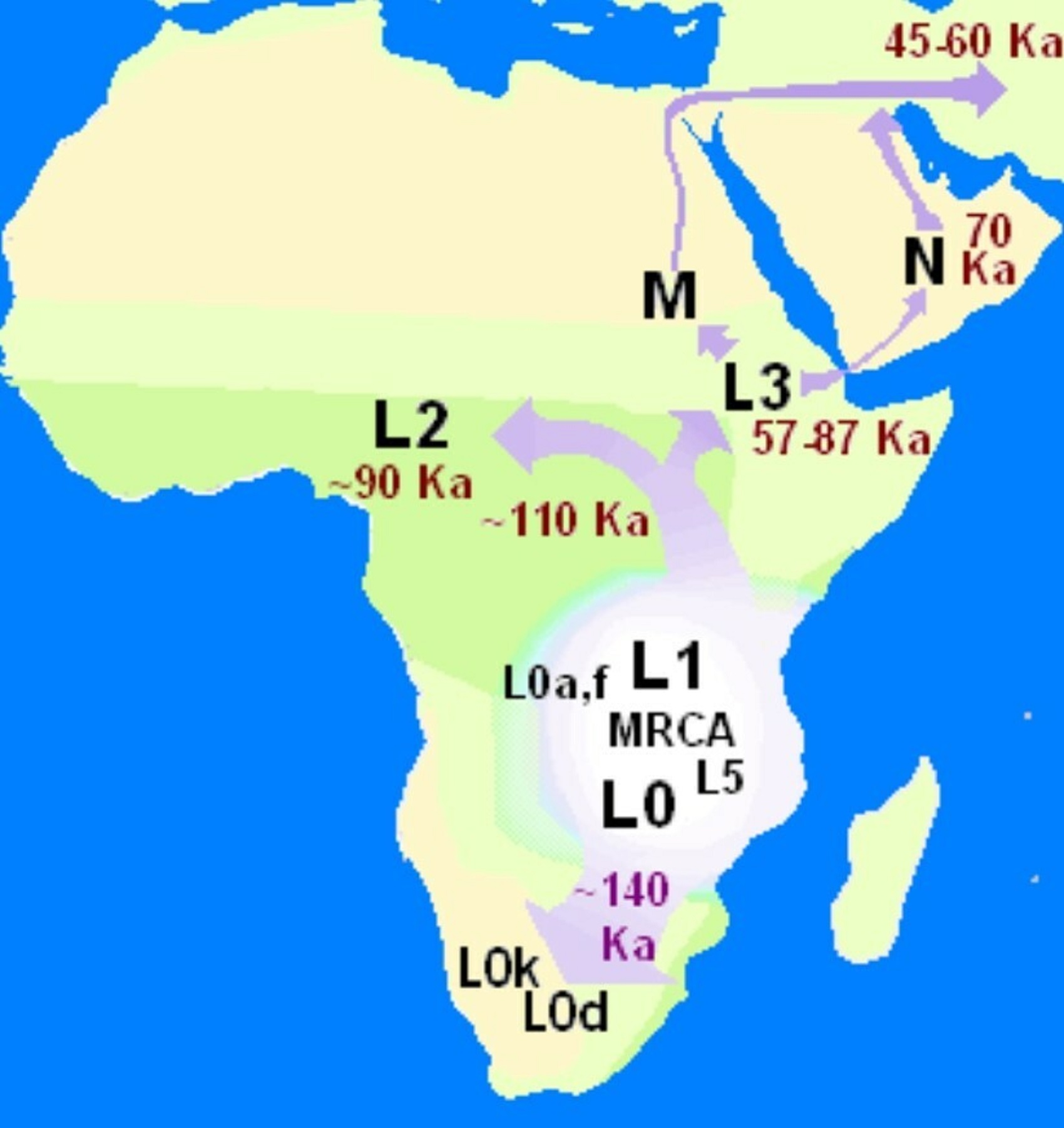
“In terms of mitochondrial haplogroups, the mt-MRCA is situated at the divergence of macro-haplogroup L into L0 and L1–6. As of 2013, estimates on the age of this split ranged at around 155,000 years ago, consistent with a date later than the speciation of Homo sapiens but earlier than the recent out-of-Africa dispersal.” ref
“There were at least several “out-of-Africa” dispersals of modern humans, possibly beginning as early as 270,000 years ago, including 215,000 years ago to at least Greece, and certainly via northern Africa and the Arabian Peninsula about 130,000 to 115,000 years ago. There is evidence that modern humans had reached China around 80,000 years ago. Practically all of these early waves seem to have gone extinct or retreated back, and present-day humans outside Africa descend mainly from a single expansion out 70,000–50,000 years ago. The most significant “recent” wave out of Africa took place about 70,000–50,000 years ago, via the so-called “Southern Route“, spreading rapidly along the coast of Asia and reaching Australia by around 65,000–50,000 years ago, (though some researchers question the earlier Australian dates and place the arrival of humans there at 50,000 years ago at earliest, while others have suggested that these first settlers of Australia may represent an older wave before the more significant out of Africa migration and thus not necessarily be ancestral to the region’s later inhabitants) while Europe was populated by an early offshoot which settled the Near East and Europe less than 55,000 years ago.” ref
“Haplogroup L3 is a human mitochondrial DNA (mtDNA) haplogroup. The clade has played a pivotal role in the early dispersal of anatomically modern humans. It is strongly associated with the out-of-Africa migration of modern humans of about 70–50,000 years ago. It is inherited by all modern non-African populations, as well as by some populations in Africa. Haplogroup L3 arose close to 70,000 years ago, near the time of the recent out-of-Africa event. This dispersal originated in East Africa and expanded to West Asia, and further to South and Southeast Asia in the course of a few millennia, and some research suggests that L3 participated in this migration out of Africa. L3 is also common amongst African Americans and Afro-Brazilians. A 2007 estimate for the age of L3 suggested a range of 104–84,000 years ago. More recent analyses, including Soares et al. (2012) arrive at a more recent date, of roughly 70–60,000 years ago. Soares et al. also suggest that L3 most likely expanded from East Africa into Eurasia sometime around 65–55,000 years ago years ago as part of the recent out-of-Africa event, as well as from East Africa into Central Africa from 60 to 35,000 years ago. In 2016, Soares et al. again suggested that haplogroup L3 emerged in East Africa, leading to the Out-of-Africa migration, around 70–60,000 years ago.” ref
“Haplogroups L6 and L4 form sister clades of L3 which arose in East Africa at roughly the same time but which did not participate in the out-of-Africa migration. The ancestral clade L3’4’6 has been estimated at 110 kya, and the L3’4 clade at 95 kya. The possibility of an origin of L3 in Asia was also proposed by Cabrera et al. (2018) based on the similar coalescence dates of L3 and its Eurasian-distributed M and N derivative clades (ca. 70 kya), the distant location in Southeast Asia of the oldest known subclades of M and N, and the comparable age of the paternal haplogroup DE. According to this hypothesis, after an initial out-of-Africa migration of bearers of pre-L3 (L3’4*) around 125 kya, there would have been a back-migration of females carrying L3 from Eurasia to East Africa sometime after 70 kya. The hypothesis suggests that this back-migration is aligned with bearers of paternal haplogroup E, which it also proposes to have originated in Eurasia. These new Eurasian lineages are then suggested to have largely replaced the old autochthonous male and female North-East African lineages.” ref
“According to other research, though earlier migrations out of Africa of anatomically modern humans occurred, current Eurasian populations descend instead from a later migration from Africa dated between about 65,000 and 50,000 years ago (associated with the migration out of L3). Vai et al. (2019) suggest, from a newly discovered old and deeply-rooted branch of maternal haplogroup N found in early Neolithic North African remains, that haplogroup L3 originated in East Africa between 70,000 and 60,000 years ago, and both spread within Africa and left Africa as part of the Out-of-Africa migration, with haplogroup N diverging from it soon after (between 65,000 and 50,000 years ago) either in Arabia or possibly North Africa, and haplogroup M originating in the Middle East around the same time as “N.” A study by Lipson et al. (2019) analyzing remains from the Cameroonian site of Shum Laka found them to be more similar to modern-day Pygmy peoples than to West Africans, and suggests that several other groups (including the ancestors of West Africans, East Africans, and the ancestors of non-Africans) commonly derived from a human population originating in East Africa between about 80,000-60,000 years ago, which they suggest was also the source and origin zone of haplogroup L3 around 70,000 years ago.” ref
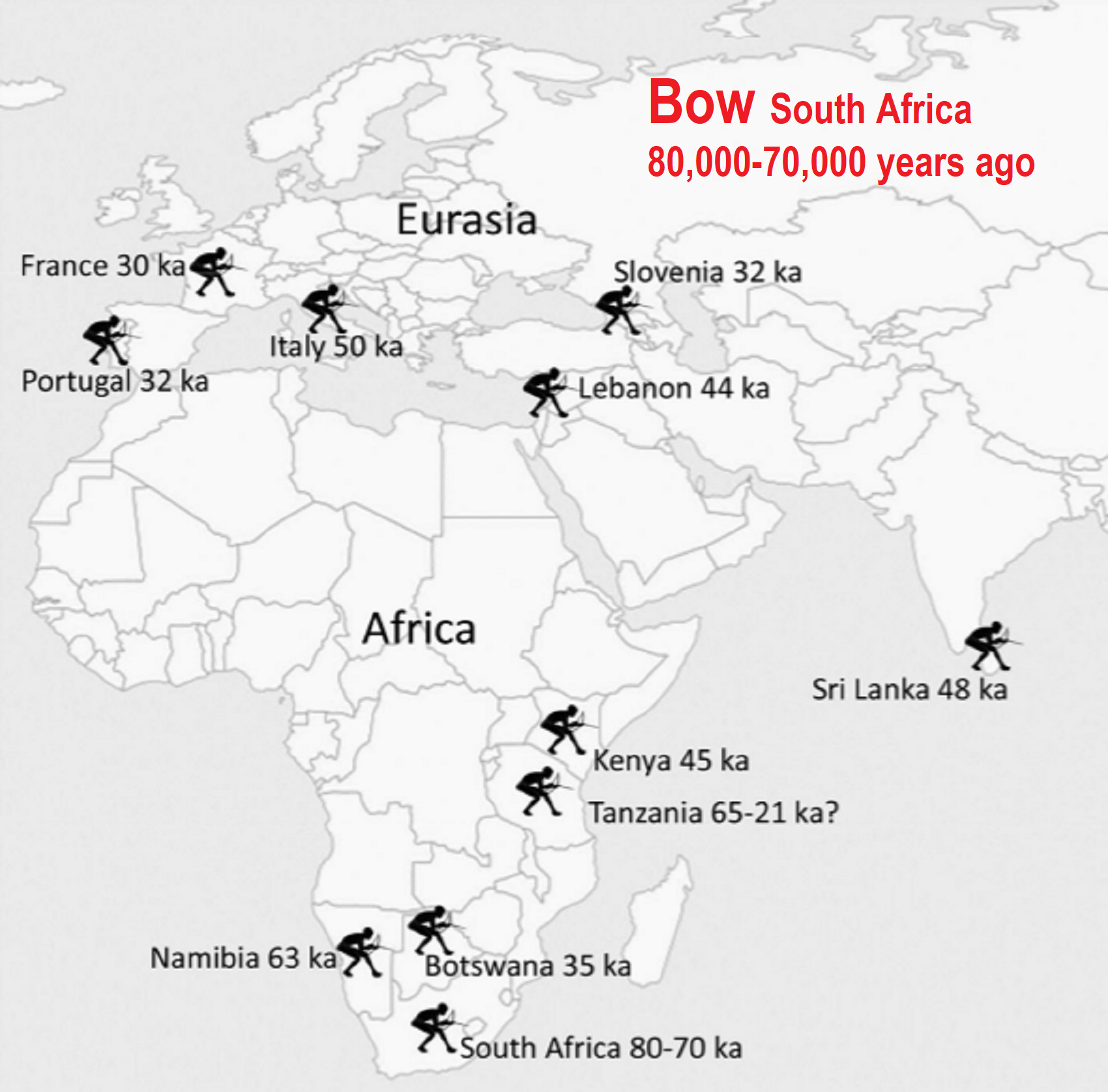
Did Pleistocene Africans use the spearthrower‐and‐dart?
“Well, evidence grows apace for ever-more ancient bow-and-arrow use. List of age estimates, locations, and current evidence bundles for the use of either arrows or darts by/before 30,000 years ago, the list may not be exhaustive, but we suggest that it broadly summarizes current knowledge (MSA = middle stone age).” ref
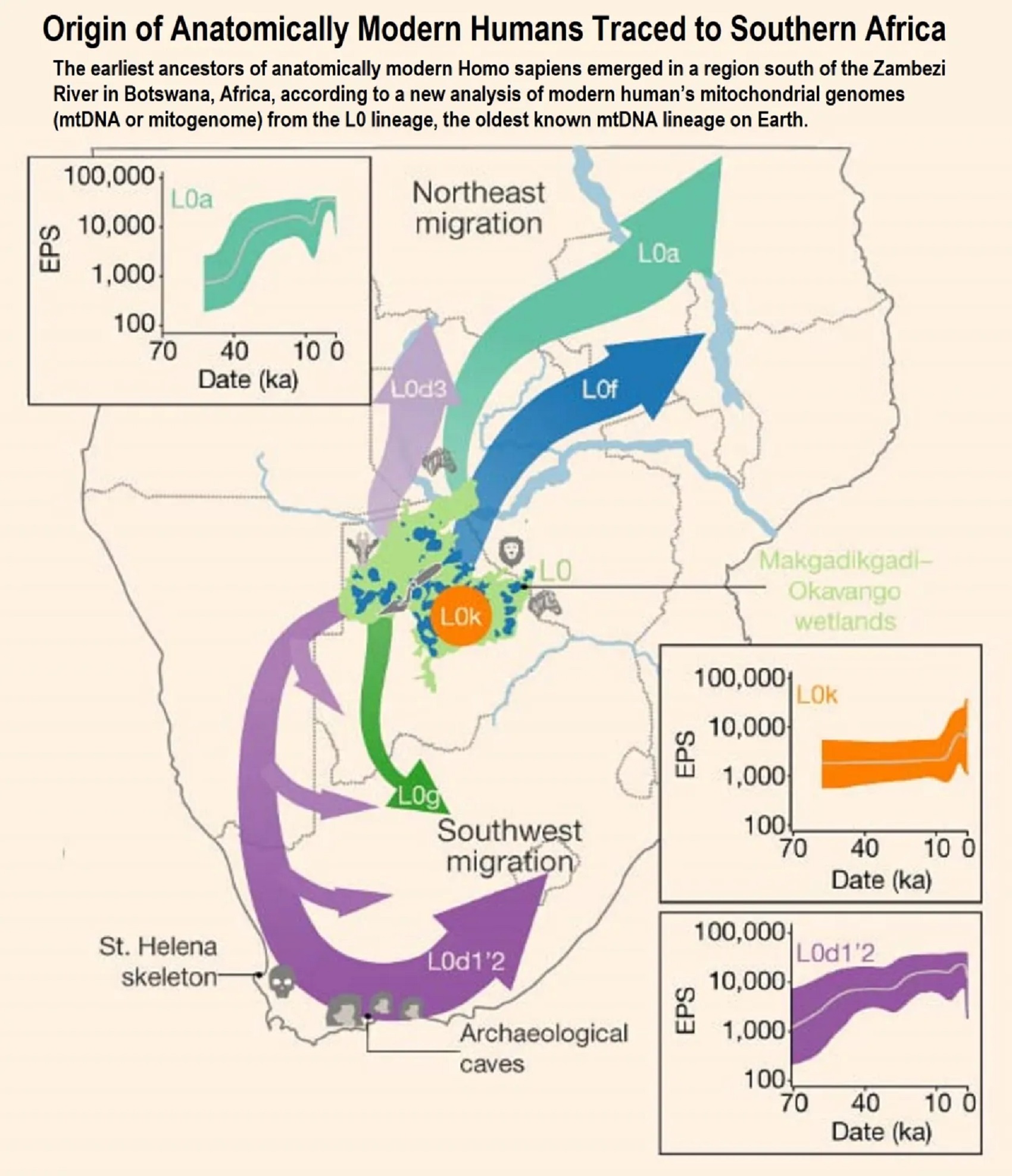
Pic ref
“The earliest ancestors of anatomically modern Homo sapiens emerged in a region south of the Zambezi River in Botswana, Africa, according to a new analysis of modern human’s mitochondrial genomes (mtDNA or mitogenome) from the L0 lineage, the oldest known mtDNA lineage on Earth.” ref
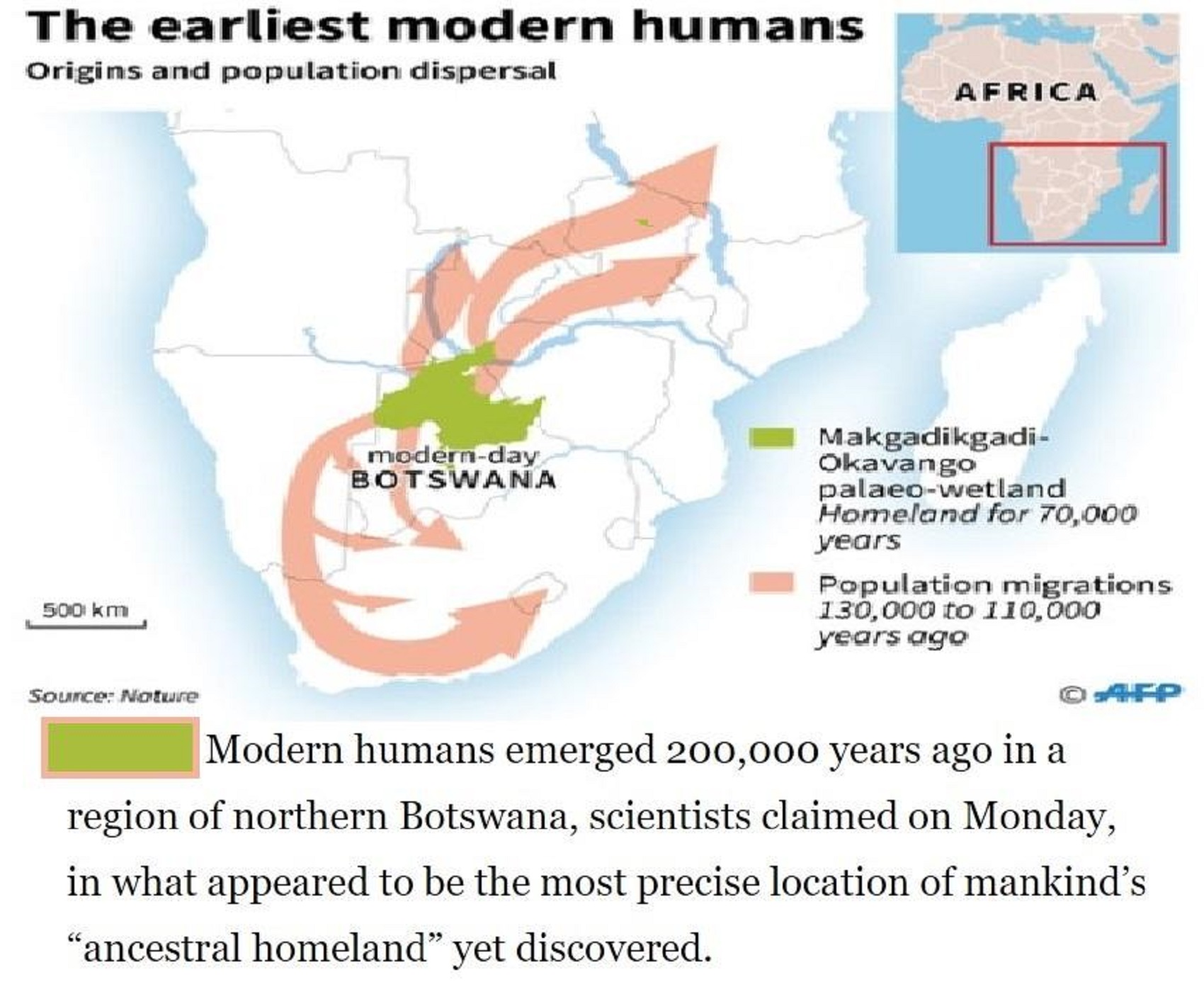
Pic ref
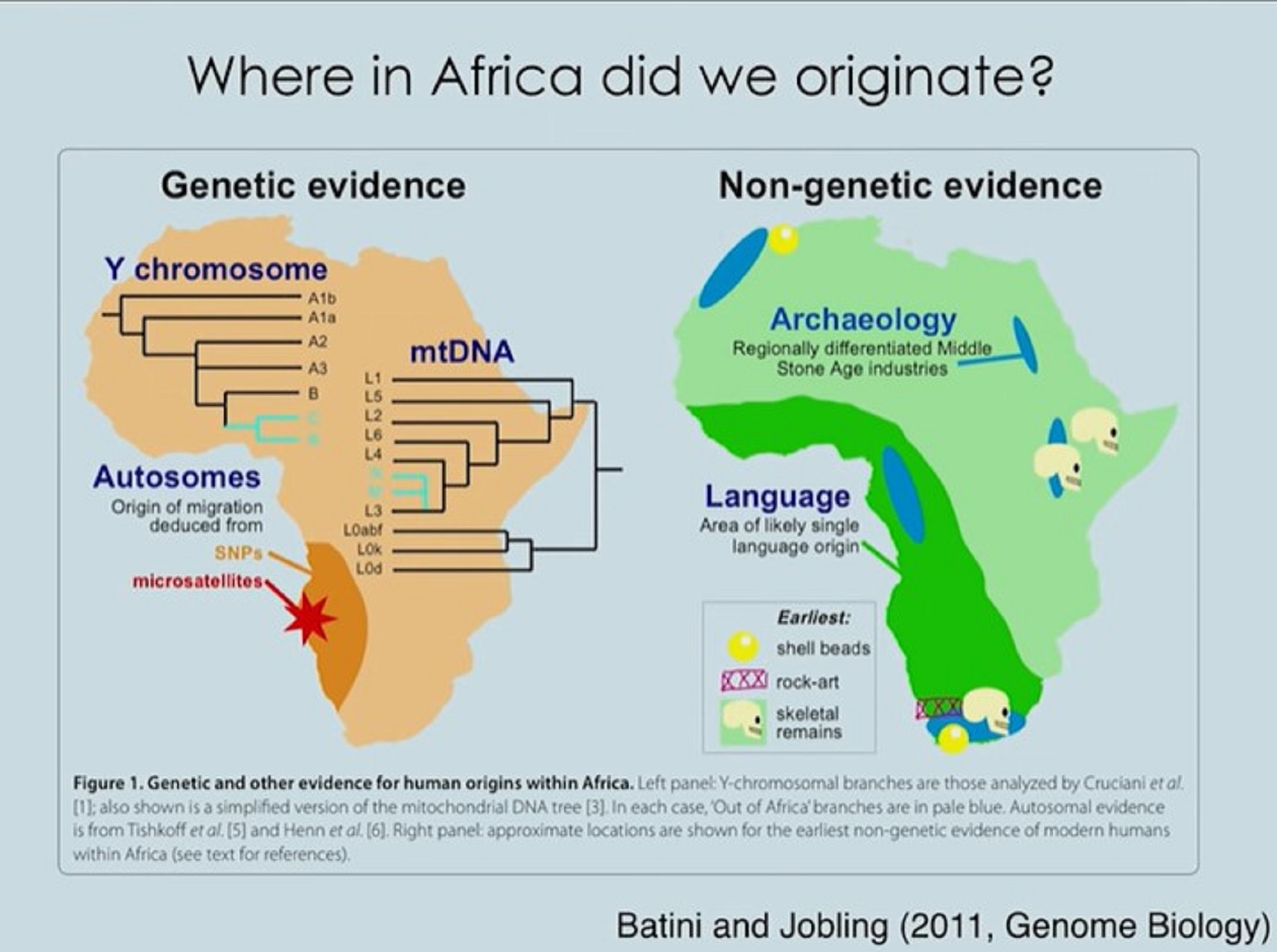
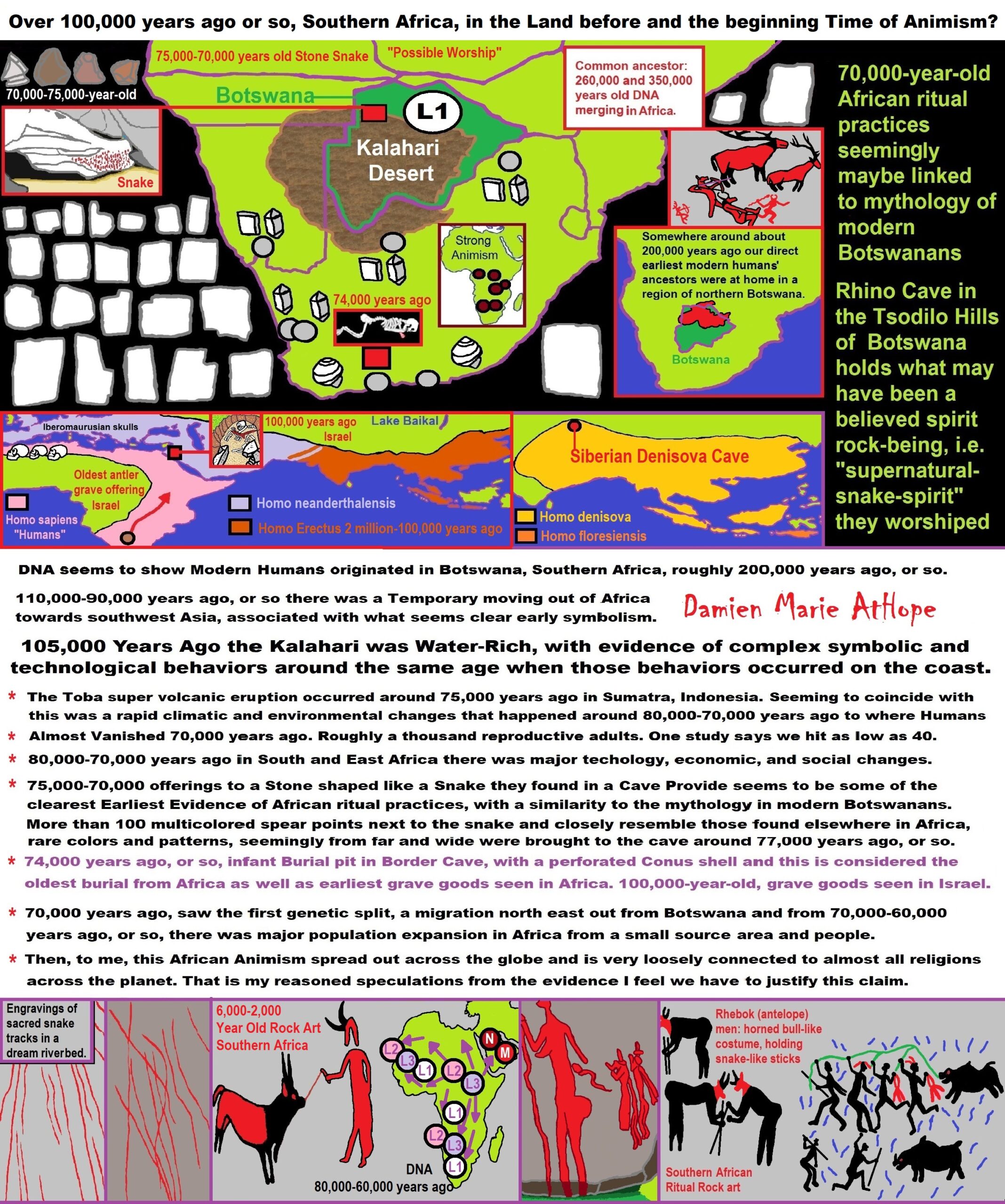
ref, ref, ref, ref, ref, ref, ref, ref, ref, ref, ref, ref, ref, ref, ref, ref, ref, ref, ref, ref, ref, ref, ref, ref, ref, ref, ref, ref, ref, ref, ref, ref, ref, ref, ref, ref, ref, ref, ref, ref, ref, ref, ref, ref, ref, ref, ref, ref, ref, ref, ref, ref
Animism: a belief among some indigenous people, young children, or all religious people!
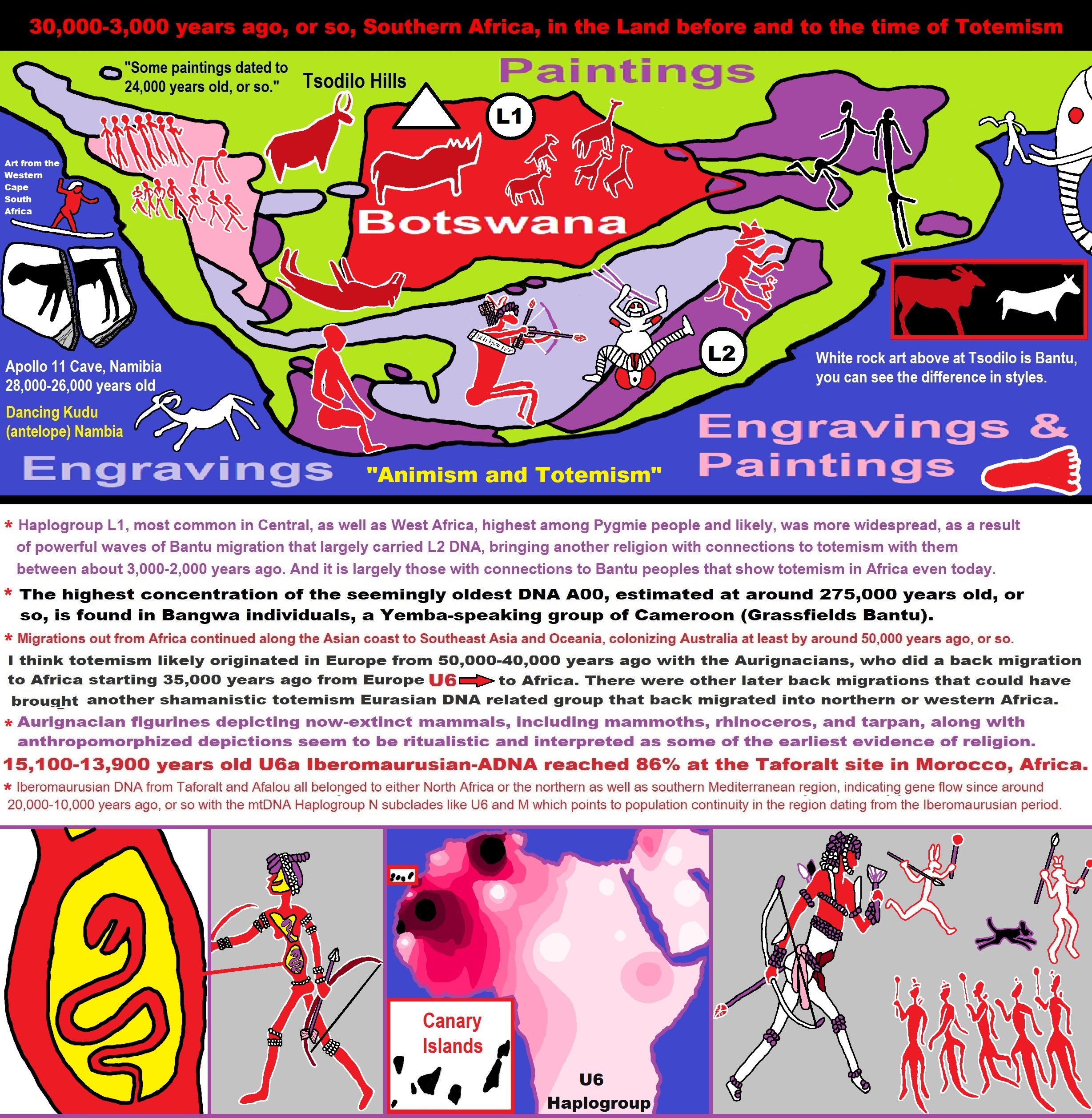
ref, ref, ref, ref, ref, ref, ref, ref, ref, ref, ref, ref, ref, ref, ref, ref, ref, ref, ref, ref, ref, ref, ref, ref, ref, ref, ref, ref, ref, ref, ref, ref, ref, ref, ref, ref, ref, ref, ref, ref, ref, ref, ref, ref, ref, ref, ref, ref, ref, ref, ref, ref, ref, ref, ref, ref, ref, ref, ref, ref,
Explaining the Earliest Religious Expression, that of Animism (beginning 100,000 to 70,000 years ago?) to Totemism (beginning 30,000 to 3,000 years ago?) in Southern Africa: LINK
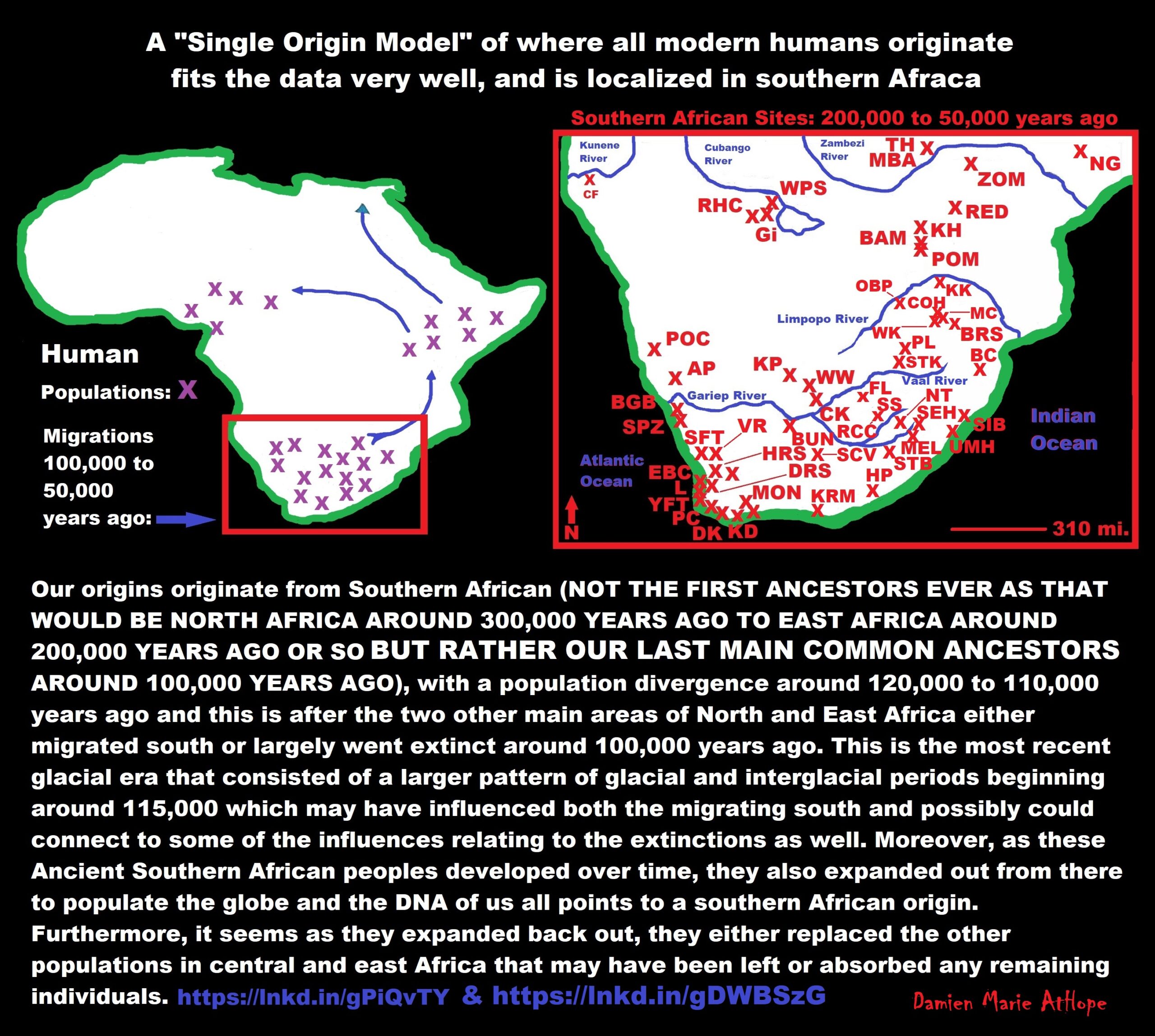
Our origins originate from Southern African (NOT THE FIRST ANCESTORS EVER AS THAT WOULD BE NORTH AFRICA AROUND 300,000 YEARS AGO TO EAST AFRICA AROUND 200,000 YEARS AGO OR SO BUT RATHER OUR LAST MAIN COMMON ANCESTORS AROUND 100,000 YEARS AGO), with a population divergence around 120,000 to 110,000 years ago and this is after the two other main areas of North and East Africa either migrated south or largely went extinct around 100,000 years ago. This is the most recent glacial era that consisted of a larger pattern of glacial and interglacial periods beginning around 115,000 which may have influenced both the migrating south and possibly could connect to some of the influences relating to the extinctions as well. Moreover, as these Ancient Southern African peoples developed over time, they also expanded out from there to populate the globe, and the DNA of us all points to a southern African origin. Furthermore, it seems as they expanded back out, they either replaced the other populations in central and east Africa that may have been left or absorbed any remaining individuals. ref
Southern African Middle Stone Age sites:
(Ap) Apollo 11; (BAM) Bambata; (BBC) Blombos Cave; (BC) Border Cave; (BGB)Boegoeberg; (BPA) Boomplaas; (BRS) Bushman Rock Shelter; (BUN) Bundu Farm; (CF)Cufema Reach; (CK) Canteen Kopje; (COH) Cave of Hearths; (CSB) Cape St Blaize; (DK)Die Kelders Cave 1; (DRS) Diepkloof Rock Shelter; (EBC) Elands Bay Cave; (FL) Florisbad; (≠GI) ≠Gi; (HP) Howiesons Poort; (HRS) Hollow Rock Shelter; (KD) Klipdrift; (KKH) Klein Kliphuis; (KH) Khami; (KK) Kudu Koppie; (KP) Kathu Pan; (KRM) Klasies River Main Site; (L) Langebaan; (MBA) Mumbwa Caves; (MC) Mwulu’s Cave; (MEL)Melikane; (MON) Montagu Cave; (NBC) Nelson Bay Cave; (NG) Ngalue; (NT) Ntloana Tšoana; (OBP) Olieboomspoort; (PC) Peers Cave; (POC) Pockenbank; (PL) Plover’s Lake; (POM) Pomongwe; (PP) Pinnacle Point; (RCC) Rose Cottage Cave; (RED) Redcliff; (RHC) Rhino Cave; (SCV) Seacow Valley; (SFT) Soutfontein; (SEH) Sehonghong; (SIB)Sibudu Cave; (SPZ) Spitzkloof Rock Shelter; (SS) Sunnyside 1; (STB) Strathalan Cave B; (STK) Sterkfontein; (TR) Twin Rivers; (UMH) Umhlatuzana; (VR) Varsche Rivier 003; (WPS) White Paintings Shelter; (WK) Wonderkrater; (WW) Wonderwerk; (YFT)Ysterfontein 1; (ZOM) Zombepata Cave. ref
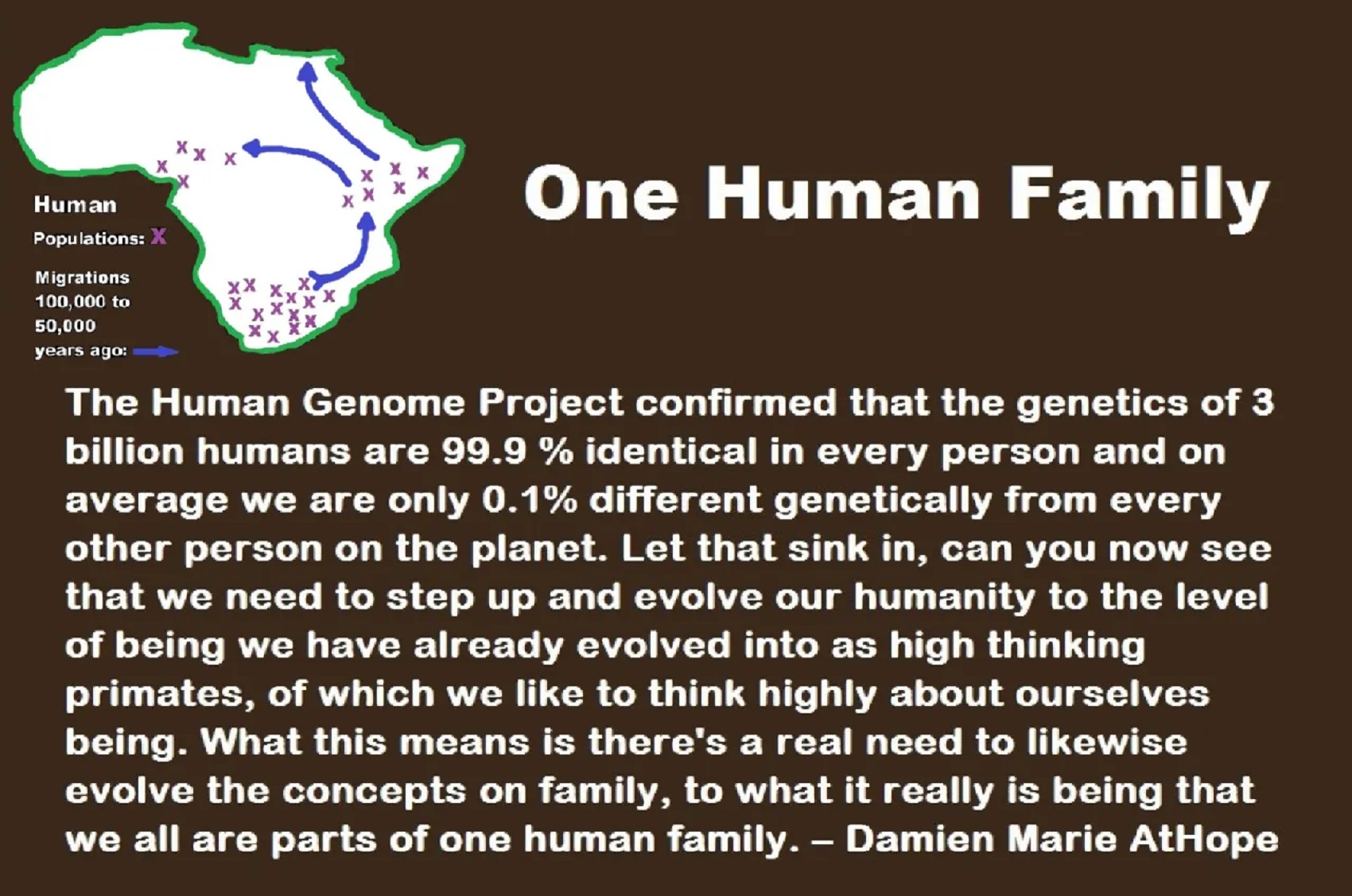
“When researchers completed the final analysis of the Human Genome Project in April 2003, they confirmed that the 3 billion base pairs of genetic letters in humans were 99.9 percent identical in every person. It also meant that individuals are, on average, 0.1 percent different genetically from every other person on the planet. And in that 0.1 percent lies the mystery of why some people are more susceptible to a particular illness or more likely to be healthy than their neighbor – or even another family member.” ref
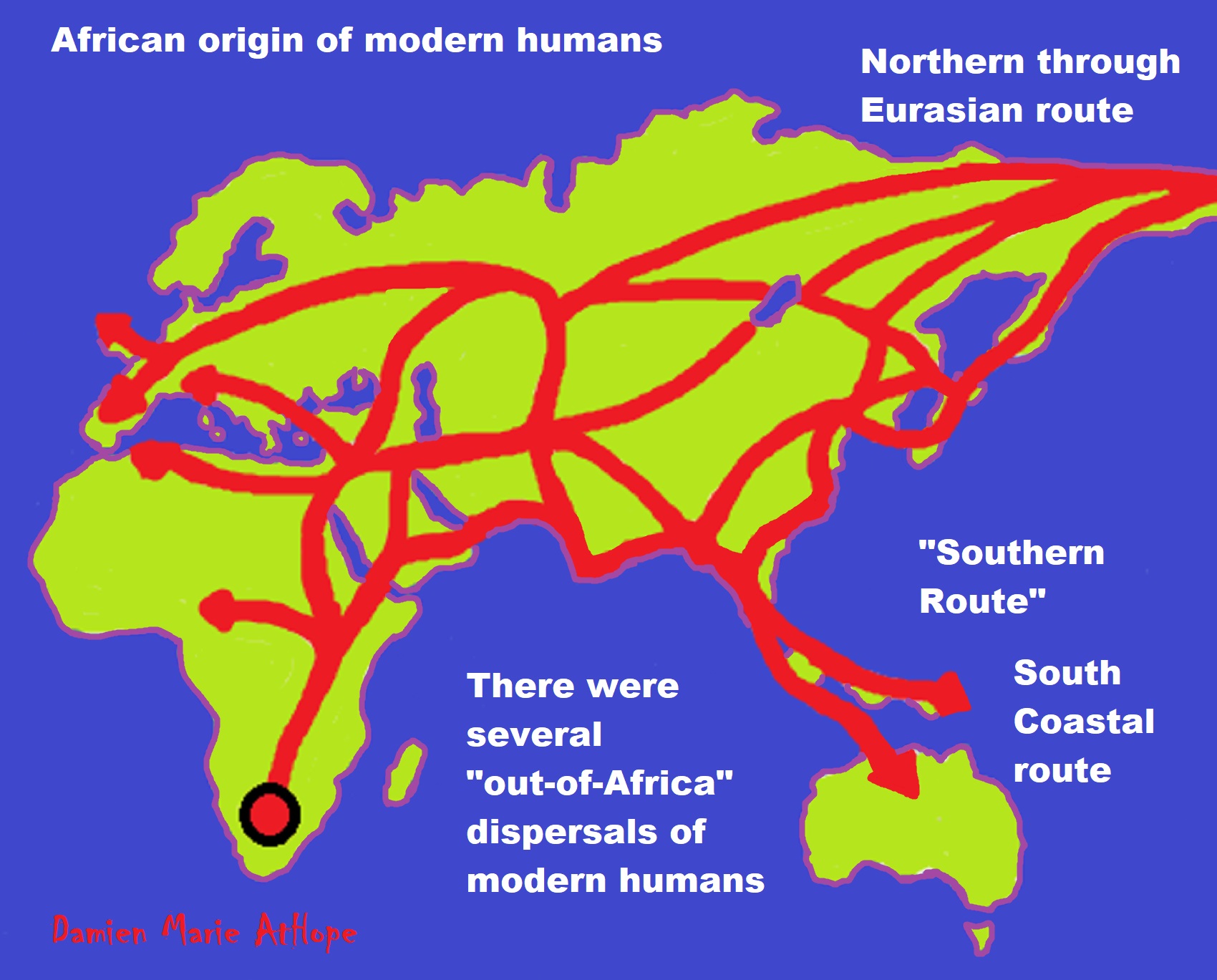
ref, ref, ref, ref, ref, ref, ref, ref
“There are two geographically plausible routes that have been proposed for humans to emerge from Africa: through the current Egypt and Sinai (Northern Route), or through Ethiopia, the Bab el Mandeb strait, and the Arabian Peninsula (Southern Route).” ref
“Although there is a general consensus on the African origin of early modern humans, there is disagreement about how and when they dispersed to Eurasia. This paper reviews genetic and Middle Stone Age/Middle Paleolithic archaeological literature from northeast Africa, Arabia, and the Levant to assess the timing and geographic backgrounds of Upper Pleistocene human colonization of Eurasia. At the center of the discussion lies the question of whether eastern Africa alone was the source of Upper Pleistocene human dispersals into Eurasia or were there other loci of human expansions outside of Africa? The reviewed literature hints at two modes of early modern human colonization of Eurasia in the Upper Pleistocene: (i) from multiple Homo sapiens source populations that had entered Arabia, South Asia, and the Levant prior to and soon after the onset of the Last Interglacial (MIS-5), (ii) from a rapid dispersal out of East Africa via the Southern Route (across the Red Sea basin), dating to ~74,000-60,000 years ago.” ref
“Within Africa, Homo sapiens dispersed around the time of its speciation, roughly 300,000 years ago. The so-called “recent dispersal” of modern humans took place about 70–50,000 years ago. It is this migration wave that led to the lasting spread of modern humans throughout the world. The coastal migration between roughly 70,000 and 50,000 years ago is associated with mitochondrial haplogroups M and N, both derivative of L3. Europe was populated by an early offshoot that settled the Near East and Europe less than 55,000 years ago. Modern humans spread across Europe about 40,000 years ago, possibly as early as 43,000 years ago, rapidly replacing the Neanderthal population.” ref, ref
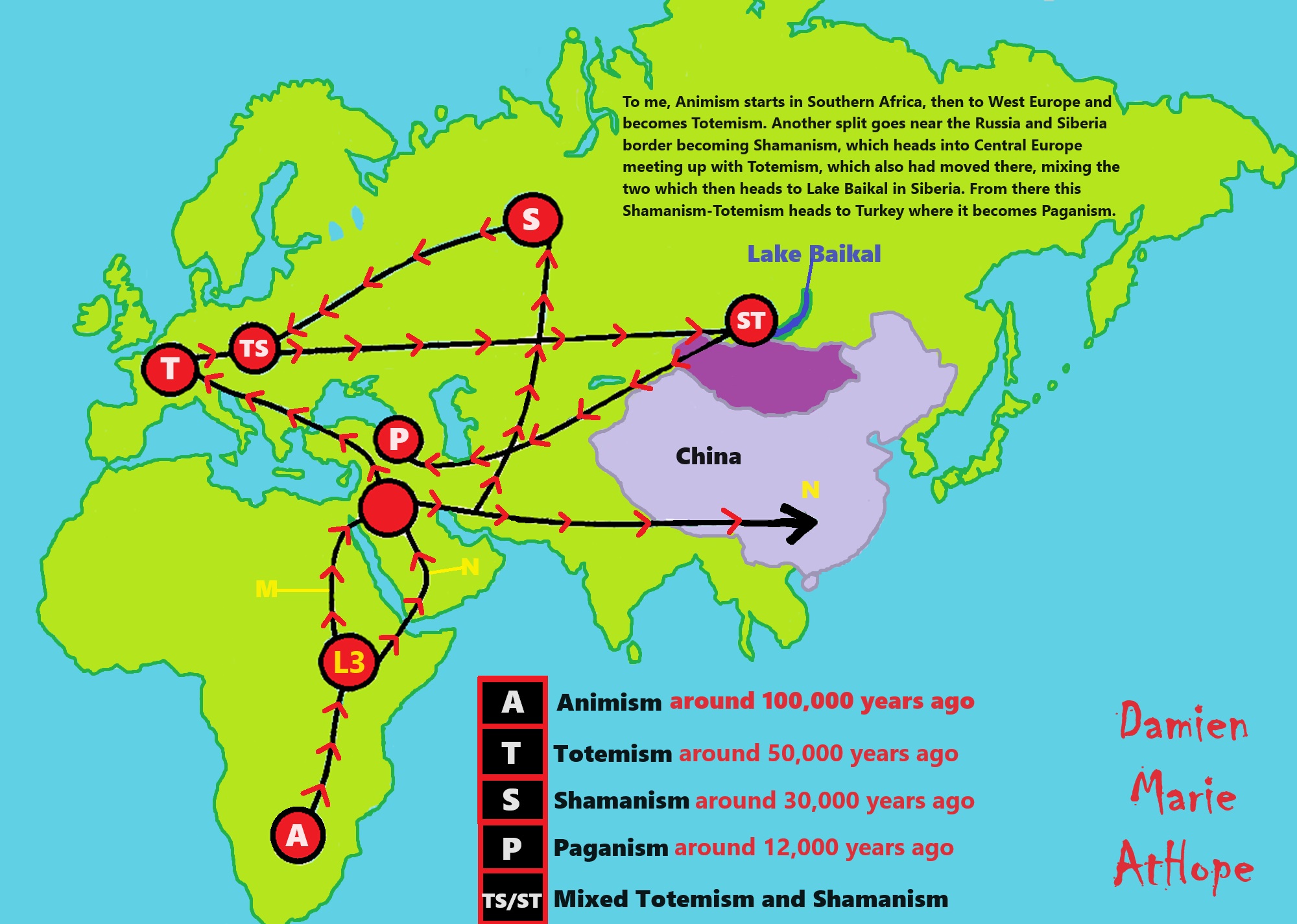
To me, Animism starts in Southern Africa, then to West Europe, and becomes Totemism. Another split goes near the Russia and Siberia border becoming Shamanism, which heads into Central Europe meeting up with Totemism, which also had moved there, mixing the two which then heads to Lake Baikal in Siberia. From there this Shamanism-Totemism heads to Turkey where it becomes Paganism.
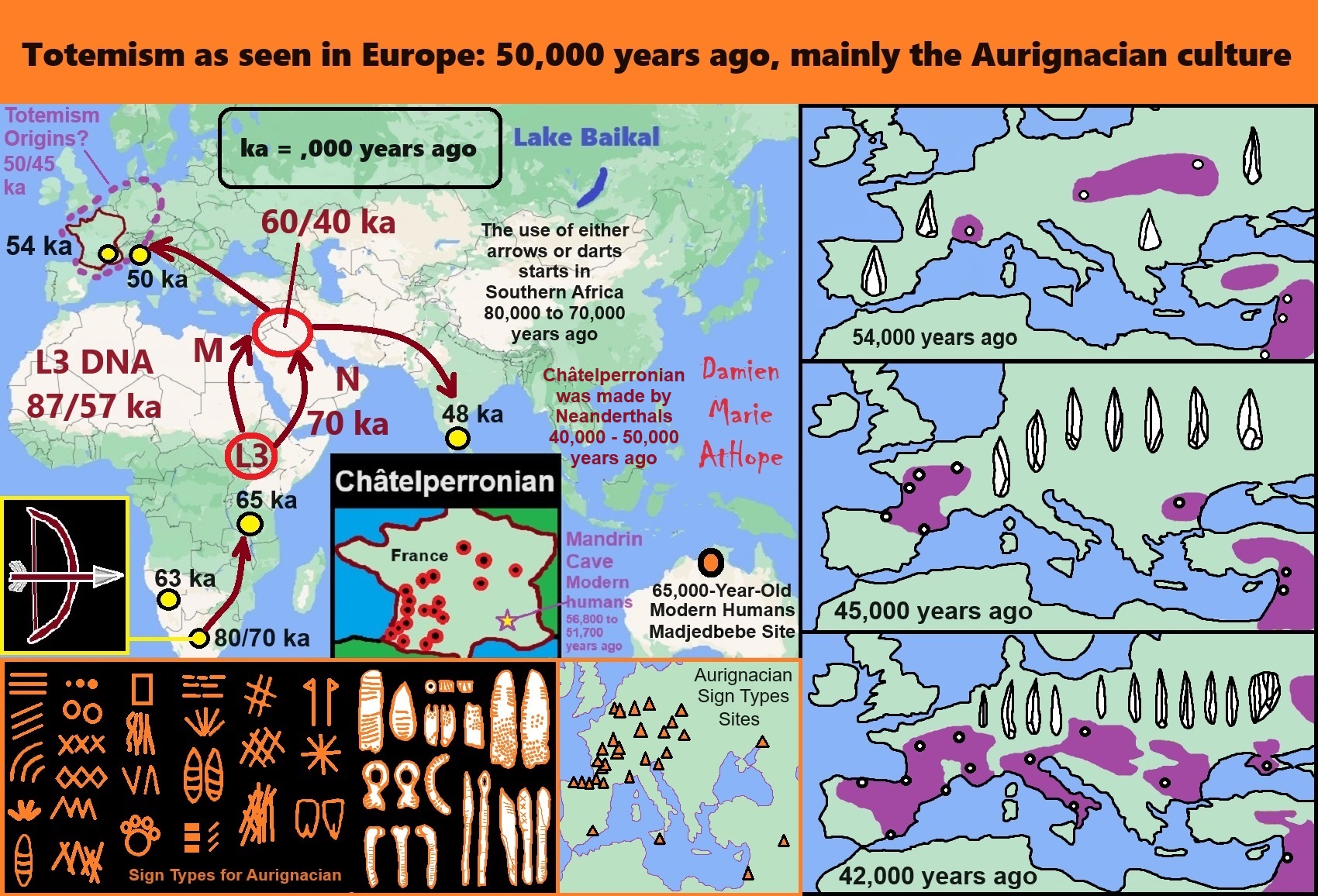
ref, ref, ref, ref, ref, ref, ref, ref, ref, ref, ref, ref, ref, ref, ref, ref, ref, ref, ref, ref, ref, ref, ref
This is my thoughts/speculations on the origins of Totemism
Totemism as seen in Europe: 50,000 years ago, mainly the Aurignacian culture
- Pre-Aurignacian “Châtelperronian” (Western Europe, mainly Spain and France, possible transitional/cultural diffusion between Neanderthals and humans around 50,000-40,000 years ago)
- Archaic–Aurignacian/Proto-Aurignacian (Europe around 46,000-35,000)
- Aurignacian “classical/early to late” (Europe and other areas around 38,000 – 26,000 years ago)
“In the realm of culture, the archeological evidence also supports a Neandertal contribution to Europe’s earliest modern human societies, which feature personal ornaments completely unknown before immigration and are characteristic of such Neandertal-associated archeological entities as the Chatelperronian and the Uluzzian.” – (PDF) Neandertals and Moderns Mixed, and It Matters: Link
Totemism as seen in Europe: 50,000 years ago, mainly the Aurignacian culture
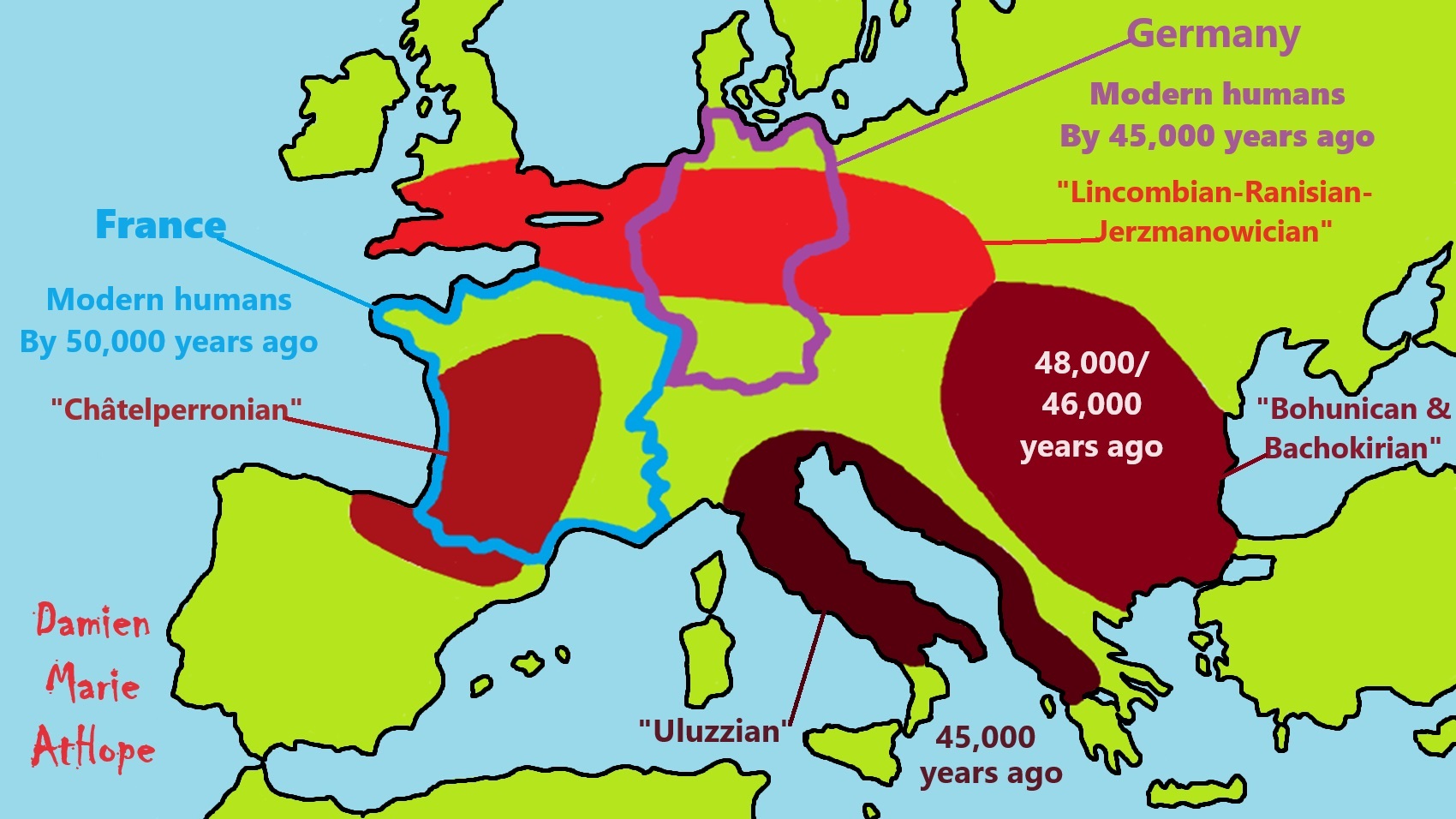
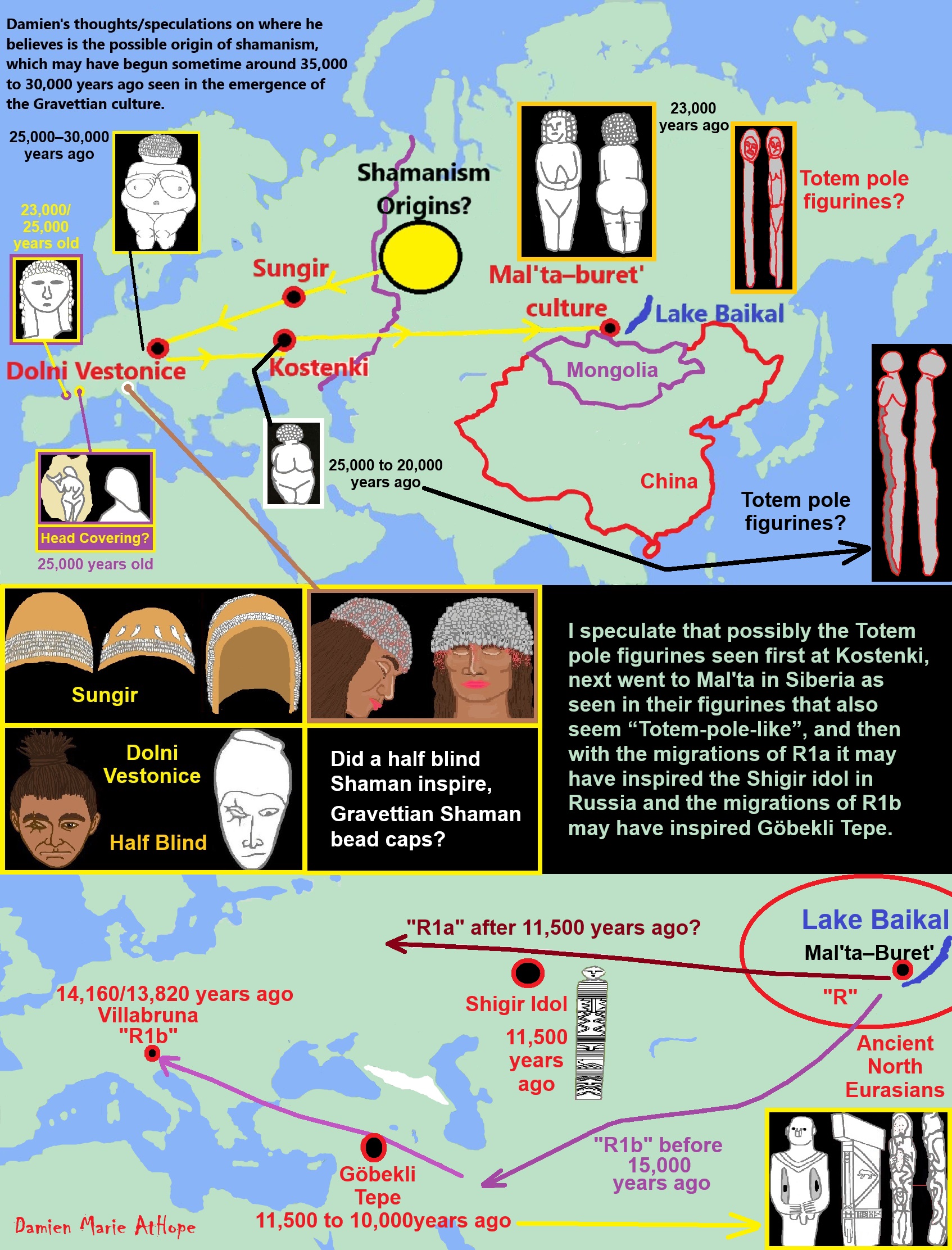
ref, ref, ref, ref, ref, ref, ref, ref, ref, ref, ref, ref, ref, ref, ref, ref, ref, ref, ref
Here are my thoughts/speculations on where I believe is the possible origin of shamanism, which may have begun sometime around 35,000 to 30,000 years ago seen in the emergence of the Gravettian culture, just to outline his thinking, on what thousands of years later led to evolved Asian shamanism, in general, and thus WU shamanism as well. In both Europe-related “shamanism-possible burials” and in Gravettian mitochondrial DNA is a seeming connection to Haplogroup U. And the first believed Shaman proposed burial belonged to Eastern Gravettians/Pavlovian culture at Dolní Věstonice in southern Moravia in the Czech Republic, which is the oldest permanent human settlement that has ever been found. It is at Dolní Věstonice where approximately 27,000-25,000 years ago a seeming female shaman was buried and also there was an ivory totem portrait figure, seemingly of her.
And my thoughts on how cultural/ritual aspects were influenced in the area of Göbekli Tepe. I think it relates to a few different cultures starting in the area before the Neolithic. Two different groups of Siberians first from northwest Siberia with U6 haplogroup 40,000 to 30,000 or so. Then R Haplogroup (mainly haplogroup R1b but also some possible R1a both related to the Ancient North Eurasians). This second group added its “R1b” DNA of around 50% to the two cultures Natufian and Trialetian. To me, it is likely both of these cultures helped create Göbekli Tepe. Then I think the female art or graffiti seen at Göbekli Tepe to me possibly relates to the Epigravettians that made it into Turkey and have similar art in North Italy. I speculate that possibly the Totem pole figurines seen first at Kostenki, next went to Mal’ta in Siberia as seen in their figurines that also seem “Totem-pole-like”, and then with the migrations of R1a it may have inspired the Shigir idol in Russia and the migrations of R1b may have inspired Göbekli Tepe.
Göbekli Tepe Shamanism
From the journal Praehistorische Zeitschrift
“Abstract: The term shamanism is widely used in archaeology to describe early belief systems. Sometimes, this has taken the form of a one-size-fits-all-explanation, without a discussion of the concept or the cultural contexts it was applied to. Recently, the Early Neolithic (9600–7000 BCE) of southwestern Asia has become a focal point of this discussion. Sites like Nevalı Çori, Göbekli Tepe, Jerf el Ahmar, Körtik Tepe, Tell Abr’3, Tell Qaramel, Wadi Faynan 16, Karahantepe and Sayburç have produced rich evidence, mostly of an iconographical nature, that seems to offer direct insights into early belief systems. The current contribution uses one of the best-researched sites, Göbekli Tepe, as a case study to develop criteria for the identification of shamanism in the archaeological record.” ref
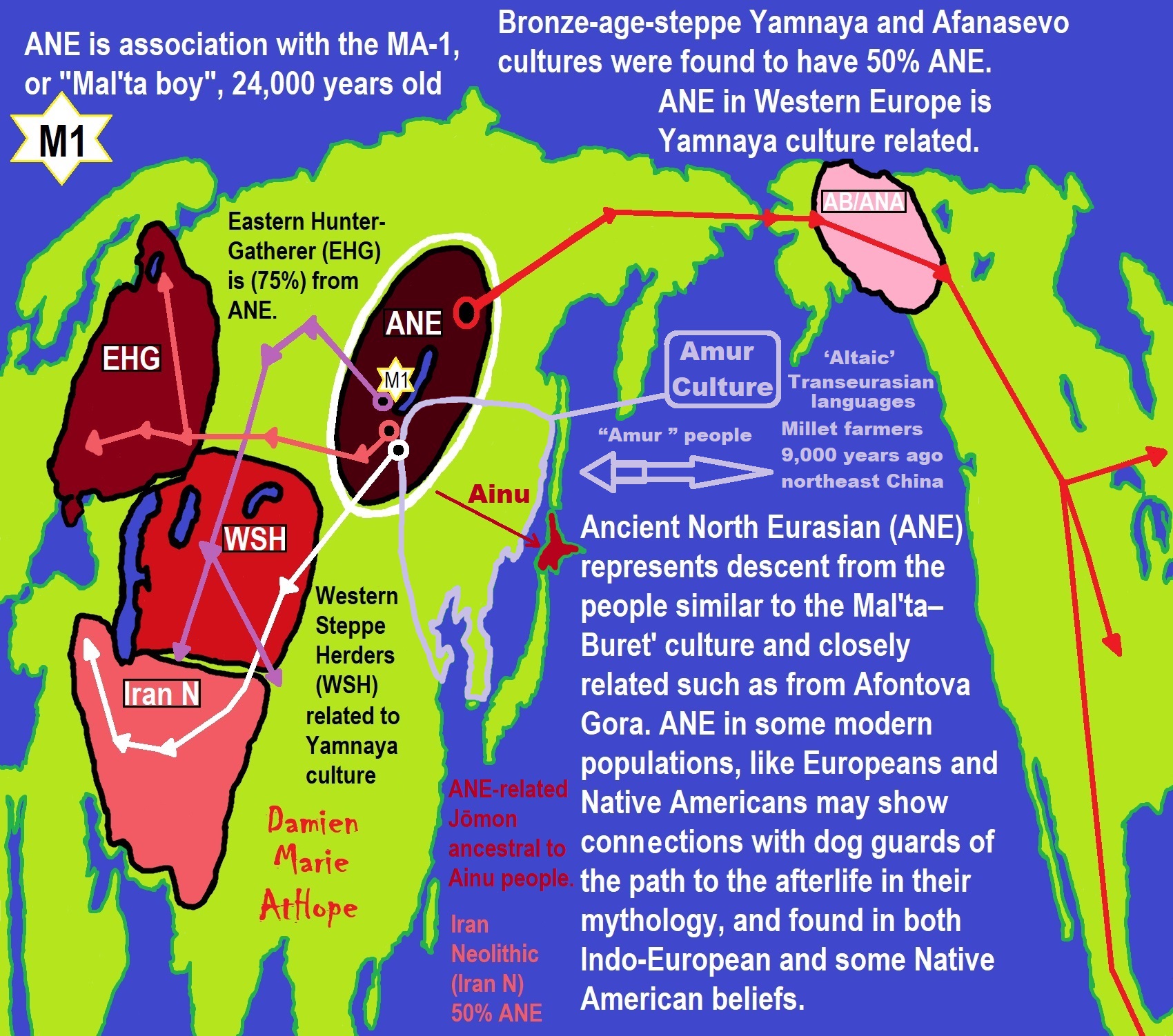
“Migration from Siberia behind the formation of Göbeklitepe: Expert states. People who migrated from Siberia formed the Göbeklitepe, and those in Göbeklitepe migrated in five other ways to spread to the world, said experts about the 12,000-year-old Neolithic archaeological site in the southwestern province of Şanlıurfa.“ The upper paleolithic migrations between Siberia and the Near East is a process that has been confirmed by material culture documents,” he said.” ref
“Semih Güneri, a retired professor from Caucasia and Central Asia Archaeology Research Center of Dokuz Eylül University, and his colleague, Professor Ekaterine Lipnina, presented the Siberia-Göbeklitepe hypothesis they have developed in recent years at the congress held in Istanbul between June 11 and 13. There was a migration that started from Siberia 30,000 years ago and spread to all of Asia and then to Eastern and Northern Europe, Güneri said at the international congress.” ref
“The relationship of Göbeklitepe high culture with the carriers of Siberian microblade stone tool technology is no longer a secret,” he said while emphasizing that the most important branch of the migrations extended to the Near East. “The results of the genetic analyzes of Iraq’s Zagros region confirm the traces of the Siberian/North Asian indigenous people, who arrived at Zagros via the Central Asian mountainous corridor and met with the Göbeklitepe culture via Northern Iraq,” he added.” ref
“Emphasizing that the stone tool technology was transported approximately 7,000 kilometers from east to west, he said, “It is not clear whether this technology is transmitted directly to long distances by people speaking the Turkish language at the earliest, or it travels this long-distance through using way stations.” According to the archaeological documents, it is known that the Siberian people had reached the Zagros region, he said. “There seems to be a relationship between Siberian hunter-gatherers and native Zagros hunter-gatherers,” Güneri said, adding that the results of genetic studies show that Siberian people reached as far as the Zagros.” ref
“There were three waves of migration of Turkish tribes from the Southern Siberia to Europe,” said Osman Karatay, a professor from Ege University. He added that most of the groups in the third wave, which took place between 2600-2400 BCE, assimilated and entered the Germanic tribes and that there was a genetic kinship between their tribes and the Turks. The professor also pointed out that there are indications that there is a technology and tool transfer from Siberia to the Göbeklitepe region and that it is not known whether people came, and if any, whether they were Turkish.” ref
“Around 12,000 years ago, there would be no ‘Turks’ as we know it today. However, there may have been tribes that we could call our ‘common ancestors,’” he added. “Talking about 30,000 years ago, it is impossible to identify and classify nations in today’s terms,” said Murat Öztürk, associate professor from İnönü University. He also said that it is not possible to determine who came to where during the migrations that were accepted to have been made thousands of years ago from Siberia. On the other hand, Mehmet Özdoğan, an academic from Istanbul University, has an idea of where “the people of Göbeklitepe migrated to.” ref
“According to Özdoğan, “the people of Göbeklitepe turned into farmers, and they could not stand the pressure of the overwhelming clergy and started to migrate to five ways.” “Migrations take place primarily in groups. One of the five routes extends to the Caucasus, another from Iran to Central Asia, the Mediterranean coast to Spain, Thrace and [the northwestern province of] Kırklareli to Europe and England, and one route is to Istanbul via [Istanbul’s neighboring province of] Sakarya and stops,” Özdoğan said. In a very short time after the migration of farmers in Göbeklitepe, 300 settlements were established only around northern Greece, Bulgaria, and Thrace. “Those who remained in Göbeklitepe pulled the trigger of Mesopotamian civilization in the following periods, and those who migrated to Mesopotamia started irrigated agriculture before the Sumerians,” he said.” ref
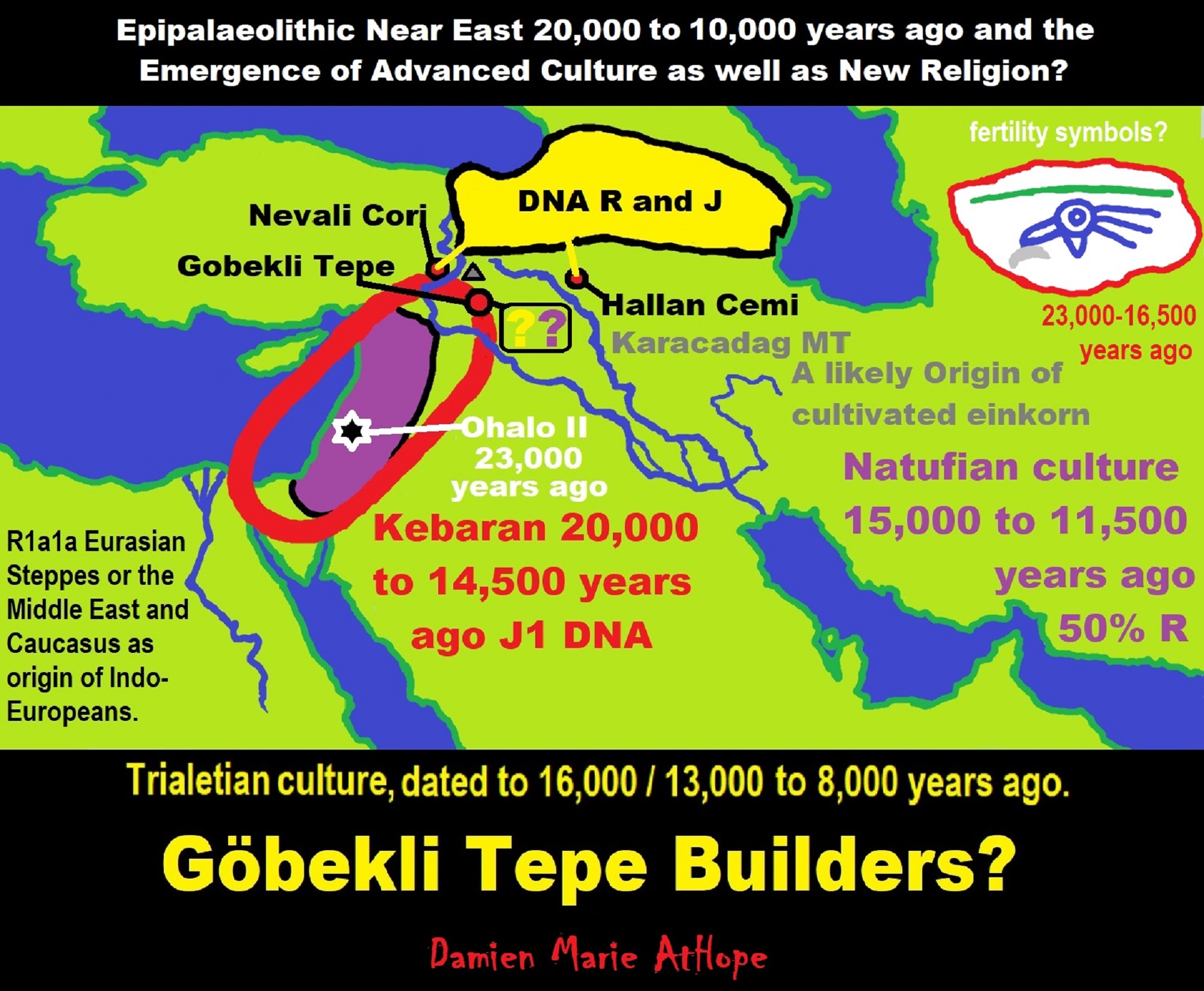
ref
Haplogroup R possible time of origin about 27,000 years in Central Asia, South Asia, or Siberia:
- Mal’ta–Buret’ culture (24,000-15,000 years ago)
- Afontova Gora culture (21,000-12,000 years ago)
- Trialetian culture (16,000–8000 years ago)
- Samara culture (7,000-6,500 years ago)
- Khvalynsk culture (7,000-6,500 years ago)
- Afanasievo culture (5,300-4,500 years ago)
- Yamna/Yamnaya Culture (5,300-4,500 years ago)
- Andronovo culture (4,000–2,900 years ago) ref
Trialetian sites
Caucasus and Transcaucasia:
- Edzani (Georgia)
- Chokh (Azerbaijan), layers E-C200
- Kotias Klde, layer B” ref
Eastern Anatolia:
- Hallan Çemi[9] (from ca. 8.6-8.5k BC to 7.6-7.5k BCE)
- Nevali Çori shows some Trialetian admixture in a PPNB context” ref
Trialetian influences can also be found in:
- Cafer Höyük
- Boy Tepe” ref
Southeast of the Caspian Sea:
- Hotu (Iran)
- Ali Tepe (Iran) (from cal. 10,500 to 8,870 BCE)
- Belt Cave (Iran), layers 28-11 (the last remains date from ca. 6,000 BCE)
- Dam-Dam-Cheshme II (Turkmenistan), layers7,000-3,000 BCE)” ref
“The belonging of these Caspian Mesolithic sites to the Trialetian has been questioned. Little is known about the end of the Trialetian. 6k BC has been proposed as the time on which the decline phase took place. From this date are the first evidence of the Jeitunian, an industry that has probably evolved from the Trialetian. Also from this date are the first pieces of evidence of Neolithic materials in the Belt cave.” ref
“In the southwest corner of the Trialetian region it has been proposed that this culture evolved towards a local version of the PPNB around 7,000 BCE, in sites as Cafer Höyük. Kozłowski suggests that the Trialetian does not seem to have continuation in the Neolithic of Georgia (as for example in Paluri and Kobuleti). Although in the 5,000 BCE certain microliths similar to those of the Trialetian reappear in Shulaveris Gora (see Shulaveri-Shomu) and Irmis Gora.” ref
“The genome of a Mesolithic hunter-gatherer individual found at the layer A2 of the Kotias Klde rock shelter in Georgia (labeled KK1), dating from 9,700 years ago, has been analyzed. This individual forms a genetic cluster with another hunter-gatherer from the Satsurblia Cave, the so-called Caucasian Hunter-Gatherer (CHG) cluster. KK1 belongs to the Y-chromosome haplogruoup J2a (an independent analysis has assigned him J2a1b-Y12379*).” ref
“Although the belonging of the Caspian Mesolithic to the Trialetian has been questioned, it is worth noting that genetic similarities have been found between an Mesolithic hunther-gatherer from the Hotu cave (labeled Iran_HotuIIIb) dating from 9,100-8,600 BCE and the CHG from Kotias Klde. The Iran_HotuIIIb individual belongs to the Y-chromosome haplogroup J (xJ2a1b3, J2b2a1a1) (an independent analysis yields J2a-CTS1085(xCTS11251,PF5073) -probably J2a2-). Then, both KK1 and Iran_HotuIIIb individuals share a paternal ancestor that lived approximately 18.7k years ago (according to the estimates of full). At the autosomal level, it falls in the cluster of the CHG’s and the Iranian Neolithic Farmers.” ref
“Göbekli Tepe (“Potbelly Hill”) is a Neolithic archaeological site near the city of Şanlıurfa in Southeastern Anatolia, Turkey. Dated to the Pre-Pottery Neolithic, between c. 9500 and 8000 BCE, the site comprises a number of large circular structures supported by massive stone pillars – the world’s oldest known megaliths. Many of these pillars are richly decorated with abstract anthropomorphic details, clothing, and reliefs of wild animals, providing archaeologists rare insights into prehistoric religion and the particular iconography of the period..” ref
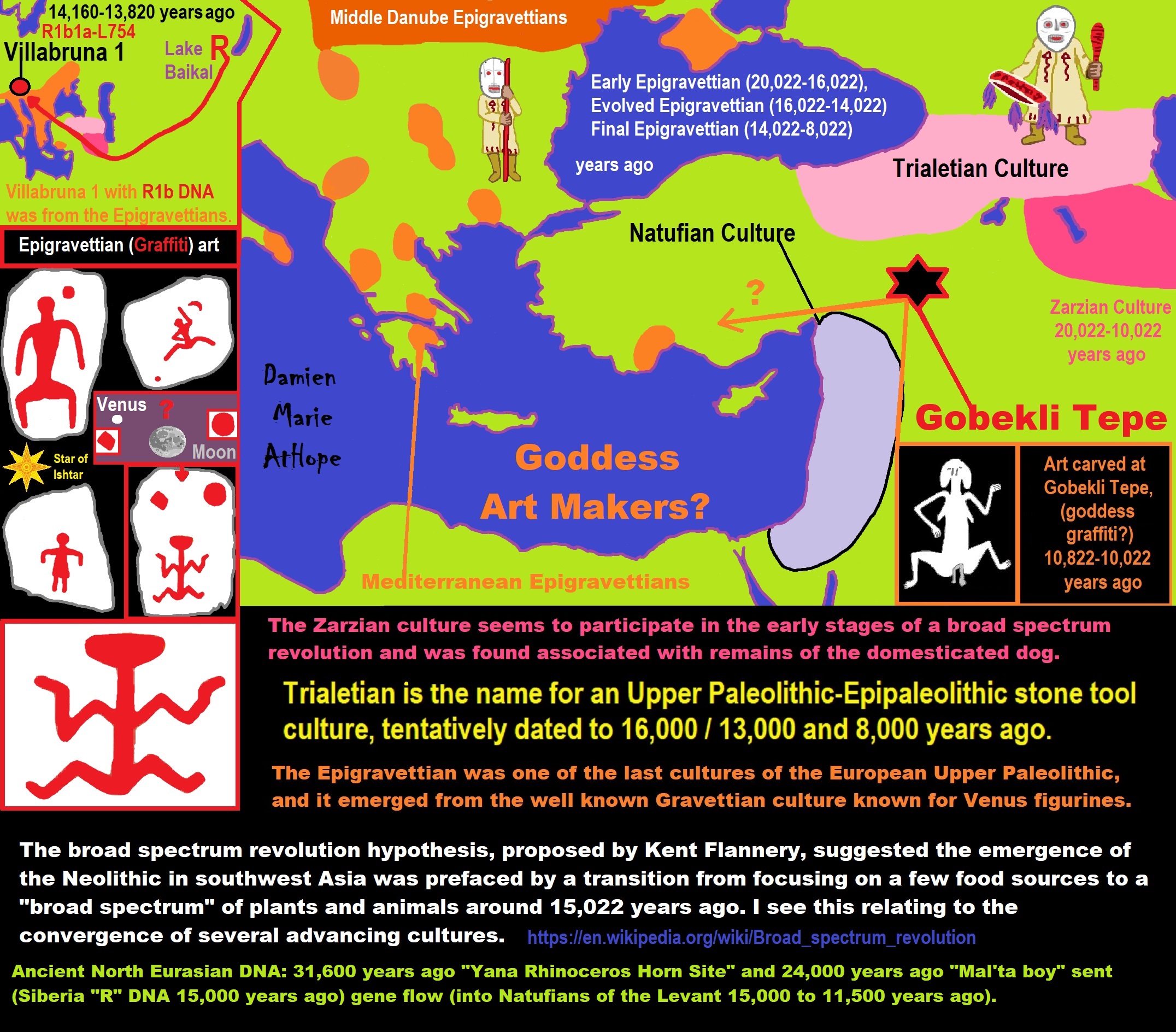
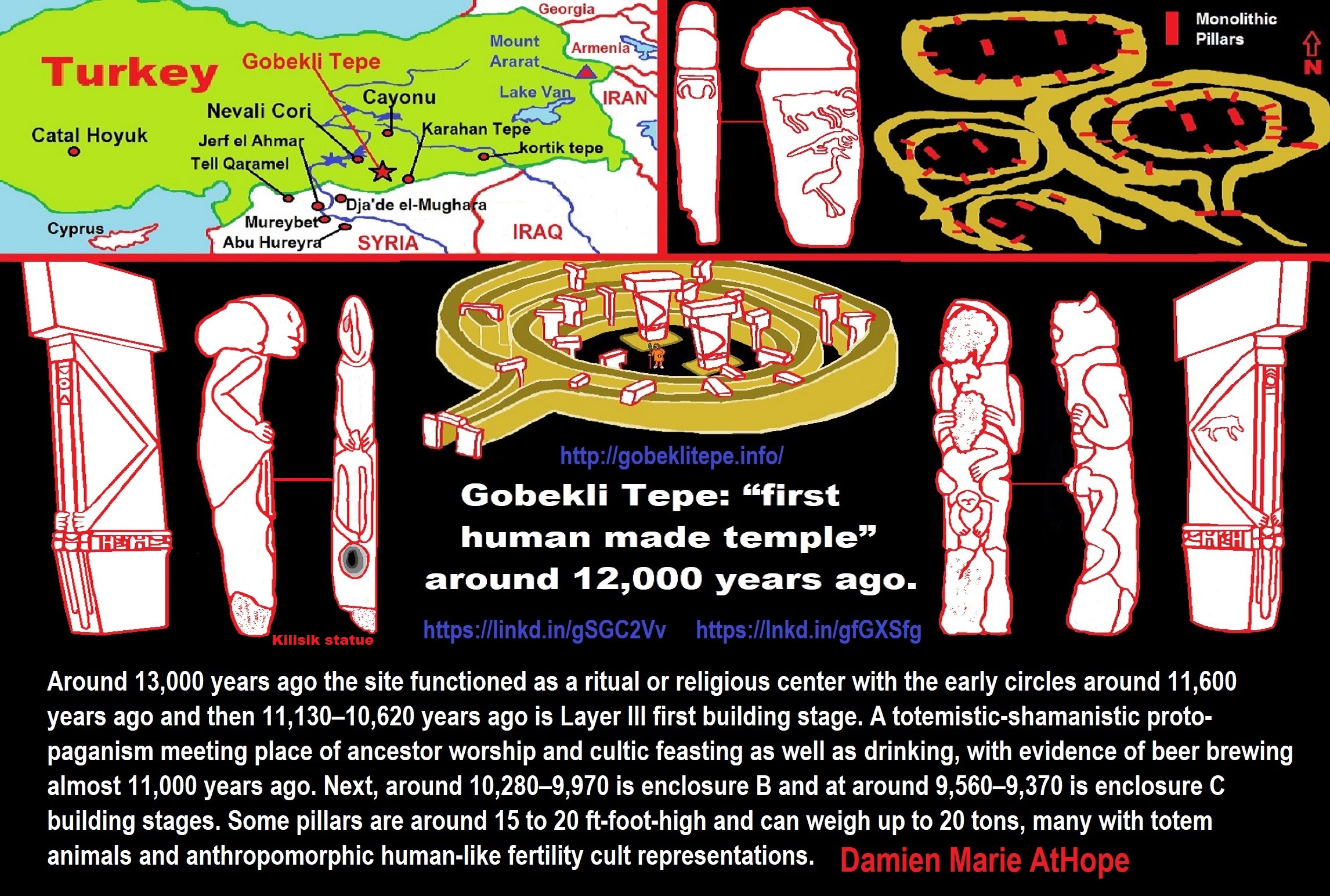
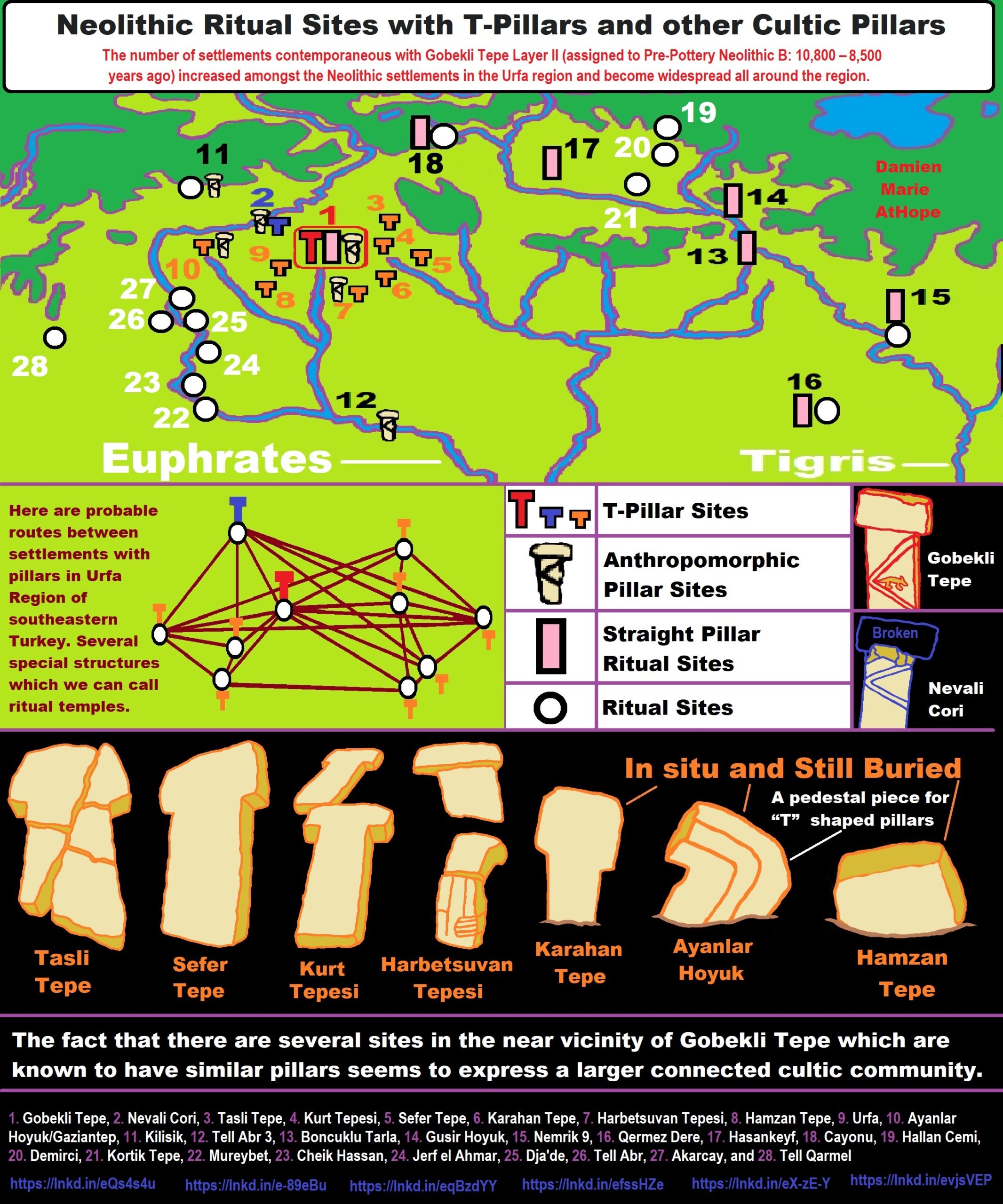
The number of settlements contemporaneous with Gobekli Tepe Layer II (assigned to Pre-Pottery Neolithic B: 10,800 – 8,500 years ago) increased amongst the Neolithic settlements in the Urfa region and become widespread all around the region.
- Gobekli Tepe, 2. Nevali Cori, 3. Tasli Tepe, 4. Kurt Tepesi, 5. Sefer Tepe, 6. Karahan Tepe, 7. Harbetsuvan Tepesi, 8. Hamzan Tepe, 9. Urfa, 10. Ayanlar Hoyuk/Gaziantep, 11. Kilisik, 12. Tell Abr 3, 13. Boncuklu Tarla, 14. Gusir Hoyuk, 15. Nemrik 9, 16. Qermez Dere, 17. Hasankeyf, 18. Cayonu, 19. Hallan Cemi, 20. Demirci, 21. Kortik Tepe, 22. Mureybet, 23. Cheik Hassan, 24. Jerf el Ahmar, 25. Dja’de, 26. Tell Abr, 27. Akarcay, and 28. Tell Qarmel
Göbekli Tepe is not alone, in fact, it is part of a religious/cultural connected ritual culture in the general region. There are several other similar sites with similar T-pillars to Göbekli Tepe or other types of stone pillar providing a seeming connected cult belief or religious culture of pillars seen in the PPNA-PPNB in the northern portion of the Near East.
“The locations of the sites that contain “T” shaped pillars are the main topic that needs more understanding to grasp the larger sociocultural-religious cultural complex in the same general region. Another matter under discussion is to comprehend the differences between the small-scale settlements that contain cult centers and “T” shaped pillars and the larger ones found at Gobekli Tepe layer III. The fact that settlements with “T” shaped pillars contain both the remains of circular domestic buildings and the pillars such as seen at Cayonu and Nevali Cori, which are also known to contain cult and domestic buildings. It is contemplated that such settlements are contemporary with Gobekli Tepe layer II and the cult building known from Nevali Cori based on the similarities and differences of the “T” shaped pillars. In the light of the finds unearthed from the settlements in Şanliurfa region that contain “T” shaped pillars, such settlements should be dated to the end of Late Pre-Pottery Neolithic A (LPPNA) and the Early Pre-Pottery Neolithic B (EPPNB).” ref

ref, ref, ref, ref, ref, ref, ref
Atlit-Yam (Pre-Pottery Neolithic C) is a 40,000-square-metre site/village, near Haifa, Israel, where its people lived in spacious stone houses, complete with paved floors, courtyards, fireplaces, storage facilities, and wells. As well as grain stores, graves, and a ritual stone circle. In the area are also twelve Pottery Neolithic sites. Most of the PN sites (Kfar-Samir; Hishuley Carmel; Kfar-Galim; Nahal Galim; Hahoterim; Tel-Hreiz; Megadim; Atlit north bay; Neve-Yam and Habonim) are attributed to the Wadi Rabah culture, considered as late Pottery Neolithic or early Chalcolithic, while the Neve-Yam North site belongs to the Lodian culture, which predates the Wadi Rabah culture. ref, ref, ref, ref, ref, ref, ref
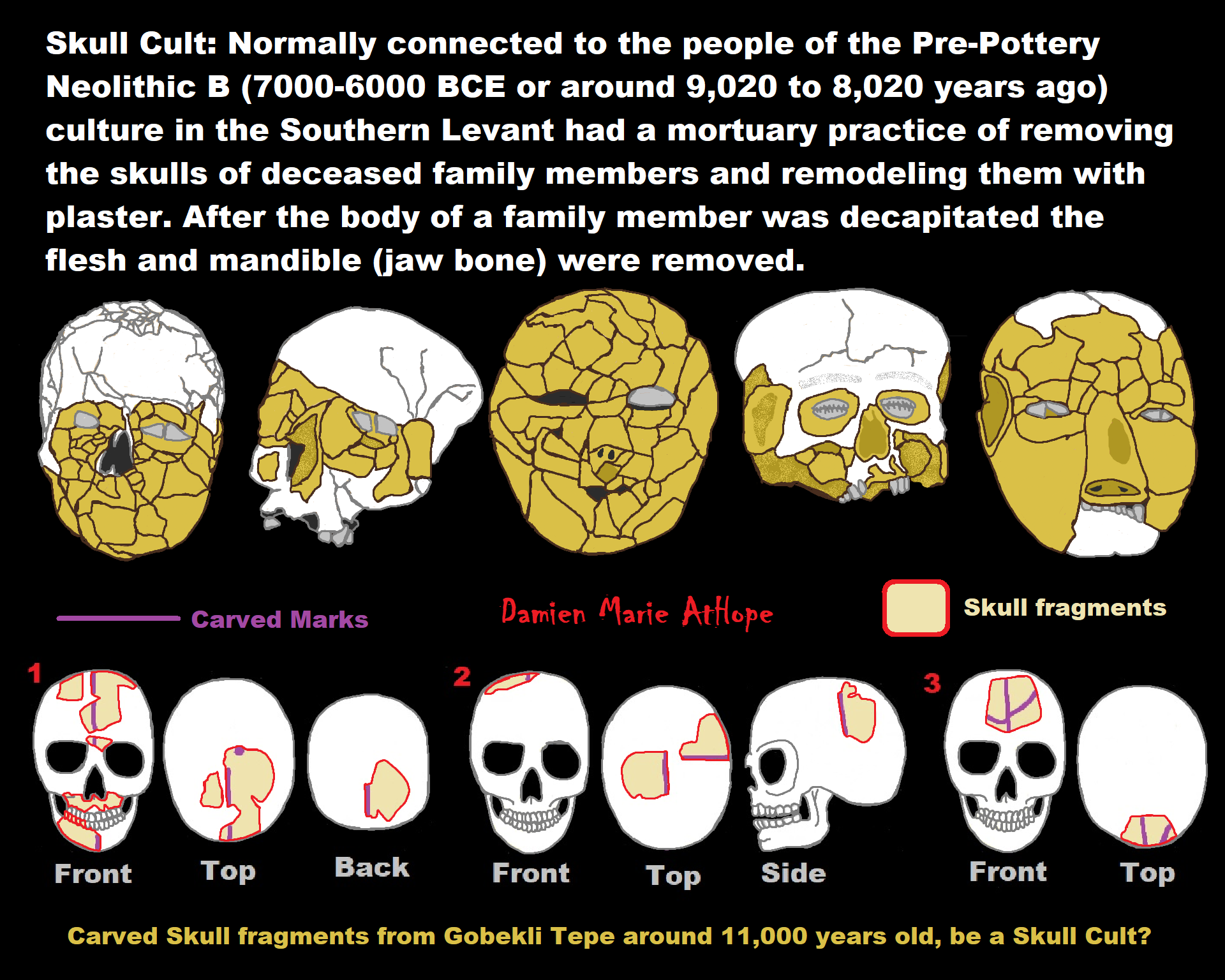
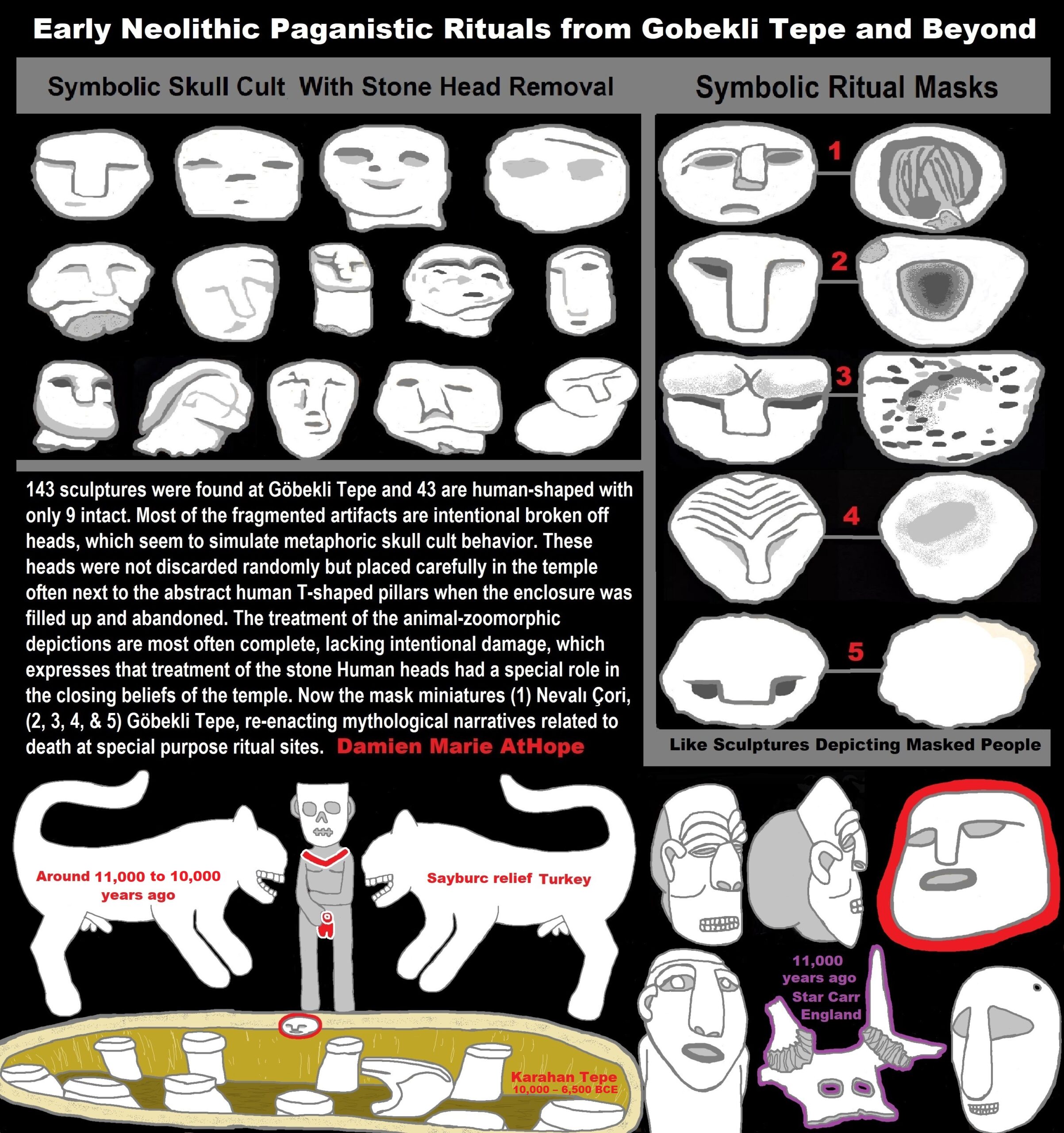
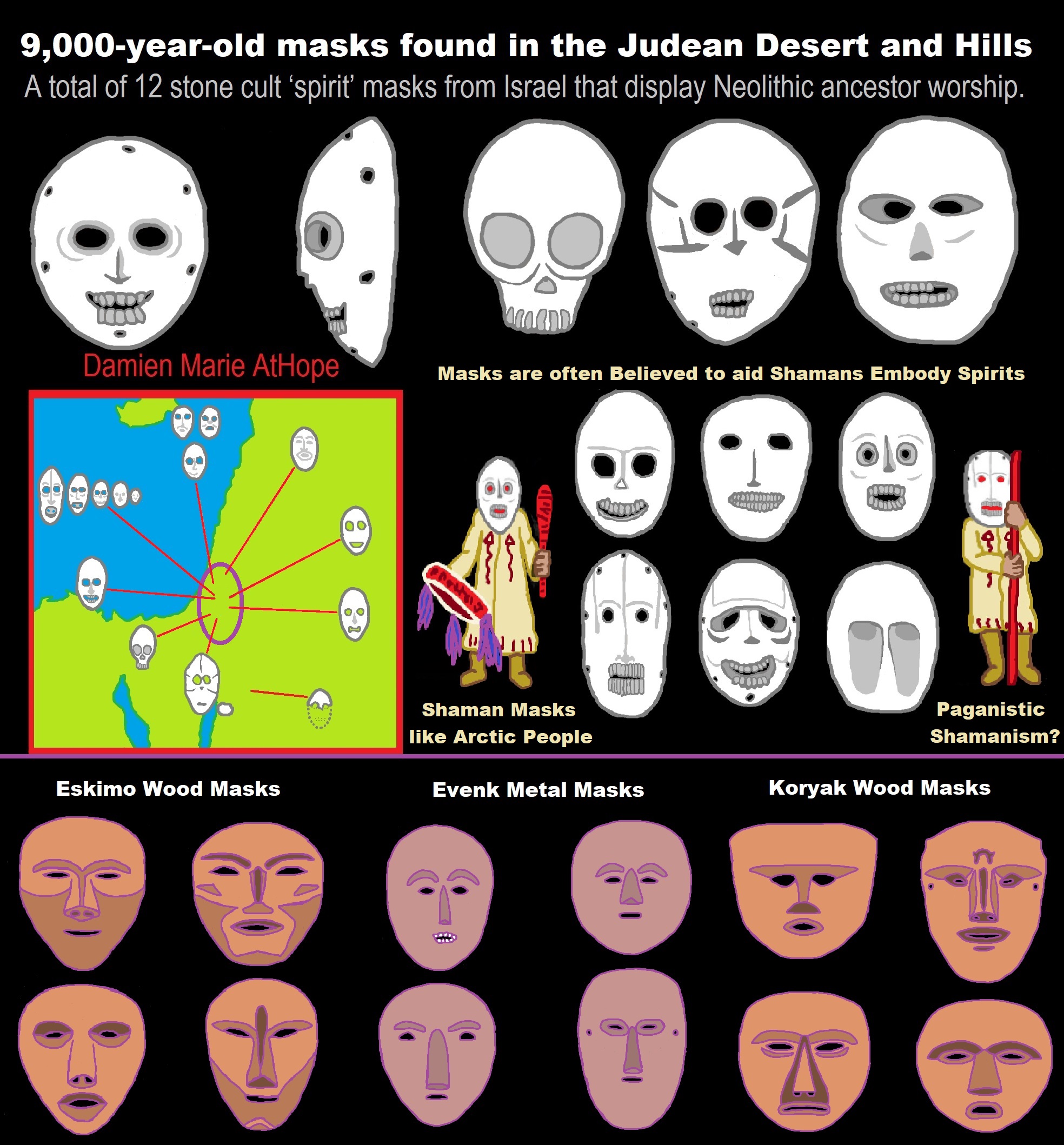

BEHEADED ANCESTORS. OF SKULLS AND STATUES IN PRE-POTTERY
Pre-pottery Neolithic “Skull Cult/Ancestor Cult” Sites in the Levant and Predominant in Israel
Info on the listed sites:
*Beisamoun: Link
*El-Wad: Link
*Ghwair: Link, Link, Link, Link
*Hatula: Link
*Kfar Hahoresh: Link
*Khirbet Hammam: Link, Link, Link
*Mallaha: Link
*Munhata: Link
*Nahal Hemar: Link, Link, Link
*Tell Aswad: Link
*Tell Ramad: Link
*Wadi Shu’eib: Link, Link, Link
“In the Levant, plastered and remodeled skulls have been found in several PPNB sites, such as Jericho, Tell Ramad, Beisamoun, Kfar Hahoresh, Tell-Aswad, ‘Ain Ghazal, and Nahal Hemar and are thus considered part of a mortuary practice typical of the PPNB. This practice seems to have continued in Anatolia, as plastered skulls have been found at Köşk Höyük [ref]–[ref] and Çatal Hüyük [ref] in much later PN contexts. It is still unclear how the central Anatolian plastered skulls relate to those of the Levant, when there are none of such plastered skulls in Anatolia during the PPNB, and none in the Levant during the PN.” ref
“In the Levant, planned burial customs, performed for ritualistic purposes, date as far back as the Middle Paleolithic [ref]. Skull-related funerary practices began during the late and the final Natufian of the southern Levant (12,500–11,800 tears ago), as evidenced in the Hayonim Cave and Eynan sites, where skulls were detached from the rest of the skeleton [ref]. In PPNA Jericho, group burials of isolated unadorned skulls (nested skulls), organized in various configurations, have been found. The same phenomenon was reported in the EPPNB site of Motza [ref]. During the Mid-late PPNB, mortuary customs developed, involving the artificial remodeling of skulls, evidence of which has been found across the Near East. Skulls covered by plaster masks have been located in Jericho, Beisamoun [ref], ‘Ain Ghazal [ref], [ref], Kfar Hahoresh [ref], Tell Ramad [ref]–[ref], and Tell Aswad [ref]. Three plastered facial masks, without the human skulls, were found buried together in a pit at ‘Ain Ghazal [ref]. At Nahal Hemar, three skulls ornamented with asphalt motifs and one burned skull were found [ref], [ref].” ref
“In Ujrat el Mehed (southern Sinai), adult skulls were removed from the post-cranial skeleton, similarly to other Neolithic Levantine sites [ref]. Other special remains include a skull painted with red ochre from Tell Abu Hureyra [ref], a skull decorated with red and black substances from ‘Ain Ghazal [ref] and painted stone masks from Nahal Hemar [ref]and the area of Er-Ram (exact provenance unknown) [ref]. Thus, the three plastered skulls uncovered at Yiftahel join a growing record of artificially treated skulls from the Levantine PPNB. Most of the plastered skulls found to date belong to adult individuals, and both sexes are represented. For our case, it is important to note that the PPNB is characterized by the shift from hunter-gatherer groups to agricultural societies. This process took place on many different levels, e.g., demographic, societal, religious, economic and epidemiological levels [ref]–[ref].” ref
“It is difficult to draw interpretation from these finds but clearly show the first appearance and gradual affirmation of skulls separation, with special reference to individuals and preserving individual identities. Evidence has shown how facial recognition is a major issue for establishing any kind of personal and social relationships. The memory of dead persons and, furthermore, materializing their identities by means of their skulls was the first step to give them an “after death” life (afterlife ancestor worship) to be oriented towards the ideological needs of the new agricultural society.” ref
“The planners and builders of Gobeklitepe still remain a big mystery, and no one has been able to crack the code so far. It is also surmised that Gobeklitepe’s main function was primarily ritual burials, and in some lesser capacity big feasts and social gatherings. In human terms it is roughly estimated that a minimum of 500 bodies might pull it off.Archaeologists believe that the tail end of Hunter- Gatherer societies were organized in a shamanic way, suggesting that some individuals among them were more developed, a solid system and a sound hierarchy and as such became religious leaders, who presided over – and organized – their clans and societies seemingly a level of priest/priestess-hood, as seen in paganism.” ref
“Skull cult can take on different forms, that is, with skull modifications frequently underlying very specific cultural codes. In the Pre-Pottery Neolithic (PPN; 9600–7000 calBC) of Southeast Anatolia and the Levant, there is an abundance of archaeological evidence for the special status assigned to the human skull: In addition to the deposition of skulls in special places, as attested by the “skull depot” at Tell Qaramel or the “skull building” at Çayönü, human skulls are also known to have been decorated, for example, where the soft tissue and facial features have been remodeled in plaster and/or color was applied to the bone.” ref
“A hitherto unknown type of skull modification has recently been observed at Göbekli Tepe in Southeast Anatolia. And although human burials are still absent from Göbekli Tepe, a considerable number of fragmented human bones (n = 691) have been recovered. Notably, most of the human bone fragments (n = 408) stem from the skull, whereas postcranial fragments are less frequent (n = 283). Although these statistics could reflect taphonomic processes at work, a positive selection of skull material could be indicated. A total of 40 skull fragments (9.8%) carry cut marks from defleshing activities; additional signs of skeletal processing (decapitation) are represented by cut marks on two (of just seven) cervical vertebrae so far discovered at the site.” ref
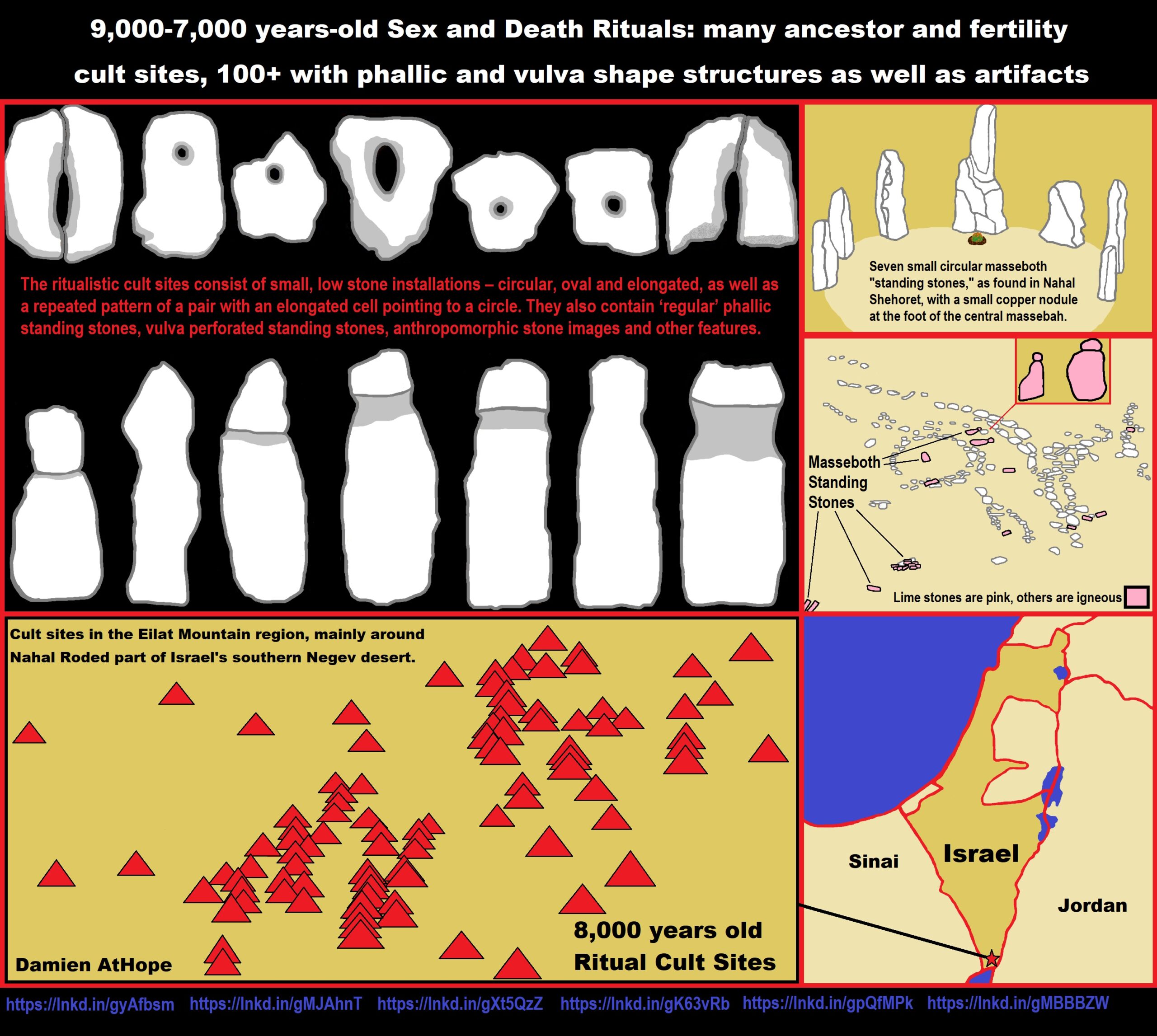
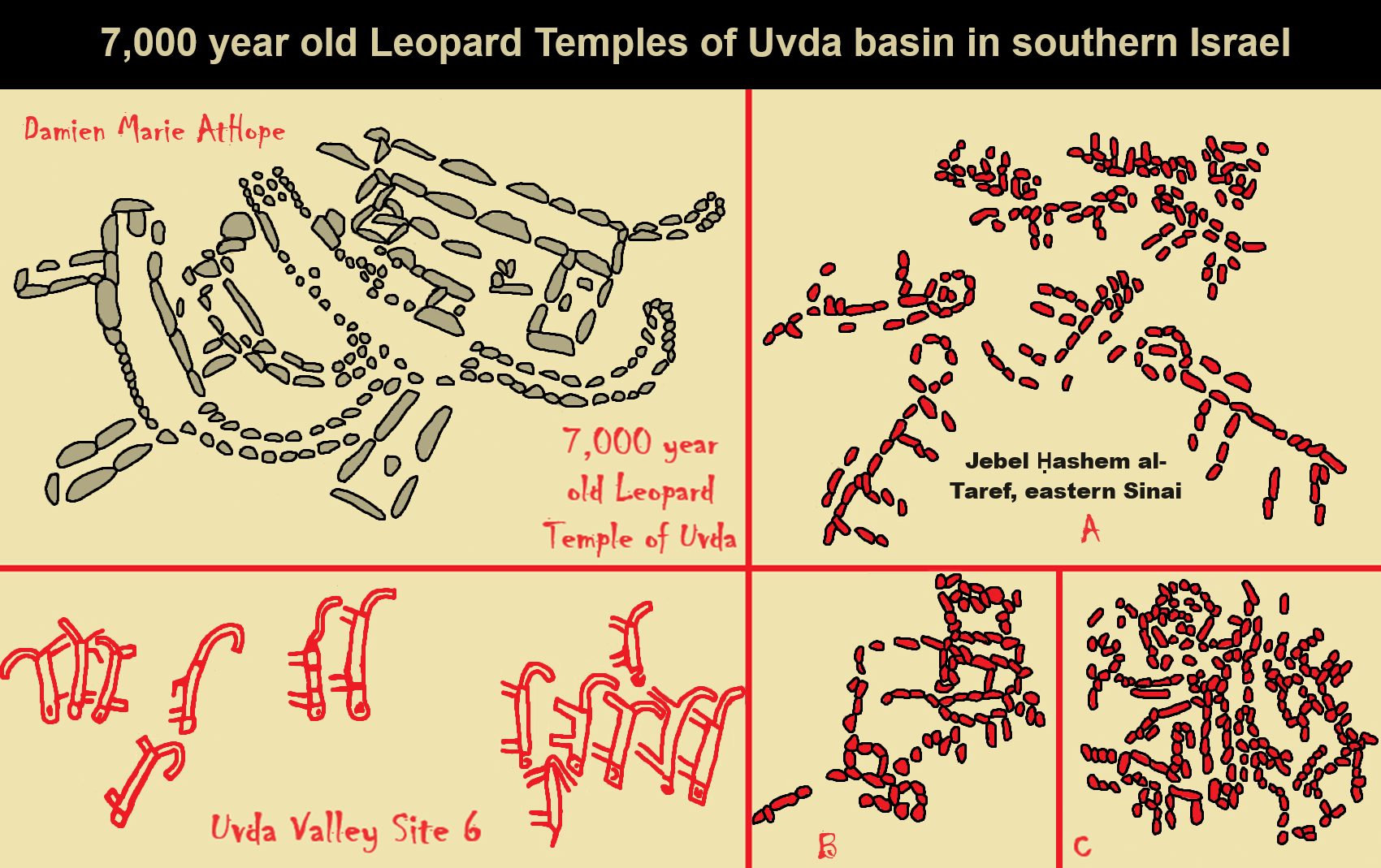
7,000-year-old Leopard Temples of Uvda basin in southern Israel
The 7,000 year old Masseboth Leopard Temple of Uvda
“7,000-year-old Leopard Temple of Uvda, in the Uvda basin in the desert of southern Israel. Uvda (Hebrew: עובדה) is the name of a region in the southern Negev desert, directly north of Eilat. The name derives from the Hebrew word uvda (meaning fact). The Uvda Valley is known for the 7000-year-old Leopard Temple archaeological site. They also began to worship something, perhaps the sun, perhaps their own ancestors, and intriguingly, perhaps the local scourge, the wild leopard.” ref, ref
“Uvda Valley Site 6, “stone drawings” of 15 leopards and one oryx, next to an open-air sanctuary, a vertical view (small stones indicate reconstruction).” ref
“Jebel Ḥashem al-Taref, eastern Sinai, three examples of “stone drawings” built next to pairs of open-air sanctuaries: (a) Excavated; (b,c) Unexcavated, dark stones—vertically set, light stones—fallen. Radiometric dates available to date from open sanctuaries are of the 6th and 5th millennia BCE. Nevertheless, Pre-Pottery Neolithic B flint items were also found in some of them (8th–7th millennia BCE), while other finds indicate continuation through the third millennium BCE, even the early second (Middle Bronze Age).” ref
“All open sanctuaries were built next to ancient roads (Figure 21c and Figure 27), while clusters of sanctuaries were built next to road junctions, for example, a cluster of 33 open sanctuaries near Jebel Ḥashem al-Taref in Sinai, 35 km west of Eilat; 4 pairs of sanctuaries at Ramat Saharonim; and 28 sanctuaries near Har Tzuriʻaz, in the southern Negev. Some sanctuaries were built in burial sites, also located next to ancient roads and road junctions.” ref
“This is also the female’s position in the drawing of a couple from Kuntilat ʻAjrud (Figure 17), slightly behind the male, presented as standing on a higher-like level, and her right leg is hidden behind the male’s left leg. Many open sanctuaries are circular, (Figure 21, Figure 28, and Figure 33). Most of them are 6–18 m in diameter, but tiny circular sanctuaries are also known, ca. 3 m in diameter (Figure 33), as well as large circular cult enclosures up to 70 m in diameter (Figure 33b). Stone alignments are attached to most of the circular sanctuaries, mainly in the form of “ladders,” which are chains of square cells made of a single line of stones or of small flagstones set vertically into the ground (Figure 34 and Figure 36). Their length ranges from a few meters to 78 m, and they present one of the combination of lines and circles.” ref
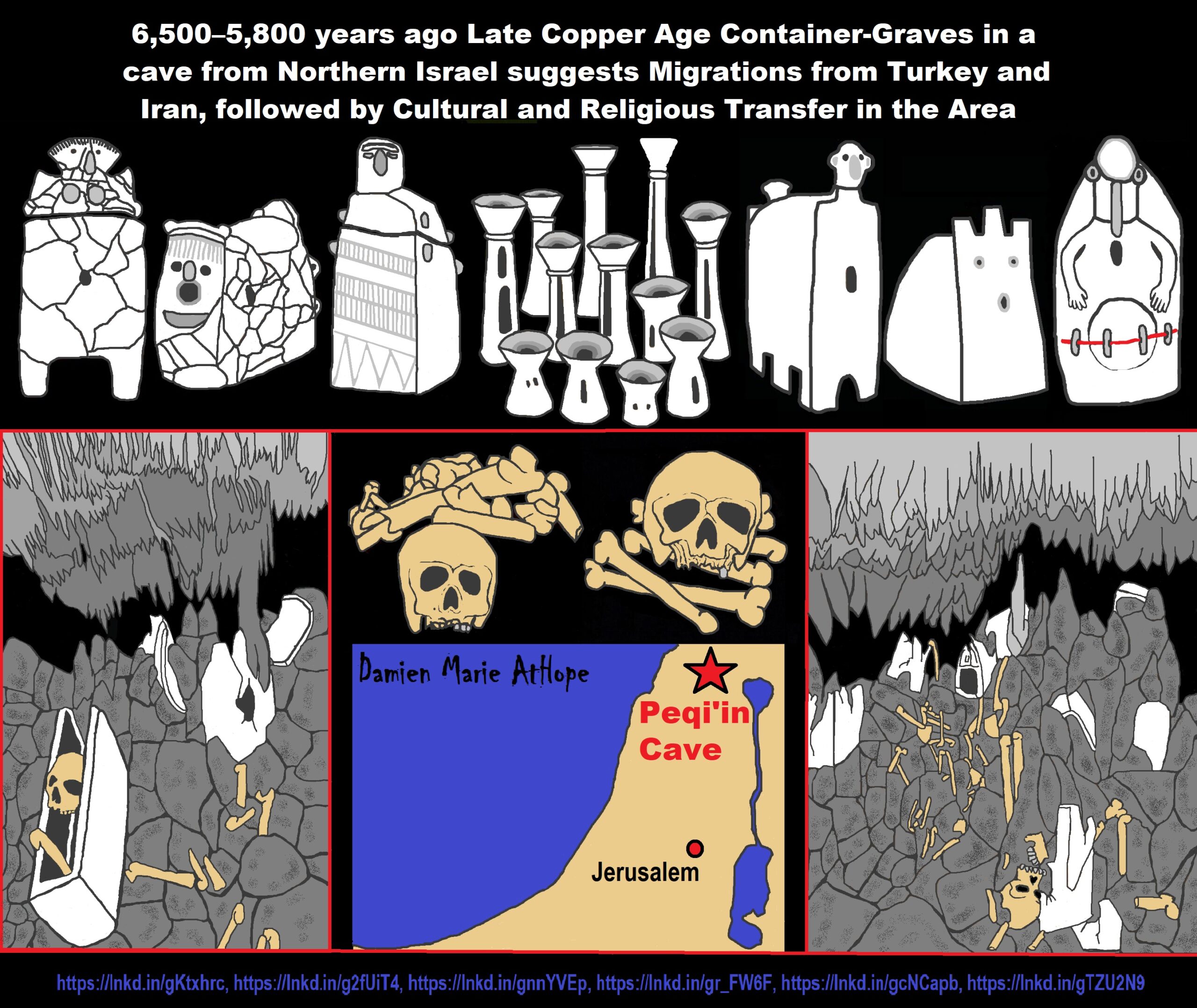
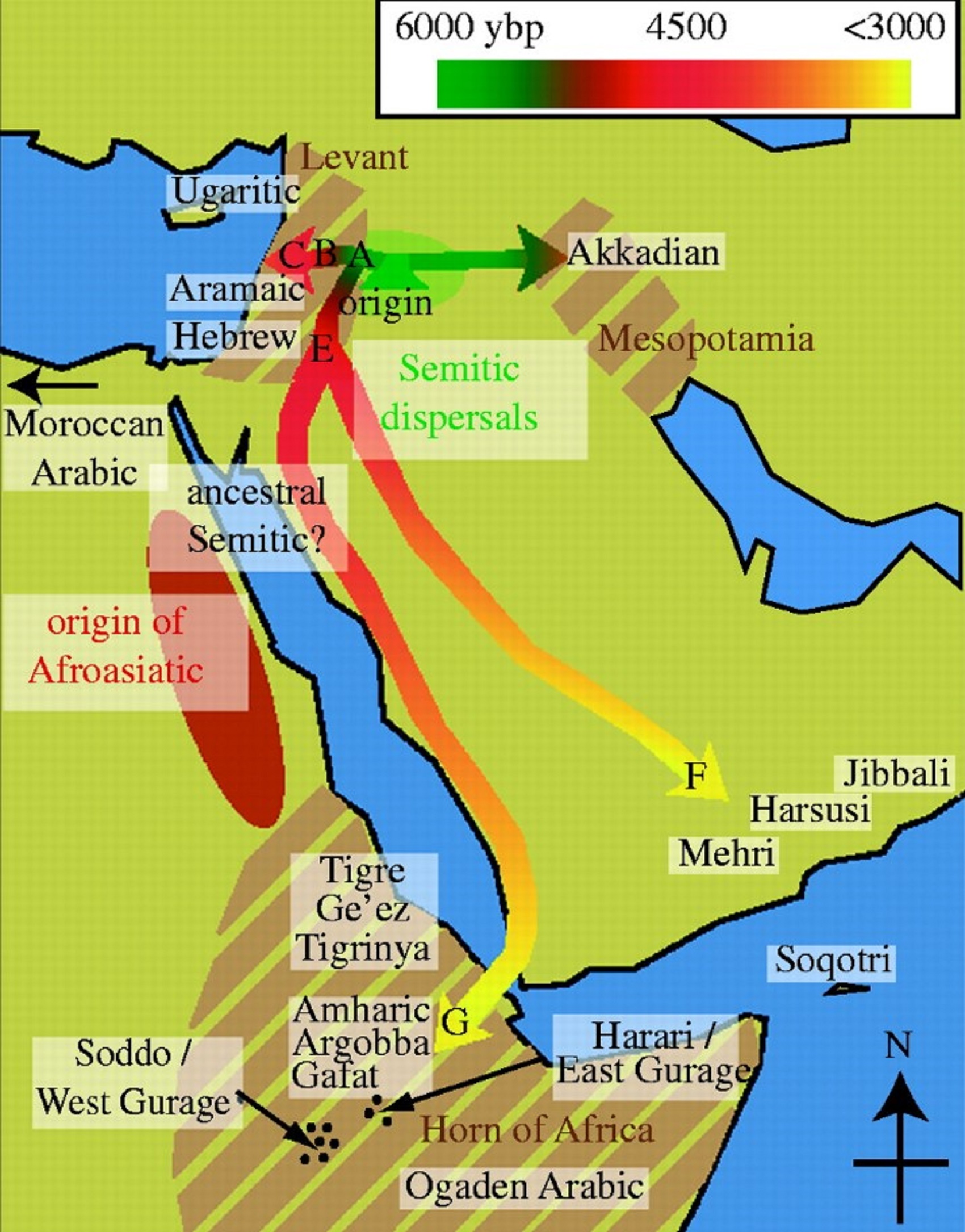
Proto-Semitic dates to ca. 4500–3500 BCE or around 6,500 to 5,500 years ago.
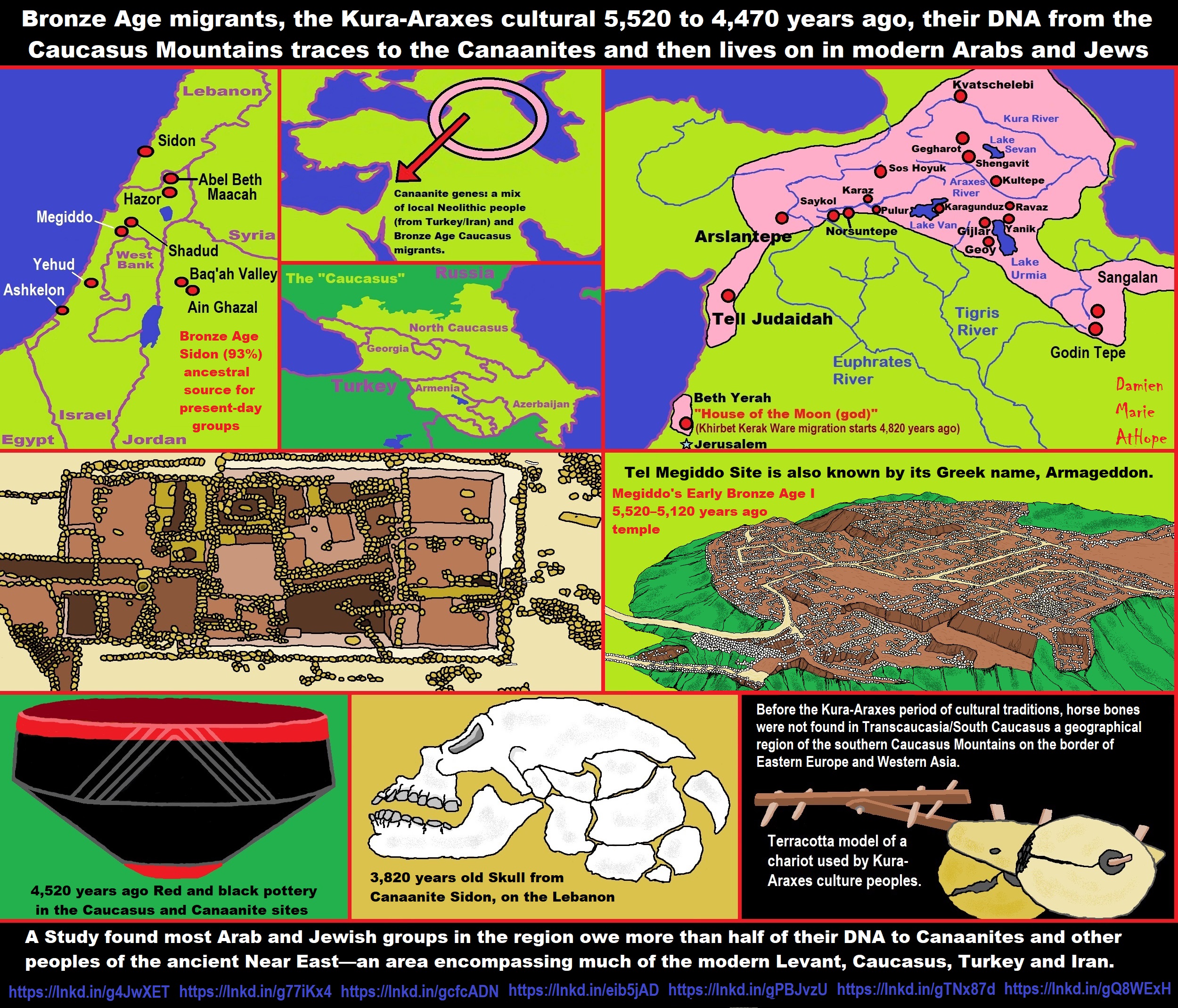
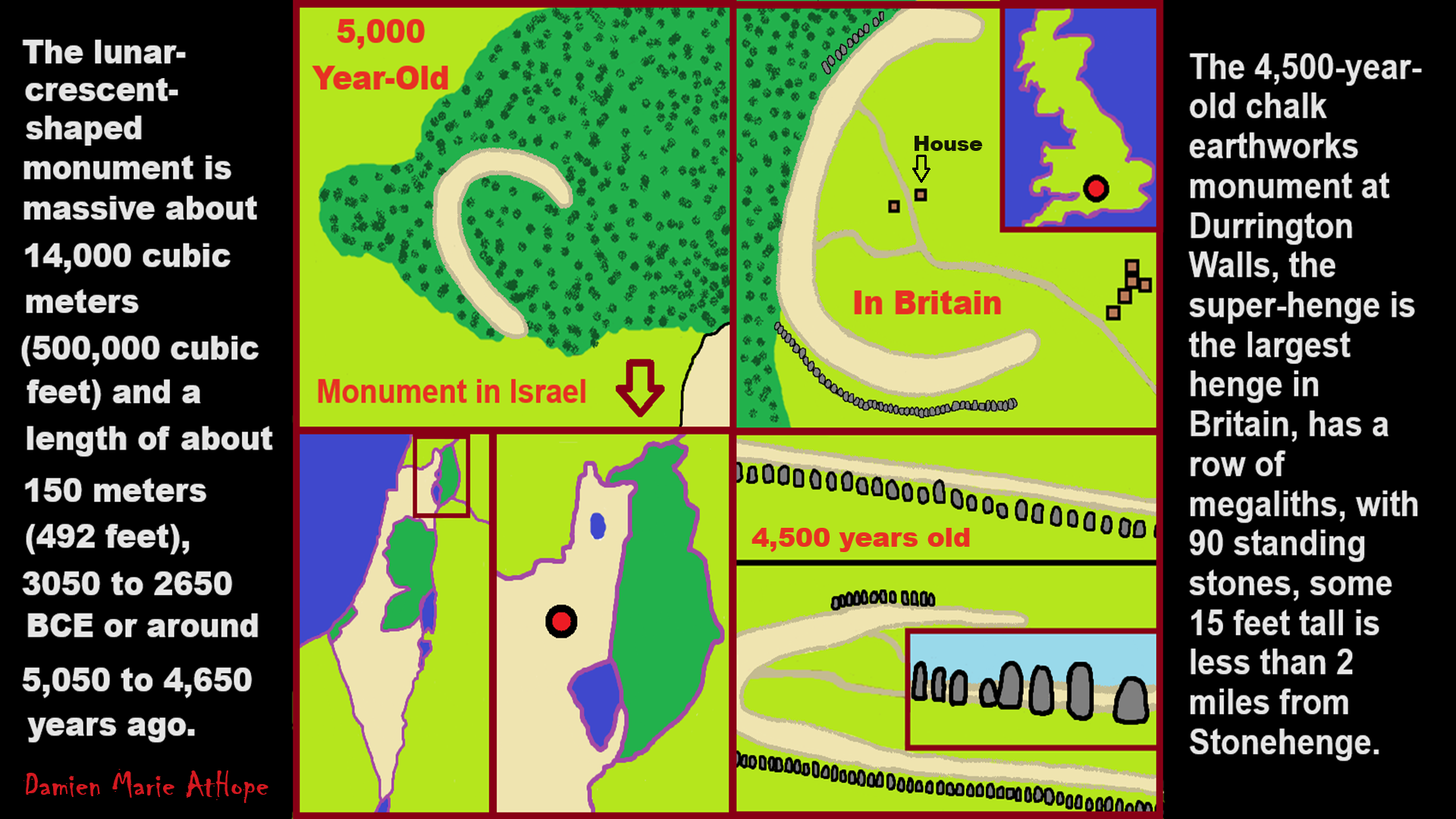
The lunar-crescent-shaped monument is massive at about 14,000 cubic meters (500,000 cubic feet) and has a length of about 150 meters (492 feet), 3050 to 2650 BCE, or around 5,050 to 4,650 years ago.
The 4,500-year-old chalk earthworks monument at Durrington Walls, the super-henge is the largest henge in Britain, has a row of megaliths, with 90 standing stones, some 15 feet tall, is less than 2 miles from Stonehenge.
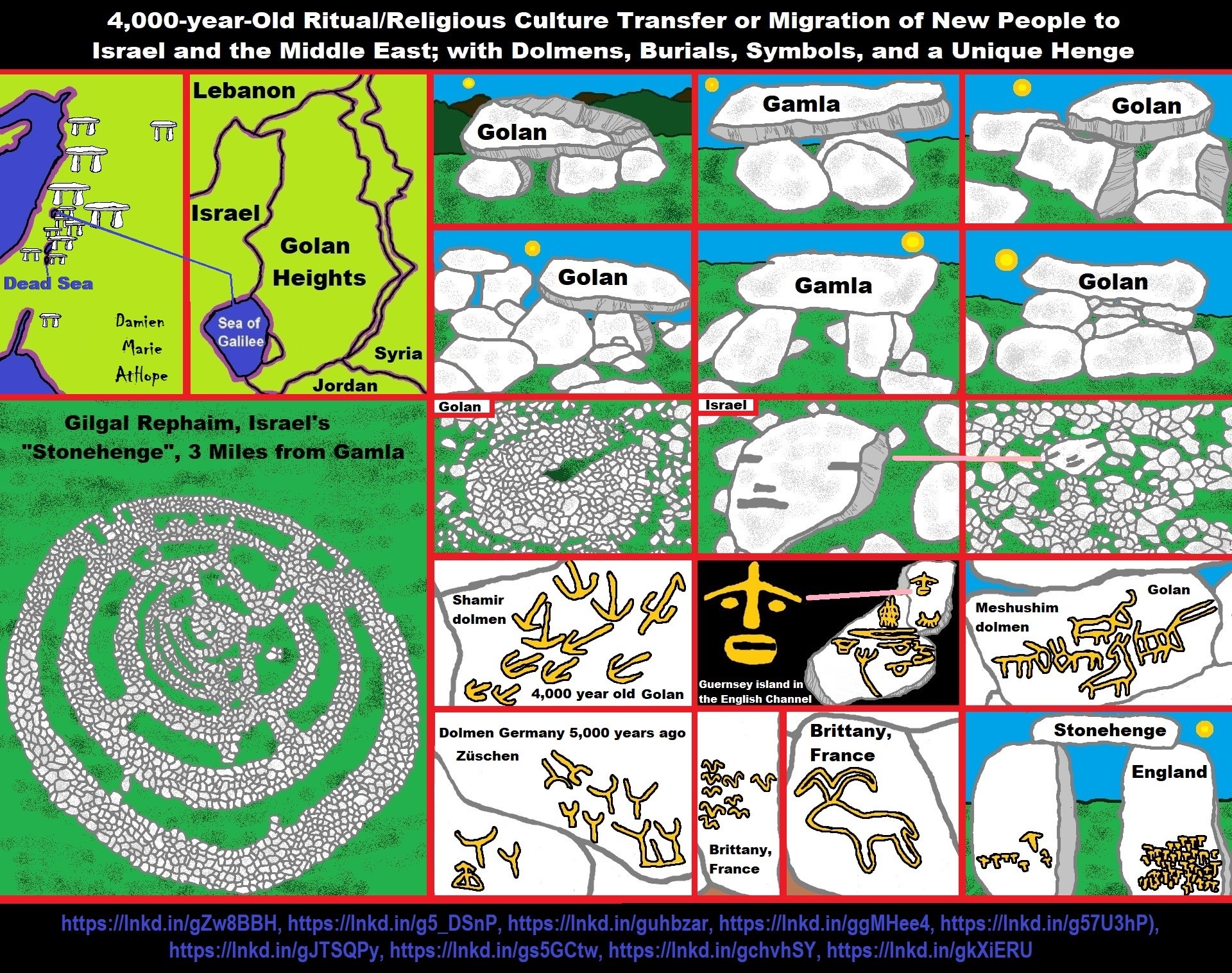
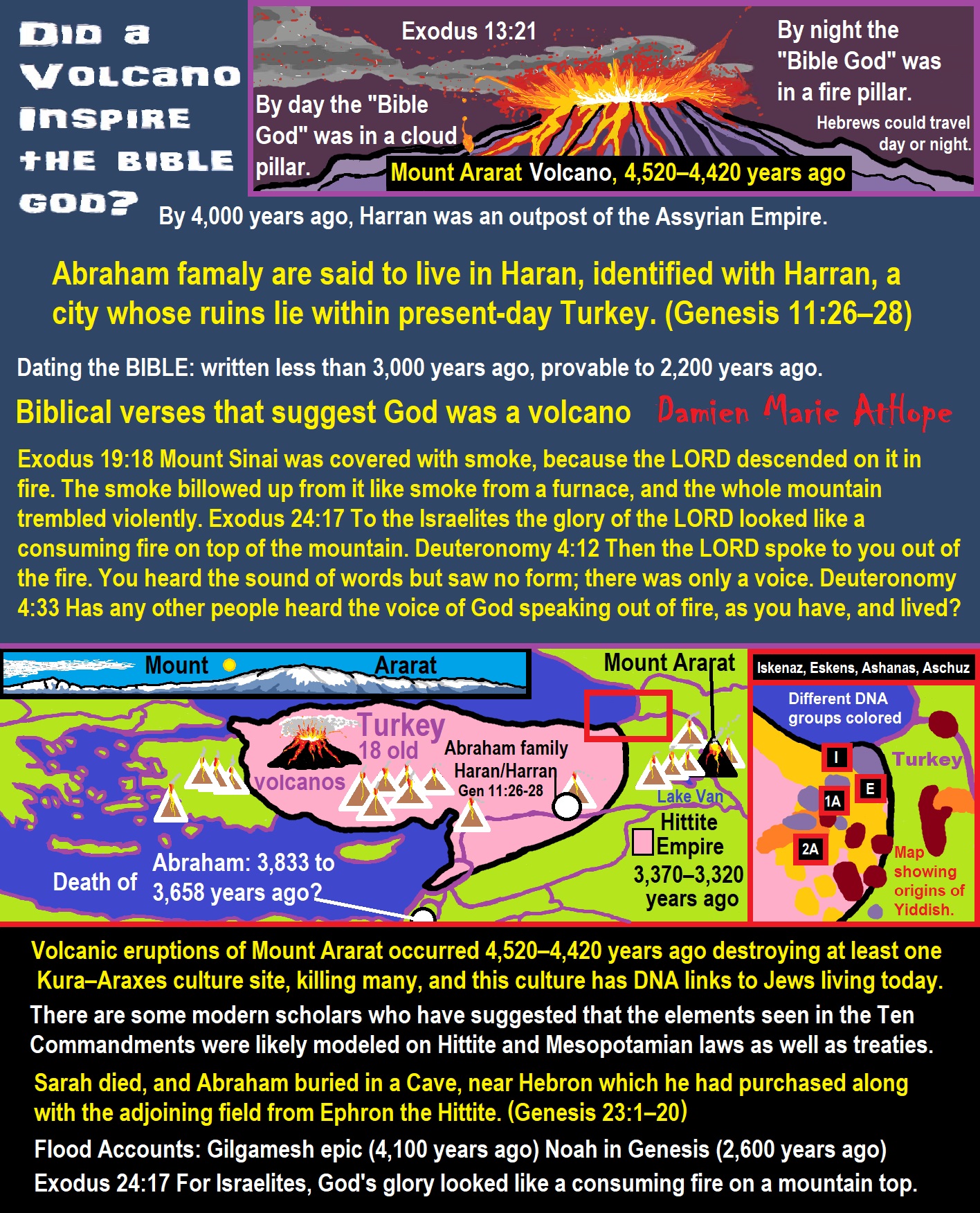
ref, ref, ref, ref, ref, ref, ref, ref, ref, ref, ref, ref, ref
By day the LORD went ahead of them in a pillar of cloud to guide them on their way and by night in a pillar of fire to give them light, so that they could travel by day or night.
- By day the “Bible God” was in a cloud pillar.
- By night the “Bible God” was in a fire pillar.
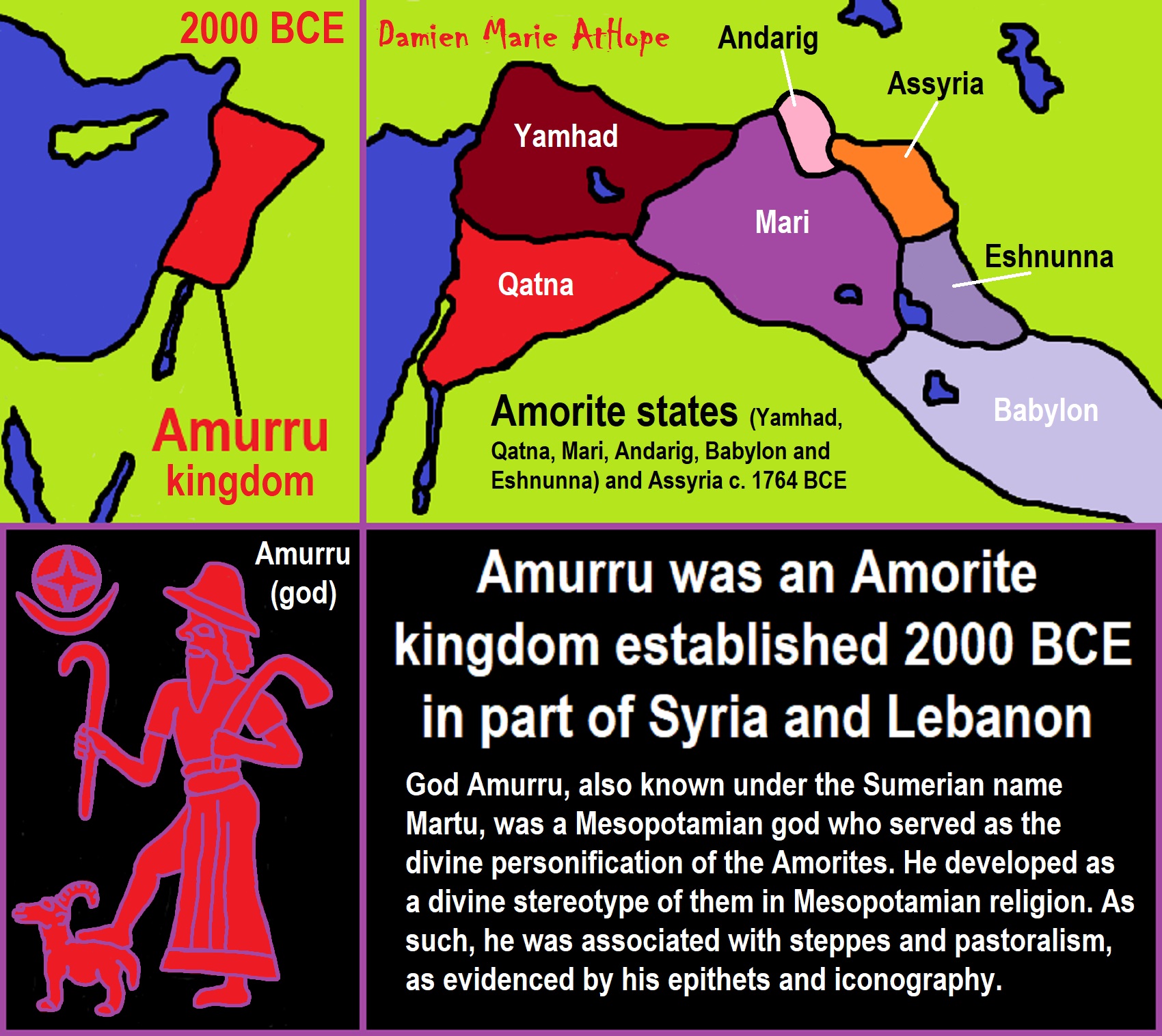
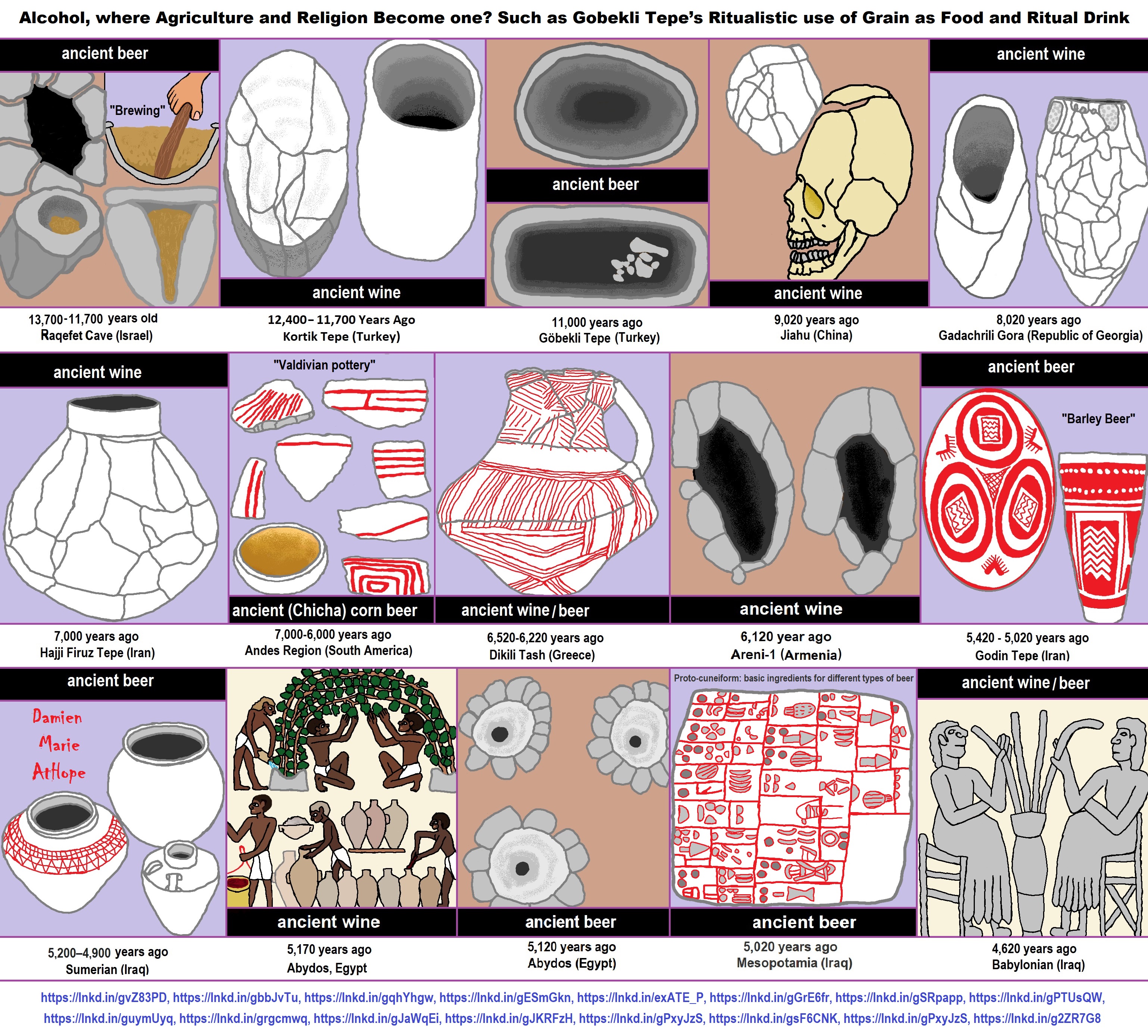
ref, ref, ref, ref, ref, ref, ref, ref, ref, ref, ref, ref, ref, ref, ref
Raqefet Cave
13,000-year-old stone mortars offers the earliest known physical evidence of an extensive ancient beer-brewing operation.
“The find comes on the heels of a July report that archaeologists working in northeastern Jordan discovered the charred remains of bread baked by Natufians some 11,600 to 14,600 years ago. According to the Stanford scientists, the ancient beer residue comes from 11,700 to 13,700 years old. Through laboratory analysis, other archaeological evidence found in the cave, and the wear of the stones, the team discovered that the ancient Natufians used species from seven plant families, “including wheat or barley, oat, legumes and bast fibers (including flax),” according to the article. “They packed plant-foods, including malted wheat/barley, in fiber-made containers and stored them in boulder mortars. They used bedrock mortars for pounding and cooking plant-foods, including brewing wheat/barley-based beer likely served in ritual feasts ca. 13,000 years ago,” the scientists write. “It has long been speculated that the thirst for beer may have been the stimulus behind cereal domestication, which led to a major social-technological change in human history; but this hypothesis has been highly controversial,” the Stanford authors say. “We report here of the earliest archaeological evidence for cereal-based beer brewing by a semi-sedentary, foraging people.” ref
“Beer making was an integral part of rituals and feasting, a social regulatory mechanism in hierarchical societies,” said Stanford’s Wang. The Raqefet Cave discovery of the first man-made alcohol production, the cave also provides one of the earliest pieces of evidence of the use of flower beds on gravesites, discovered under human skeletons. “The Natufian remains in Raqefet Cave never stop surprising us,” co-author Prof. Dani Nadel, of the University of Haifa’s Zinman Institute of Archaeology, said in a press release. “We exposed a Natufian burial area with about 30 individuals, a wealth of small finds such as flint tools, animal bones and ground stone implements, and about 100 stone mortars and cupmarks. Some of the skeletons are well-preserved and provided direct dates and even human DNA, and we have evidence for flower burials and wakes by the graves.” ref
“And now, with the production of beer, the Raqefet Cave remains provide a very vivid and colorful picture of Natufian lifeways, their technological capabilities, and inventions,” he said. Stanford’s Liu posited that the beer production was of a religious nature because its production was found near a graveyard. “This discovery indicates that making alcohol was not necessarily a result of agricultural surplus production, but it was developed for ritual purposes and spiritual needs, at least to some extent, prior to agriculture,” she said. “Alcohol making and food storage were among the major technological innovations that eventually led to the development of civilizations in the world, and archaeological science is a powerful means to help reveal their origins and decode their contents,” said Liu. “We are excited to have the opportunity to present our findings, which shed new light on a deeper history of human society.” ref
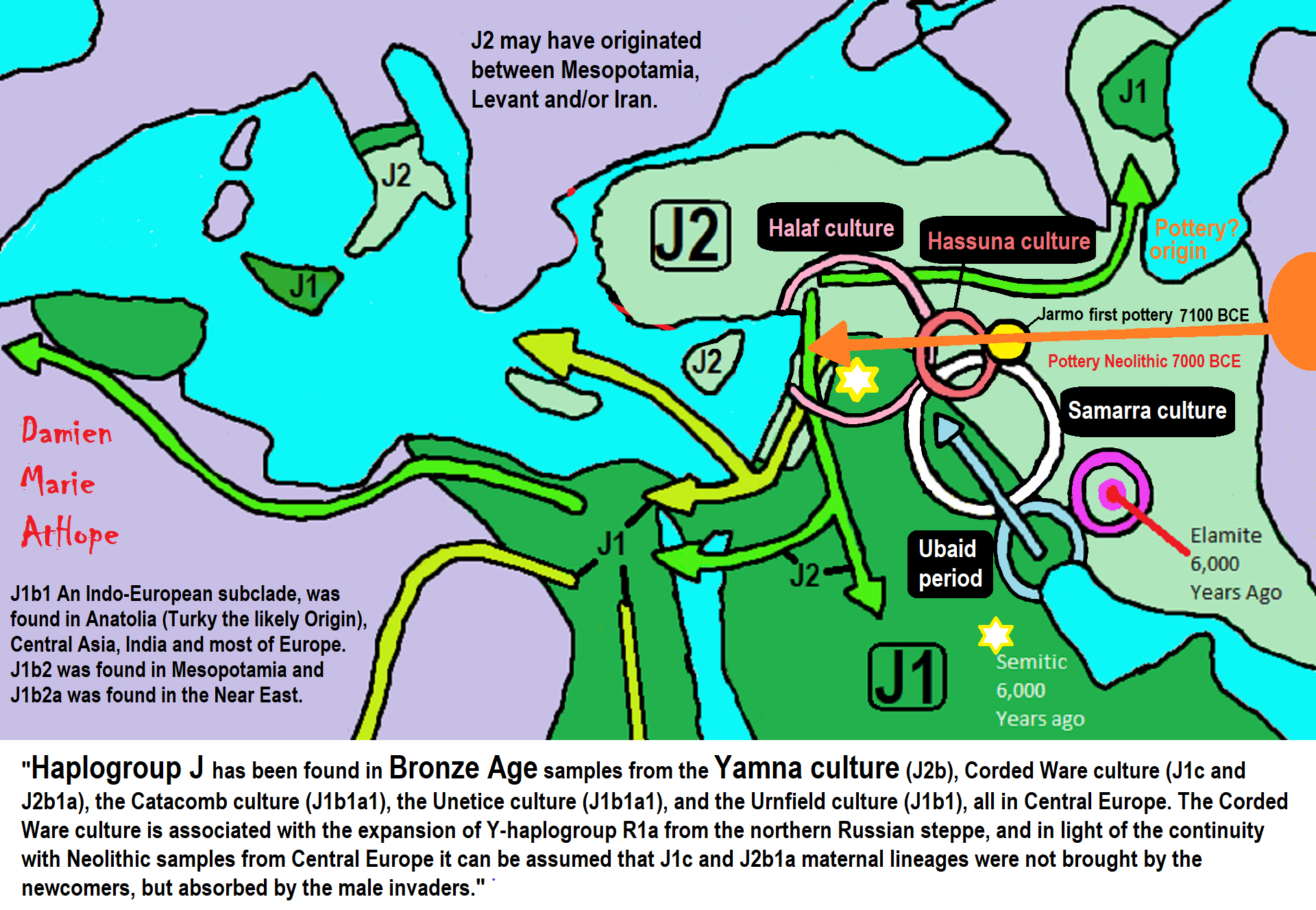
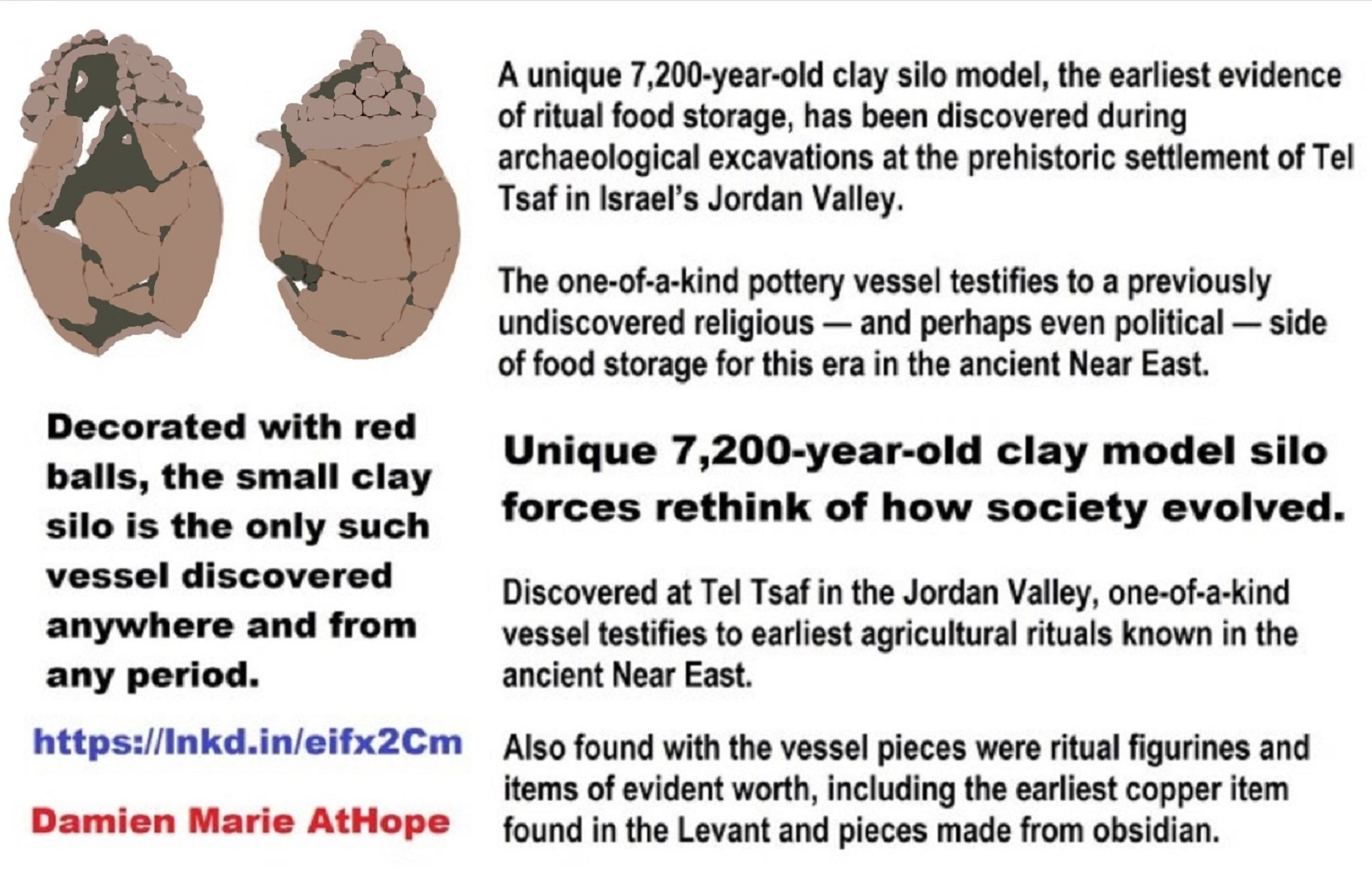
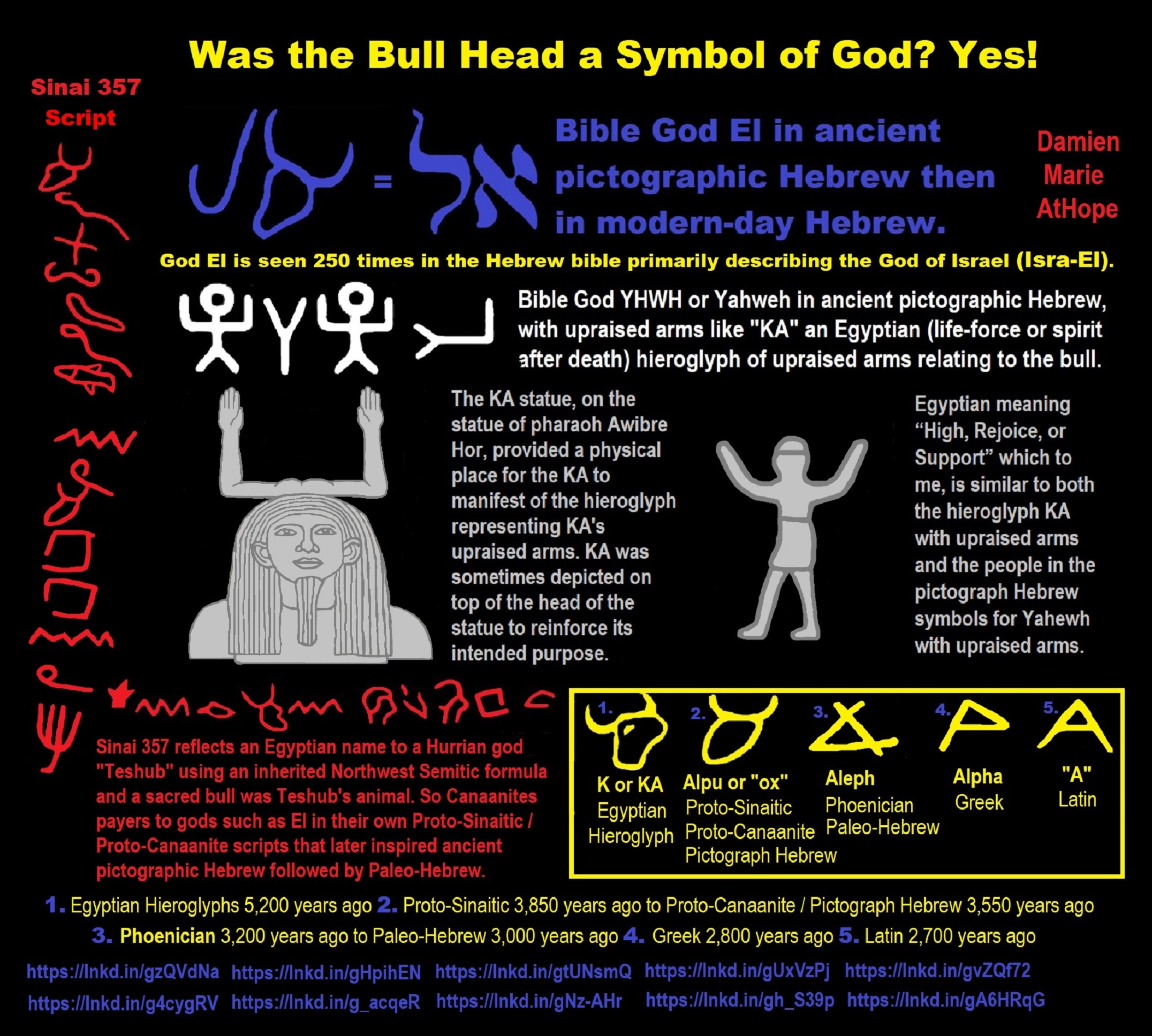
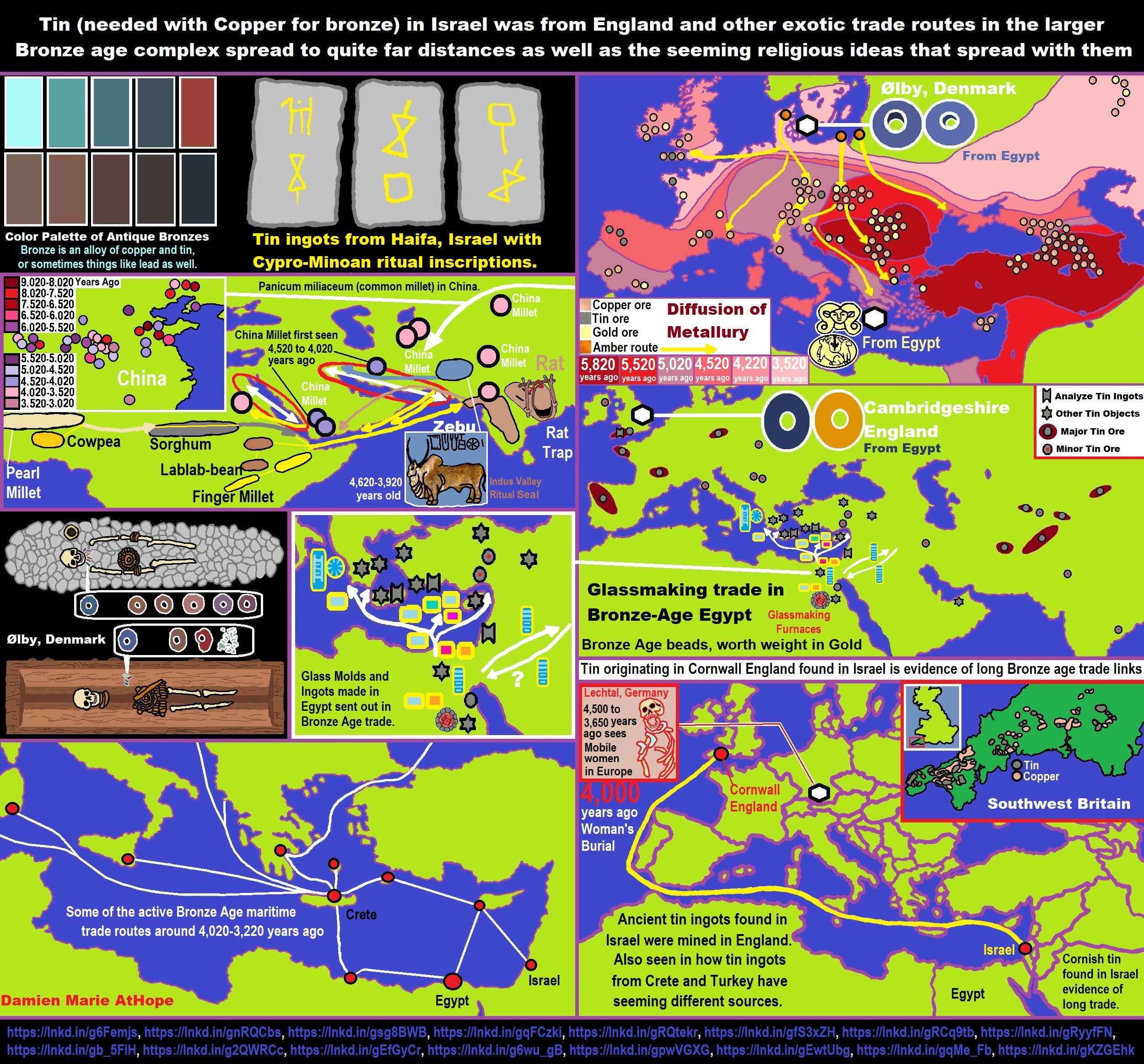
Israel 13,000 years ago?
A 13,000-year-old brewery found in Israel, the consumption of fermented and alcoholic beverages is one of the most prevalent human behaviors, but the time and cultural context of its origins remain unclear but it is usually associated with fermenting domesticated species in agricultural societies, such as ancient Egypt, Mesopotamia, China, and South America. It has long been speculated that humans’ thirst for beer may have been the stimulus behind cereal domestication, and some scientists have attributed this invention to the Natufians, a Neolithic culture that inhabited the Levant region of the eastern Mediterranean from about 15,000 to 11,700 years ago. And as stated by Stanford University researcher Dr. Li Liu, “Alcohol making and food storage were among the major technological innovations that eventually led to the development of civilizations in the world, and archaeological science is a powerful means to help reveal their origins and decode their contents.” The archaeologists analyzed residues from 13,000-year-old stone mortars found in Raqefet Cave, a Natufian burial cave site located near what is now Haifa, Israel. Their analysis confirmed that these mortars were used for brewing of wheat/barley, as well as for food storage. A Natufian burial area was found with about 30 individuals; a wealth of small finds such as flint tools, animal bones and ground stone implements, and about 100 stone mortars and cupmarks. The Natufians exploited at least seven plant types associated with the mortars, including wheat or barley, oat, legumes and bast fibers (including flax). They used bedrock mortars for pounding and cooking plant-foods, and for brewing wheat/barley-based beer, likely served in ritual feasts 13,000 years ago. Jiajing Wang, a doctoral student at Stanford University said, “Ancient beer is far from what we drink today. It was most likely a multi-ingredient concoction like porridge or thin gruel.” It is presumed that beer brewing may have been, at least in part, an underlying motivation to cultivate cereals in the southern Levant, supporting the beer hypothesis proposed by archaeologists more than six decades ago. http://www.sci-news.com/archaeology/raqefet-cave-brewery-06412.html
Israel 12,000 years ago?
Shaman burial in Israel 12,000 years ago and the Shamanism Phenomena. Evidence of a ritual feast at a 12,000-year-old archaeological site in northern Israel. No houses, fireplaces or cooking areas were recovered. Instead, the cave yielded the skeletal remains of at least 28 individuals interred in three pits and two small structures. One of these structures contained the complete skeleton of an older woman, who we interpreted as a shaman based on her special treatment at death. Her grave stood apart due to its fine construction—the walls were plastered with clay and inset with flat stone slabs. Even more remarkable was the eclectic array of animal body parts buried alongside of her. The pelvis of a leopard, the wing tip of an eagle, the skulls of two martens and many other unusual body parts surrounded her skeleton. The butchered remnants of more than 90 tortoises buried in the grave and the leftovers of at least three wild cattle deposited in a second adjacent depression excavated in the cave floor represent the remains of a funeral feast. The outstanding preservation of the grave enabled us to detect multiple phases of a ritual performance that included the consumption of the feast, the burial of the woman, and the filling of the grave in several stages, including the intentional deposition of garbage from the feast. https://www.newsweek.com/ancient-israel-ritual-site-12000-year-old-skeletons-earliest-evidence-holiday-753861
Israel 11,000 years ago?
While transiting from hunting to farming, prehistoric people were strip-mining Kaizer Hill for flint and limestone, say, archaeologists. An 11,000-year old quarry where prehistoric people sourced the flint for their arrows and spearheads and limestone too has been identified between Jerusalem and Tel Aviv. The works provide evidence that well before prehistoric humans settled down, they were capable of manufacturing on what we can only call an industrial scale. The quarry, found on the 300 meter-high hill Kaizer Hill on the outskirts of Modiin, is the earliest known Neolithic quarry in the southern Levant, though other prehistoric quarries have been found in the area, including an evidently much older one from the lower-middle Paleolithic period, in Sde Ilan. The marks on Kaizer Hill’s bedrock had been recognized as manmade in the past. The innovation now is reinterpreting “cup-marks” in the bedrock. They aren’t some remnants or mortars carved into the rock, apparently, but were caused by the Neolithic men digging out suitable rocks. https://www.haaretz.com/archaeology/11-000-year-old-neolithic-quarry-found-1.5426850
Israel 10,000 years ago?
Not by Bread alone, Neolithic People in Israel first to farm Fava Beans, 10,000 years ago. Heaps of charred beans found in northern Israel prove that prehistoric humans grew legumes as a staple crop before they cultivated grains. Israelis mix them into their hummus. Egyptians eat them mashed for breakfast. It turns out both are following a proud tradition: A new study strongly suggests that humans living in the Galilee first domesticated fava beans more than 10,000 years ago, eating them as a staple well before grain began to be cultivated in the area. Fava beans, also known as broad beans, are the only crop known to have been domesticated in what is today Israel. https://www.haaretz.com/archaeology/fava-beans-farmed-in-israel-10k-years-ago-1.5408015
Israel 9,000 years ago?
A sprawling, prosperous Neolithic village dated to 9,000 years ago has been discovered in Motza, at the foot of the Jerusalem hills. The site, featuring dozens of stone houses, grander buildings that may have been temples, and skeletal remains were discovered serendipitously during works ahead of building a new road. People were still transitioning from hunting-gathering to farming when this vast town with stone houses and red-floored gathering sites arose by Jerusalem. Red temple floors, it seems the Neolithic villagers made their stone bricks crudely, using flint tools, and apparently rammed wooden stakes into cracks in the natural rock to break it. The stone bricks were cemented with mud, which means that every time the winter rainy season came around, the walls would need maintenance. The town was built at the confluence of two streams. These village builders 9,000 years ago were among the early adopters of a settled lifestyle. Though some stabs at cultivation clearly began in the Levant at least 23,000 years ago, it would take millennia before people transitioned more firmly from hunting and gathering for subsistence to farming. The Motza site isn’t the only huge settlement from that time, though there are others, mainly in Jordan. https://www.haaretz.com/israel-news/.premium.MAGAZINE-9-000-year-old-neolithic-city-discovered-in-jerusalem-valley-1.6271740
Israel 8,000 years ago?
Around 8,000-year-old fertility, stone works found in Israel linked to ancestor cult. About 8,000 years ago, Stone Age people built a large number of what seem to be ancestor and fertility cult sites in the Negev Desert in Israel. A new archaeological survey of 95 sites has turned up stones arranged to represent death, while vulva- and penis-shaped rocks and stone arrangements suggest fertility. In combination these death and sex arrangements relate to ancestor cults, the lead researcher said. Little is known of the spiritual and religious activities of the people of this region from the Neolithic. The main essence of the cult in these sites was for the ancestors, though with the ‘regular’ standing stones found in the sites, individual ones, pairs, triads, and groups of seven, may also indicate invocation to a complex pantheon with several ‘organic’ groups of deities which are later known from Near Eastern art, dedication inscriptions and mythological texts. Since the sites are dated long before the invention of writing, we have no way to know deities’ names, we only know which type of groups the standing stones represent, for example, a god and a goddess, a goddess and two young gods etc. https://www.ancient-origins.net/news-history-archaeology/8000-year-old-fertility-stone-works-found-israel-cult-020211
Israel 7,000 years ago?
Israeli archaeologists have unearthed a 7,000-year-old settlement in northern Jerusalem. excavation exposed two houses with well-preserved remains and floors containing pottery vessels, flint tools, and a basalt bowl. The items are representative of the early Chalcolithic period, beginning around 5,000 B.C. Similar developments have been found elsewhere in present-day Israel, but not in Jerusalem until this, seeming to express an established society. Very well organized settlement with cemeteries. The excavation covered an area of about 500 square feet. https://www.tweentribune.com/article/tween56/archaeologists-find-ancient-7000-year-old-settlement/?page=4
Israel 6,500–5,800 years ago?
6,500–5,800 years ago in Israel Late Chalcolithic (Copper Age) Period in the Southern Levant Seems to Express Northern Levant Migrations, Cultural and Religious Transfer. The Levant which may refer to Isreal in a common use way generally includes Cyprus, Syria, Israel, Jordan, Lebanon, Palestine and the Northern Sinai Peninsula. DNA evidence expresses waves of migration from Anatolia and the Zagros mountains (today’s Turkey and Iran) to the Levant helped develop the Chalcolithic culture that existed in Israel’s Upper Galilee region some 6,500 years ago. ref This was a time of great development along with the spread of agriculture from Western Asia throughout Southern and Central Europe. Urban cultures in Mesopotamia and Anatolia flourished, developing the wheel. Copper ornaments became more common, marking the beginning of the Chalcolithic. Animal husbandry spread throughout Eurasia, reaching China. World population grew slightly throughout the millennium, possibly from 5 to 7 million people. ref “After 10 years of research, we understand that Anatolia/Turkey, especially from the west, is part of the basis of all European peoples. Matching how all European cattle are all descended from Iranian cattle dispersed by farmer herders leaving Anatolia/Turkey.” – Joachim Burger – Anthropologist & Population Geneticist Johannes Gutenberg University, Mainz https://www.youtube.com/watch?v=I2vYr6gx56o&t=651s
Israel 5,000 years ago?
5,000 years ago, the Canaanites now generally recognize as Israel, Palestine, Lebanon, Syria, and Jordan. The Canaanites created the first alphabet, established colonies throughout the Mediterranean, and were mentioned many times in the Bible. But who were they and what ultimately happened to them? Were they annihilated like the Bible says? Over 90 percent of the genetic ancestry of present-day Lebanese was derived from the Canaanites referenced from the genomes of five Canaanite individuals who lived almost 4,000 years ago, one in a large jar burial along with genomes representing people from modern-day Lebanon, in addition a small proportion of Eurasian ancestry that may have arrived via conquests by distant populations such as the Assyrians, Persians, or Macedonians. An estimate that new Eurasian people mixed with the Canaanite population about 3,800 to 2,200 years ago at a time when there were many conquests of the region from outside. “The Bible reports the destruction of the Canaanite cities and the annihilation of its people; if true, the Canaanites could not have directly contributed genetically to present-day populations. However, no archaeological evidence has so far been found to support the widespread destruction of Canaanite cities between the Bronze and Iron Ages. We show that present-day Lebanese derive most of their ancestry from a Canaanite-related population, which therefore implies substantial genetic continuity in the Levant since at least the Bronze Age.” the study read. http://www.cell.com/ajhg/fulltext/S0002-9297(17)30276-8, https://www.sciencedaily.com/releases/2017/07/170727122039.htm
Israel 4,000 years ago?
A ceramic vessel bearing the sculpture of a pensive-looking figure, a 4,000-Year-Old ‘Thinker’ Sculpture found in the Israeli city of Yehud. It seems that at first the jug, which is typical of the period, was prepared, and afterward, the unique sculpture was added. Researchers discovered the vessel alongside other items, including arrowheads, an axe head, sheep bones, daggers and what appear to be donkey bones. These were likely funerary objects, originally buried alongside the body of an important person. Deeper excavations revealed artifacts dating back at least 6,000 years. These included pottery vessels, flint and basalt tools, and animal bones, according to the IAA. Researchers also found a Copper Age butter churn. Archaeologists discovered the unusual jug in fragments, and IAA conservators restored it. The neck of the jug provides the “seat” for the pensive figure, Itach said. The archaeologists said they aren’t sure whether the original potter made the figure or if some other artist decided to add an embellishment to the plain jug. The artifact comes from around 2000 B.C., the Middle Bronze Age in the Levant (the region including modern-day Israel and the eastern Mediterranean). According to the Metropolitan Museum of Art, this was a time when nomadic people called Amorites settled throughout the northern part of the region and when traders shuttled back and forth between the Levant and Egypt. https://www.livescience.com/56986-ancient-thinker-sculpture-uncovered-in-israel.html
Israel 3,000 years ago?
Signs of 3,000-year-old Oracle Cult in Ancient Israel. Abel Beth Maacah was famed in biblical times for conflict resolution: Now archaeologists have found a strange shrine that may have served the city’s ‘wise woman.’ Archaeologists have found a strange shrine that they think may have been associated with the “wise woman” of the city, mentioned in the bible. But rather than being just a clever elder – they suspect she may have fulfilled an oracular role. The tell in which Abel Beth Maacah was identified lies just south of Israel’s border with Lebanon, near the town of Metulla. The archaeological mound, called Tell Abil el-Qameh, covers a huge 100 dunams in area. In fact, archaeologists have uncovered evidence for a succession of religious cult practices spanning some 300 years. Numerous shrines were found, which, as is the norm for ancient spots of worship, were ornate in some fashion or other. But among the discoveries in recent excavations was an unadorned shrine, the only one of its type found in the town. The reasons to associate the bare shrine with an oracle stem from puzzling biblical mentions of a “wise woman”. The archaeologists now suspect that at least in the case of Abel Beth Maacah, she was a local version of the divine oracles known from other cultures around the Mediterranean. Various ruins found during the latest excavations, roughly dated to the second and first millennia B.C.E. Aside from the shrine, the archaeologists found a large building complex dating to about 3,000 years ago that served diverse industrial, administrative and religious functions. https://www.haaretz.com/archaeology/.premium.MAGAZINE-signs-of-3-000-year-old-oracle-cult-found-in-israel-archaeology-1.6472911
Adapted from (Living Religions: A Brief Introduction by Mary Pat Fisher)
http://books.google.com/books/about/Living_Religions.html?id=ITnlAAAAMAAJ
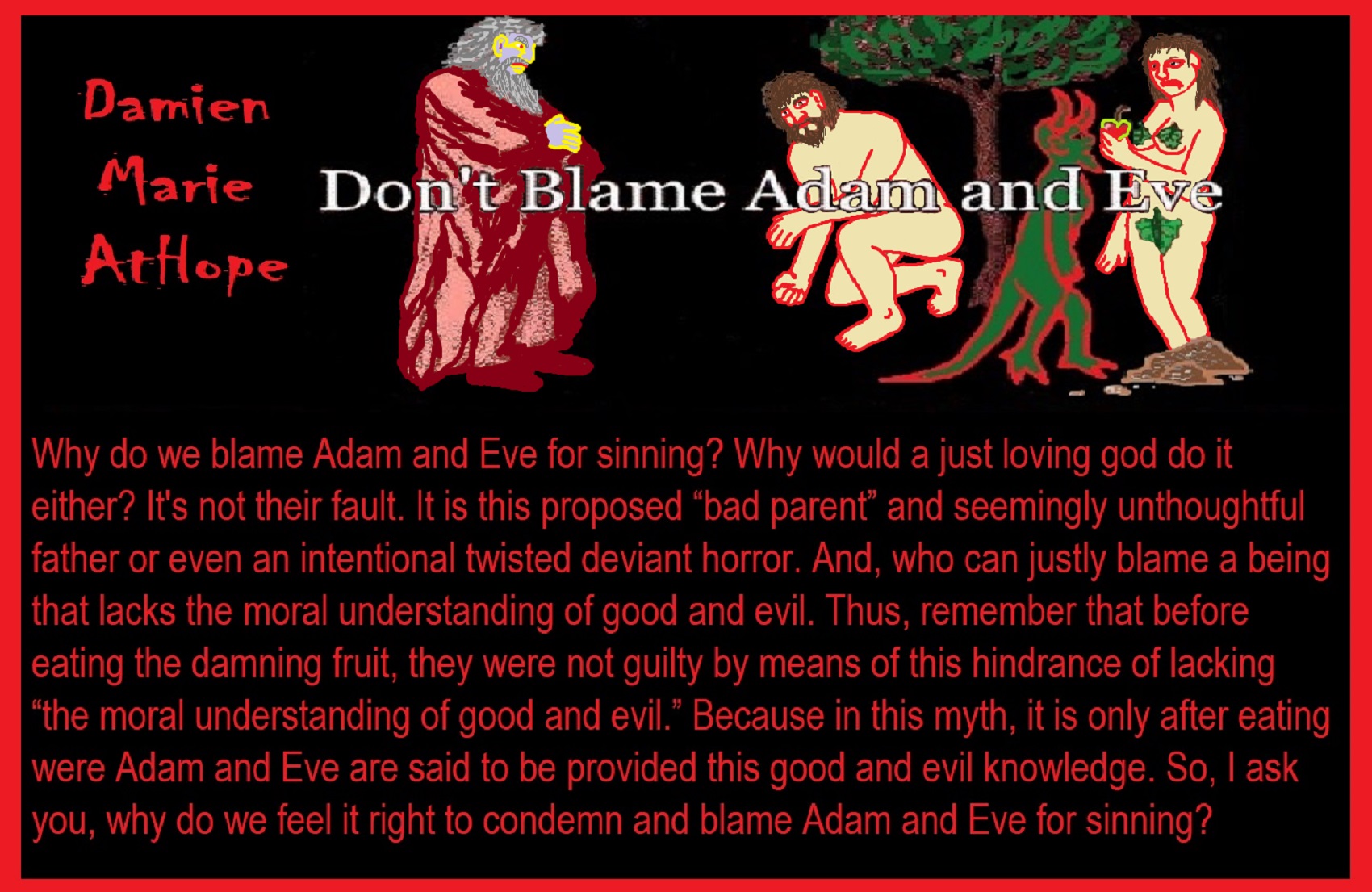
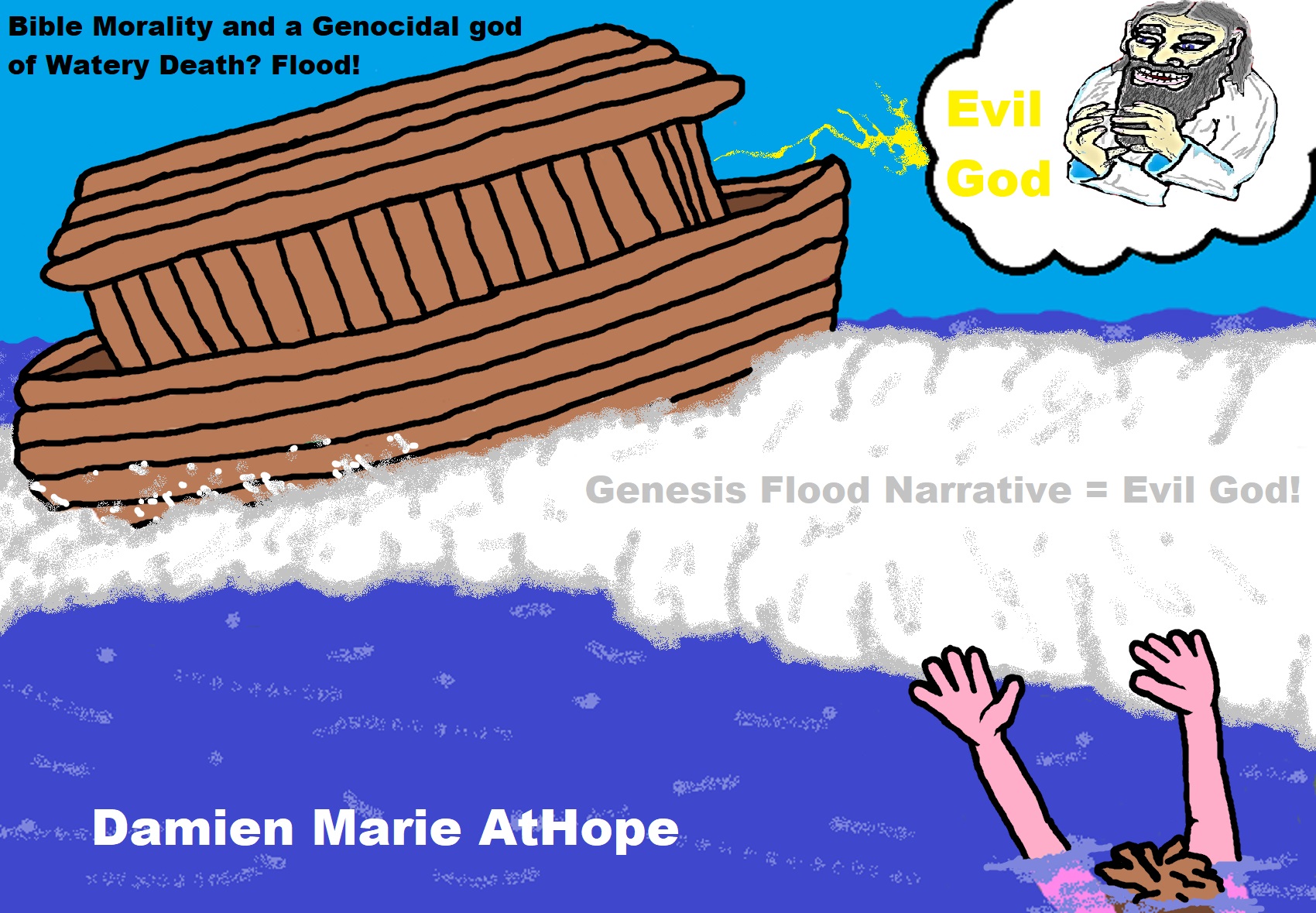



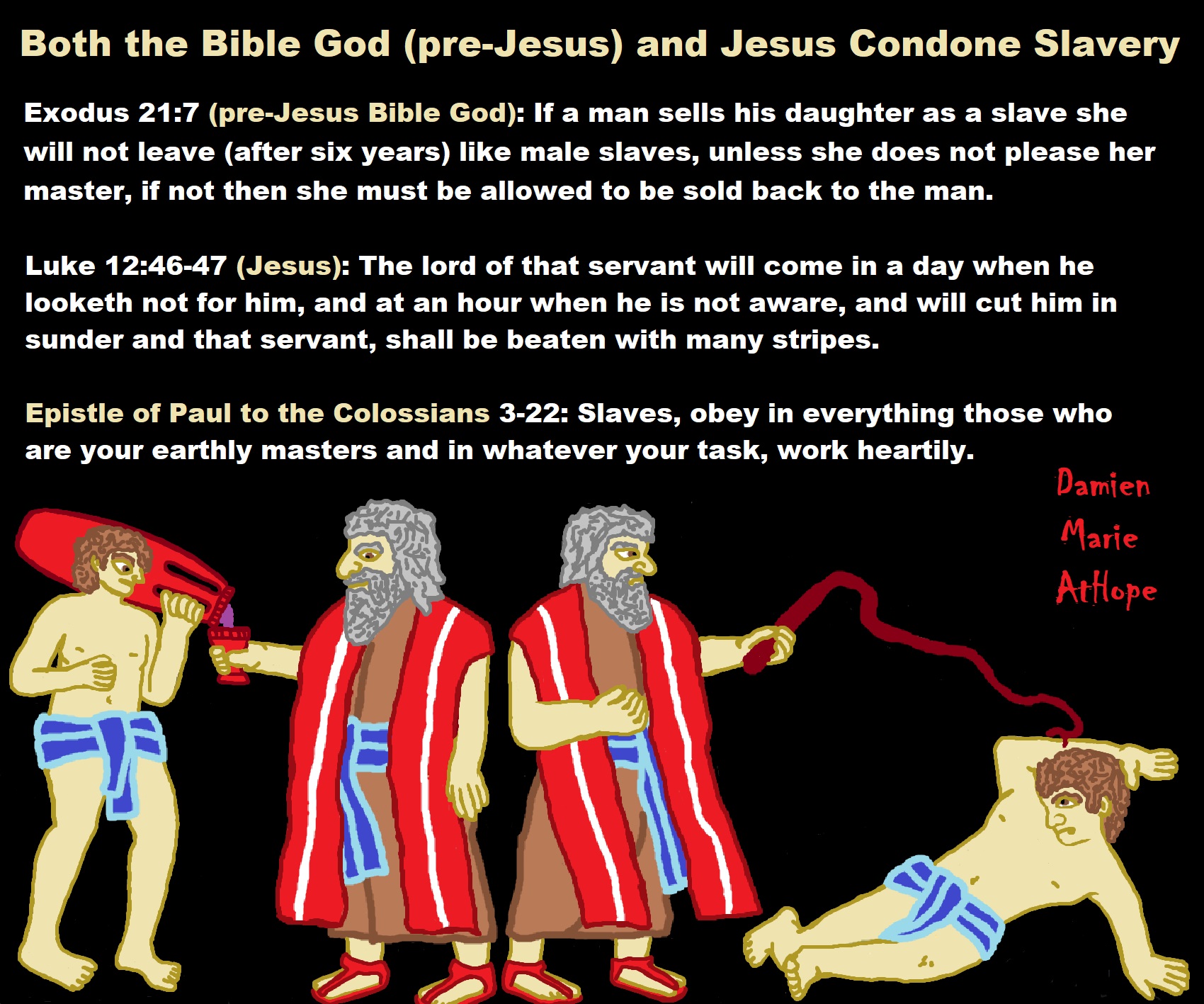
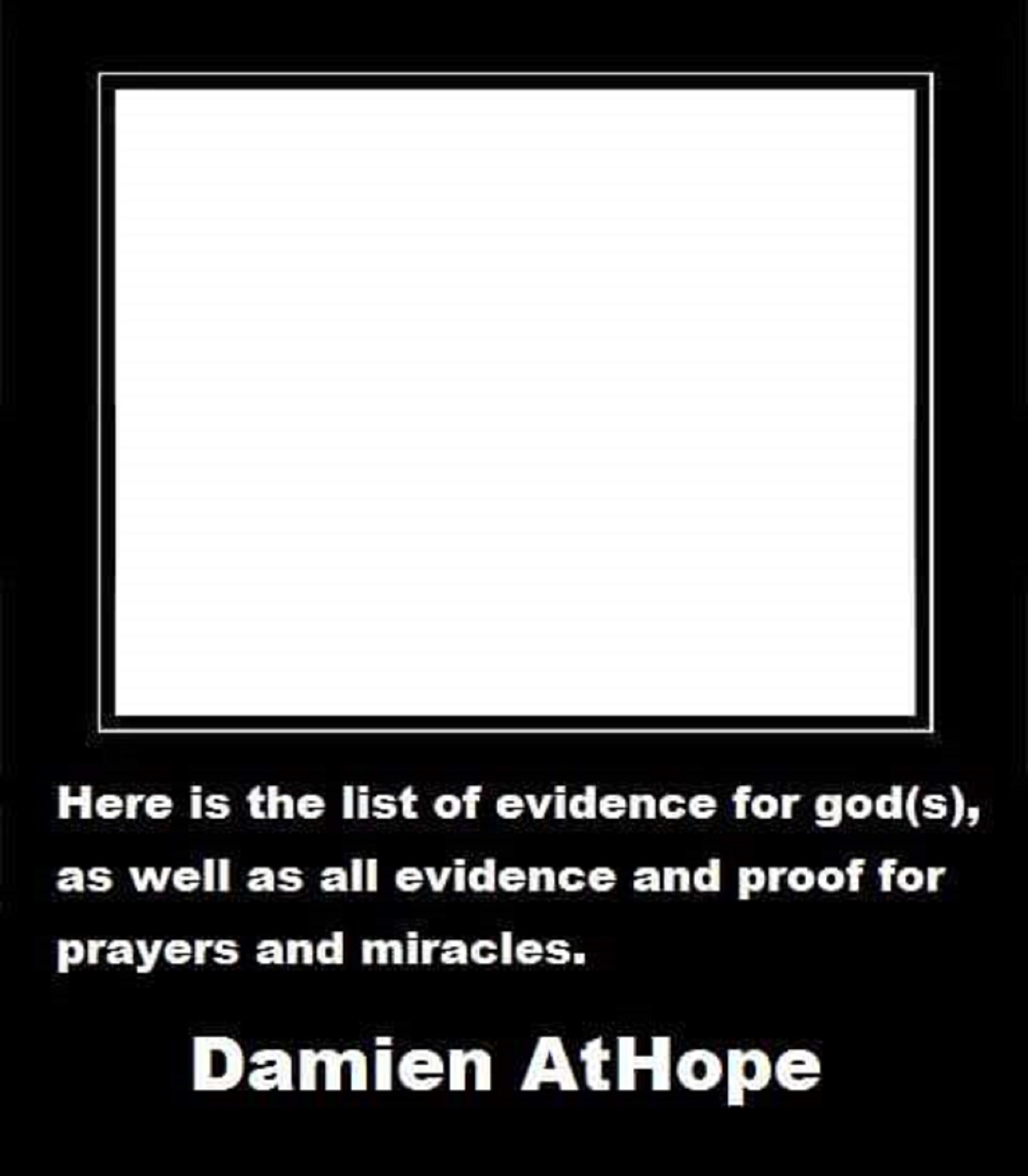

Religion is not natural; rather, it is a product of culture similar to languages. Culture and religion, are an ever-changing thing. Animism is nature, and religion is nurture. There is a difference.
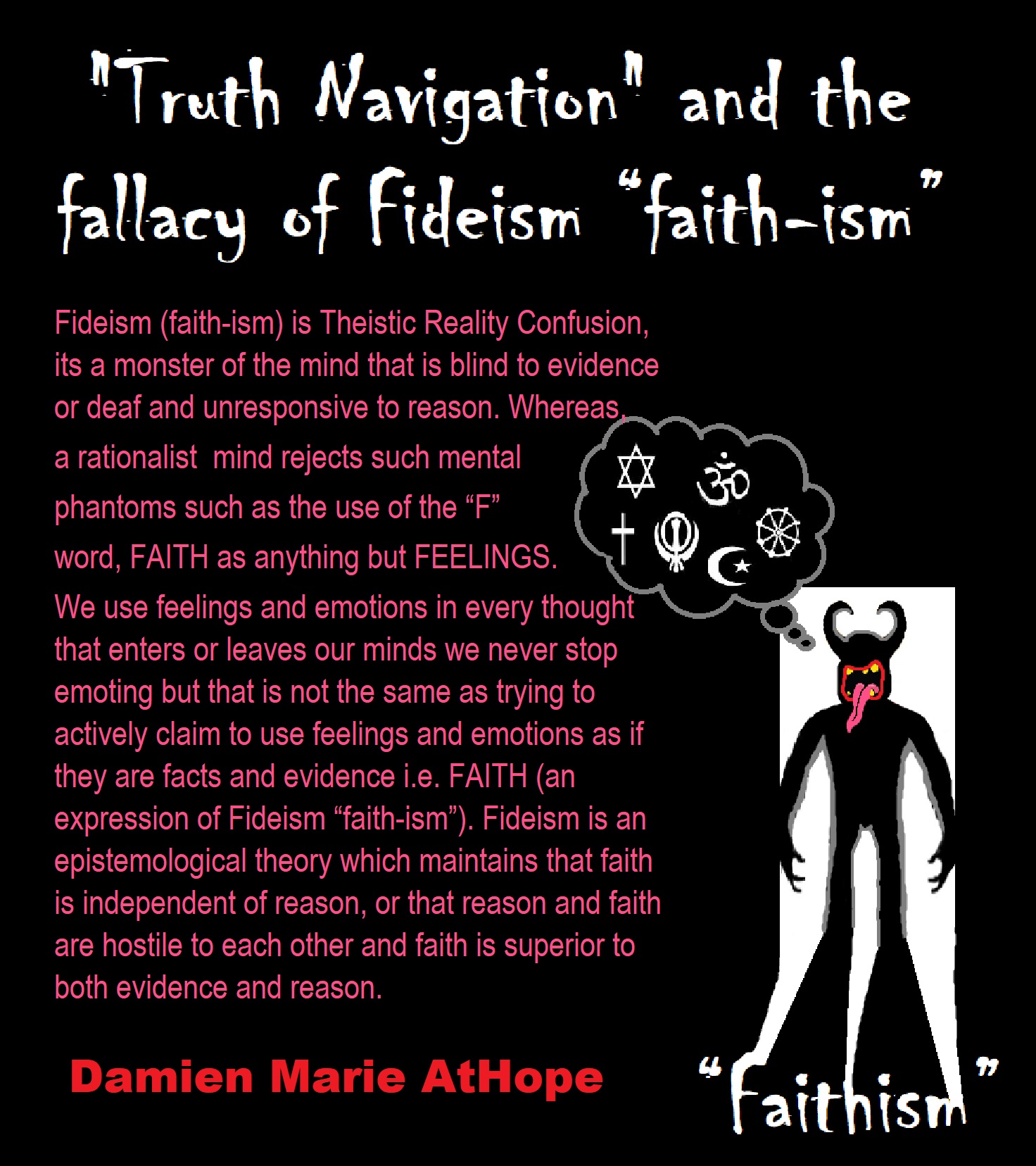

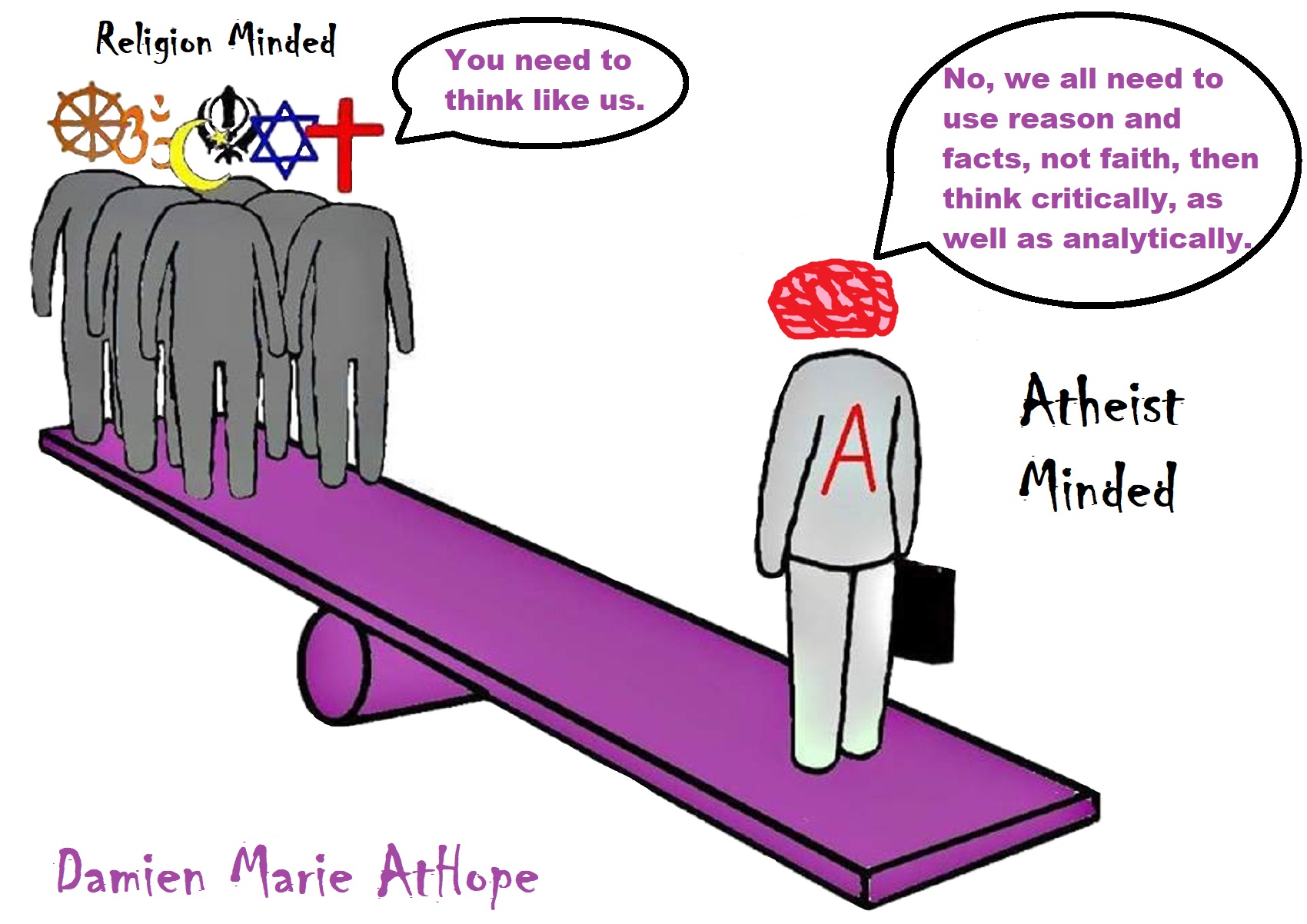
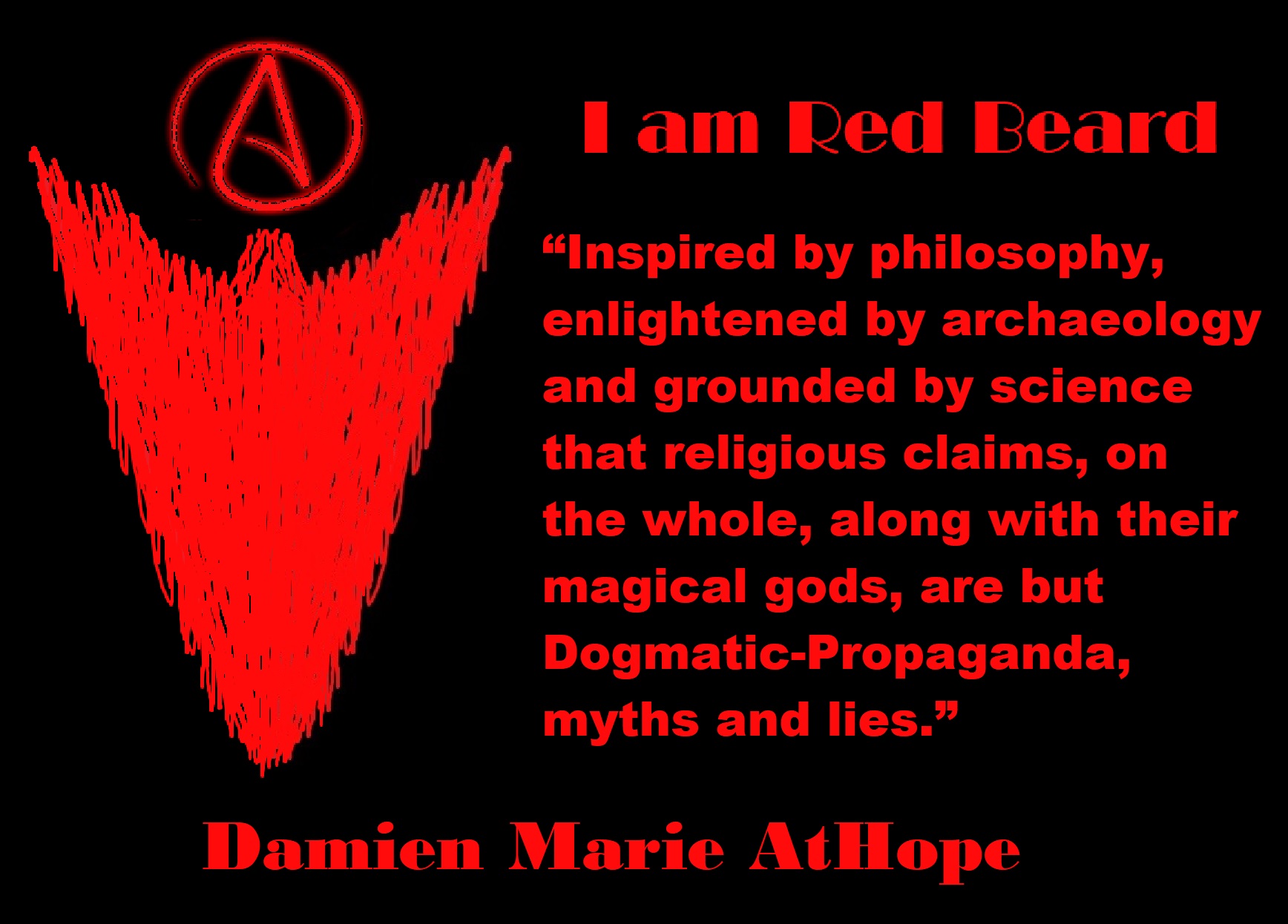
People don’t commonly teach religious history, even that of their own claimed religion. No, rather they teach a limited “pro their religion” history of their religion from a religious perspective favorable to the religion of choice.
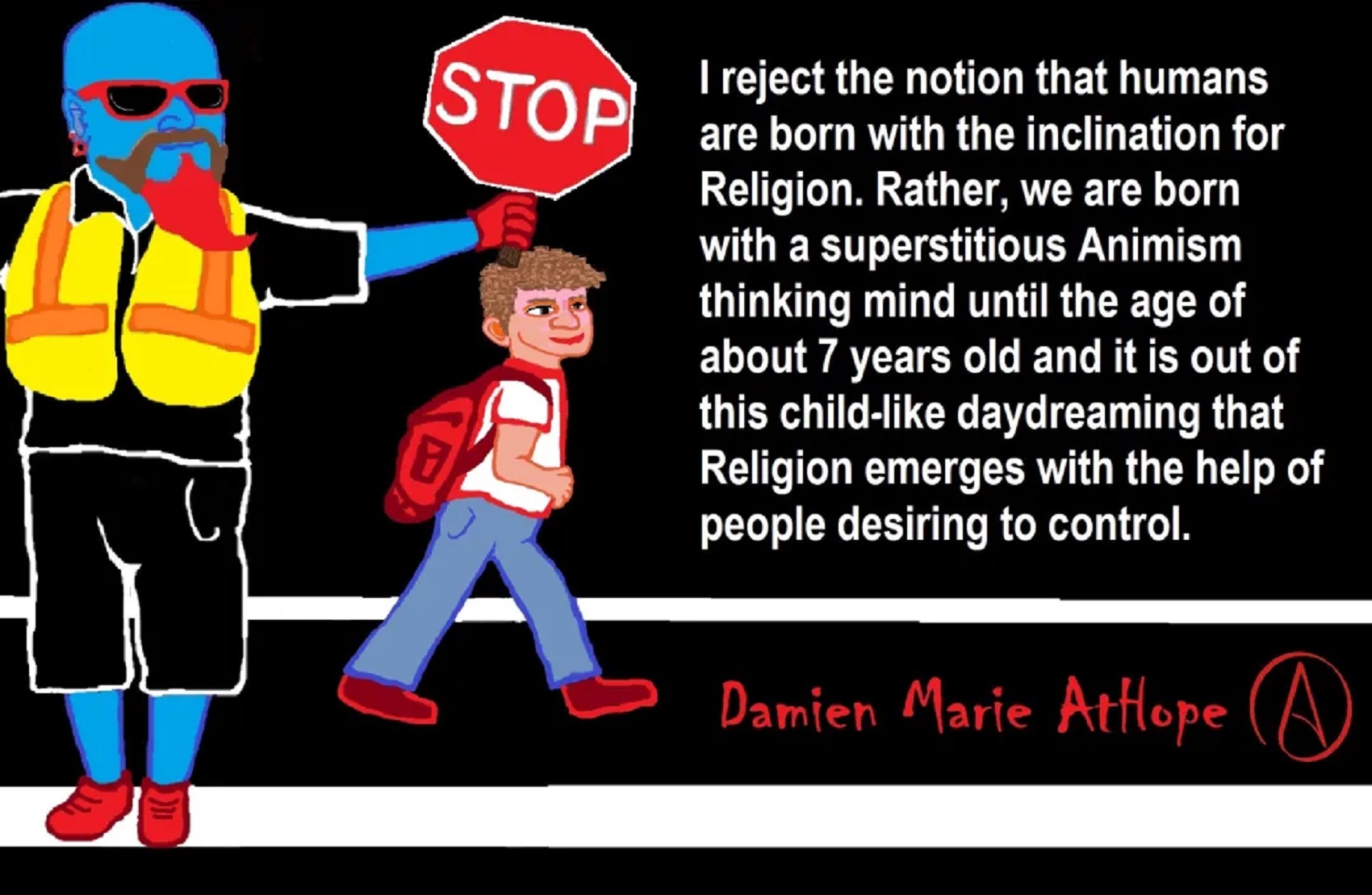
Do you truly think “Religious Belief” is only a matter of some personal choice?
Do you not see how coercive one’s world of choice is limited to the obvious hereditary belief, in most religious choices available to the child of religious parents or caregivers? Religion is more commonly like a family, culture, society, etc. available belief that limits the belief choices of the child and that is when “Religious Belief” is not only a matter of some personal choice and when it becomes hereditary faith, not because of the quality of its alleged facts or proposed truths but because everyone else important to the child believes similarly so they do as well simply mimicking authority beliefs handed to them. Because children are raised in religion rather than being presented all possible choices but rather one limited dogmatic brand of “Religious Belief” where children only have a choice of following the belief as instructed, and then personally claim the faith hereditary belief seen in the confirming to the belief they have held themselves all their lives. This is obvious in statements asked and answered by children claiming a faith they barely understand but they do understand that their family believes “this or that” faith, so they feel obligated to believe it too. While I do agree that “Religious Belief” should only be a matter of some personal choice, it rarely is… End Hereditary Religion!
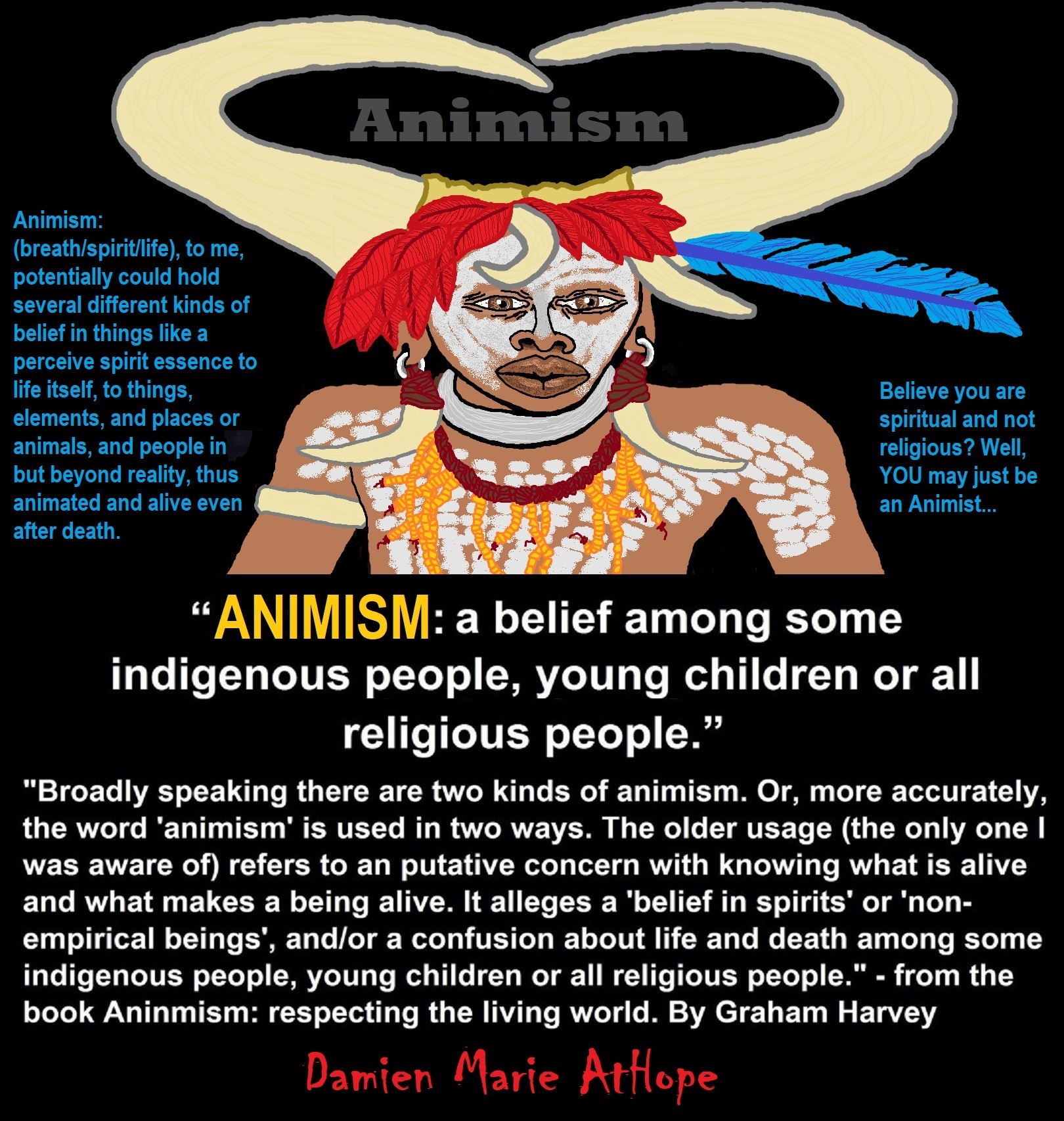
Animism: Respecting the Living World by Graham Harvey
“How have human cultures engaged with and thought about animals, plants, rocks, clouds, and other elements in their natural surroundings? Do animals and other natural objects have a spirit or soul? What is their relationship to humans? In this new study, Graham Harvey explores current and past animistic beliefs and practices of Native Americans, Maori, Aboriginal Australians, and eco-pagans. He considers the varieties of animism found in these cultures as well as their shared desire to live respectfully within larger natural communities. Drawing on his extensive casework, Harvey also considers the linguistic, performative, ecological, and activist implications of these different animisms.” ref
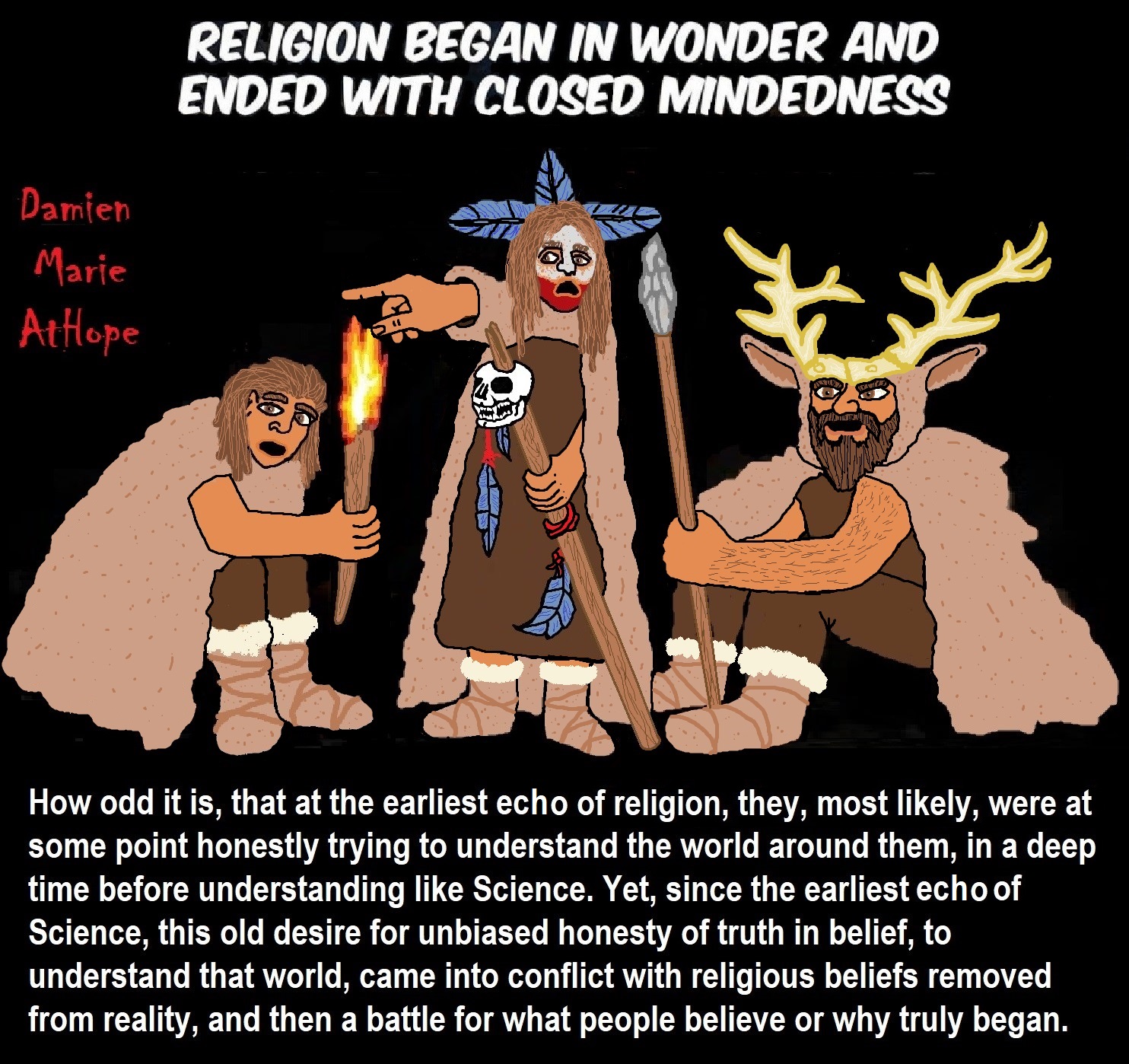
We are like believing machines we vacuum up ideas, like Velcro sticks to almost everything. We accumulate beliefs that we allow to negatively influence our lives, often without realizing it. Our willingness must be to alter skewed beliefs that impend our balance or reason, which allows us to achieve new positive thinking and accurate outcomes.
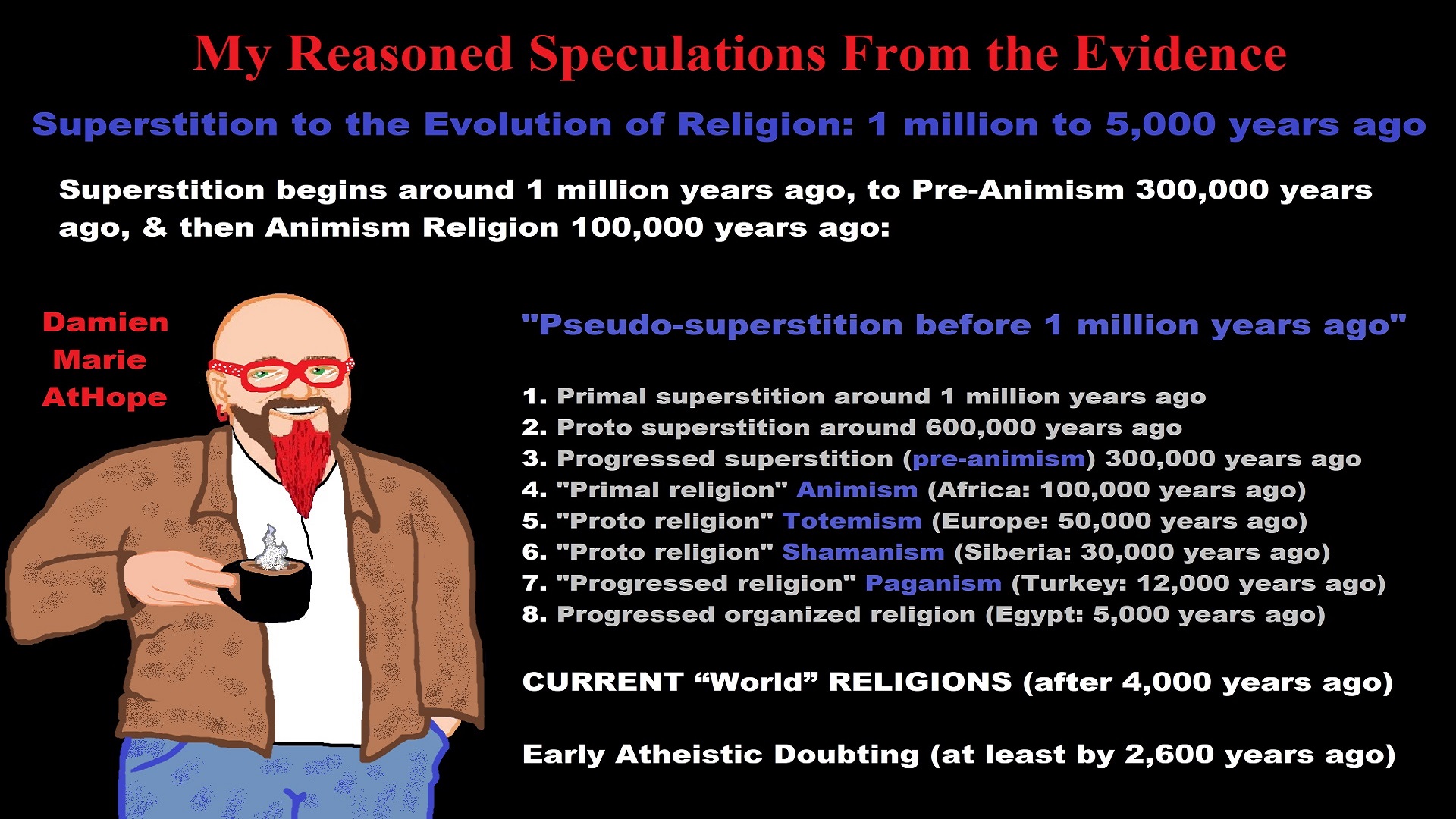
My thoughts on Religion Evolution with external links for more info:
- (Pre-Animism Africa mainly, but also Europe, and Asia at least 300,000 years ago), (Pre-Animism – Oxford Dictionaries)
- (Animism Africa around 100,000 years ago), (Animism – Britannica.com)
- (Totemism Europe around 50,000 years ago), (Totemism – Anthropology)
- (Shamanism Siberia around 30,000 years ago), (Shamanism – Britannica.com)
- (Paganism Turkey around 12,000 years ago), (Paganism – BBC Religion)
- (Progressed Organized Religion “Institutional Religion” Egypt around 5,000 years ago), (Ancient Egyptian Religion – Britannica.com)
- (CURRENT “World” RELIGIONS after 4,000 years ago) (Origin of Major Religions – Sacred Texts)
- (Early Atheistic Doubting at least by 2,600 years ago) (History of Atheism – Wikipedia)
“Religion is an Evolved Product” and Yes, Religion is Like Fear Given Wings…
Atheists talk about gods and religions for the same reason doctors talk about cancer, they are looking for a cure, or a firefighter talks about fires because they burn people and they care to stop them. We atheists too often feel a need to help the victims of mental slavery, held in the bondage that is the false beliefs of gods and the conspiracy theories of reality found in religions.
Understanding Religion Evolution:
- Pre-Animism (at least 300,000 years ago)
- Animism (Africa: 100,000 years ago)
- Totemism (Europe: 50,000 years ago)
- Shamanism (Siberia: 30,000 years ago)
- Paganism (Turkey: 12,000 years ago)
- Progressed organized religion (Egypt: 5,000 years ago), (Egypt, the First Dynasty 5,150 years ago)
- CURRENT “World” RELIGIONS (after 4,000 years ago)
- Early Atheistic Doubting (at least by 2,600 years ago)
“An Archaeological/Anthropological Understanding of Religion Evolution”
It seems ancient peoples had to survived amazing threats in a “dangerous universe (by superstition perceived as good and evil),” and human “immorality or imperfection of the soul” which was thought to affect the still living, leading to ancestor worship. This ancestor worship presumably led to the belief in supernatural beings, and then some of these were turned into the belief in gods. This feeble myth called gods were just a human conceived “made from nothing into something over and over, changing, again and again, taking on more as they evolve, all the while they are thought to be special,” but it is just supernatural animistic spirit-belief perceived as sacred.
Quick Evolution of Religion?
Pre-Animism (at least 300,000 years ago) pre-religion is a beginning that evolves into later Animism. So, Religion as we think of it, to me, all starts in a general way with Animism (Africa: 100,000 years ago) (theoretical belief in supernatural powers/spirits), then this is physically expressed in or with Totemism (Europe: 50,000 years ago) (theoretical belief in mythical relationship with powers/spirits through a totem item), which then enlists a full-time specific person to do this worship and believed interacting Shamanism (Siberia/Russia: 30,000 years ago) (theoretical belief in access and influence with spirits through ritual), and then there is the further employment of myths and gods added to all the above giving you Paganism (Turkey: 12,000 years ago) (often a lot more nature-based than most current top world religions, thus hinting to their close link to more ancient religious thinking it stems from). My hypothesis is expressed with an explanation of the building of a theatrical house (modern religions development). Progressed organized religion (Egypt: 5,000 years ago) with CURRENT “World” RELIGIONS (after 4,000 years ago).
Historically, in large city-state societies (such as Egypt or Iraq) starting around 5,000 years ago culminated to make religion something kind of new, a sociocultural-governmental-religious monarchy, where all or at least many of the people of such large city-state societies seem familiar with and committed to the existence of “religion” as the integrated life identity package of control dynamics with a fixed closed magical doctrine, but this juggernaut integrated religion identity package of Dogmatic-Propaganda certainly did not exist or if developed to an extent it was highly limited in most smaller prehistoric societies as they seem to lack most of the strong control dynamics with a fixed closed magical doctrine (magical beliefs could be at times be added or removed). Many people just want to see developed religious dynamics everywhere even if it is not. Instead, all that is found is largely fragments until the domestication of religion.
Religions, as we think of them today, are a new fad, even if they go back to around 6,000 years in the timeline of human existence, this amounts to almost nothing when seen in the long slow evolution of religion at least around 70,000 years ago with one of the oldest ritual worship. Stone Snake of South Africa: “first human worship” 70,000 years ago. This message of how religion and gods among them are clearly a man-made thing that was developed slowly as it was invented and then implemented peace by peace discrediting them all. Which seems to be a simple point some are just not grasping how devastating to any claims of truth when we can see the lie clearly in the archeological sites.
I wish people fought as hard for the actual values as they fight for the group/clan names political or otherwise they think support values. Every amount spent on war is theft to children in need of food or the homeless kept from shelter.
Here are several of my blog posts on history:
- To Find Truth You Must First Look
- (Magdalenian/Iberomaurusian) Connections to the First Paganists of the early Neolithic Near East Dating from around 17,000 to 12,000 Years Ago
- Natufians: an Ancient People at the Origins of Agriculture and Sedentary Life
- Possible Clan Leader/Special “MALE” Ancestor Totem Poles At Least 13,500 years ago?
- Jewish People with DNA at least 13,200 years old, Judaism, and the Origins of Some of its Ideas
- Baltic Reindeer Hunters: Swiderian, Lyngby, Ahrensburgian, and Krasnosillya cultures 12,020 to 11,020 years ago are evidence of powerful migratory waves during the last 13,000 years and a genetic link to Saami and the Finno-Ugric peoples.
- The Rise of Inequality: patriarchy and state hierarchy inequality
- Fertile Crescent 12,500 – 9,500 Years Ago: fertility and death cult belief system?
- 12,400 – 11,700 Years Ago – Kortik Tepe (Turkey) Pre/early-Agriculture Cultic Ritualism
- Ritualistic Bird Symbolism at Gobekli Tepe and its “Ancestor Cult”
- Male-Homosexual (female-like) / Trans-woman (female) Seated Figurine from Gobekli Tepe
- Could a 12,000-year-old Bull Geoglyph at Göbekli Tepe relate to older Bull and Female Art 25,000 years ago and Later Goddess and the Bull cults like Catal Huyuk?
- Sedentism and the Creation of goddesses around 12,000 years ago as well as male gods after 7,000 years ago.
- Alcohol, where Agriculture and Religion Become one? Such as Gobekli Tepe’s Ritualistic use of Grain as Food and Ritual Drink
- Neolithic Ritual Sites with T-Pillars and other Cultic Pillars
- Paganism: Goddesses around 12,000 years ago then Male Gods after 7,000 years ago
- First Patriarchy: Split of Women’s Status around 12,000 years ago & First Hierarchy: fall of Women’s Status around 5,000 years ago.
- Natufians: an Ancient People at the Origins of Agriculture and Sedentary Life
- J DNA and the Spread of Agricultural Religion (paganism)
- Paganism: an approximately 12,000-year-old belief system
- Paganism 12,000 years old: related to “Anarchism and Socialism” (Pre-Capitalism)
- Shaman burial in Israel 12,000 years ago and the Shamanism Phenomena
- Need to Mythicized: gods and goddesses
- 12,000 – 7,000 Years Ago – Paleo-Indian Culture (The Americas)
- 12,000 – 2,000 Years Ago – Indigenous-Scandinavians (Nordic)
- Norse did not wear helmets with horns?
- Pre-Pottery Neolithic Skull Cult around 11,500 to 8,400 Years Ago?
- 10,400 – 10,100 Years Ago, in Turkey the Nevail Cori Religious Settlement
- 9,000-6,500 Years Old Submerged Pre-Pottery/Pottery Neolithic Ritual Settlements off Israel’s Coast
- Catal Huyuk “first religious designed city” around 9,500 to 7,700 years ago (Turkey)
- Cultic Hunting at Catal Huyuk “first religious designed city”
- Special Items and Art as well as Special Elite Burials at Catal Huyuk
- New Rituals and Violence with the appearance of Pottery and People?
- Haplogroup N and its related Uralic Languages and Cultures
- Ainu people, Sámi people, Native Americans, the Ancient North Eurasians, and Paganistic-Shamanism with Totemism
- Ideas, Technology and People from Turkey, Europe, to China and Back again 9,000 to 5,000 years ago?
- First Pottery of Europe and the Related Cultures
- 9,000 years old Neolithic Artifacts Judean Desert and Hills Israel
- 9,000-7,000 years-old Sex and Death Rituals: Cult Sites in Israel, Jordan, and the Sinai
- 9,000-8500 year old Horned Female shaman Bad Dürrenberg Germany
- Neolithic Jewelry and the Spread of Farming in Europe Emerging out of West Turkey
- 8,600-year-old Tortoise Shells in Neolithic graves in central China have Early Writing and Shamanism
- Swing of the Mace: the rise of Elite, Forced Authority, and Inequality begin to Emerge 8,500 years ago?
- Migrations and Changing Europeans Beginning around 8,000 Years Ago
- My “Steppe-Anatolian-Kurgan hypothesis” 8,000/7,000 years ago
- Around 8,000-year-old Shared Idea of the Mistress of Animals, “Ritual” Motif
- Pre-Columbian Red-Paint (red ochre) Maritime Archaic Culture 8,000-3,000 years ago
- 7,522-6,522 years ago Linear Pottery culture which I think relates to Arcane Capitalism’s origins
- Arcane Capitalism: Primitive socialism, Primitive capital, Private ownership, Means of production, Market capitalism, Class discrimination, and Petite bourgeoisie (smaller capitalists)
- 7,500-4,750 years old Ritualistic Cucuteni-Trypillian culture of Moldova, Romania, and Ukraine
- Roots of a changing early society 7,200-6,700 years ago Jordan and Israel
- Agriculture religion (Paganism) with farming reached Britain between about 7,000 to 6,500 or so years ago and seemingly expressed in things like Western Europe’s Long Barrows
- My Thoughts on Possible Migrations of “R” DNA and Proto-Indo-European?
- “Millet” Spreading from China 7,022 years ago to Europe and related Language may have Spread with it leading to Proto-Indo-European
- Proto-Indo-European (PIE), ancestor of Indo-European languages: DNA, Society, Language, and Mythology
- The Dnieper–Donets culture and Asian varieties of Millet from China to the Black Sea region of Europe by 7,022 years ago
- Kurgan 6,000 years ago/dolmens 7,000 years ago: funeral, ritual, and other?
- 7,020 to 6,020-year-old Proto-Indo-European Homeland of Urheimat or proposed home of their Language and Religion
- Ancient Megaliths: Kurgan, Ziggurat, Pyramid, Menhir, Trilithon, Dolman, Kromlech, and Kromlech of Trilithons
- The Mytheme of Ancient North Eurasian Sacred-Dog belief and similar motifs are found in Indo-European, Native American, and Siberian comparative mythology
- Elite Power Accumulation: Ancient Trade, Tokens, Writing, Wealth, Merchants, and Priest-Kings
- Sacred Mounds, Mountains, Kurgans, and Pyramids may hold deep connections?
- Between 7,000-5,000 Years ago, rise of unequal hierarchy elite, leading to a “birth of the State” or worship of power, strong new sexism, oppression of non-elites, and the fall of Women’s equal status
- Paganism 7,000-5,000 years old: related to “Anarchism and Socialism” (Capitalism) (World War 0) Elite & their slaves
- Hell and Underworld mythologies starting maybe as far back as 7,000 to 5,000 years ago with the Proto-Indo-Europeans?
- The First Expression of the Male God around 7,000 years ago?
- White (light complexion skin) Bigotry and Sexism started 7,000 years ago?
- Around 7,000-year-old Shared Idea of the Divine Bird (Tutelary and/or Trickster spirit/deity), “Ritual” Motif
- Nekhbet an Ancient Egyptian Vulture Goddess and Tutelary Deity
- 6,720 to 4,920 years old Ritualistic Hongshan Culture of Inner Mongolia with 5,000-year-old Pyramid Mounds and Temples
- First proto-king in the Balkans, Varna culture around 6,500 years ago?
- 6,500–5,800 years ago in Israel Late Chalcolithic (Copper Age) Period in the Southern Levant Seems to Express Northern Levant Migrations, Cultural and Religious Transfer
- KING OF BEASTS: Master of Animals “Ritual” Motif, around 6,000 years old or older…
- Around 6000-year-old Shared Idea of the Solid Wheel & the Spoked Wheel-Shaped Ritual Motif
- “The Ghassulian Star,” a mysterious 6,000-year-old mural from Jordan; a Proto-Star of Ishtar, Star of Inanna or Star of Venus?
- Religious/Ritual Ideas, including goddesses and gods as well as ritual mounds or pyramids from Northeastern Asia at least 6,000 years old, seemingly filtering to Iran, Iraq, the Mediterranean, Europe, Egypt, and the Americas?
- Maykop (5,720–5,020 years ago) Caucasus region Bronze Age culture-related to Copper Age farmers from the south, influenced by the Ubaid period and Leyla-Tepe culture, as well as influencing the Kura-Araxes culture
- 5-600-year-old Tomb, Mummy, and First Bearded Male Figurine in a Grave
- Kura-Araxes Cultural 5,520 to 4,470 years old DNA traces to the Canaanites, Arabs, and Jews
- Minoan/Cretan (Keftiu) Civilization and Religion around 5,520 to 3,120 years ago
- Evolution Of Science at least by 5,500 years ago
- 5,500 Years old birth of the State, the rise of Hierarchy, and the fall of Women’s status
- “Jiroft culture” 5,100 – 4,200 years ago and the History of Iran
- Stonehenge: Paganistic Burial and Astrological Ritual Complex, England (5,100-3,600 years ago)
- Around 5,000-year-old Shared Idea of the “Tree of Life” Ritual Motif
- Complex rituals for elite, seen from China to Egypt, at least by 5,000 years ago
- Around 5,000 years ago: “Birth of the State” where Religion gets Military Power and Influence
- The Center of the World “Axis Mundi” and/or “Sacred Mountains” Mythology Could Relate to the Altai Mountains, Heart of the Steppe
- Progressed organized religion starts, an approximately 5,000-year-old belief system
- China’s Civilization between 5,000-3,000 years ago, was a time of war and class struggle, violent transition from free clans to a Slave or Elite society
- Origin of Logics is Naturalistic Observation at least by around 5,000 years ago.
- Paganism 5,000 years old: progressed organized religion and the state: related to “Anarchism and Socialism” (Kings and the Rise of the State)
- Ziggurats (multi-platform temples: 4,900 years old) to Pyramids (multi-platform tombs: 4,700 years old)
- Did a 4,520–4,420-year-old Volcano In Turkey Inspire the Bible God?
- Finland’s Horned Shaman and Pre-Horned-God at least 4,500 years ago?
- 4,000-year-Old Dolmens in Israel: A Connected Dolmen Religious Phenomenon?
- Creation myths: From chaos, Ex nihilo, Earth-diver, Emergence, World egg, and World parent
- Bronze Age “Ritual” connections of the Bell Beaker culture with the Corded Ware/Single Grave culture, which were related to the Yamnaya culture and Proto-Indo-European Languages/Religions
- Low Gods (Earth/ Tutelary deity), High Gods (Sky/Supreme deity), and Moralistic Gods (Deity enforcement/divine order)
- The exchange of people, ideas, and material-culture including, to me, the new god (Sky Father) and goddess (Earth Mother) religion between the Cucuteni-Trypillians and others which is then spread far and wide
- Koryaks: Indigenous People of the Russian Far East and Big Raven myths also found in Tlingit, Haida, Tsimshian, and other Indigenous People of North America
- 42 Principles Of Maat (Egyptian Goddess of the justice) around 4,400 years ago, 2000 Years Before Ten Commandments
- “Happy Easter” Well Happy Eostre/Ishter
- 4,320-3,820 years old “Shimao” (North China) site with Totemistic-Shamanistic Paganism and a Stepped Pyramid
- 4,250 to 3,400 Year old Stonehenge from Russia: Arkaim?
- 4,100-year-old beaker with medicinal & flowering plants in a grave of a woman in Scotland
- Early European Farmer ancestry, Kelif el Boroud people with the Cardial Ware culture, and the Bell Beaker culture Paganists too, spread into North Africa, then to the Canary Islands off West Africa
- Flood Accounts: Gilgamesh epic (4,100 years ago) Noah in Genesis (2,600 years ago)
- Paganism 4,000 years old: related to “Anarchism and Socialism” (First Moralistic gods, then the Origin time of Monotheism)
- When was the beginning: TIMELINE OF CURRENT RELIGIONS, which start around 4,000 years ago.
- Early Religions Thought to Express Proto-Monotheistic Systems around 4,000 years ago
- Kultepe? An archaeological site with a 4,000 years old women’s rights document.
- Single God Religions (Monotheism) = “Man-o-theism” started around 4,000 years ago with the Great Sky Spirit/God Tiān (天)?
- Confucianism’s Tiān (Shangdi god 4,000 years old): Supernaturalism, Pantheism or Theism?
- Yes, Your Male God is Ridiculous
- Mythology, a Lunar Deity is a Goddess or God of the Moon
- Sacred Land, Hills, and Mountains: Sami Mythology (Paganistic Shamanism)
- Horse Worship/Sacrifice: mythical union of Ruling Elite/Kingship and the Horse
- The Amorite/Amurru people’s God Amurru “Lord of the Steppe”, relates to the Origins of the Bible God?
- Bronze Age Exotic Trade Routes Spread Quite Far as well as Spread Religious Ideas with Them
- Sami and the Northern Indigenous Peoples Landscape, Language, and its Connection to Religion
- Prototype of Ancient Analemmatic Sundials around 3,900-3,150 years ago and a Possible Solar Connection to gods?
- Judaism is around 3,450 or 3,250 years old. (“Paleo-Hebrew” 3,000 years ago and Torah 2,500 years ago)
- The Weakening of Ancient Trade and the Strengthening of Religions around 3000 years ago?
- Are you aware that there are religions that worship women gods, explain now religion tears women down?
- Animistic, Totemistic, and Paganistic Superstition Origins of bible god and the bible’s Religion.
- Myths and Folklore: “Trickster gods and goddesses”
- Jews, Judaism, and the Origins of Some of its Ideas
- An Old Branch of Religion Still Giving Fruit: Sacred Trees
- Dating the BIBLE: naming names and telling times (written less than 3,000 years ago, provable to 2,200 years ago)
- Did a Volcano Inspire the bible god?
- Dené–Yeniseian language, Old Copper Complex, and Pre-Columbian Mound Builders?
- No “dinosaurs and humans didn’t exist together just because some think they are in the bible itself”
- Sacred Shit and Sacred Animals?
- Everyone Killed in the Bible Flood? “Nephilim” (giants)?
- Hey, Damien dude, I have a question for you regarding “the bible” Exodus.
- Archaeology Disproves the Bible
- Bible Battle, Just More, Bible Babble
- The Jericho Conquest lie?
- Canaanites and Israelites?
- Accurate Account on how did Christianity Began?
- Let’s talk about Christianity.
- So the 10 commandments isn’t anything to go by either right?
- Misinformed christian
- Debunking Jesus?
- Paulism vs Jesus
- Ok, you seem confused so let’s talk about Buddhism.
- Unacknowledged Buddhism: Gods, Savior, Demons, Rebirth, Heavens, Hells, and Terrorism
- His Foolishness The Dalai Lama
- Yin and Yang is sexist with an ORIGIN around 2,300 years ago?
- I Believe Archaeology, not Myths & Why Not, as the Religious Myths Already Violate Reason!
- Archaeological, Scientific, & Philosophic evidence shows the god myth is man-made nonsense.
- Aquatic Ape Theory/Hypothesis? As Always, Just Pseudoscience.
- Ancient Aliens Conspiracy Theorists are Pseudohistorians
- The Pseudohistoric and Pseudoscientific claims about “Bakoni Ruins” of South Africa
- Why do people think Religion is much more than supernaturalism and superstitionism?
- Religion is an Evolved Product
- Was the Value of Ancient Women Different?
- 1000 to 1100 CE, human sacrifice Cahokia Mounds a pre-Columbian Native American site
- Feminist atheists as far back as the 1800s?
- Promoting Religion as Real is Mentally Harmful to a Flourishing Humanity
- Screw All Religions and Their Toxic lies, they are all fraud
- Forget Religions’ Unfounded Myths, I Have Substantiated “Archaeology Facts.”
- Religion Dispersal throughout the World
- I Hate Religion Just as I Hate all Pseudoscience
- Exposing Scientology, Eckankar, Wicca and Other Nonsense?
- Main deity or religious belief systems
- Quit Trying to Invent Your God From the Scraps of Science.
- Archaeological, Scientific, & Philosophic evidence shows the god myth is man-made nonsense.
- Ancient Alien Conspiracy Theorists: Misunderstanding, Rhetoric, Misinformation, Fabrications, and Lies
- Misinformation, Distortion, and Pseudoscience in Talking with a Christian Creationist
- Judging the Lack of Goodness in Gods, Even the Norse God Odin
- Challenging the Belief in God-like Aliens and Gods in General
- A Challenge to Christian use of Torture Devices?
- Yes, Hinduism is a Religion
- Trump is One of the Most Reactionary Forces of Far-right Christian Extremism
- Was the Bull Head a Symbol of God? Yes!
- Primate Death Rituals
- Christian – “God and Christianity are objectively true”
- Australopithecus afarensis Death Ritual?
- You Claim Global Warming is a Hoax?
- Doubter of Science and Defamer of Atheists?
- I think that sounds like the Bible?
- History of the Antifa (“anti-fascist”) Movements
- Indianapolis Anti-Blasphemy Laws #Free Soheil Rally
- Damien, you repeat the golden rule in so many forms then you say religion is dogmatic?
- Science is a Trustable Methodology whereas Faith is not Trustable at all!
- Was I ever a believer, before I was an atheist?
- Atheists rise in reason
- Mistrust of science?
- Open to Talking About the Definition of ‘God’? But first, we address Faith.
- ‘United Monarchy’ full of splendor and power – Saul, David, and Solomon? Most likely not.
- Is there EXODUS ARCHAEOLOGY? The short answer is “no.”
- Lacking Proof of Bigfoots, Unicorns, and Gods is Just a Lack of Research?
- Religion and Politics: Faith Beliefs vs. Rational Thinking
- Hammer of Truth that lying pig RELIGION: challenged by an archaeologist
- “The Hammer of Truth” -ontology question- What do You Mean by That?
- Navigation of a bad argument: Ad Hominem vs. Attack
- Why is it Often Claimed that Gods have a Gender?
- Why are basically all monotheistic religions ones that have a male god?
- Shifting through the Claims in support of Faith
- Dear Mr. AtHope, The 20th Century is an Indictment of Secularism and a Failed Atheist Century
- An Understanding of the Worldwide Statistics and Dynamics of Terrorist Incidents and Suicide Attacks
- Intoxication and Evolution? Addressing and Assessing the “Stoned Ape” or “Drunken Monkey” Theories as Catalysts in Human Evolution
- Sacred Menstrual cloth? Inanna’s knot, Isis knot, and maybe Ma’at’s feather?
- Damien, why don’t the Hebrews accept the bible stories?
- Dealing with a Troll and Arguing Over Word Meaning
- Knowledge without Belief? Justified beliefs or disbeliefs worthy of Knowledge?
- Afrocentrism and African Religions
- Crecganford @crecganford offers history & stories of the people, places, gods, & culture
- Empiricism-Denier?
I am not an academic. I am a revolutionary that teaches in public, in places like social media, and in the streets. I am not a leader by some title given but from my commanding leadership style of simply to start teaching everywhere to everyone, all manner of positive education.
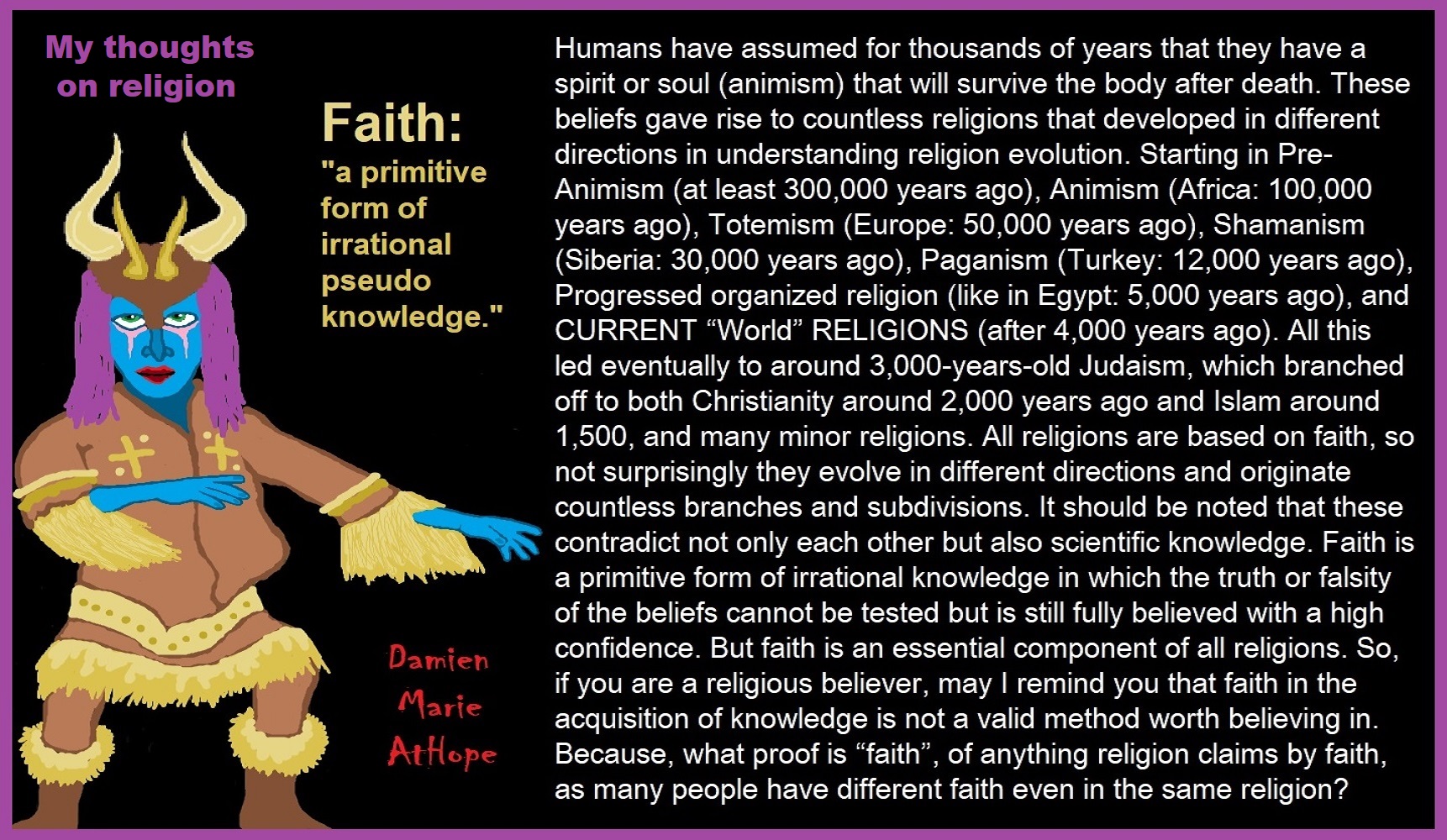
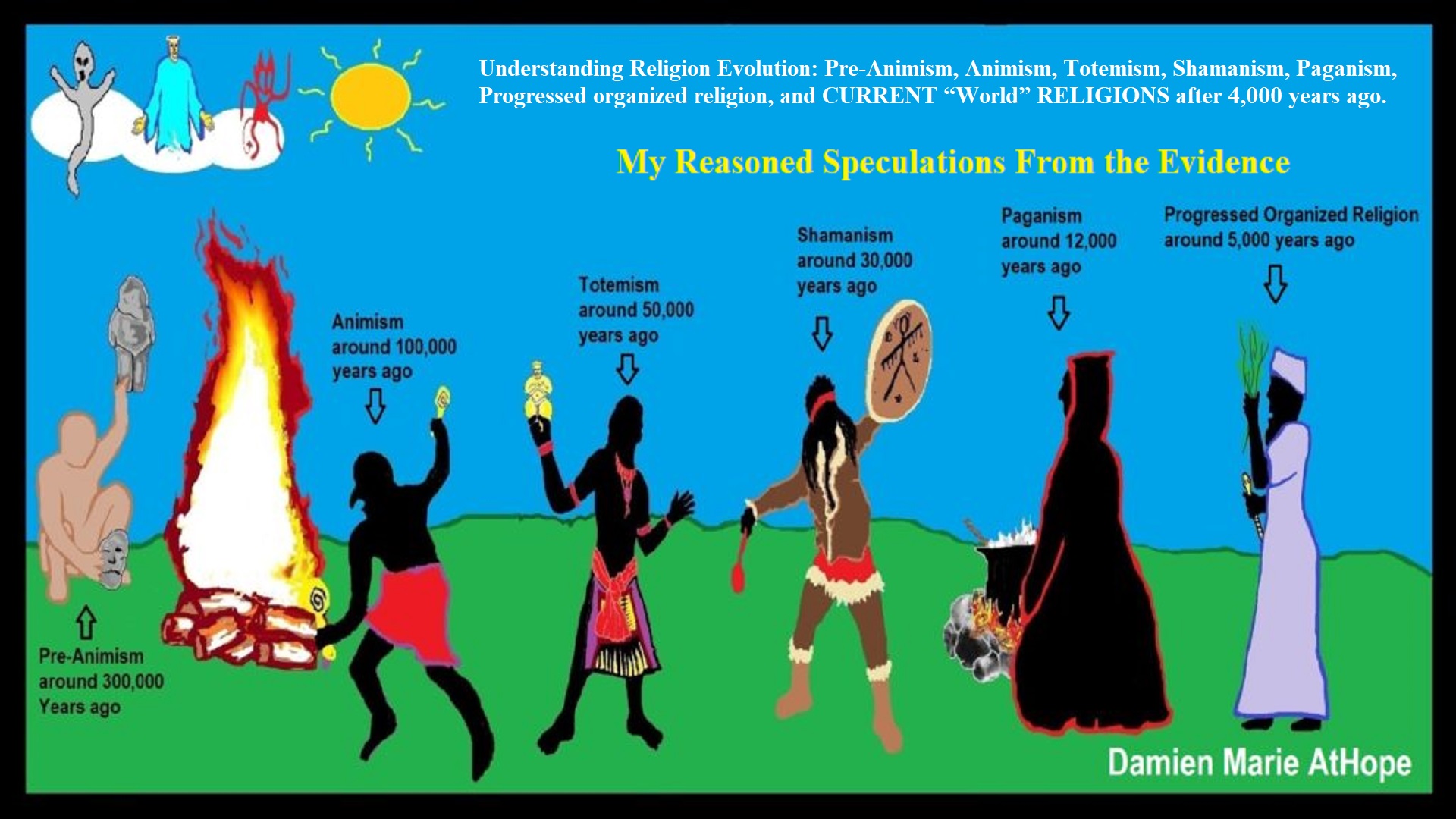

To me, Animism starts in Southern Africa, then to West Europe, and becomes Totemism. Another split goes near the Russia and Siberia border becoming Shamanism, which heads into Central Europe meeting up with Totemism, which also had moved there, mixing the two which then heads to Lake Baikal in Siberia. From there this Shamanism-Totemism heads to Turkey where it becomes Paganism.
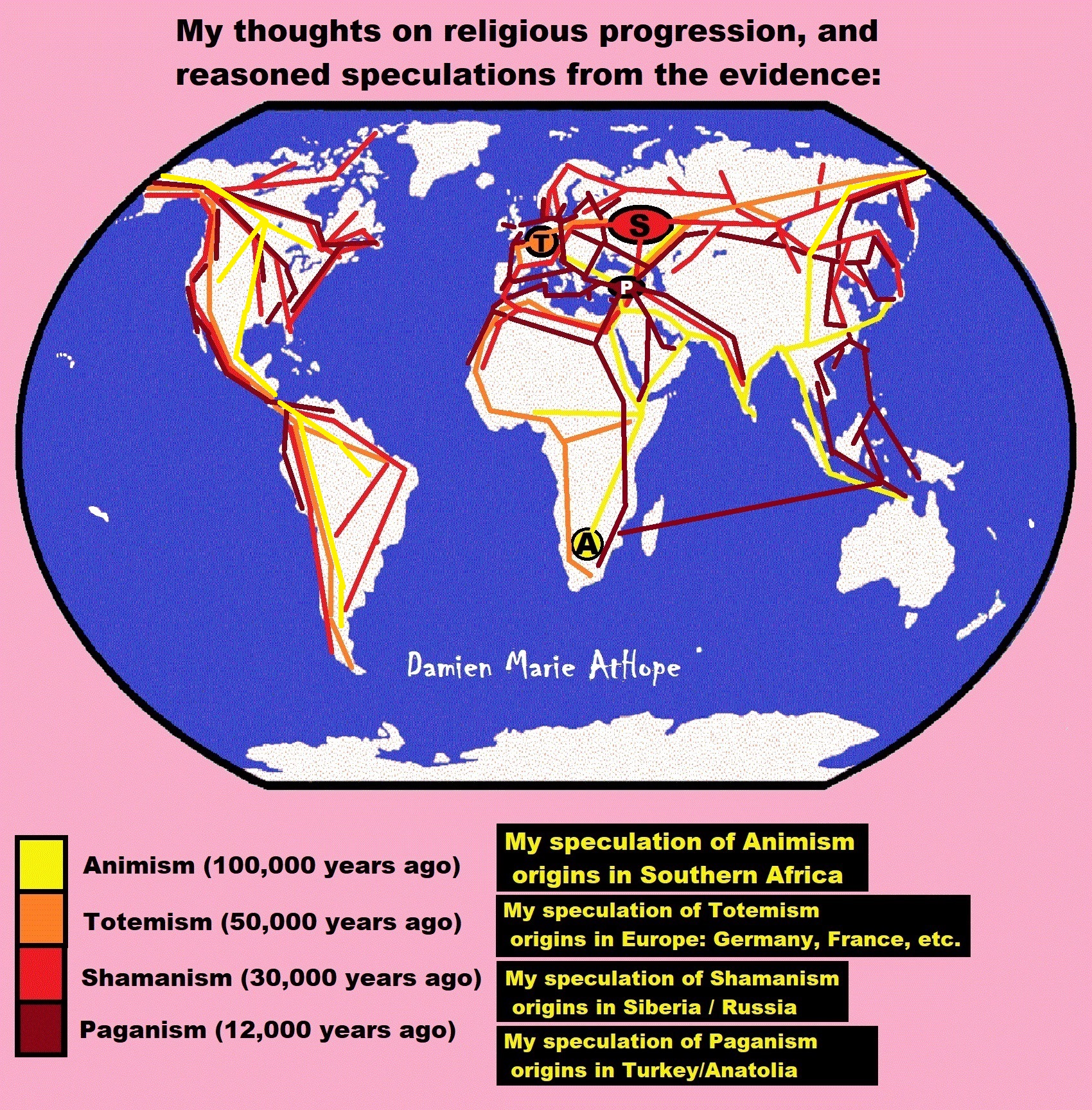
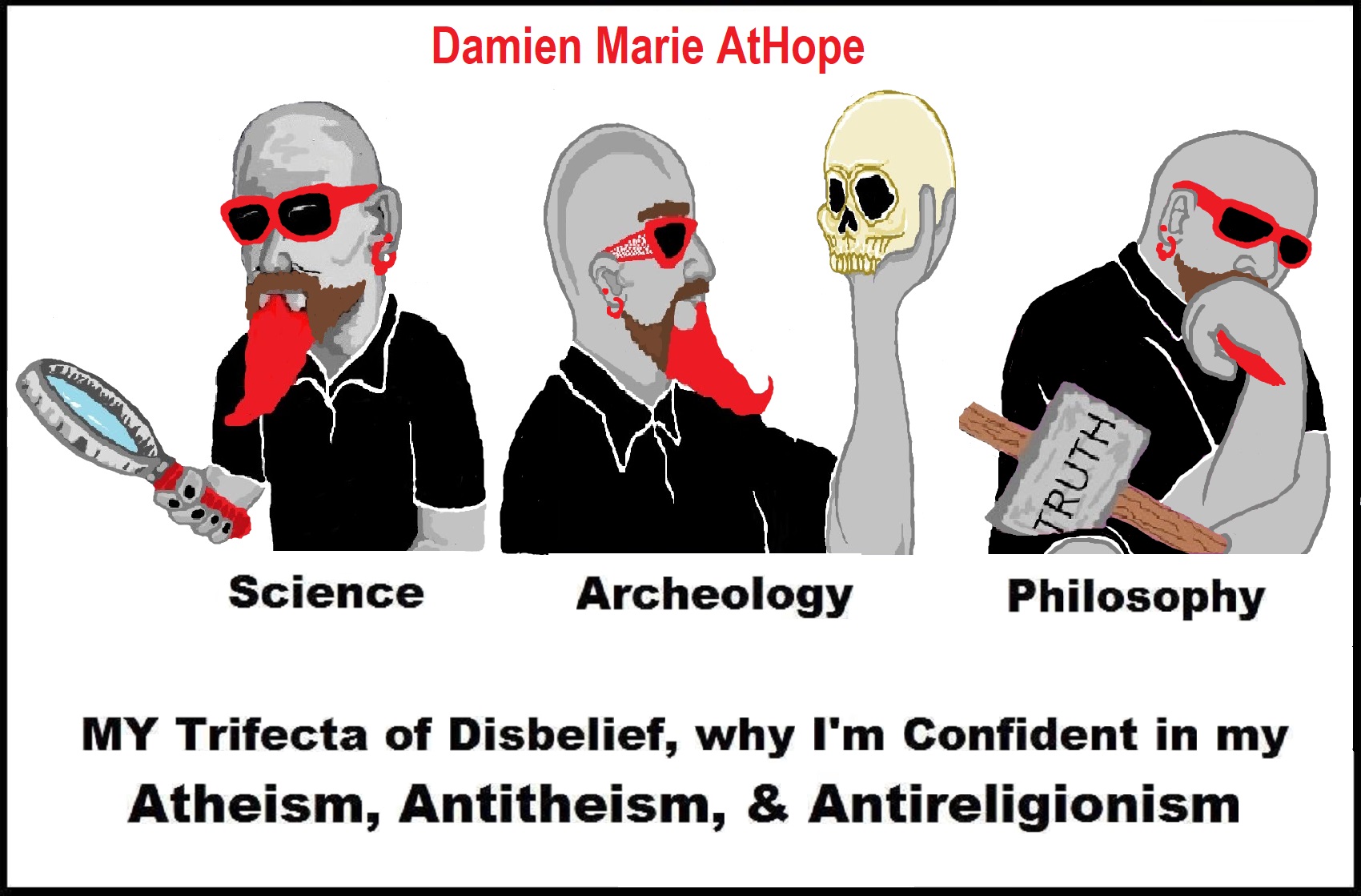
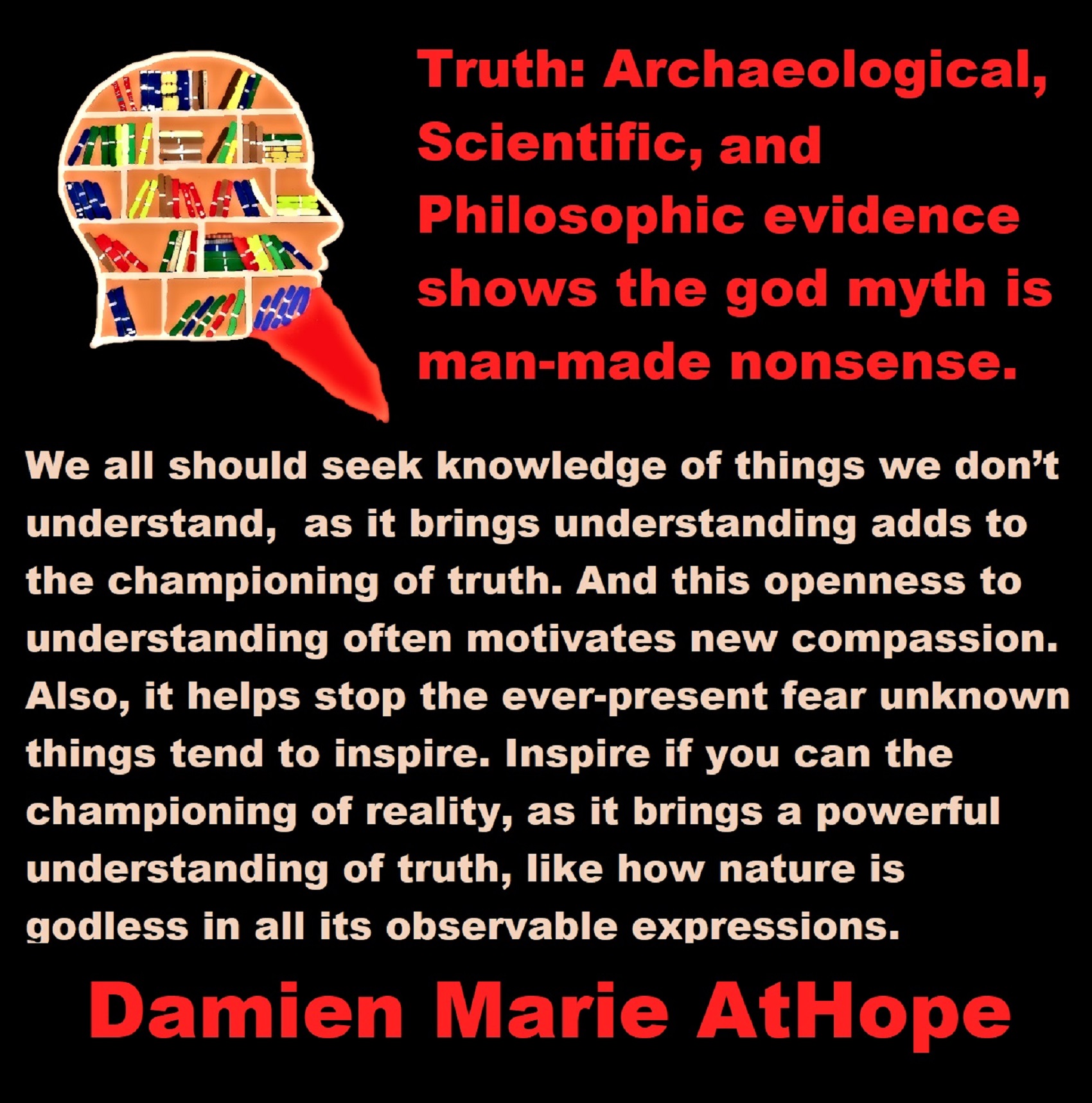
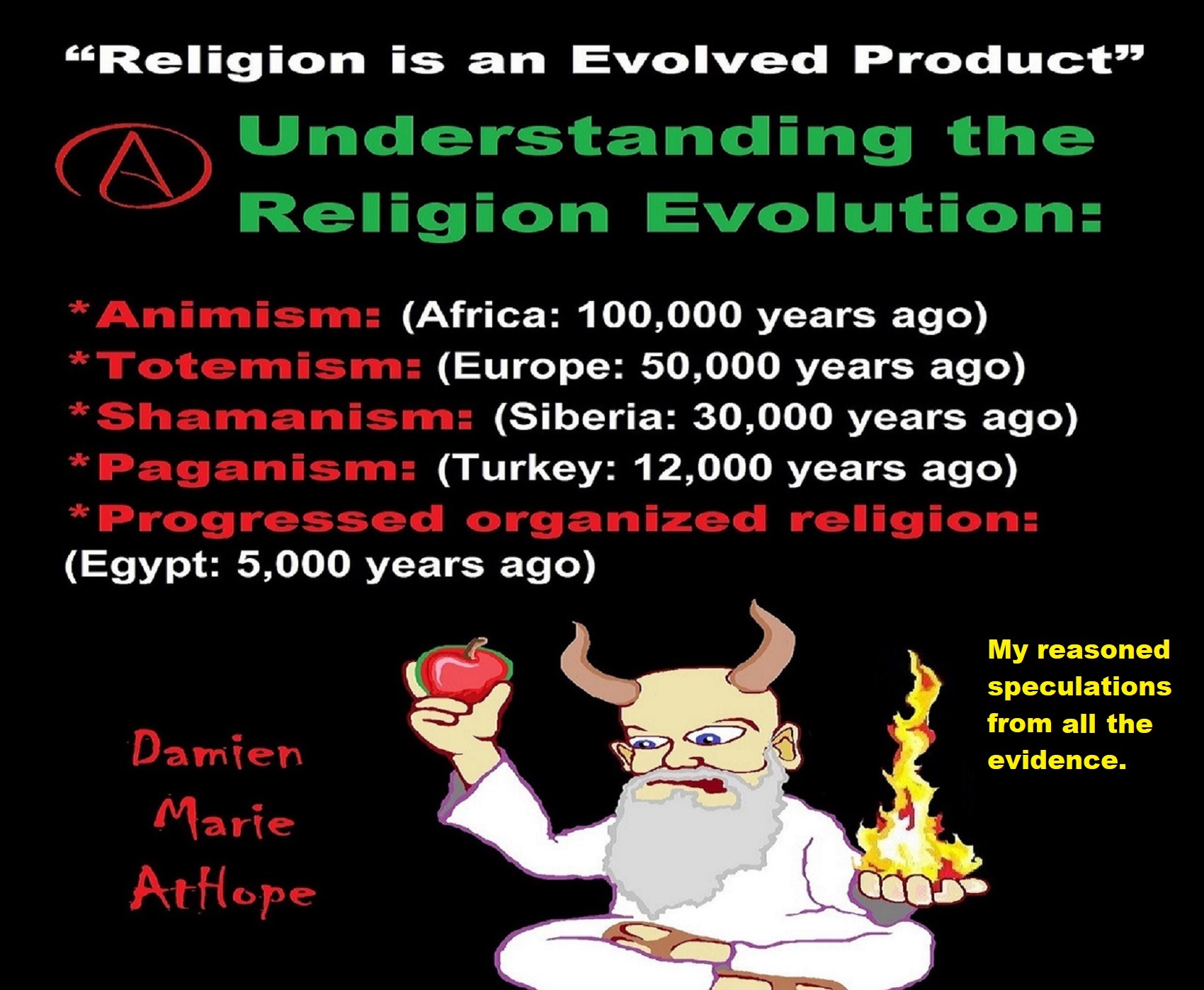
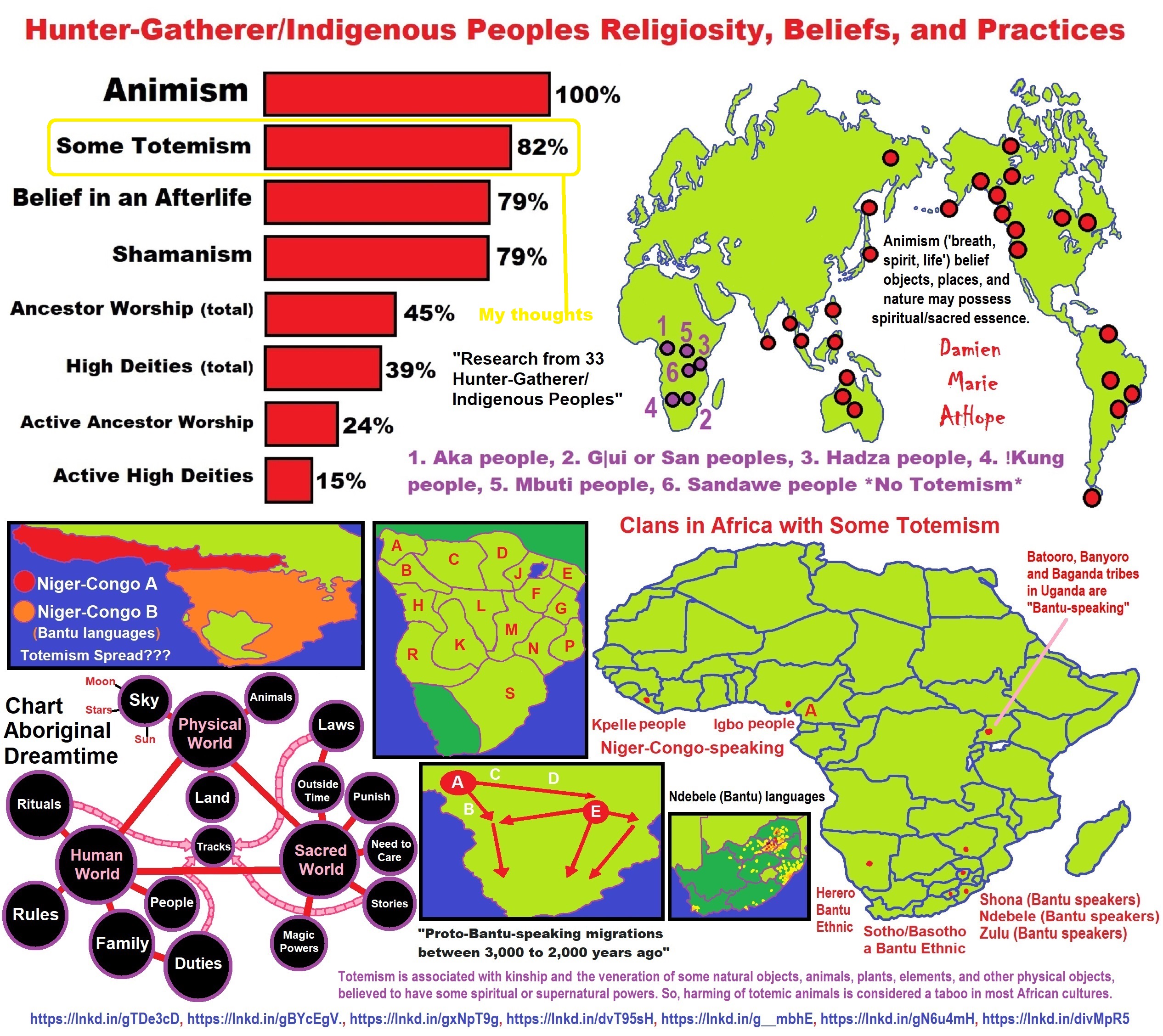
Not all “Religions” or “Religious Persuasions” have a god(s) but
All can be said to believe in some imaginary beings or imaginary things like spirits, afterlives, etc.
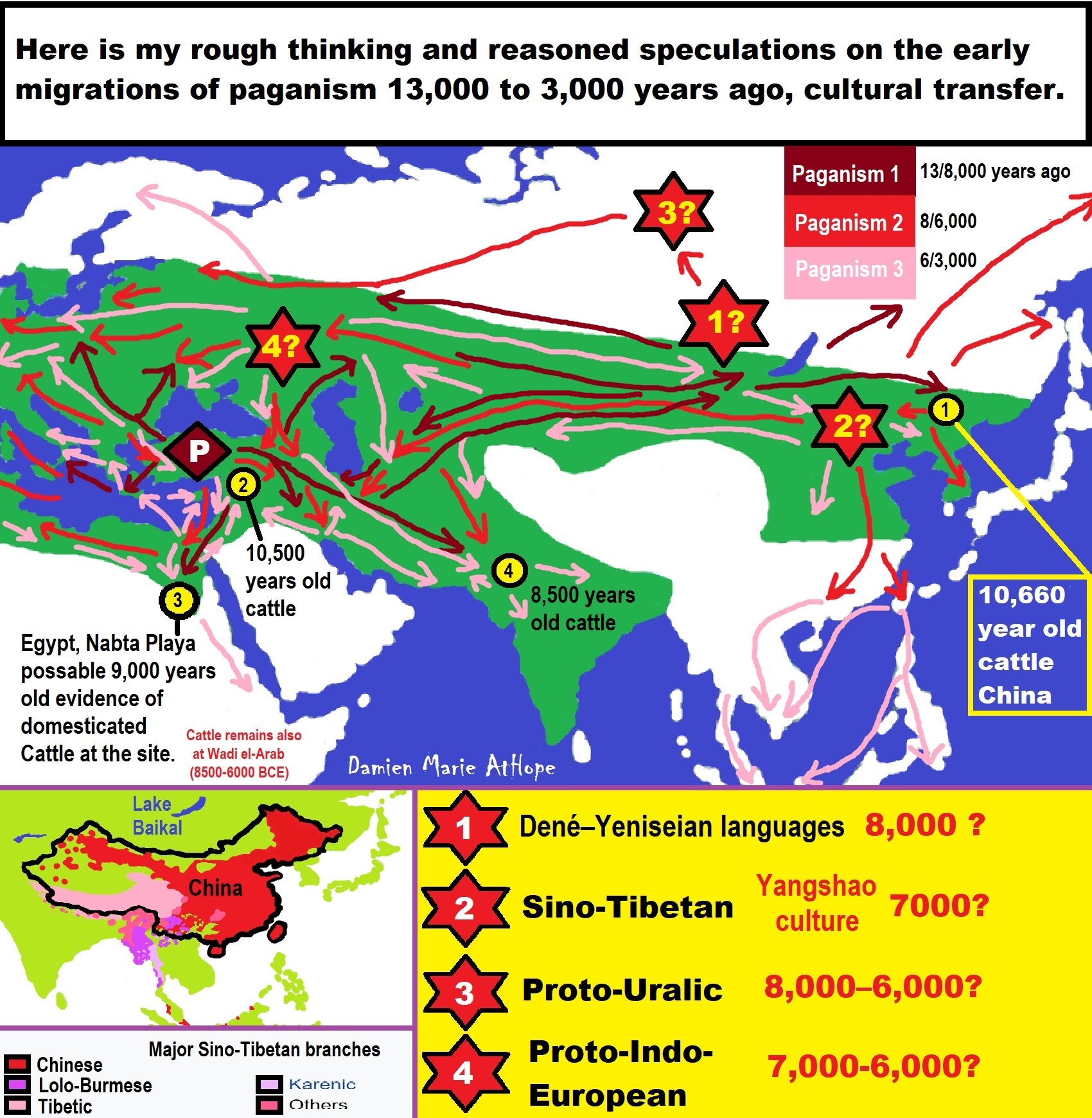
Paganism 12,000-4,000 years old
12,000-7,000 years old: related to (Pre-Capitalism)
7,000-5,000 years old: related to (Capitalism) (World War 0) Elite and their slaves!
5,000 years old: related to (Kings and the Rise of the State)
4,000 years old: related to (First Moralistic gods, then the Origin time of Monotheism)
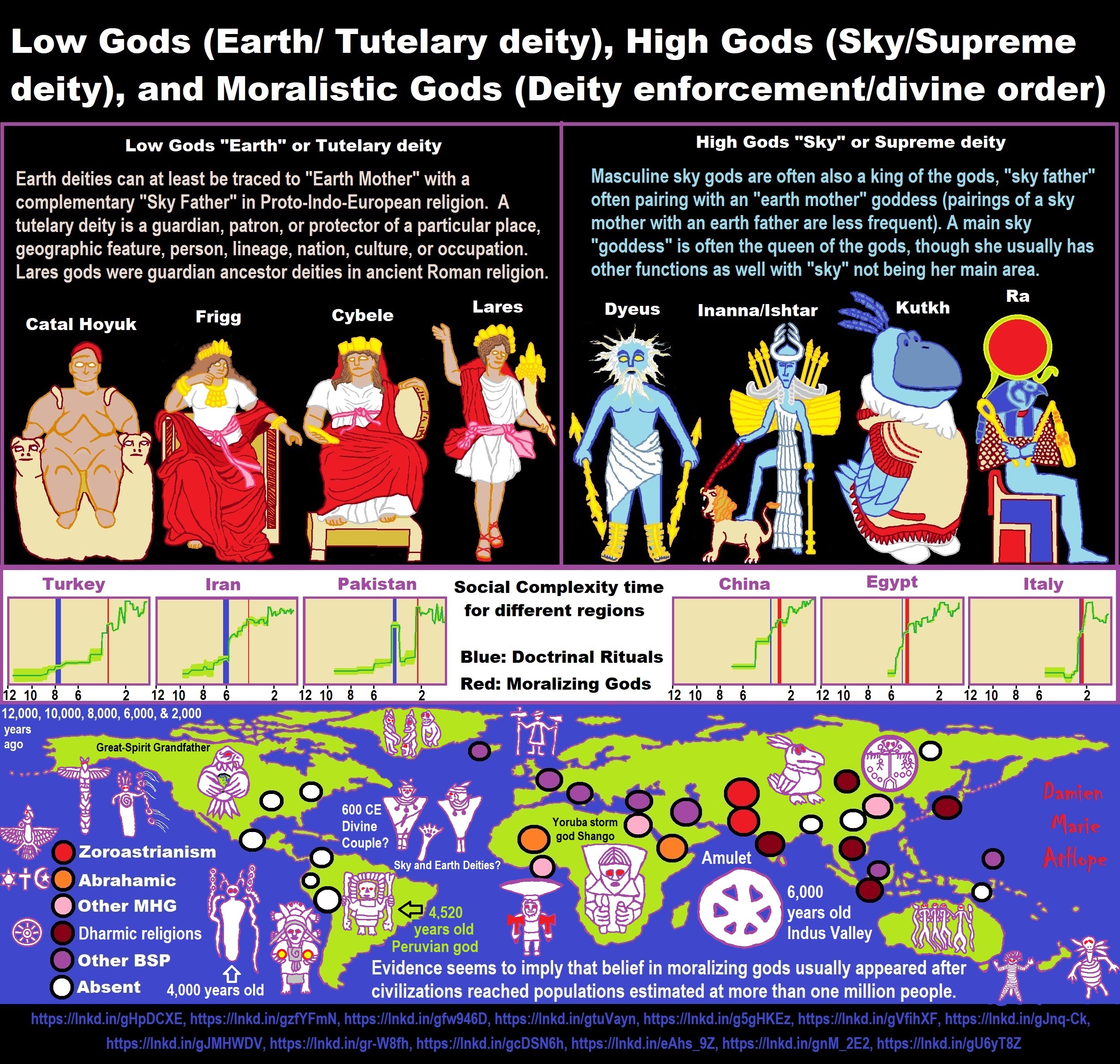
ref, ref, ref, ref, ref, ref, ref, ref, ref, ref, ref, ref, ref, ref, ref, ref, ref, ref, ref, ref, ref
Low Gods “Earth” or Tutelary deity and High Gods “Sky” or Supreme deity
“An Earth goddess is a deification of the Earth. Earth goddesses are often associated with the “chthonic” deities of the underworld. Ki and Ninhursag are Mesopotamian earth goddesses. In Greek mythology, the Earth is personified as Gaia, corresponding to Roman Terra, Indic Prithvi/Bhūmi, etc. traced to an “Earth Mother” complementary to the “Sky Father” in Proto-Indo-European religion. Egyptian mythology exceptionally has a sky goddess and an Earth god.” ref
“A mother goddess is a goddess who represents or is a personification of nature, motherhood, fertility, creation, destruction or who embodies the bounty of the Earth. When equated with the Earth or the natural world, such goddesses are sometimes referred to as Mother Earth or as the Earth Mother. In some religious traditions or movements, Heavenly Mother (also referred to as Mother in Heaven or Sky Mother) is the wife or feminine counterpart of the Sky father or God the Father.” ref
“Any masculine sky god is often also king of the gods, taking the position of patriarch within a pantheon. Such king gods are collectively categorized as “sky father” deities, with a polarity between sky and earth often being expressed by pairing a “sky father” god with an “earth mother” goddess (pairings of a sky mother with an earth father are less frequent). A main sky goddess is often the queen of the gods and may be an air/sky goddess in her own right, though she usually has other functions as well with “sky” not being her main. In antiquity, several sky goddesses in ancient Egypt, Mesopotamia, and the Near East were called Queen of Heaven. Neopagans often apply it with impunity to sky goddesses from other regions who were never associated with the term historically. The sky often has important religious significance. Many religions, both polytheistic and monotheistic, have deities associated with the sky.” ref
“In comparative mythology, sky father is a term for a recurring concept in polytheistic religions of a sky god who is addressed as a “father”, often the father of a pantheon and is often either a reigning or former King of the Gods. The concept of “sky father” may also be taken to include Sun gods with similar characteristics, such as Ra. The concept is complementary to an “earth mother“. “Sky Father” is a direct translation of the Vedic Dyaus Pita, etymologically descended from the same Proto-Indo-European deity name as the Greek Zeûs Pater and Roman Jupiter and Germanic Týr, Tir or Tiwaz, all of which are reflexes of the same Proto-Indo-European deity’s name, *Dyēus Ph₂tḗr. While there are numerous parallels adduced from outside of Indo-European mythology, there are exceptions (e.g. In Egyptian mythology, Nut is the sky mother and Geb is the earth father).” ref
Tutelary deity
“A tutelary (also tutelar) is a deity or spirit who is a guardian, patron, or protector of a particular place, geographic feature, person, lineage, nation, culture, or occupation. The etymology of “tutelary” expresses the concept of safety and thus of guardianship. In late Greek and Roman religion, one type of tutelary deity, the genius, functions as the personal deity or daimon of an individual from birth to death. Another form of personal tutelary spirit is the familiar spirit of European folklore.” ref
“A tutelary (also tutelar) in Korean shamanism, jangseung and sotdae were placed at the edge of villages to frighten off demons. They were also worshiped as deities. Seonangshin is the patron deity of the village in Korean tradition and was believed to embody the Seonangdang. In Philippine animism, Diwata or Lambana are deities or spirits that inhabit sacred places like mountains and mounds and serve as guardians. Such as: Maria Makiling is the deity who guards Mt. Makiling and Maria Cacao and Maria Sinukuan. In Shinto, the spirits, or kami, which give life to human bodies come from nature and return to it after death. Ancestors are therefore themselves tutelaries to be worshiped. And similarly, Native American beliefs such as Tonás, tutelary animal spirit among the Zapotec and Totems, familial or clan spirits among the Ojibwe, can be animals.” ref
“A tutelary (also tutelar) in Austronesian beliefs such as: Atua (gods and spirits of the Polynesian peoples such as the Māori or the Hawaiians), Hanitu (Bunun of Taiwan‘s term for spirit), Hyang (Kawi, Sundanese, Javanese, and Balinese Supreme Being, in ancient Java and Bali mythology and this spiritual entity, can be either divine or ancestral), Kaitiaki (New Zealand Māori term used for the concept of guardianship, for the sky, the sea, and the land), Kawas (mythology) (divided into 6 groups: gods, ancestors, souls of the living, spirits of living things, spirits of lifeless objects, and ghosts), Tiki (Māori mythology, Tiki is the first man created by either Tūmatauenga or Tāne and represents deified ancestors found in most Polynesian cultures). ” ref, ref, ref, ref, ref, ref, ref
Mesopotamian Tutelary Deities can be seen as ones related to City-States
“Historical city-states included Sumerian cities such as Uruk and Ur; Ancient Egyptian city-states, such as Thebes and Memphis; the Phoenician cities (such as Tyre and Sidon); the five Philistine city-states; the Berber city-states of the Garamantes; the city-states of ancient Greece (the poleis such as Athens, Sparta, Thebes, and Corinth); the Roman Republic (which grew from a city-state into a vast empire); the Italian city-states from the Middle Ages to the early modern period, such as Florence, Siena, Ferrara, Milan (which as they grew in power began to dominate neighboring cities) and Genoa and Venice, which became powerful thalassocracies; the Mayan and other cultures of pre-Columbian Mesoamerica (including cities such as Chichen Itza, Tikal, Copán and Monte Albán); the central Asian cities along the Silk Road; the city-states of the Swahili coast; Ragusa; states of the medieval Russian lands such as Novgorod and Pskov; and many others.” ref
“The Uruk period (ca. 4000 to 3100 BCE; also known as Protoliterate period) of Mesopotamia, named after the Sumerian city of Uruk, this period saw the emergence of urban life in Mesopotamia and the Sumerian civilization. City-States like Uruk and others had a patron tutelary City Deity along with a Priest-King.” ref
“Chinese folk religion, both past, and present, includes myriad tutelary deities. Exceptional individuals, highly cultivated sages, and prominent ancestors can be deified and honored after death. Lord Guan is the patron of military personnel and police, while Mazu is the patron of fishermen and sailors. Such as Tu Di Gong (Earth Deity) is the tutelary deity of a locality, and each individual locality has its own Earth Deity and Cheng Huang Gong (City God) is the guardian deity of an individual city, worshipped by local officials and locals since imperial times.” ref
“A tutelary (also tutelar) in Hinduism, personal tutelary deities are known as ishta-devata, while family tutelary deities are known as Kuladevata. Gramadevata are guardian deities of villages. Devas can also be seen as tutelary. Shiva is the patron of yogis and renunciants. City goddesses include: Mumbadevi (Mumbai), Sachchika (Osian); Kuladevis include: Ambika (Porwad), and Mahalakshmi. In NorthEast India Meitei mythology and religion (Sanamahism) of Manipur, there are various types of tutelary deities, among which Lam Lais are the most predominant ones. Tibetan Buddhism has Yidam as a tutelary deity. Dakini is the patron of those who seek knowledge.” ref
“A tutelary (also tutelar) The Greeks also thought deities guarded specific places: for instance, Athena was the patron goddess of the city of Athens. Socrates spoke of hearing the voice of his personal spirit or daimonion:
You have often heard me speak of an oracle or sign which comes to me … . This sign I have had ever since I was a child. The sign is a voice which comes to me and always forbids me to do something which I am going to do, but never commands me to do anything, and this is what stands in the way of my being a politician.” ref
“Tutelary deities who guard and preserve a place or a person are fundamental to ancient Roman religion. The tutelary deity of a man was his Genius, that of a woman her Juno. In the Imperial era, the Genius of the Emperor was a focus of Imperial cult. An emperor might also adopt a major deity as his personal patron or tutelary, as Augustus did Apollo. Precedents for claiming the personal protection of a deity were established in the Republican era, when for instance the Roman dictator Sulla advertised the goddess Victory as his tutelary by holding public games (ludi) in her honor.” ref
“Each town or city had one or more tutelary deities, whose protection was considered particularly vital in time of war and siege. Rome itself was protected by a goddess whose name was to be kept ritually secret on pain of death (for a supposed case, see Quintus Valerius Soranus). The Capitoline Triad of Juno, Jupiter, and Minerva were also tutelaries of Rome. The Italic towns had their own tutelary deities. Juno often had this function, as at the Latin town of Lanuvium and the Etruscan city of Veii, and was often housed in an especially grand temple on the arx (citadel) or other prominent or central location. The tutelary deity of Praeneste was Fortuna, whose oracle was renowned.” ref
“The Roman ritual of evocatio was premised on the belief that a town could be made vulnerable to military defeat if the power of its tutelary deity were diverted outside the city, perhaps by the offer of superior cult at Rome. The depiction of some goddesses such as the Magna Mater (Great Mother, or Cybele) as “tower-crowned” represents their capacity to preserve the city. A town in the provinces might adopt a deity from within the Roman religious sphere to serve as its guardian, or syncretize its own tutelary with such; for instance, a community within the civitas of the Remi in Gaul adopted Apollo as its tutelary, and at the capital of the Remi (present-day Rheims), the tutelary was Mars Camulus.” ref
Household deity (a kind of or related to a Tutelary deity)
“A household deity is a deity or spirit that protects the home, looking after the entire household or certain key members. It has been a common belief in paganism as well as in folklore across many parts of the world. Household deities fit into two types; firstly, a specific deity – typically a goddess – often referred to as a hearth goddess or domestic goddess who is associated with the home and hearth, such as the ancient Greek Hestia.” ref
“The second type of household deities are those that are not one singular deity, but a type, or species of animistic deity, who usually have lesser powers than major deities. This type was common in the religions of antiquity, such as the Lares of ancient Roman religion, the Gashin of Korean shamanism, and Cofgodas of Anglo-Saxon paganism. These survived Christianisation as fairy-like creatures existing in folklore, such as the Anglo-Scottish Brownie and Slavic Domovoy.” ref
“Household deities were usually worshipped not in temples but in the home, where they would be represented by small idols (such as the teraphim of the Bible, often translated as “household gods” in Genesis 31:19 for example), amulets, paintings, or reliefs. They could also be found on domestic objects, such as cosmetic articles in the case of Tawaret. The more prosperous houses might have a small shrine to the household god(s); the lararium served this purpose in the case of the Romans. The gods would be treated as members of the family and invited to join in meals, or be given offerings of food and drink.” ref
“In many religions, both ancient and modern, a god would preside over the home. Certain species, or types, of household deities, existed. An example of this was the Roman Lares. Many European cultures retained house spirits into the modern period. Some examples of these include:
- Brownie (Scotland and England) or Hob (England) / Kobold (Germany) / Goblin / Hobgoblin
- Domovoy (Slavic)
- Nisse (Norwegian or Danish) / Tomte (Swedish) / Tonttu (Finnish)
- Húsvættir (Norse)” ref
“Although the cosmic status of household deities was not as lofty as that of the Twelve Olympians or the Aesir, they were also jealous of their dignity and also had to be appeased with shrines and offerings, however humble. Because of their immediacy they had arguably more influence on the day-to-day affairs of men than the remote gods did. Vestiges of their worship persisted long after Christianity and other major religions extirpated nearly every trace of the major pagan pantheons. Elements of the practice can be seen even today, with Christian accretions, where statues to various saints (such as St. Francis) protect gardens and grottos. Even the gargoyles found on older churches, could be viewed as guardians partitioning a sacred space.” ref
“For centuries, Christianity fought a mop-up war against these lingering minor pagan deities, but they proved tenacious. For example, Martin Luther‘s Tischreden have numerous – quite serious – references to dealing with kobolds. Eventually, rationalism and the Industrial Revolution threatened to erase most of these minor deities, until the advent of romantic nationalism rehabilitated them and embellished them into objects of literary curiosity in the 19th century. Since the 20th century this literature has been mined for characters for role-playing games, video games, and other fantasy personae, not infrequently invested with invented traits and hierarchies somewhat different from their mythological and folkloric roots.” ref
“In contradistinction to both Herbert Spencer and Edward Burnett Tylor, who defended theories of animistic origins of ancestor worship, Émile Durkheim saw its origin in totemism. In reality, this distinction is somewhat academic, since totemism may be regarded as a particularized manifestation of animism, and something of a synthesis of the two positions was attempted by Sigmund Freud. In Freud’s Totem and Taboo, both totem and taboo are outward expressions or manifestations of the same psychological tendency, a concept which is complementary to, or which rather reconciles, the apparent conflict. Freud preferred to emphasize the psychoanalytic implications of the reification of metaphysical forces, but with particular emphasis on its familial nature. This emphasis underscores, rather than weakens, the ancestral component.” ref
“William Edward Hearn, a noted classicist, and jurist, traced the origin of domestic deities from the earliest stages as an expression of animism, a belief system thought to have existed also in the neolithic, and the forerunner of Indo-European religion. In his analysis of the Indo-European household, in Chapter II “The House Spirit”, Section 1, he states:
The belief which guided the conduct of our forefathers was … the spirit rule of dead ancestors.” ref
“In Section 2 he proceeds to elaborate:
It is thus certain that the worship of deceased ancestors is a vera causa, and not a mere hypothesis. …
In the other European nations, the Slavs, the Teutons, and the Kelts, the House Spirit appears with no less distinctness. … [T]he existence of that worship does not admit of doubt. … The House Spirits had a multitude of other names which it is needless here to enumerate, but all of which are more or less expressive of their friendly relations with man. … In [England] … [h]e is the Brownie. … In Scotland this same Brownie is well known. He is usually described as attached to particular families, with whom he has been known to reside for centuries, threshing the corn, cleaning the house, and performing similar household tasks. His favorite gratification was milk and honey.” ref
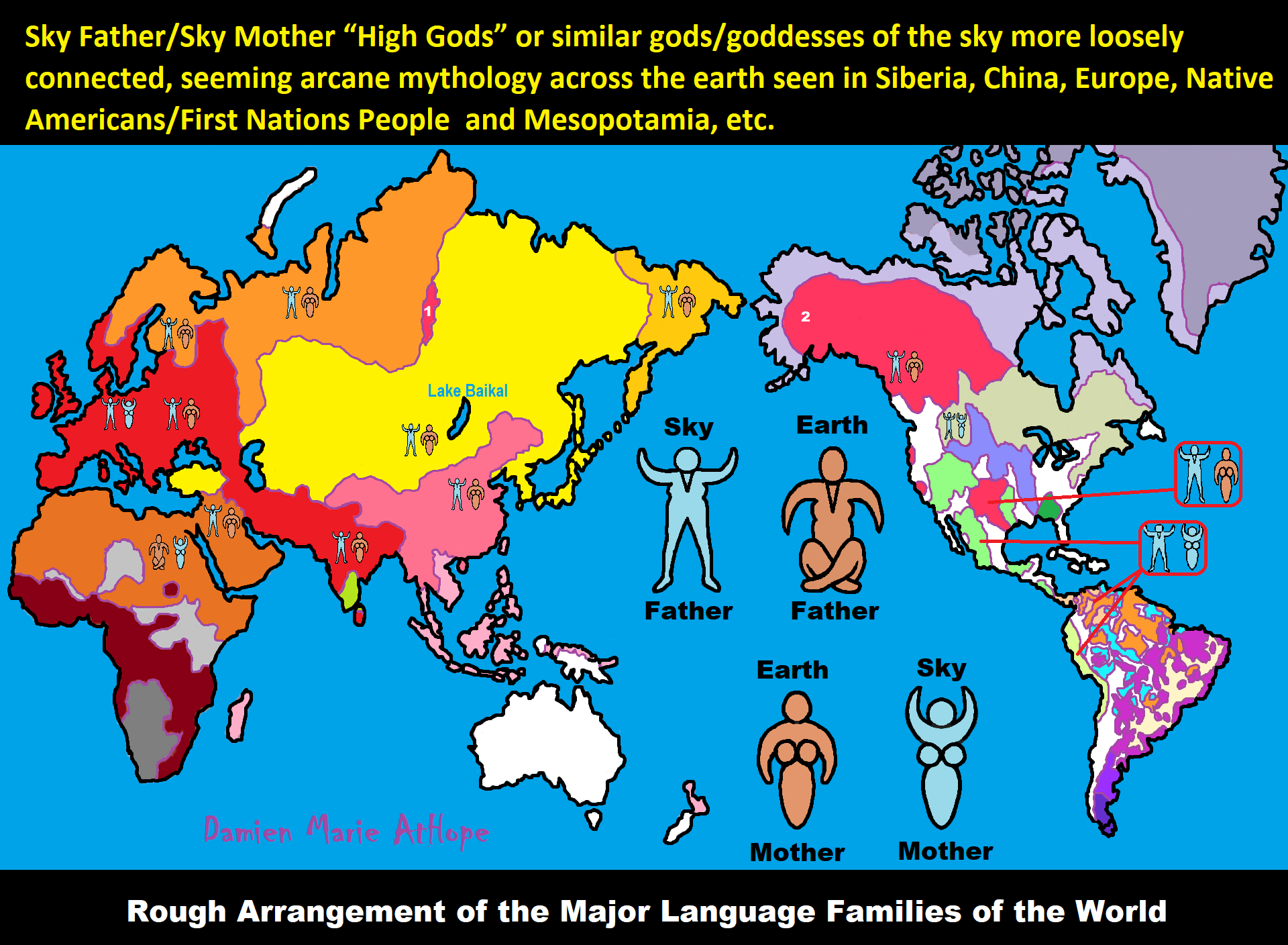
ref, ref, ref, ref, ref, ref, ref, ref, ref, ref, ref, ref, ref, ref, ref, ref, ref
“These ideas are my speculations from the evidence.”
I am still researching the “god‘s origins” all over the world. So you know, it is very complicated but I am smart and willing to look, DEEP, if necessary, which going very deep does seem to be needed here, when trying to actually understand the evolution of gods and goddesses. I am sure of a few things and less sure of others, but even in stuff I am not fully grasping I still am slowly figuring it out, to explain it to others. But as I research more I am understanding things a little better, though I am still working on understanding it all or something close and thus always figuring out more.
Sky Father/Sky God?
“Egyptian: (Nut) Sky Mother and (Geb) Earth Father” (Egypt is different but similar)
Turkic/Mongolic: (Tengri/Tenger Etseg) Sky Father and (Eje/Gazar Eej) Earth Mother *Transeurasian*
Hawaiian: (Wākea) Sky Father and (Papahānaumoku) Earth Mother *Austronesian*
New Zealand/ Māori: (Ranginui) Sky Father and (Papatūānuku) Earth Mother *Austronesian*
Proto-Indo-European: (Dyḗus/Dyḗus ph₂tḗr) Sky Father and (Dʰéǵʰōm/Pleth₂wih₁) Earth Mother
Indo-Aryan: (Dyaus Pita) Sky Father and (Prithvi Mata) Earth Mother *Indo-European*
Italic: (Jupiter) Sky Father and (Juno) Sky Mother *Indo-European*
Etruscan: (Tinia) Sky Father and (Uni) Sky Mother *Tyrsenian/Italy Pre–Indo-European*
Hellenic/Greek: (Zeus) Sky Father and (Hera) Sky Mother who started as an “Earth Goddess” *Indo-European*
Nordic: (Dagr) Sky Father and (Nótt) Sky Mother *Indo-European*
Slavic: (Perun) Sky Father and (Mokosh) Earth Mother *Indo-European*
Illyrian: (Deipaturos) Sky Father and (Messapic Damatura’s “earth-mother” maybe) Earth Mother *Indo-European*
Albanian: (Zojz) Sky Father and (?) *Indo-European*
Baltic: (Perkūnas) Sky Father and (Saulė) Sky Mother *Indo-European*
Germanic: (Týr) Sky Father and (?) *Indo-European*
Colombian-Muisca: (Bochica) Sky Father and (Huythaca) Sky Mother *Chibchan*
Aztec: (Quetzalcoatl) Sky Father and (Xochiquetzal) Sky Mother *Uto-Aztecan*
Incan: (Viracocha) Sky Father and (Mama Runtucaya) Sky Mother *Quechuan*
China: (Tian/Shangdi) Sky Father and (Dì) Earth Mother *Sino-Tibetan*
Sumerian, Assyrian and Babylonian: (An/Anu) Sky Father and (Ki) Earth Mother
Finnish: (Ukko) Sky Father and (Akka) Earth Mother *Finno-Ugric*
Sami: (Horagalles) Sky Father and (Ravdna) Earth Mother *Finno-Ugric*
Puebloan-Zuni: (Ápoyan Ta’chu) Sky Father and (Áwitelin Tsíta) Earth Mother
Puebloan-Hopi: (Tawa) Sky Father and (Kokyangwuti/Spider Woman/Grandmother) Earth Mother *Uto-Aztecan*
Puebloan-Navajo: (Tsohanoai) Sky Father and (Estsanatlehi) Earth Mother *Na-Dene*
ref, ref, ref, ref, ref, ref, ref, ref, ref, ref, ref, ref, ref, ref, ref, ref, ref, ref, ref, ref, ref, ref, ref, ref, ref, ref, ref
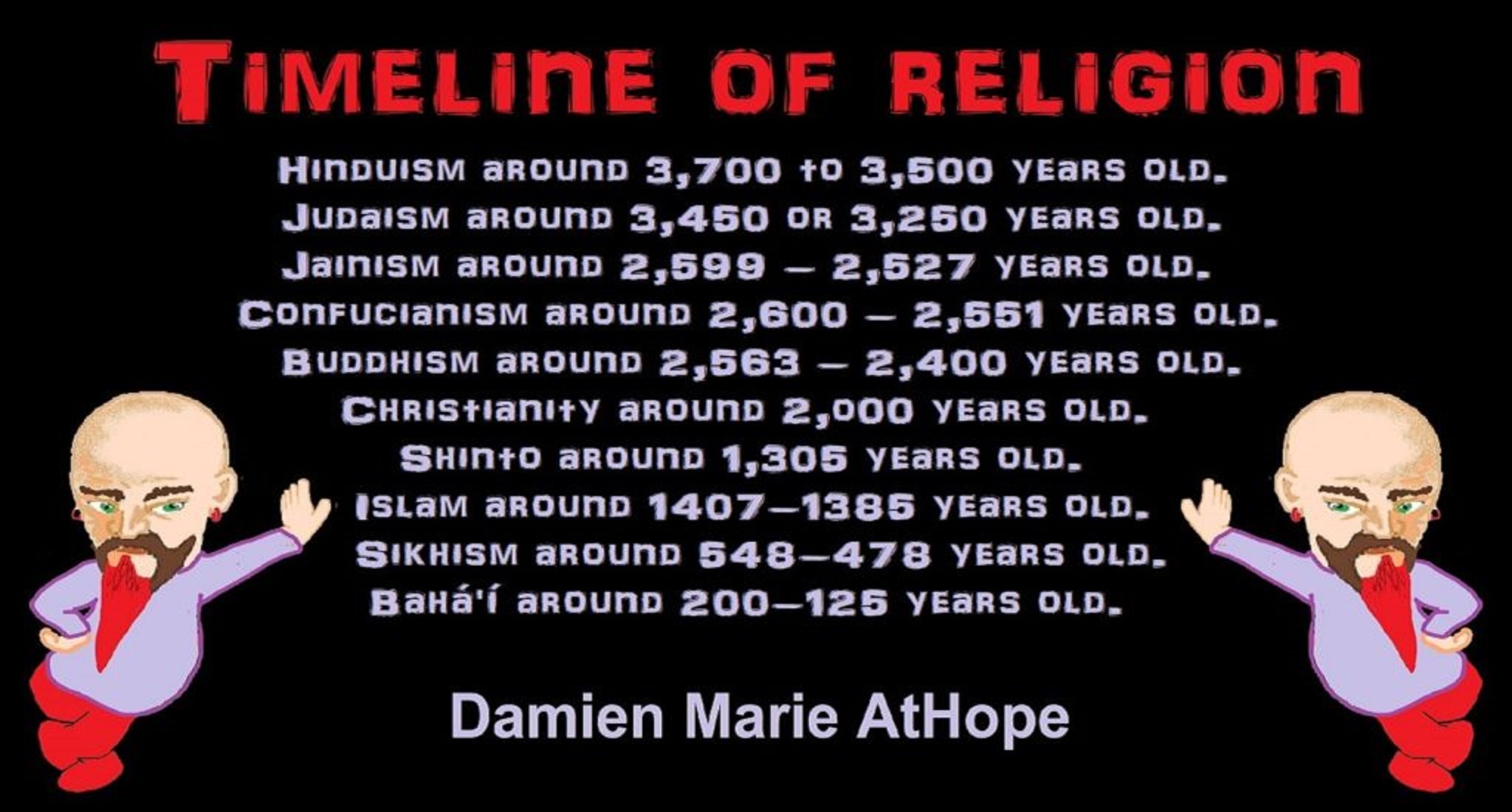
Hinduism around 3,700 to 3,500 years old. ref
Judaism around 3,450 or 3,250 years old. (The first writing in the bible was “Paleo-Hebrew” dated to around 3,000 years ago Khirbet Qeiyafa is the site of an ancient fortress city overlooking the Elah Valley. And many believe the religious Jewish texts were completed around 2,500) ref, ref
Judaism is around 3,450 or 3,250 years old. (“Paleo-Hebrew” 3,000 years ago and Torah 2,500 years ago)
“Judaism is an Abrahamic, its roots as an organized religion in the Middle East during the Bronze Age. Some scholars argue that modern Judaism evolved from Yahwism, the religion of ancient Israel and Judah, by the late 6th century BCE, and is thus considered to be one of the oldest monotheistic religions.” ref
“Yahwism is the name given by modern scholars to the religion of ancient Israel, essentially polytheistic, with a plethora of gods and goddesses. Heading the pantheon was Yahweh, the national god of the Israelite kingdoms of Israel and Judah, with his consort, the goddess Asherah; below them were second-tier gods and goddesses such as Baal, Shamash, Yarikh, Mot, and Astarte, all of whom had their own priests and prophets and numbered royalty among their devotees, and a third and fourth tier of minor divine beings, including the mal’ak, the messengers of the higher gods, who in later times became the angels of Judaism, Christianity and Islam. Yahweh, however, was not the ‘original’ god of Israel “Isra-El”; it is El, the head of the Canaanite pantheon, whose name forms the basis of the name “Israel”, and none of the Old Testament patriarchs, the tribes of Israel, the Judges, or the earliest monarchs, have a Yahwistic theophoric name (i.e., one incorporating the name of Yahweh).” ref
“El is a Northwest Semitic word meaning “god” or “deity“, or referring (as a proper name) to any one of multiple major ancient Near Eastern deities. A rarer form, ‘ila, represents the predicate form in Old Akkadian and in Amorite. The word is derived from the Proto-Semitic *ʔil-, meaning “god”. Specific deities known as ‘El or ‘Il include the supreme god of the ancient Canaanite religion and the supreme god of East Semitic speakers in Mesopotamia’s Early Dynastic Period. ʼĒl is listed at the head of many pantheons. In some Canaanite and Ugaritic sources, ʼĒl played a role as father of the gods, of creation, or both. For example, in the Ugaritic texts, ʾil mlk is understood to mean “ʼĒl the King” but ʾil hd as “the god Hadad“. The Semitic root ʾlh (Arabic ʾilāh, Aramaic ʾAlāh, ʾElāh, Hebrew ʾelōah) may be ʾl with a parasitic h, and ʾl may be an abbreviated form of ʾlh. In Ugaritic the plural form meaning “gods” is ʾilhm, equivalent to Hebrew ʾelōhîm “powers”. In the Hebrew texts this word is interpreted as being semantically singular for “god” by biblical commentators. However the documentary hypothesis for the Old Testament (corresponds to the Jewish Torah) developed originally in the 1870s, identifies these that different authors – the Jahwist, Elohist, Deuteronomist, and the Priestly source – were responsible for editing stories from a polytheistic religion into those of a monotheistic religion. Inconsistencies that arise between monotheism and polytheism in the texts are reflective of this hypothesis.” ref
Jainism around 2,599 – 2,527 years old. ref
Confucianism around 2,600 – 2,551 years old. ref
Buddhism around 2,563/2,480 – 2,483/2,400 years old. ref
Christianity around 2,o00 years old. ref
Shinto around 1,305 years old. ref
Islam around 1407–1385 years old. ref

Knowledge to Ponder:
Stars/Astrology:
- Possibly, around 30,000 years ago (in simpler form) to 6,000 years ago, Stars/Astrology are connected to Ancestors, Spirit Animals, and Deities.
- The star also seems to be a possible proto-star for Star of Ishtar, Star of Inanna, or Star of Venus.
- Around 7,000 to 6,000 years ago, Star Constellations/Astrology have connections to the “Kurgan phenomenon” of below-ground “mound” stone/wood burial structures and “Dolmen phenomenon” of above-ground stone burial structures.
- Around 6,500–5,800 years ago, The Northern Levant migrations into Jordon and Israel in the Southern Levant brought new cultural and religious transfer from Turkey and Iran.
- “The Ghassulian Star,” a mysterious 6,000-year-old mural from Jordan may have connections to the European paganstic kurgan/dolmens phenomenon.
“Astrology is a range of divinatory practices, recognized as pseudoscientific since the 18th century, that claim to discern information about human affairs and terrestrial events by studying the apparent positions of celestial objects. Different cultures have employed forms of astrology since at least the 2nd millennium BCE, these practices having originated in calendrical systems used to predict seasonal shifts and to interpret celestial cycles as signs of divine communications. Most, if not all, cultures have attached importance to what they observed in the sky, and some—such as the Hindus, Chinese, and the Maya—developed elaborate systems for predicting terrestrial events from celestial observations. Western astrology, one of the oldest astrological systems still in use, can trace its roots to 19th–17th century BCE Mesopotamia, from where it spread to Ancient Greece, Rome, the Islamicate world and eventually Central and Western Europe. Contemporary Western astrology is often associated with systems of horoscopes that purport to explain aspects of a person’s personality and predict significant events in their lives based on the positions of celestial objects; the majority of professional astrologers rely on such systems.” ref
Around 5,500 years ago, Science evolves, The first evidence of science was 5,500 years ago and was demonstrated by a body of empirical, theoretical, and practical knowledge about the natural world. ref
Around 5,000 years ago, Origin of Logics is a Naturalistic Observation (principles of valid reasoning, inference, & demonstration) ref
Around 4,150 to 4,000 years ago: The earliest surviving versions of the Sumerian Epic of Gilgamesh, which was originally titled “He who Saw the Deep” (Sha naqba īmuru) or “Surpassing All Other Kings” (Shūtur eli sharrī) were written. ref
Hinduism:
- 3,700 years ago or so, the oldest of the Hindu Vedas (scriptures), the Rig Veda was composed.
- 3,500 years ago or so, the Vedic Age began in India after the collapse of the Indus Valley Civilization.
Judaism:
- around 3,000 years ago, the first writing in the bible was “Paleo-Hebrew”
- around 2,500 years ago, many believe the religious Jewish texts were completed
Myths: The bible inspired religion is not just one religion or one myth but a grouping of several religions and myths
- Around 3,450 or 3,250 years ago, according to legend, is the traditionally accepted period in which the Israelite lawgiver, Moses, provided the Ten Commandments.
- Around 2,500 to 2,400 years ago, a collection of ancient religious writings by the Israelites based primarily upon the Hebrew Bible, Tanakh, or Old Testament is the first part of Christianity’s bible.
- Around 2,400 years ago, the most accepted hypothesis is that the canon was formed in stages, first the Pentateuch (Torah).
- Around 2,140 to 2,116 years ago, the Prophets was written during the Hasmonean dynasty, and finally the remaining books.
- Christians traditionally divide the Old Testament into four sections:
- The first five books or Pentateuch (Torah).
- The proposed history books telling the history of the Israelites from their conquest of Canaan to their defeat and exile in Babylon.
- The poetic and proposed “Wisdom books” dealing, in various forms, with questions of good and evil in the world.
- The books of the biblical prophets, warning of the consequences of turning away from God:
- Henotheism:
- Exodus 20:23 “You shall not make other gods besides Me (not saying there are no other gods just not to worship them); gods of silver or gods of gold, you shall not make for yourselves.”
- Polytheism:
- Judges 10:6 “Then the sons of Israel again did evil in the sight of the LORD, served the Baals and the Ashtaroth, the gods of Aram, the gods of Sidon, the gods of Moab, the gods of the sons of Ammon, and the gods of the Philistines; thus they forsook the LORD and did not serve Him.”
- 1 Corinthians 8:5 “For even if there are so-called gods whether in heaven or on earth, as indeed there are many gods and many lords.”
- Monotheism:
- Isaiah 43:10 “You are my witnesses,” declares the LORD, “and my servant whom I have chosen, so that you may know and believe me and understand that I am he. Before me no god was formed, nor will there be one after me.
Around 2,570 to 2,270 Years Ago, there is a confirmation of atheistic doubting as well as atheistic thinking, mainly by Greek philosophers. However, doubting gods is likely as old as the invention of gods and should destroy the thinking that belief in god(s) is the “default belief”. The Greek word is apistos (a “not” and pistos “faithful,”), thus not faithful or faithless because one is unpersuaded and unconvinced by a god(s) claim. Short Definition: unbelieving, unbeliever, or unbelief.
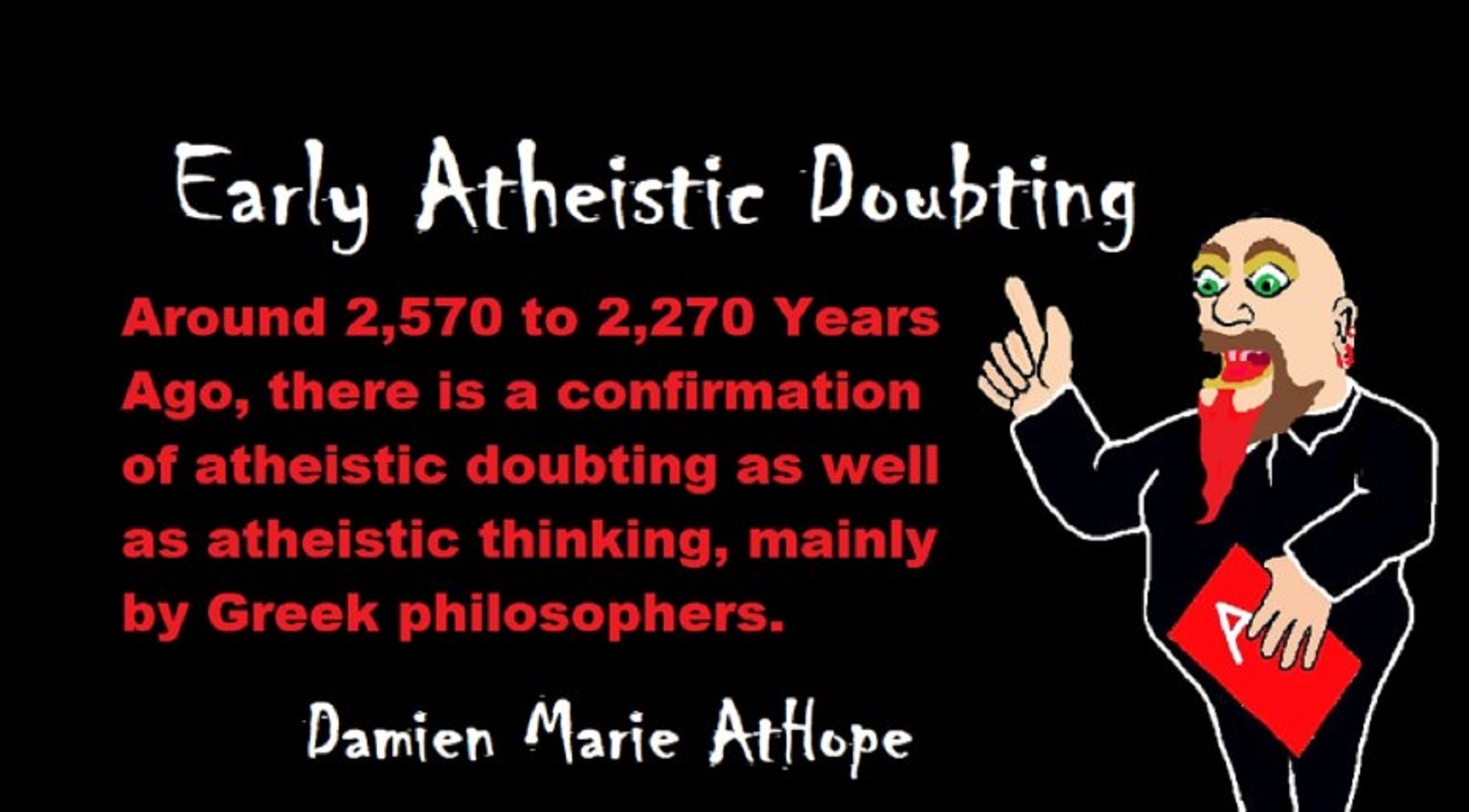
Expressions of Atheistic Thinking:
- Around 2,600 years ago, Ajita Kesakambali, ancient Indian philosopher, who is the first known proponent of Indian materialism. ref
- Around 2,535 to 2,475 years ago, Heraclitus, Greek pre-Socratic philosopher, a native of the Greek city Ephesus, Ionia, on the coast of Anatolia, also known as Asia Minor or modern Turkey. ref
- Around 2,500 to 2,400 years ago, according to The Story of Civilization book series certain African pygmy tribes have no identifiable gods, spirits, or religious beliefs or rituals, and even what burials accrue are without ceremony. ref
- Around 2,490 to 2,430 years ago, Empedocles, Greek pre-Socratic philosopher and a citizen of Agrigentum, a Greek city in Sicily. ref
- Around 2,460 to 2,370 years ago, Democritus, Greek pre-Socratic philosopher considered to be the “father of modern science” possibly had some disbelief amounting to atheism. ref
- Around 2,399 years ago or so, Socrates, a famous Greek philosopher was tried for sinfulness by teaching doubt of state gods. ref
- Around 2,341 to 2,270 years ago, Epicurus, a Greek philosopher known for composing atheistic critics and famously stated, “Is God willing to prevent evil, but not able? Then he is not omnipotent. Is he able, but not willing? Then he is malevolent. Is he both able and willing? Then whence cometh evil? Is he neither able nor willing? Then why call him god?” ref
This last expression by Epicurus, seems to be an expression of Axiological Atheism. To understand and utilize value or actually possess “Value Conscious/Consciousness” to both give a strong moral “axiological” argument (the problem of evil) as well as use it to fortify humanism and positive ethical persuasion of human helping and care responsibilities. Because value-blindness gives rise to sociopathic/psychopathic evil.
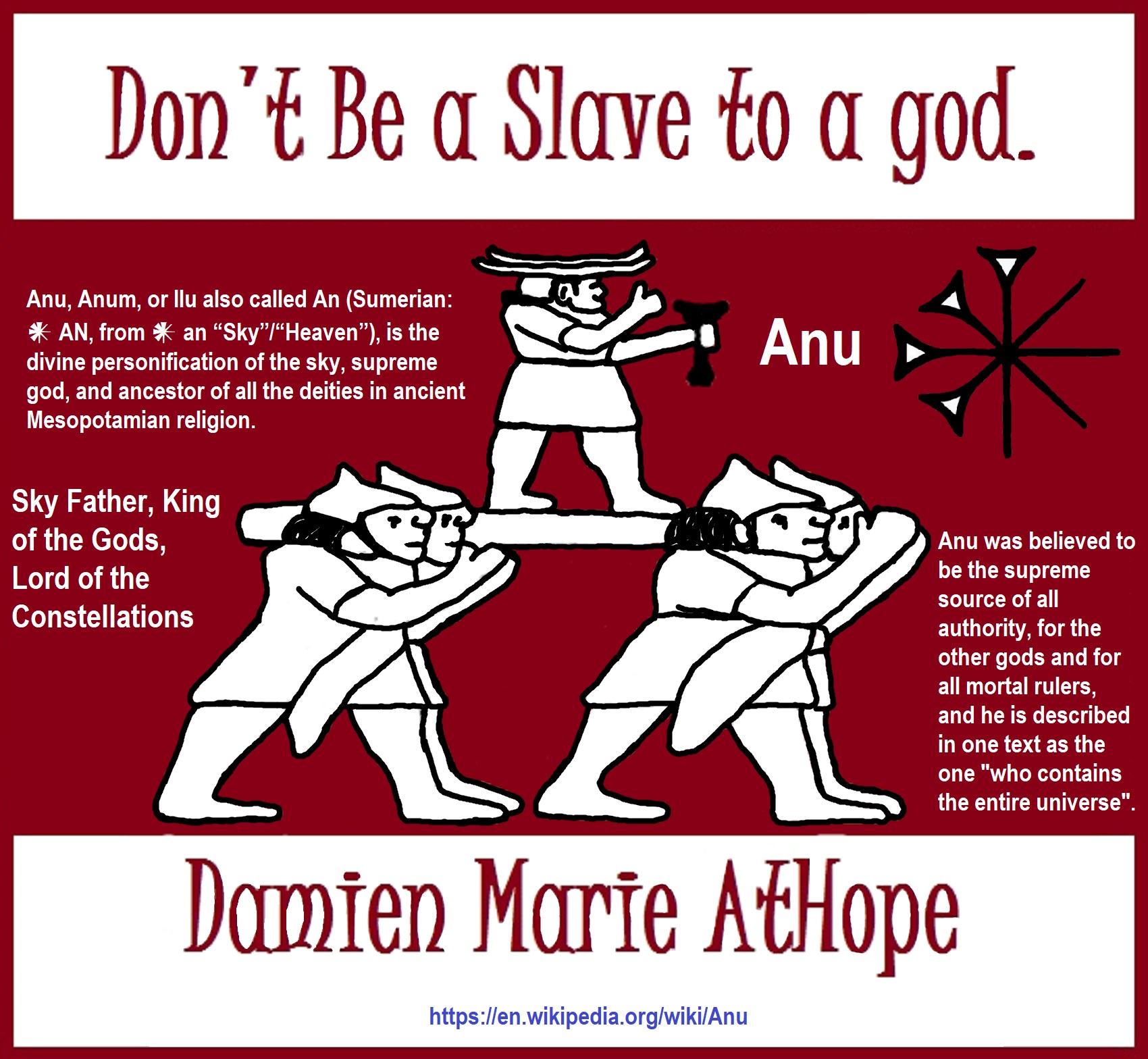
“Theists, there has to be a god, as something can not come from nothing.”
Well, thus something (unknown) happened and then there was something. This does not tell us what the something that may have been involved with something coming from nothing. A supposed first cause, thus something (unknown) happened and then there was something is not an open invitation to claim it as known, neither is it justified to call or label such an unknown as anything, especially an unsubstantiated magical thinking belief born of mythology and religious storytelling.
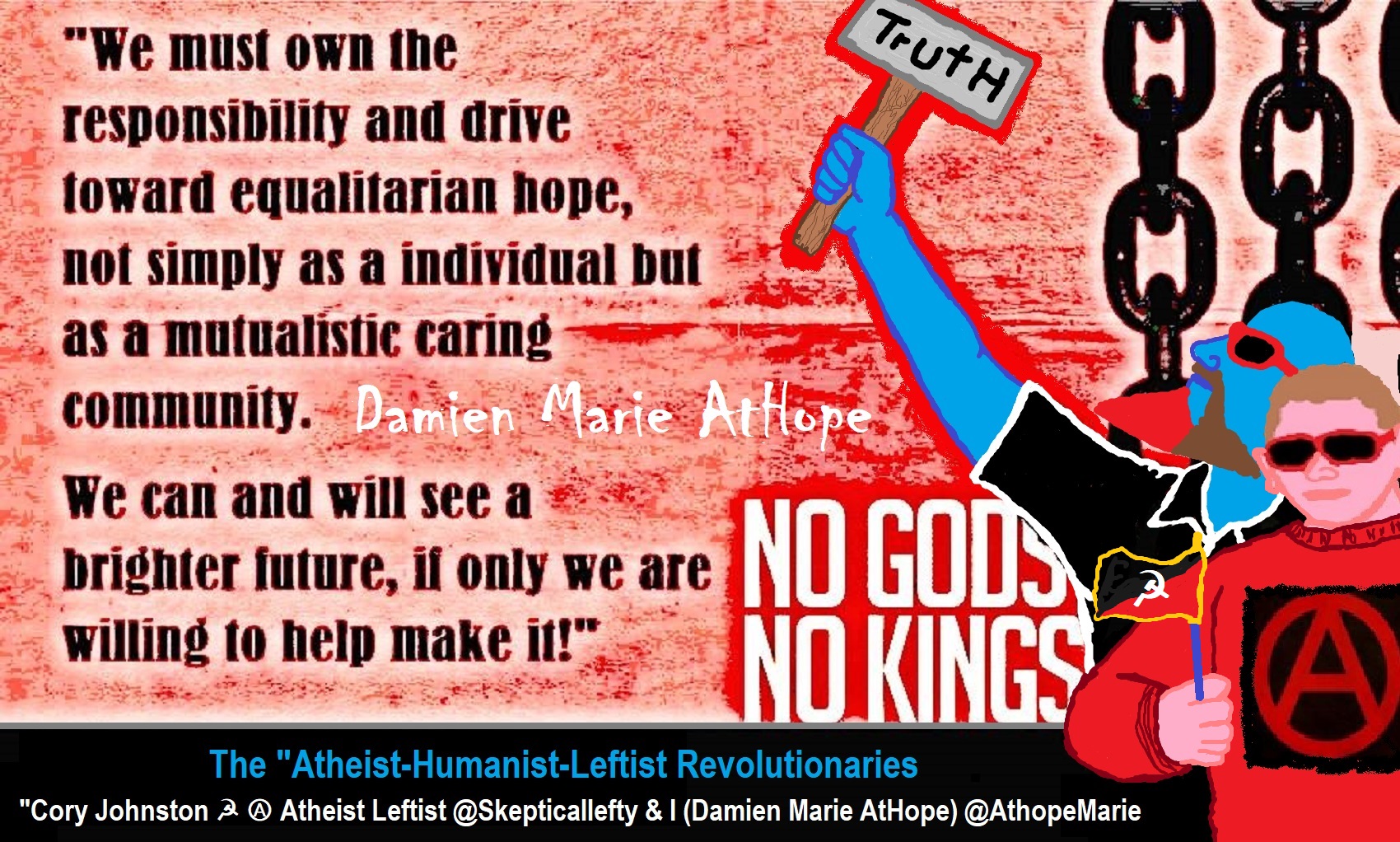
While hallucinogens are associated with shamanism, it is alcohol that is associated with paganism.
The Atheist-Humanist-Leftist Revolutionaries Shows in the prehistory series:
Show two: Pre-animism 300,000 years old and animism 100,000 years old: related to “Anarchism and Socialism”
Show tree: Totemism 50,000 years old: related to “Anarchism and Socialism”
Show four: Shamanism 30,000 years old: related to “Anarchism and Socialism”
Show five: Paganism 12,000 years old: related to “Anarchism and Socialism”
Show six: Emergence of hierarchy, sexism, slavery, and the new male god dominance: Paganism 7,000-5,000 years old: related to “Anarchism and Socialism” (Capitalism) (World War 0) Elite and their slaves!
Prehistory: related to “Anarchism and Socialism” the division of labor, power, rights, and recourses: VIDEO
Pre-animism 300,000 years old and animism 100,000 years old: related to “Anarchism and Socialism”: VIDEO
Totemism 50,000 years old: related to “Anarchism and Socialism”: VIDEO
Shamanism 30,000 years old: related to “Anarchism and Socialism”: VIDEO
Paganism 12,000 years old: related to “Anarchism and Socialism” (Pre-Capitalism): VIDEO
Paganism 7,000-5,000 years old: related to “Anarchism and Socialism” (Capitalism) (World War 0) Elite and their slaves: VIEDO
Paganism 5,000 years old: progressed organized religion and the state: related to “Anarchism and Socialism” (Kings and the Rise of the State): VIEDO
Paganism 4,000 years old: related to “Anarchism and Socialism” (First Moralistic gods, then the Origin time of Monotheism): VIEDO
I do not hate simply because I challenge and expose myths or lies any more than others being thought of as loving simply because of the protection and hiding from challenge their favored myths or lies.
The truth is best championed in the sunlight of challenge.
An archaeologist once said to me “Damien religion and culture are very different”
My response, So are you saying that was always that way, such as would you say Native Americans’ cultures are separate from their religions? And do you think it always was the way you believe?
I had said that religion was a cultural product. That is still how I see it and there are other archaeologists that think close to me as well. Gods too are the myths of cultures that did not understand science or the world around them, seeing magic/supernatural everywhere.
I personally think there is a goddess and not enough evidence to support a male god at Çatalhöyük but if there was both a male and female god and goddess then I know the kind of gods they were like Proto-Indo-European mythology.
This series idea was addressed in, Anarchist Teaching as Free Public Education or Free Education in the Public: VIDEO
Our 12 video series: Organized Oppression: Mesopotamian State Force and the Politics of power (9,000-4,000 years ago), is adapted from: The Complete and Concise History of the Sumerians and Early Bronze Age Mesopotamia (7000-2000 BC): https://www.youtube.com/watch?v=szFjxmY7jQA by “History with Cy“
Show #1: Mesopotamian State Force and the Politics of Power (Samarra, Halaf, Ubaid)
Show #2: Mesopotamian State Force and the Politics of Power (Eridu “Tell Abu Shahrain”)
Show #3: Mesopotamian State Force and the Politics of Power (Uruk and the First Cities)
Show #4: Mesopotamian State Force and the Politics of Power (First Kings)
Show #5: Mesopotamian State Force and the Politics of Power (Early Dynastic Period)
Show #6: Mesopotamian State Force and the Politics of Power (King/Ruler Lugalzagesi)
Show #7: Mesopotamian State Force and the Politics of Power (Sargon and Akkadian Rule)
Show #9: Mesopotamian State Force and the Politics of Power (Gudea of Lagash and Utu-hegal)
Show #12: Mesopotamian State Force and the Politics of Power (Aftermath and Legacy of Sumer)
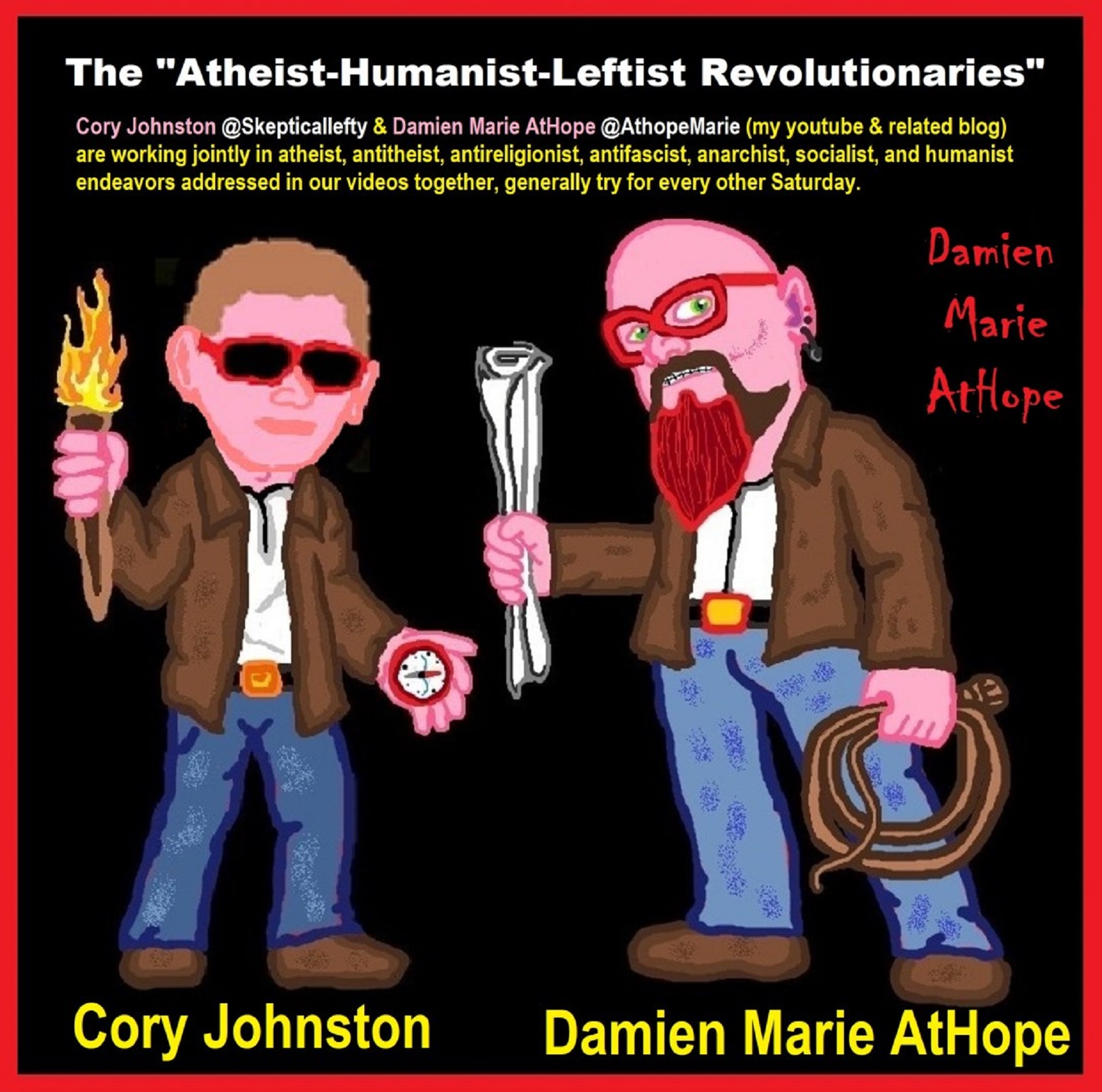
The “Atheist-Humanist-Leftist Revolutionaries”
Cory Johnston ☭ Ⓐ Atheist Leftist @Skepticallefty & I (Damien Marie AtHope) @AthopeMarie (my YouTube & related blog) are working jointly in atheist, antitheist, antireligionist, antifascist, anarchist, socialist, and humanist endeavors in our videos together, generally, every other Saturday.
Why Does Power Bring Responsibility?
Think, how often is it the powerless that start wars, oppress others, or commit genocide? So, I guess the question is to us all, to ask, how can power not carry responsibility in a humanity concept? I know I see the deep ethical responsibility that if there is power their must be a humanistic responsibility of ethical and empathic stewardship of that power. Will I be brave enough to be kind? Will I possess enough courage to be compassionate? Will my valor reach its height of empathy? I as everyone, earns our justified respect by our actions, that are good, ethical, just, protecting, and kind. Do I have enough self-respect to put my love for humanity’s flushing, over being brought down by some of its bad actors? May we all be the ones doing good actions in the world, to help human flourishing.
I create the world I want to live in, striving for flourishing. Which is not a place but a positive potential involvement and promotion; a life of humanist goal precision. To master oneself, also means mastering positive prosocial behaviors needed for human flourishing. I may have lost a god myth as an atheist, but I am happy to tell you, my friend, it is exactly because of that, leaving the mental terrorizer, god belief, that I truly regained my connected ethical as well as kind humanity.
Cory and I will talk about prehistory and theism, addressing the relevance to atheism, anarchism, and socialism.
At the same time as the rise of the male god, 7,000 years ago, there was also the very time there was the rise of violence, war, and clans to kingdoms, then empires, then states. It is all connected back to 7,000 years ago, and it moved across the world.
Cory Johnston: https://damienmarieathope.com/2021/04/cory-johnston-mind-of-a-skeptical-leftist/?v=32aec8db952d
The Mind of a Skeptical Leftist (YouTube)
Cory Johnston: Mind of a Skeptical Leftist @Skepticallefty
The Mind of a Skeptical Leftist By Cory Johnston: “Promoting critical thinking, social justice, and left-wing politics by covering current events and talking to a variety of people. Cory Johnston has been thoughtfully talking to people and attempting to promote critical thinking, social justice, and left-wing politics.” http://anchor.fm/skepticalleft
Cory needs our support. We rise by helping each other.
Cory Johnston ☭ Ⓐ @Skepticallefty Evidence-based atheist leftist (he/him) Producer, host, and co-host of 4 podcasts @skeptarchy @skpoliticspod and @AthopeMarie
Damien Marie AtHope (“At Hope”) Axiological Atheist, Anti-theist, Anti-religionist, Secular Humanist. Rationalist, Writer, Artist, Poet, Philosopher, Advocate, Activist, Psychology, and Armchair Archaeology/Anthropology/Historian.
Damien is interested in: Freedom, Liberty, Justice, Equality, Ethics, Humanism, Science, Atheism, Antiteism, Antireligionism, Ignosticism, Left-Libertarianism, Anarchism, Socialism, Mutualism, Axiology, Metaphysics, LGBTQI, Philosophy, Advocacy, Activism, Mental Health, Psychology, Archaeology, Social Work, Sexual Rights, Marriage Rights, Woman’s Rights, Gender Rights, Child Rights, Secular Rights, Race Equality, Ageism/Disability Equality, Etc. And a far-leftist, “Anarcho-Humanist.”
I am not a good fit in the atheist movement that is mostly pro-capitalist, I am anti-capitalist. Mostly pro-skeptic, I am a rationalist not valuing skepticism. Mostly pro-agnostic, I am anti-agnostic. Mostly limited to anti-Abrahamic religions, I am an anti-religionist.
To me, the “male god” seems to have either emerged or become prominent around 7,000 years ago, whereas the now favored monotheism “male god” is more like 4,000 years ago or so. To me, the “female goddess” seems to have either emerged or become prominent around 11,000-10,000 years ago or so, losing the majority of its once prominence around 2,000 years ago due largely to the now favored monotheism “male god” that grow in prominence after 4,000 years ago or so.
My Thought on the Evolution of Gods?
Animal protector deities from old totems/spirit animal beliefs come first to me, 13,000/12,000 years ago, then women as deities 11,000/10,000 years ago, then male gods around 7,000/8,000 years ago. Moralistic gods around 5,000/4,000 years ago, and monotheistic gods around 4,000/3,000 years ago.
To me, animal gods were likely first related to totemism animals around 13,000 to 12,000 years ago or older. Female as goddesses was next to me, 11,000 to 10,000 years ago or so with the emergence of agriculture. Then male gods come about 8,000 to 7,000 years ago with clan wars. Many monotheism-themed religions started in henotheism, emerging out of polytheism/paganism.

Damien Marie AtHope (Said as “At” “Hope”)/(Autodidact Polymath but not good at math):
Axiological Atheist, Anti-theist, Anti-religionist, Secular Humanist, Rationalist, Writer, Artist, Jeweler, Poet, “autodidact” Philosopher, schooled in Psychology, and “autodidact” Armchair Archaeology/Anthropology/Pre-Historian (Knowledgeable in the range of: 1 million to 5,000/4,000 years ago). I am an anarchist socialist politically. Reasons for or Types of Atheism
My Website, My Blog, & Short-writing or Quotes, My YouTube, Twitter: @AthopeMarie, and My Email: damien.marie.athope@gmail.com

